

Travel Ireland on a Budget: 9 Tricks From a Local
By Author Keith O'Hara
Posted on Last updated: August 6, 2024

As the years go by, it’s becoming increasingly difficult to travel Ireland on a budget.
In recent years, the cost of living in Ireland has skyrocketed, and this has affected tourists and locals alike (for example, the cost of a 5-day budget trip comes in at €1,261/$1,340 per person).
However, it’s not all doom-and-gloom – how much your Irish Road Trip costs can be directly within your control, once you consider the points in this guide.
Below, you’ll discover how to travel cheap in Ireland, even with the cost of flights and accommodation at a premium!
The foundations of planning a trip to Ireland on a budget

If you only take one thing from this guide, let it be this section, as it’ll set you up for success if you’re looking to travel Ireland on a budget.
Your avoidable and unavoidable costs and how you work with them (not against them) is key:
1. You need to learn how to lower your unavoidable costs
You’ll have avoidable and unavoidable costs when travelling to Ireland.
It’s possible to dramatically reduce your unavoidable costs, like your flights, accommodation and how you get around, by planning ahead (info below).
2. And you need to be clear about your avoidable costs
The likes of souvenirs, pints, breakfast (it’ll be included in your accommodation if you plan properly!) and certain paid tours/attractions are all avoidable costs.
Being clear on what isn’t an absolutely necessity is key if you’re looking to travel to Ireland on a budget.
9 tips for a cheap trip to Ireland
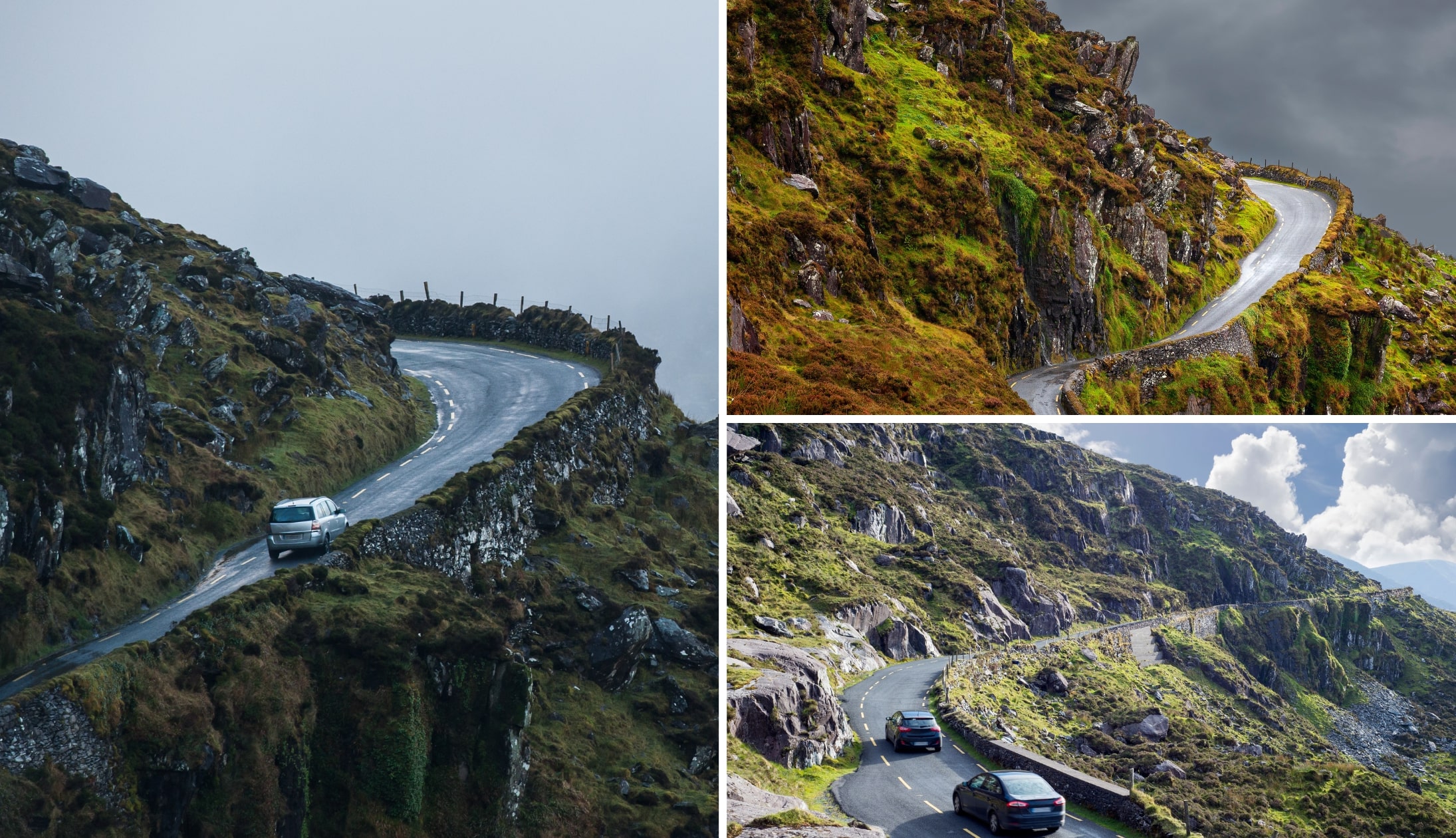
Photos via Shutterstock
The cost of a trip to Ireland can turn eye-watering if you don’t dedicate time to planning your trip in advance.
If you’re looking for the cheapest way to travel Ireland, I have been giving the tips below to budget-conscious travellers for the last 6 years.
Tip 1: Visit during the cheapest time to travel to Ireland

Click to enlarge
Arguably the most important factor when looking to visit Ireland on a budget is to only visit when the price of flights and accommodation are at their lowest point.
If you read my guide to the best time to visit Ireland , you’ll see that some months (the peak season) are far more expensive than others.
The cheapest time of year to visit is during the shoulder season or during the off-season (outside of NYE and Christmas).
The one trade-off is the the weather in Ireland can be worse during these months.
Cost comparison: Return flights from the US in early March cost from €415/$440 vs €585/$621 in June – that’s a saving of €170/$172!
Tip 2: Set alerts for flight prices
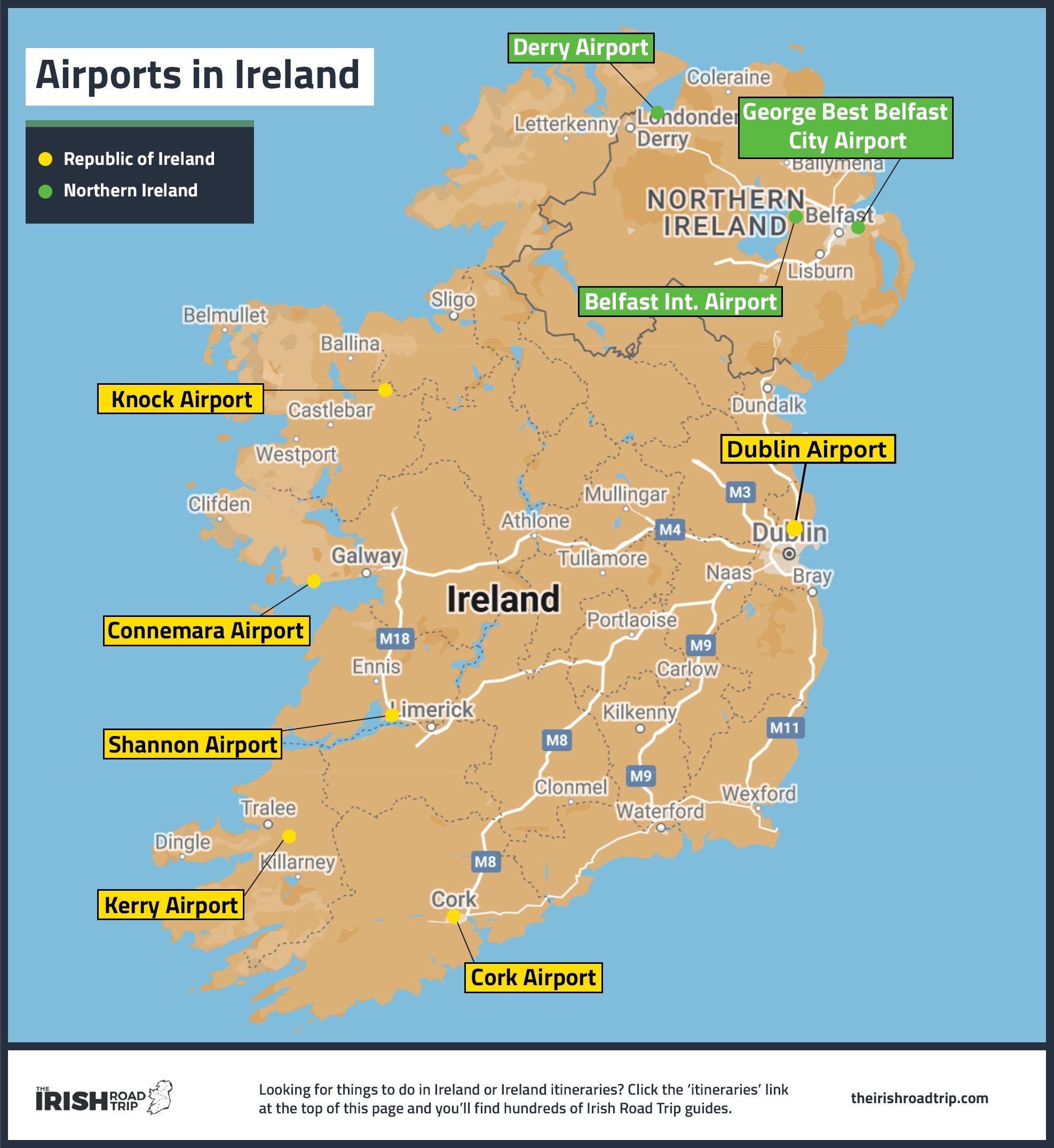
OK, so you’ve decided that you’re visiting during the off-season. The next step in visiting Ireland on a budget is to set alerts for the flight prices.
Now, if you check them and see that they are within your budget, book them asap – there’s no need to wait.
However, if they’re outside of your budget, it’s always worth setting up a price alert with the likes of Skyscanner.
More often than not you’ll find they’ll go up and down.
WARNING: Plan your Ireland itinerary before you book flights . There are several airports in Ireland so it’s worth knowing which airport will make the most convenient start-point for your road trip!
Tip 3: Weigh up the different ways of getting around Ireland
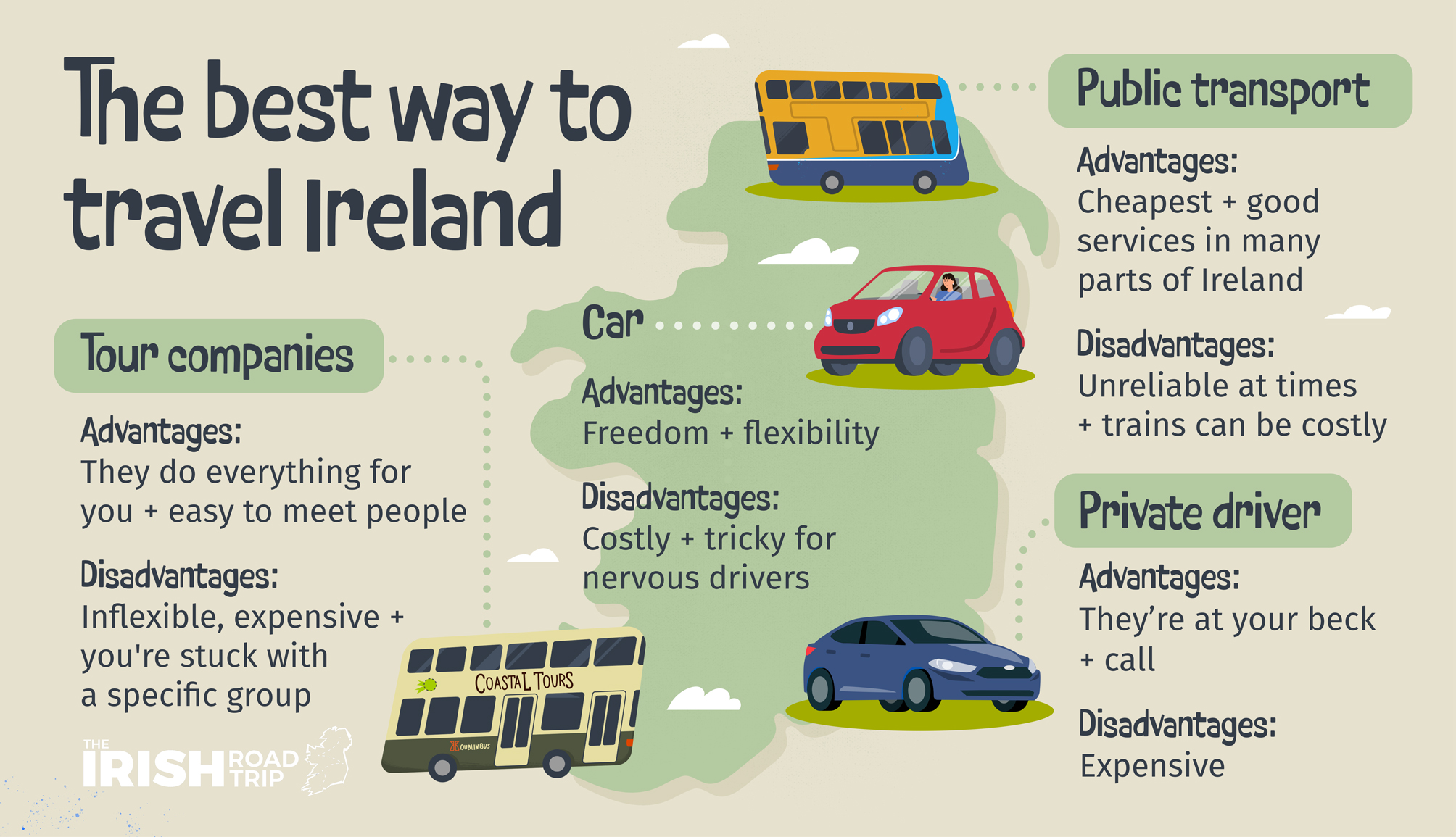
The cheapest way of getting around Ireland on a budget is to use public transport.
Public transport in Ireland , while far from perfect, will save you cash when you compare it to the cost of renting a car in Ireland .
For example, if you were to rent a car for 5 days in June it’d cost from €403/$428 (not including insurance, fuel, etc.).
When you compare this to using buses (e.g. €21/$22.30 to go from Dublin to Galway) and trains (e.g. €21/$22.30 to go from Dublin to Cork), the saving is clear.
Our 2 cents: In my guide to Ireland without a car , you’ll find why combining public transport with organised day tours is a very handy way of getting around.
Tip 4: Find pocket-friendly places to stay away from the cities

Photos via Shearwater
Arguably one of the most important Ireland travel tips if you’re looking to travel Ireland on a budget revolves around finding pocket-friendly accommodation.
Hotels in Ireland, especially in cities and busy towns, can be incredibly expensive.
You’ll find, 9 times out of 10 that B&Bs and Airbnbs are cheaper.
You tend to get the best deals in towns and villages that lay a little off-the-beaten-path.
In the photo above, you’ll see Shearwater in West Cork – the best value place I’ve stayed in years!
Traveller beware: The problem that can arise when booking lodging off-the-beaten-path is that it’s sometimes impossible to reach by public transport.
Tip 5: Be prepared when it comes to food – eating out can skyrocket your budget
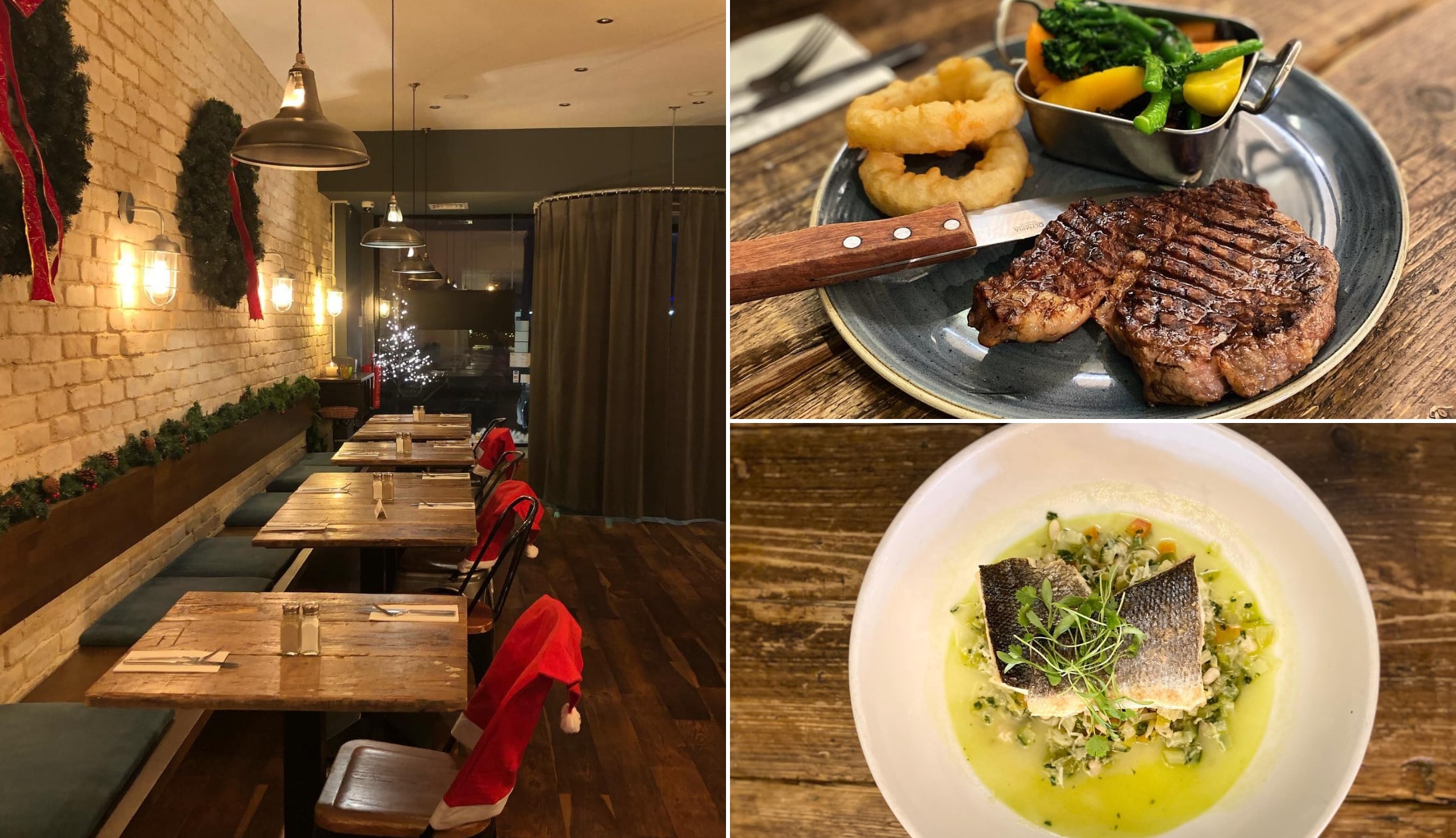
Photos via Great Jones on FB
If you’re planning a trip to Ireland on a budget, you need to be prepared when it comes to food. Eating out for breakfast, lunch and dinner will banjaxx ( Irish slang for damage) your bank account, so you need to plan.
One of the easiest ways to save money on eating out is to stay in self-catering accommodation where you can cook your own meals.
However, that’s not always possible. A good approach is to try and book B&Bs where your breakfast will be included.
If that’s not possible, go to a store like Dunnes or Lidl and buy supplies to make breakfast and lunch (e.g. oatmeal pots, fruit and sandwich fillings).
For perspective: Breakfast in a cafe will cost from €10/$10.60 to €15/$15.92 while dinner will cost €15/$15.92 to €25/$26.53.
Tip 6: Setting an ‘entertainment budget’ is boring but crucial
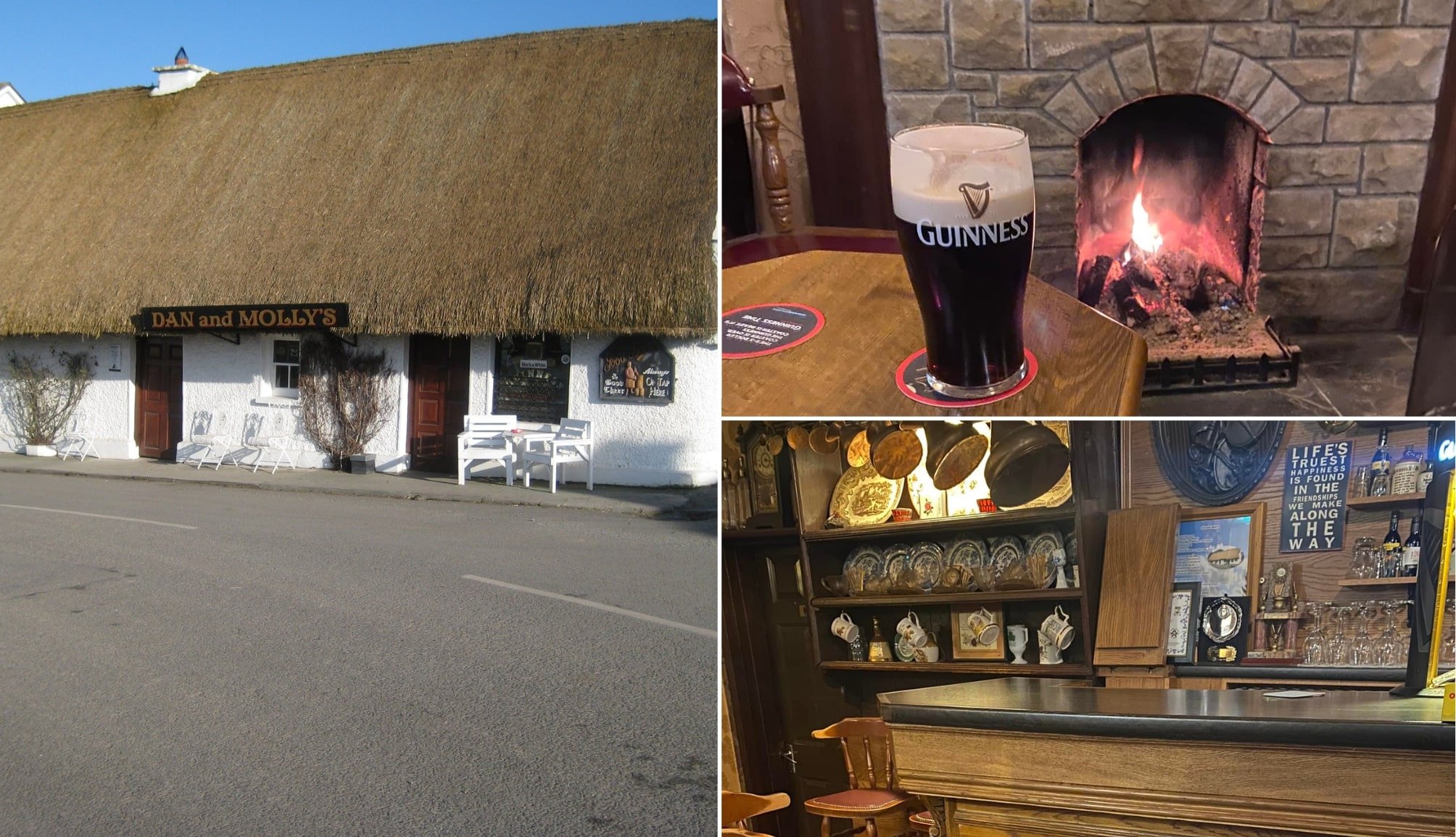
Photos via Dan and Molly’s on FB
Another way to visit Ireland on a budget is to limit the amount that you drink in pubs. If like me, you tend to have five or six pints on a night out, you’ll find that the €€€’s add up very quickly.
The price of a pint in Ireland can range from €5.50/$5.79 to €9/$9.48 ( Temple Bar …) depending on where you are.
If you’re spending one week in Ireland and you drink 20 pints over the week at, say, €5/$5.27 a go, that’s €100/$105.36.
Now, it could be argued that you’re on holiday and that there’s nothing like rounding off a day of exploring with a post-adventure pint, but you need to be careful if you’re trying to keep your spending to a minimum.
Set an entertainment budget: And stick to it! If it’s €50/$52.68 for the week, so be it. It’ll make sticking to a budget much handier.
Tip 7: If you’re organised, you can get a VAT refund on some purchases
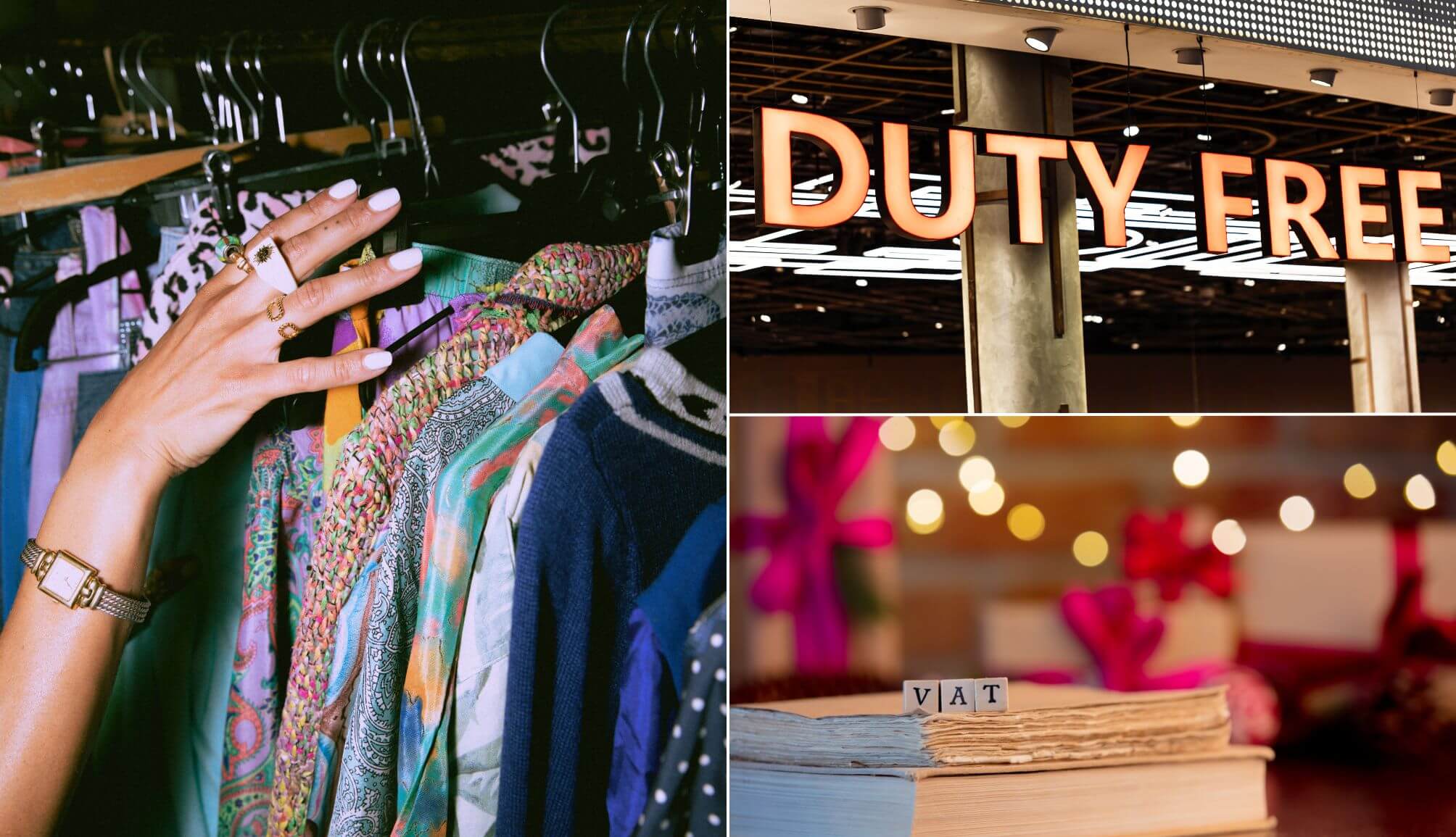
Bottom left: Massonstock. Top right: simarik. Left: Corelens (Canva)
If you’re travelling to Ireland from outside of the EU, you may be entitled to a VAT refund on some purchases.
Now, you might think that this isn’t worth doing, but the standard VAT rate is 23%… yes, 23%!
Just keep in mind that this doesn’t apply to everything you buy.
Tip 8: Visiting Dublin? Get a Leap Visitor Card and a Dublin Pass
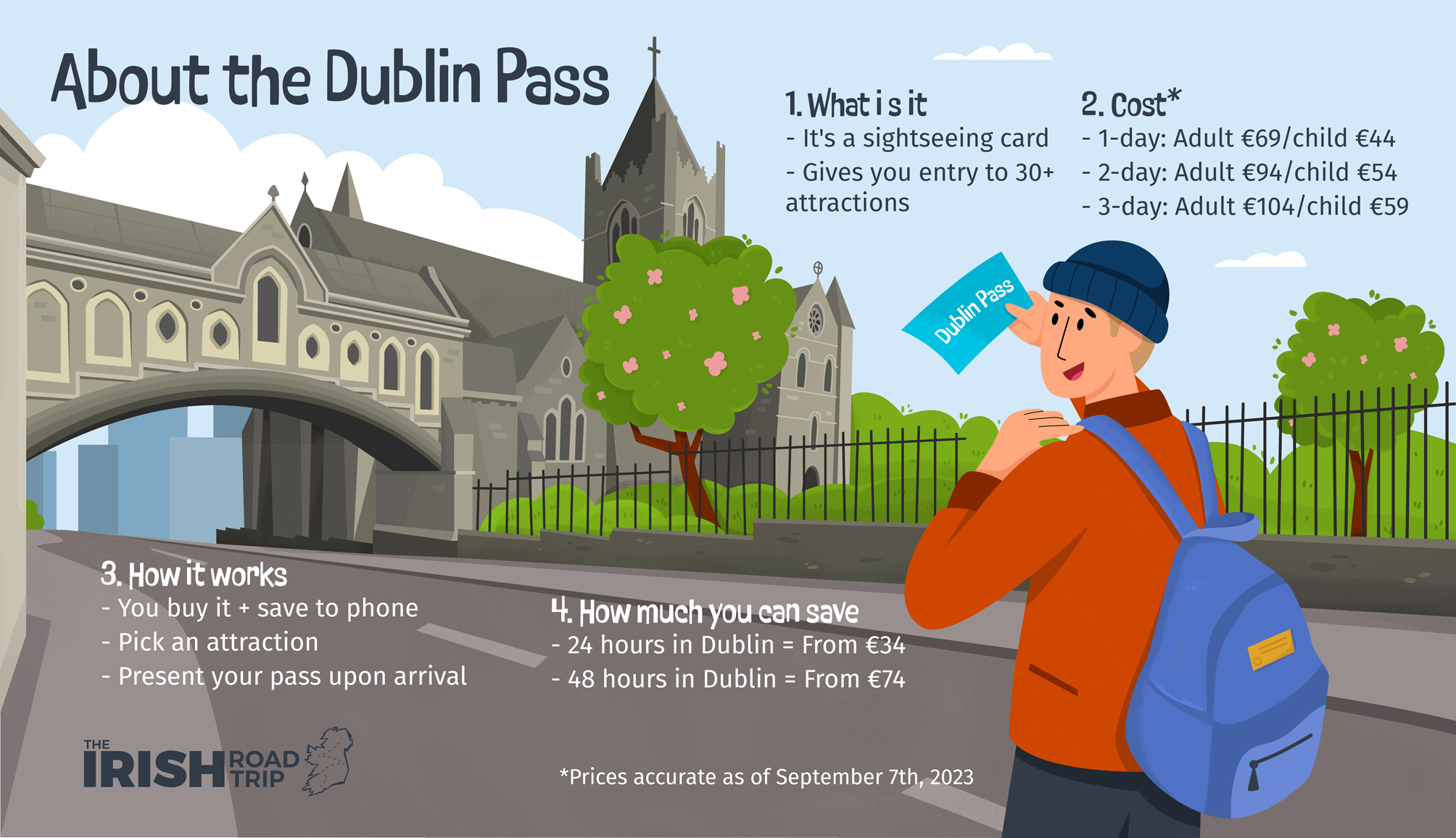
Two of the handiest ways of doing Ireland on a budget if you plan on spending time in Dublin is to get a Leap Visitor Card and a Dublin Pass .
The Leap Visitor Card gives you unlimited travel on Dublin City Bus, Luas, DART, and Commuter Rail and it’s only €16 for a 3-day pass.
The Dublin Pass is another handy money-saving tool to have in your arsenal and you can save between €24.50 and €54.50 on visiting Dublin’s top attractions .
You pay a set price and it gives you access to many of Dublin’s main attractions, like the Guinness Storehouse and the EPIC Museum.
Tip 9: Visiting lots of historical sites? Buy a Heritage Card
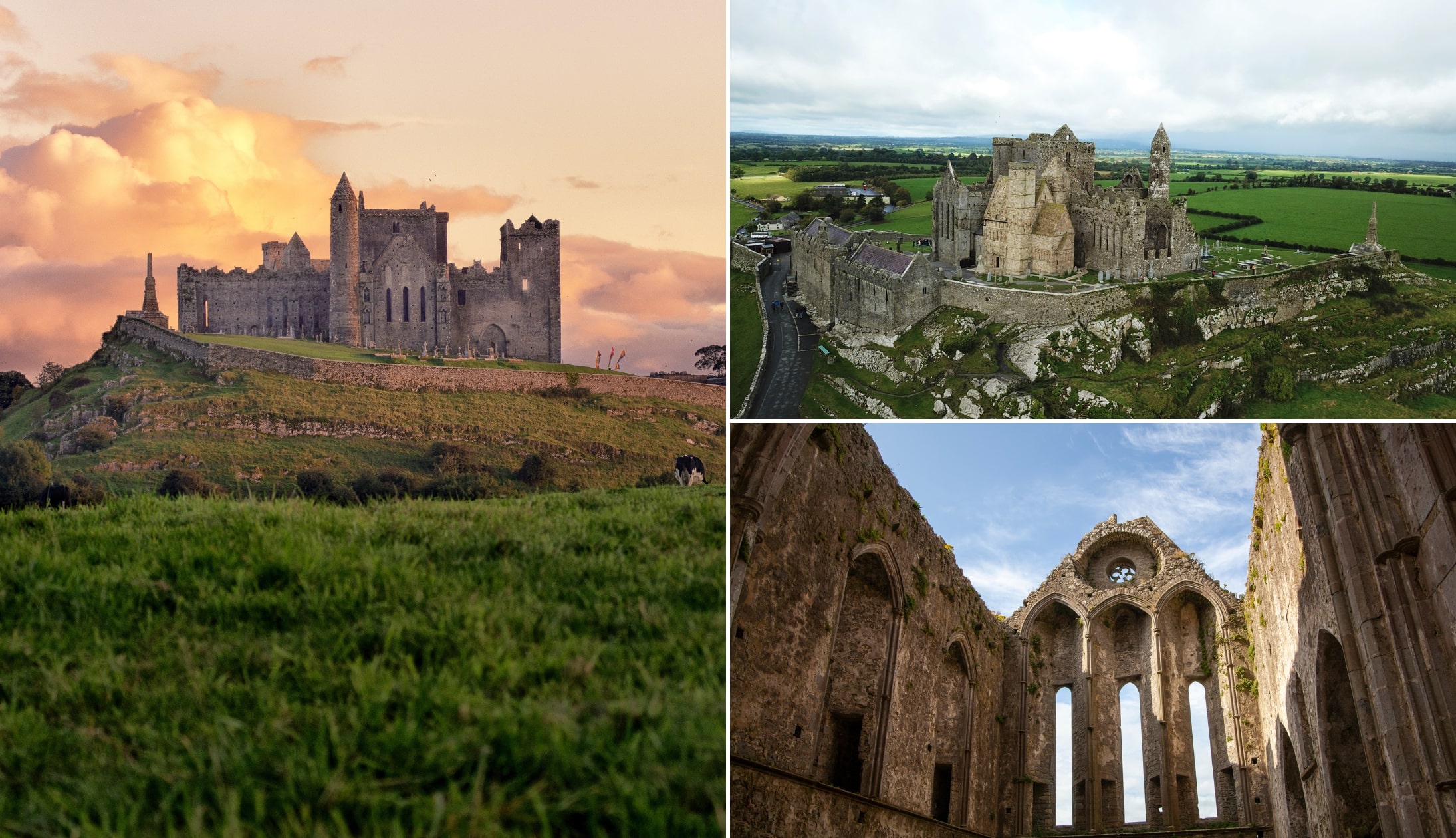
Heritage Card is a handy way to save a decent chunk of money on admissions to Heritage Sites in Ireland, like Kilmainham Gaol , the Brú na Bóinne Visitor Centre, Cahir Castle and loads more.
The Heritage Card is pretty decent price-wise.
Here’s how much a ticket costs (note: families are likely to make the biggest savings with one of these):
- Adult: €40
- Senior: €30 (60 years and over)
- Student/Child: €10.00
- Family: €90.00 (2 adults & 5 eligible children)
- dsgfgdsfgdsfgdsfgd
FAQs about how to travel Ireland cheaply
If you’re still struggling, feel free to ask any questions about how to travel Ireland cheap in the comments section below.
If you’re visiting Ireland or Northern Ireland for the first time and you’re struggling to plan your trip, visit my tourist information hub – it’s packed with information you’ll find useful.
Is Ireland cheap to visit?
No, Ireland is generally not considered a cheap destination to travel to. In recent years, the cost of traveling to and within Ireland has increased, with expenses for flights, car rentals, and accommodation contributing significantly to the overall cost.
What is the cheapest way to travel to Ireland?
This will be dependant on where you are travelling from. If ferry is an option, it will be the cheapest. If not and you are required to fly, the cheapest way to travel to Ireland is to set alerts for flight price reductions can help you secure the cheapest fares.
What would a cheap trip to Ireland cost?
Based on recent calculations, a low Ireland travel budget for two people travelling from JFK in the US in June of comes in at €2,523/$2,679 (or €1,261/$1,340 per person).
Keith O’Hara has lived in Ireland for 35 years and has spent most of the last 10 creating what is now The Irish Road Trip guide. Over the years, the website has published thousands of meticulously researched Ireland travel guides, welcoming 30 million+ visitors along the way. In 2022, the Irish Road Trip team published the world’s largest collection of Irish Road Trip itineraries . Keith lives in Dublin with his dog Toby and finds writing in the 3rd person minus craic altogether.
This site uses Akismet to reduce spam. Learn how your comment data is processed .

Visiting Ireland on a Budget: A Complete Guide (2024)
A World in Reach contains affiliate links. If you make a purchase through these links, I may receive a commission at no cost to you! Read my full disclosure here .
Considering a trip to Ireland but don’t want to break the bank? Here’s the ultimate guide to visiting Ireland on a budget, complete with helpful travel tips from a local!
Wondering how to visit Ireland on a budget? You’ve come to the right place!
Ireland was the first country I ever visited outside of the United States, so it’s a very special place for me. I got to spend two weeks exploring all over the Emerald Isle.
Ireland is one of the most popular countries to visit in the world, and for good reason. The charm, the natural beauty, the people, and the history are just a few of the reasons a trip to Ireland is worth making.
Unfortunately, Ireland is consistently ranked as one of the most expensive countries in Europe and beyond.
That being said, it is still possible to visit Ireland on a budget…if you know how to do it right.
To help you with planning a trip to Ireland on a budget, I reached out to my friend Josh from A Backpacker’s World .
Josh is a full-time budget traveler who is from Ireland, so he knows all the local tips and tricks for a budget-friendly trip .
So without further ado, here’s a complete guide to visiting Ireland without breaking the bank!
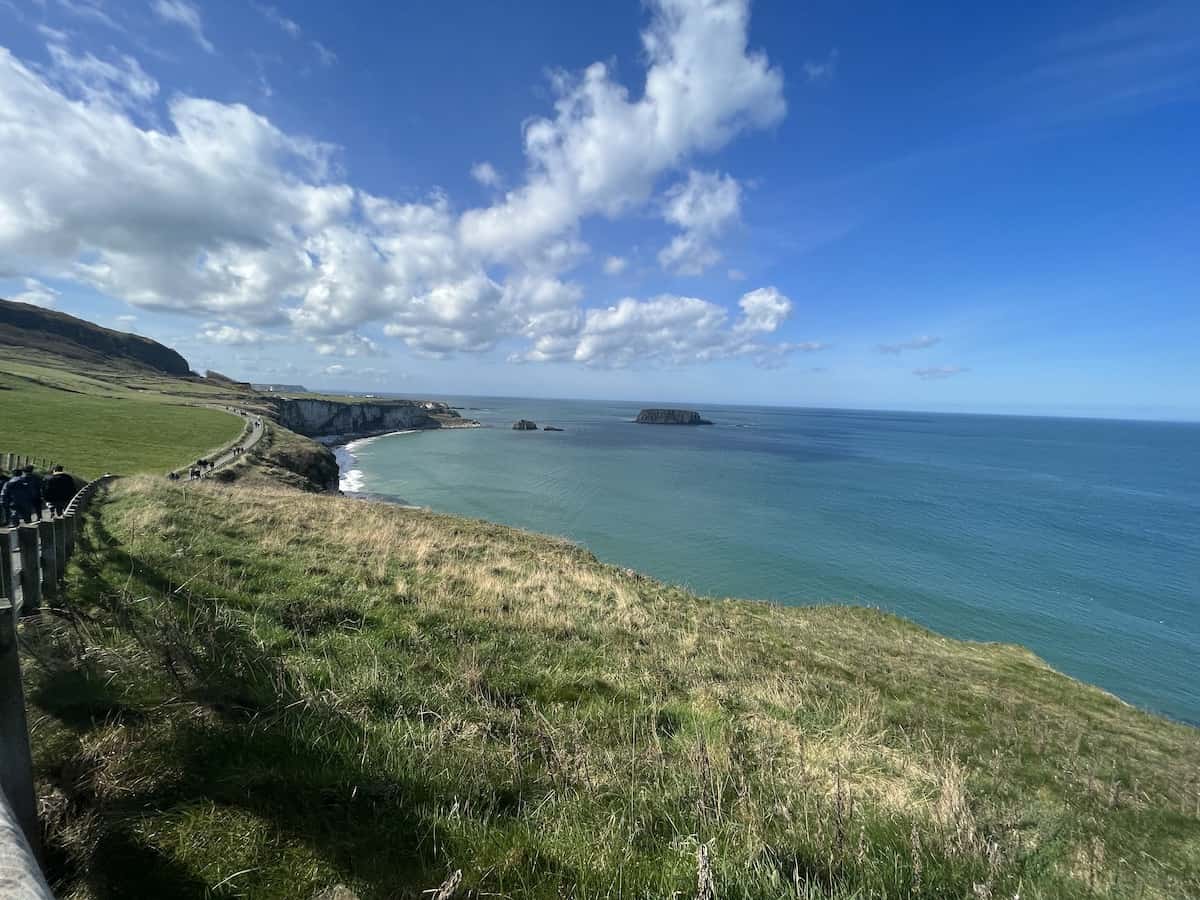
Ireland Daily Shoestring Budget
The average budget traveler will spend around €60-70 a day in Ireland including accommodation, transport, food, and activities.
These 4 costs are always the main expenses while backpacking.
Of course, it’s possible to survive on less than this as an ultra-shoestring budget traveler, and on the other hand, it’s easy to spend a lot more money than this too.
At the end of the day, every traveler is different and there is no “one size fits all” budget .

VISITING IRELAND ON A BUDGET
How to get to ireland on a budget.
Ireland is famous for a lot of things, and there’s no denying that Ryanair is one of them.
Whether for better or for worse, Ryanair is the most popular budget airline throughout Europe. It’s got mixed opinions but personally, I love Ryanair.
I think if you have your expectations in check, you can’t go wrong with them. They’re perfectly suited for budget travelers.
You can easily get return flights to Dublin from all over Europe for anywhere from €20-50. I wouldn’t spend more than this – if you can be flexible with your dates you can save so much more.
If you’re not already in Europe, your flights will cost significantly more, but you can still get relatively affordable flights from the US to Dublin.
I am a huge fan of Going , an email newsletter that sends out flight deals from US airports to destinations all around the world. They often send emails with deals from the US to Dublin for as low as $400.
Going has both free and paid subscription options, and I personally use and love the paid one. Click here to sign up for a Going Premium free trial.
Once you make it to Ireland, you can easily add another European destination to your trip. Or, if you get a great flight deal, fly to another destination in Europe before grabbing a cheap Ryanair flight to Ireland.
How to Get Around Ireland on a Budget
Ireland’s public transport system is “meh”, but it’s the best option you have when you’re on a budget.
There are trams in Dublin but there aren’t really anywhere else.
While you’re in a city or town, most things are close together so it’s walkable.
Ireland is pretty small so you’ll never be too far away from anything. Between destinations, you’ll mainly rely on buses and trains to get you around the island.
Taxis in Ireland are very expensive and there’s rarely an occasion where you need to take one, so if you are being strict with your budget, avoid them at all costs.
Getting between cities and places, you’ll most likely take buses.
Flixbus doesn’t operate in Ireland, but the local transport systems run coaches between major places , like from Dublin to Belfast or Galway.
Unfortunately, hitchhiking isn’t really a thing in Ireland. You can try it for sure, but I’ve never even seen someone attempt it in 20 years of living here.
Budget Accommodation in Ireland
As always when traveling on a budget, the best way to save money on accommodation is by staying in a hostel.
You won’t always have an abundance of choices to choose between, but most places in Ireland will have at least a couple of hostel options.
The average price is between €20-30 a night , so it’s not the cheapest in the world, but it’s still significantly cheaper than a hotel or Airbnb or equivalent.
I typically use Booking.com and Hostelworld to search for hostels.
Just make sure to read reviews before booking so you can make sure that the hostel’s vibe matches what you’re looking for. Some hostels are very party-focused, while others are more laid back.
Places to Visit in Ireland on a Budget
There are so many places to visit in Ireland, but when you’re on a budget, you’re limited to where you can go.
It would be impossible to visit Ireland without checking out some of these places, but others are more suited for shoestring budgets.
I recommend doing your own research and using these as a basis to form your itinerary, not just following it blindly, because every traveler enjoys different things.
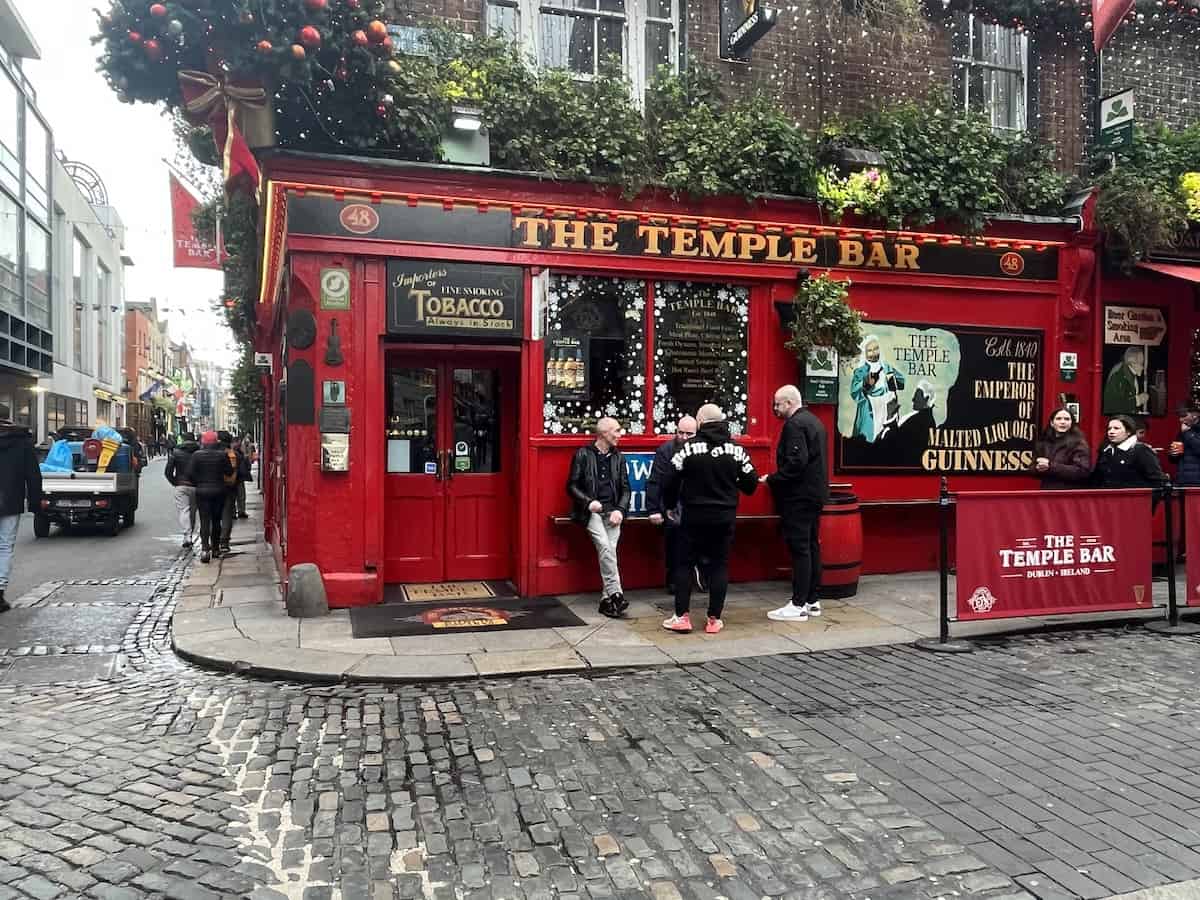
Dublin is likely where you’ll first arrive in Ireland.
It’s the country’s largest city and home to its largest airport, so it’s probably where you’ll fly into whether you’re coming from the US or taking a Ryanair flight from somewhere else in Europe.
Many visitors don’t spend a whole lot of time in Dublin, but make sure you don’t just move on straight away to your next destination.
The city has a lot to offer, and there are so many reasons to visit Dublin . It’s the capital of Ireland and it’s filled with history and culture.
Taking a walking tour is a must – I recommend taking an Easter Rising-themed tour of Dublin to learn about the uprising, it’s fascinating.
And of course, you can’t skip sightseeing with the likes of Temple Bar, Trinity College and the Book of Kells, and St. Patrick’s Cathedral.
If you end up spending a longer amount of time here, you can also take advantage of the many day trip options from Dublin .

Belfast is the capital city of Northern Ireland, which is a country on the island of Ireland but that’s actually part of the United Kingdom.
It’s well worth a visit as, like Dublin, it’s filled with history, and I’d recommend taking a walking tour themed around “The Troubles” .
There are also lots of tours from Belfast , making it easy to get from the city to the other main attractions and destinations in Northern Ireland , such as the Giant’s Causeway and Carrick-a-Rede Rope Bridge.

Galway is a pretty affordable city, and even though it’s a city, it feels like a small town.
Apart from being included in an Ed Sheeran song, there is a great music scene in Galway.
The culture in the city is really traditional and it’s likely what you imagine when you picture Ireland.
The atmosphere is really lively and friendly and the best way to describe Galway would be as “cozy”.
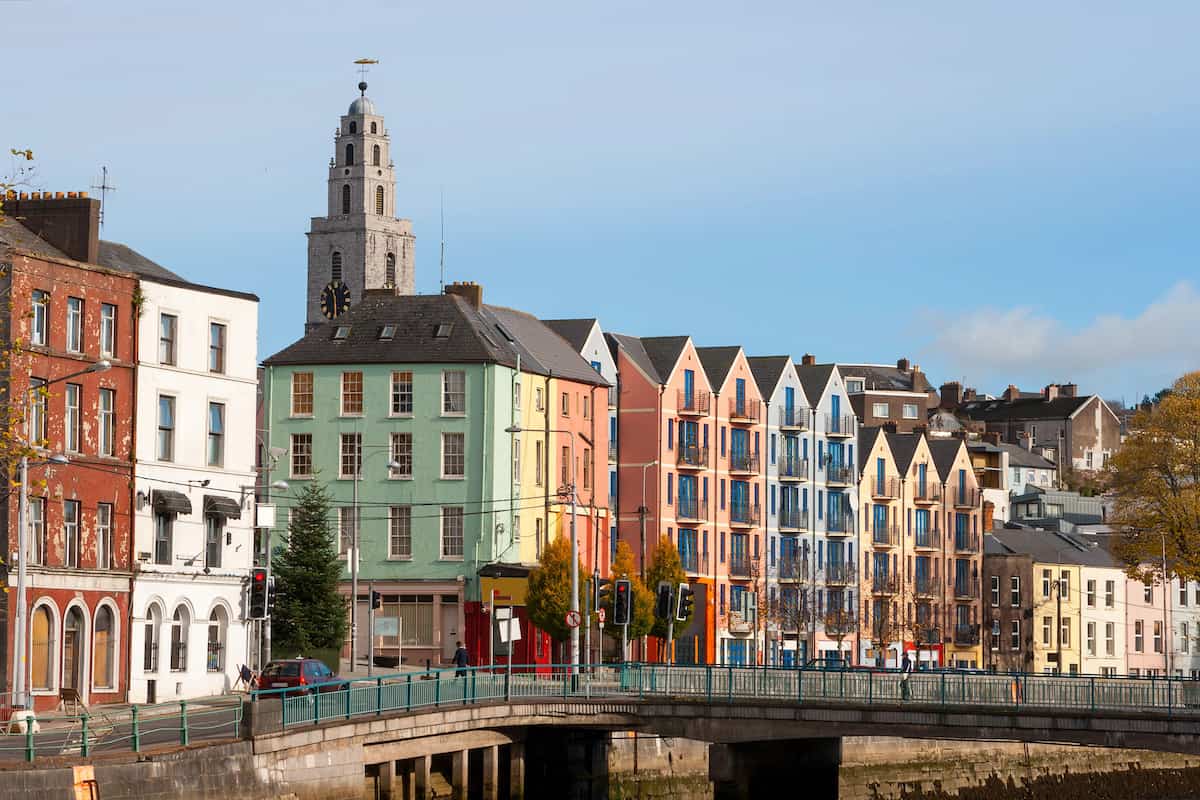
Although it’s pretty out of the way as it’s right on the south coast of Ireland, Cork is a must-visit.
It’s one of the most well-known places in Ireland and when you visit it yourself, you’ll see why.
Just like Galway, Cork is a very traditional Irish destination. The charm of the city is unmissable and will hit you in the face as soon as you arrive.
The colorful houses that line the water perfectly sum up the appeal of Cork.
Kilkenny is a very historical place, with cobbled streets and of course, Kilkenny Castle.
It’s like stepping back in time, with medieval buildings and streets. It simply feels “Irish”.
Plus, it’s one of the cheaper destinations in Ireland which is always good when you’re traveling on a budget!
The castle gardens are free to visit too which is a nice plus, but make sure you don’t miss the Medieval Mile either – it’s stunning.
Other places in Ireland that you may choose to visit include Sligo, Limerick, and Westport.
When visiting Ireland on a budget, make sure to avoid places like Enniskillen and Donegal. They are very expensive as they are popular staycation destinations for Irish people, with fancy retreats and resorts.
Things to Do in Ireland on a Budget
While traveling on a budget in Ireland, you’re going to want to predominately do free things or very cheap things.
Without getting into very specific things such as visiting the Cliffs of Moher or walking along the River Liffey in Dublin, here are a few generic things to do in Ireland no matter where you are on the island.
The good thing about sightseeing is that it’s completely free, and in some cases, that’s all you want to do.
For example in Dublin, the Temple Bar is cool to see, but if you want to have a drink, it’s going to cost you a fortune.
It’s not worth it, so sometimes it’s better to just enjoy things by looking at them.
Free Walking Tours
One of the best things you can do on a budget anywhere in the world, Ireland included, is take a free walking tour .
While the word “free” is slightly misleading as you are expected to tip at the end, a €10 tip for a tour which would normally cost like €50 is a no-brainer.

Explore Free Museums
Many of the museums in Ireland are completely free of charge including the Natural History Museum and the National Gallery of Ireland in Dublin or the Ulster Museum in Belfast.
You can donate if you like, but most people don’t, including locals.
Exploring a museum for free is always a great way to spend a few hours, and if you don’t have a good time, well, at least it was free.
Take a Coastal Drive
If you’re staying in Ireland for a bit longer than most, you may wish to rent a car, and if you do, you are going to have some incredible drives.
Ireland’s coasts are some of the most beautiful in the world, with the likes of the Wild Atlantic Way which is one of the most Instagrammable places in Ireland for sure.
Take a Hike
One of the biggest selling points of Ireland is its natural beauty.
There are endless hiking opportunities such as in the Mourne Mountains or at Howth Castle.
All you need to do is find a way to get to these places for cheap (usually public transport), and then it’s completely free.
Most parks and areas of natural beauty in Ireland only charge for vehicles and don’t charge for pedestrian access.
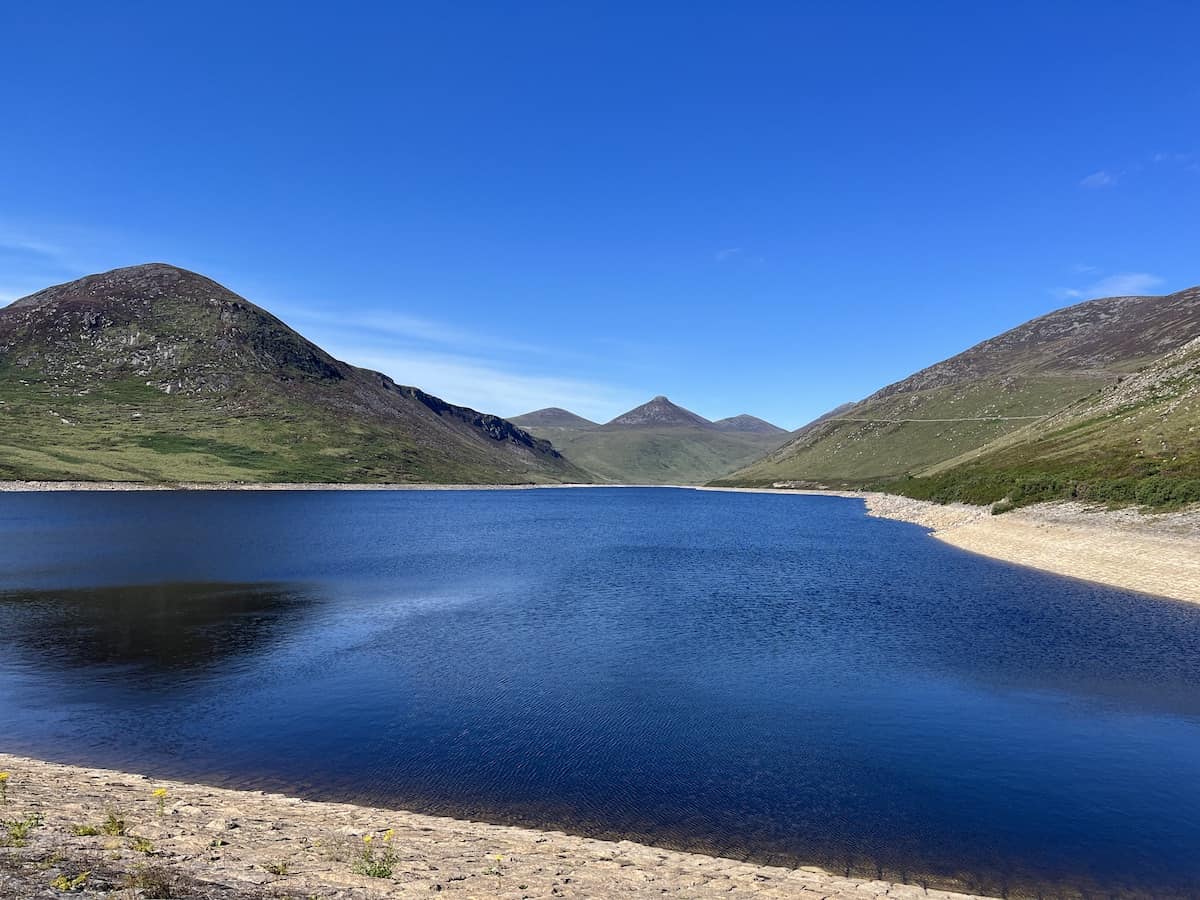
Ireland Budget Travel Tips
As always with budget travel, there are some tips and tricks that apply to the specific country to help you save money.
Ireland is no different, so here are some helpful tips for visiting Ireland on a budget.
1. You can drink tap water in Ireland
Tap water in Ireland is completely safe to drink, so there’s no need to pay for bottled water.
It actually tastes quite nice too – it’s very fresh, especially in the countryside.
Make sure to bring a reusable water bottle. Not only will it save you money, but it’s better for the environment, too.
2. Visit during off-peak season
Every country has a peak season, and like most places, Ireland’s is in the summer.
But the thing about Ireland is that the weather gets so bad throughout the rest of the year that few people want to come – the peak and off-peak seasons are very contrasting.
But there is a silver lining, and it means things are much cheaper, which is good for budget travelers.
3. Take advantage of student discounts
Many attractions and museums all over Ireland offer discounts to students, with some restaurants even doing special deals for students.
If you are a student, make sure you bring your ID or International Student Identity Card as it will save you tons of money.
If you’re not a student, I’m not saying to bring a fake ID, but someone in Ireland isn’t going to know whether your American university ID is legit or not…
4. Book things in advance
One thing that I don’t like about Ireland is the lack of spontaneity.
A huge perk of budget travel is always the ability to be spontaneous, but Ireland isn’t really designed for this.
Many things are cheaper if you book online rather than turning up and paying on arrival. This applies to attractions like zoos and activities like bowling or mini golf.
5. Always bring a coat
While this trip has nothing to do with visiting Ireland on a budget, it’s more just a general tip for visiting Ireland.
Always have a coat with you, even in summer.
I know most countries will say this but in Ireland, you really can have all four seasons in an hour.
Also, don’t trust the weather forecast, it’s usually wrong.
Plus, bringing a coat with you will prevent you from having to purchase one on a chilly day!
Ireland on a Budget: Final Thoughts
And there you have it, a complete guide to visiting Ireland on a budget!
While it’s not a country that’s designed for budget travel, it’s still possible to do, it’s just a little more difficult.
But it’s so worth it – you’re guaranteed to leave Ireland with memories to last a lifetime.
So, get those flights booked and go and enjoy life on a budget in Ireland!
After traveling outside of the US for the first time while studying abroad, I quickly developed a love for travel and an obsession for exploring as much of the world as possible. Now, I'm on a mission to teach college students, young adults, and anyone else who wants to see the world how to travel while minimizing their expenses and maximizing their experiences.
The Cost of Travel in Ireland (2024): A Detailed Budget Breakdown
Ireland was one of the first countries I ever added to my travel bucket list.
Perhaps it was the hopeless romantic in me thinking I’d meet a handsome man, like in P.S. I Love You , or maybe it was the sheer number of beautiful photos that left me captivated.
Either way, I was deeply drawn to Ireland’s culture and natural landscapes from a young age. So much so that I was determined to get there as soon as I possibly could, so when the opportunity arose for me to study abroad in Ireland, I was filling in my application form within minutes.
Yes, I achieved my lifelong goal of visiting Ireland and before I knew it, I was taking my first steps in this beautiful country, pinching myself that I was actually living there now.
I didn’t want to squander that opportunity, which is why I spent almost every weekend exploring the Emerald Isle from top to bottom. It wasn’t a surprise to discover that travelling across Ireland didn’t come cheap, but I wouldn’t say it was overly expensive either. I averaged around €156/$ 170 per day while I was travelling across the country, with most of that money being spent on accommodation and food.
One of the best ways to see Ireland and save money is to rent a car and drive around at your own pace, but I joined plenty of bus tours, too. Taking tours cost more, but it meant I didn’t have to worry about driving or navigation either. In the end, these were some of my favorite weekends — and definitely worth the money.
Whether it was driving along the winding, postcard-worthy clifftop roads that had me feeling like I was on the edge of the world or drinking with locals in a teeny-tiny pub in Dublin, Ireland was all that I dreamed it to be and more.
After my most recent trip last year, I decided to finally sit down and share exactly how much you can expect to spend while travelling in Ireland, so let’s get started.
What’s Included in this Post
This budget breakdown covers how much I spent on accommodation, transportation, activities, and food while I travelled around the country.
I’ve not included my flights into and out of Ireland as this is going to vary significantly based on where you’ll be arriving from.
The amounts in this guide are listed in Euros and U.S. dollars, simply because the vast majority of readers of this site are from the U.S. and close to a million Americans visit Ireland each year.
How to Save Money on the Cost of Accommodation in Ireland
As always with travel, it’s possible to cut your accommodation costs down to zero if you have the time and patience to seek out an offer.
Couchsurfing exists in Ireland and allows you to stay with a local for free , usually sleeping on their sofa and enjoying a local’s insight into life in their country. It’s not the most comfortable of living situations, but if your budget’s tight, it’s worth sending out a few requests to hosts to see if anything comes of it. You can browse through the 80,000+ Irish hosts on the Couchsurfing site .
Housesitting is a great option for free accommodation. This is where you’ll take care of somebody’s house while they’re away, and usually look after their pets, too. It’s best for long-term travellers or retirees: you can’t pick and choose dates and destinations, so you need to have a lot of flexibility as to where you go and at what time of year. If you do have that freedom, it’s a wonderful way to cut down your travel expenses, soak up some home comforts, and live like a local for a while. I have friends who have housesat in castles before! For free! Trusted Housesitters is the best site for getting started with housesitting, as they have the highest number of listings.
I’m suspecting, though, that for most of you, you’re not interested in the free accommodation and just want somewhere clean, safe, and affordable to rest your head each night. If that’s the case, there are several options available for you.
I will make a quick note, however, that post-pandemic, the cost of hostels in Dublin is obnoxiously high. As in, while looking for a hostel in the city for July 2023, the cheapest price I could find was €100 for a dorm bed or €200 for a private room .
Yes, really. It’s something I’ve encountered in numerous countries since the pandemic, but it did seem to be particularly bad in Dublin.
Away from the capital and outside the peak summer travel season, though, hostels in Ireland are more sensibly priced. You can expect to spend around €40 a night for a dorm bed for a well-reviewed hostel in Ireland, with the price increasing to slightly about €60 a night for the absolute best of the best.
When it comes to private rooms in hostels, you can expect to spend around €120 a night for a clean, basic room in a good location, so if you’re travelling with a friend or partner, there’s not always a lot in it compared to two dorm beds. €150-190 a night will get you an exceptionally well-reviewed private room in a hostel or hotel.
I use HostelWorld to find the cheapest hostels, as they tend to have the greatest number of listings at the lowest prices.
And, of course, there are always hotels, which are usually priced about the same as a private room in a hostel, but typically have a few more comforts. You’ll pay €120-200 a night for a decent, clean, mid-range property in a central location, depending on where you are and when you’re traveling. I always use Booking , as they have the most accommodation options for the cheapest prices.
The Cost of Accommodation in Ireland
There’s lots of wonderful places to stay in Ireland — from B&Bs to castles to hotels and hostels.
If you’re even toying with the idea of staying in a castle (I know: the ultimate fairy-tale dream) then you’re looking at around $200-$600 a night for the higher-end, luxury versions. Honestly, I think Ireland is a fantastic place to splurge on accommodation if you can afford to.
I always like to share the accommodation I stayed in on my travels, as well as recommend alternatives when mine weren’t so wonderful. Everywhere I recommend below has excellent reviews and offers great value for money.
Here’s my list of my favourite accommodation options in Ireland:
Dublin: Staycity Aparthotels Mark Street ( €180 a night )
Dublin is unbelievably expensive right now, so I really felt like I lucked out when I discovered this modern hotel. Not only is it in the best location in town — within walking distance of Temple Bar and all the main tourist attractions — but the staff are wonderful and the rooms comfortable. The heating and air conditioning worked well, the rooms were silent, and it felt as though we were staying in a brand new hotel. It’s one of the cheapest accommodation options in Dublin while also being one of the best reviewed. I wouldn’t consider staying anywhere else!
Galway: The Stop B&B ( €219 a night )
As far as I’m concerned, Galway is a must-visit destination on any trip to Ireland. Its lively atmosphere, vibrant street busking, and brightly colored buildings make it one of my favorite cities: it’s one of the places I always revisit whenever I’m in the country. I stay at the Stop B&B when I do: it’s easily one of the best-rated options in town that’s still in a great location a few minute’s walk from the city centre. The rooms are absolutely spotless, stylish and modern without feeling generic, and Russell (the host) couldn’t have been more welcoming. Shoutout to the delicious included breakfast as well: it was better than what I had in most restaurants!
Cork : Hotel Isaacs Cork City ( €169 a night )
I really enjoyed my stay at Hotel Isaacs for the couple of nights I spent in Cork. It’s one of the more affordable hotels in the city, but is still in an ideal location, just a five minute walk from the centre and ten minutes from the bus and train stations. It’s nice and quiet despite being right in the heart of things, and my room was bigger than many I’ve stayed in in Ireland. There’s a good onsite bar but in the end I didn’t spend much time there: the staff’s recommendations for traditional pubs nearby were so good that I spent my evenings there instead!
Dingle : Murphy’s Pub and Bed & Breakfast ( €135 a night )
The stunning Dingle Peninsula is one of the most beautiful parts of the country; I don’t think I’ve ever seen such vibrant shades of green anywhere else on the planet! You’ll need at least a couple of days to fully explore the area, and I’d recommend staying at the delightful Murphy’s Pub in Dingle overnight while you do. Right in the middle of town and on the waterfront, you couldn’t ask for a better location to explore the town from. Not that you even have to leave the building if you don’t want to: one of the big benefits of staying in a pub is only having to walk a few steps to dinner, and that’s equally true here! My room was large, spotless, and very quiet considering it’s above the bar, and the included breakfast was super-tasty and set me up for the rest of the day. I really enjoyed my stay at this cozy family-run pub: I just wish I’d had another night there!
Belfast (Northern Ireland) : Citi North Guesthouse ( €94 a night )
Belfast is one of the most interesting cities I have been to. It’s deeply cultured, rooted in history and close to some of the most stunning natural landscapes I’ve ever seen. And if you’re planning a stint in Belfast, you need to stay at Citi North. Not only is it one of the most inexpensive guesthouses in town, but it also offers up one of the best breakfasts in the city — included in the price, of course. And it’s the small touches that really make the difference here, whether it’s having your bed made up and linens replaced while you’re busy hitting the streets of Belfast, receiving local recommendations on how to make the most of your vacation, or sleeping on a bed so comfortable that it feels like lounging on a cloud. It’s also in particularly handy location for boarding the hop on hop off tour or meeting up with one of the black taxi tours .
The Cost of Transportation in Ireland
Transportation around Ireland isn’t just a way of getting around, it’s an attraction in and of itself. For the most part, I used buses to get around the country when I hadn’t rented a car.
Bus and Train — The bus will probably be your main way of getting around if you don’t have a driver’s license. I found the bus system in Ireland to be very reliable and easy. and it covers pretty much anywhere you’re likely to want to go. The buses are quite comfortable and modern, they almost always leave on time, and most even have free Wi-Fi on board! And because Ireland is a pretty small island, the costs are actually quite reasonable.
The main bus companies are Bus Éireann, Citylink, Aircoach, and Go Bus. Bus Éireann is the biggest and best of them, with reasonable prices and routes that cover the entire country. Plus, WiFi, power sockets, and comfy seats!
If trains are more your thing, they can also be a good way of getting around, especially on routes that go mostly along the coast: there are some epic views to be had! Tickets do tend to cost a bit more than the equivalent bus trip, though, and the trains don’t run as often as the buses or to as many places.
That said, shorter trips are still quite cheap: I paid €8.35 for a walk-up ticket from Enniscorthy to Rosslare, which wasn’t a lot more than the bus.
You can buy tickets on the day from self-service machines and ticket counters, or in discounted advance tickets from the Irish Rail website . You just collect your ticket from the machine when you get to the station.
Here are some of the typical bus and train route cost breakdowns, booked a few days in advance:
- Bus from Dublin to Galway: €15/$17
- Bus from Dublin to Cork: €15/$17
- Bus from Dublin to Belfast: €11.50/$14
- Train from Cork to Killarney: €12/$13
- Train from Killarney to Galway: €17.33/$19
City Travel — This mostly pertains to getting around Dublin. I found the city centre to be compact enough that you could easily walk places (if you’re wearing comfortable shoes of course!). Unlike most European cities, Dublin doesn’t have an underground system, so your best bet is to use the extensive public bus network.
If you’ll be using public transport a lot, pick up a LEAP card: you can buy and top up at ticket offices and most convenience stores. You’ll save up to 30% on the regular single ticket cash price, although note that the card has a €5 deposit and €5 minimum topup.
With your card, you’ll pay a €2 for most bus trips in Dublin, with a daily cap of €5.60 . You can also use your LEAP card towards the train, tram, or Dublin bike rental. It’s worthwhile if you’re traveling beyond Dublin as well: you can use it in other cities like Limerick, Galway, and Cork.
Car Rental — Like I said earlier, if you have a driver’s license and you’re comfortable driving on the left side of the road, then this is by far one of the most cost-effective and flexible options. Renting a car and driving around Ireland is one of the best ways to explore the vast countryside on your own timetable. Prices start at €26 ($28) per day for a simple, economy car. This is a great option if you’re traveling with friends or a partner because you can split both the costs of the rental and gas.
Keep in mind that car rental prices do change depending on the time of year and how high the demand is. Typically the further you book out, the better prices there will be. I always use RentalCars.com to find the best deals for car rentals, as they always seem to find cheaper options than I can score by going direct.
The Cost of Food in Ireland
Irish food feels like coming home. It just invites a feeling of sitting by the fireplace in a cozy cottage on the water, surrounded by friends and family. Whether it’s seafood chowder, cottage pie, or classic fish and chips, hearty, feel-good food is everywhere in this country. If you’re eating out for all your meals, though, you’re definitely going to notice a dent in your budget.
If you want to start your day off with a lot of food, look no further than the traditional Irish Breakfast. Similar to the Full English from across the channel, you’ll end up with some combination of bacon, sausages, baked beans, eggs, mushrooms, tomatoes, black and white pudding, and toast. You’ll pay around €15 ($16.50) for it, although it’s not uncommon to see half-sized versions on the menu for those who’d like to save a bit of money (and their arteries).
You don’t have to go the traditional route, though, at least not when you’re in a major city. Especially in Dublin, but elsewhere as well, there are plenty of brunch-style cafes with a wide range of healthier options. I’ve had everything from shakshuka and granola bowls to salmon and eggs and the ubiquitous avocado on toast, paying €12-15 ($13-16.50) each time.
Pub meals typically offer the best value, especially outside the tourist areas of major cities. There, it’s not hard to find a delicious, filling meal of rich Irish stew and soda bread, fresh fish and chips, or tasty burgers for around €15-20 ($16.50-22) per person. A similar meal at a more upscale restaurant will be more like €20-25 ($22-27) .
It’s worth looking out for restaurants that offer lunchtime or early bird specials. Often during the middle of the week, at certain times before the dinner rush, restaurants will offer full meals at a discounted rate.
If you’re staying at accommodation with shared kitchens, this is a fantastic way to save money on food. When I spent money on groceries, I usually paid around €60 ($65) per week, or €8.50 ($9.50) per day for basic things like pasta and vegetables.
If the place you’re staying at includes a free breakfast, I’d definitely suggest taking advantage of it. Especially if it’s a cooked breakfast, but even if it’s a lighter continental option, it often means you can get by with something small like a sandwich or wrap for lunch while you’re out exploring, and then opt to cook dinner in the evenings. Then you’ll average around €20 ($24) per day.
Fancy a pint of Guinness or my personal favorite, Smithwick’s Irish Red? You’re looking at around €6 for every additional bevvy that you tack on, which you’ll be tempted to do at many points! I’d suggest going easy on the drinks in Temple Bar and other major tourist spots, though: prices there can be a lot higher than elsewhere!
The Cost of Activities and Entrance Fees in Ireland
The activities in Ireland are so much fun! The rich history, incredible landscapes and quirky attractions will make memories to last a lifetime. I found most activities and entrance fees to be reasonably priced, at least compared to some other places in Europe.
Without a doubt, my favorite experiences were taking a tour of the Ring of Kerry and Dingle Peninsula Tour. These are spectacular drives, with incredibly lush mountains and ocean views that I couldn’t tear my eyes away from. I went with Paddywagon for my tours, and felt very taken care of. All I needed to do was sit back and enjoy the drive: it was nice to be able to just gaze out the window and let someone else do the driving! They made sure to stop frequently so we could get out, take pictures, and see everything up close.
I also enjoyed seeing the Cliffs of Moher, Giant’s Causeway, experiencing the Guinness Storehouse and kissing the Blarney Stone. When I think about my time in Ireland, these are always the first activities that come to mind.
Unless you’re a huge history buff, I personally thought that seeing The Book of Kells in Dublin was overrated and overpriced. But everything else is worth it!
Here’s a breakdown of some of the costs you might expect for the top attractions in Ireland:
- Blarney Castle and Stone: €22/$24 (online discount)
- Guinness storehouse in Dublin: €20/$22 (online only)
- Cliffs of Moher: free
- The Book of Kells and Trinity College Dublin: €25/$27
- Giant’s Causeway: free
- Carrick-a-Rede rope bridge: €15.50/$17
- Connemara National Park: free
- 3-day tour of southern Ireland (Ring of Kerry, Dingle Peninsula, Cliffs of Moher, and Galway): €389/$422 (including accommodations, entrance fees, and breakfasts)
If you’re like me, and love to make the most of time, then tours are really a great way to experience a country. I recommend hoping over to Get Your Guide for a range of activities and tours, like the Wild Wicklow Day Tour from Dublin ( €30/$33 ), Tour of Connemara National Park ( €35/$38 ), Aran Islands & Cliffs of Moher Cruise ( €70/$76 ), or a Game of Thrones studio tour ( €34.50/$38) .
The Cost of Travel Insurance in Ireland
If you’ve read any other posts on Never Ending Footsteps, you’ll know that I’m a great believer in travelling with travel insurance. I’ve seen far too many Go Fund Me campaigns from destitute backpackers that are unexpectedly stranded in a foreign country after a scooter accident/being attacked/breaking a leg with no way of getting home or paying for their healthcare. These costs can quickly land you with a six-figure bill to pay at the end of it.
In short, if you can’t afford travel insurance, you can’t afford to travel.
Travel insurance will cover you if your flight is cancelled and you need to book a new one, if your luggage gets lost and you need to replace your belongings, if you suddenly get struck down by appendicitis and have to be hospitalised, or discover a family member has died and you need to get home immediately. If you fall seriously ill, your insurance will cover the costs to fly you home to receive medical treatment.
I use SafetyWing as my travel insurance provider, and recommend them for trips to Ireland. Firstly, they’re one of the few companies out there who will actually cover you if you contract COVID-19. On top of that, they provide worldwide coverage, don’t require you to have a return ticket, and even allow you to buy coverage after you’ve left home. If you’re on a long-term trip, you can pay monthly instead of up-front, and can cancel at any time. Finally, they’re way cheaper than the competition, and have a clear, easy-to-understand pricing structure, which is always appreciated.
With SafetyWing, you’ll pay $1.50 a day for travel insurance.
How Much Does it Cost to Travel in Ireland?
It’s time to tally up all of my expenses to see my total travel costs!
- Accommodation: €159/$172 per day between two (€79.50/$86 each)
- Transportation: € 20/$22 per day
- Food: € 34/$37 per day
- Activities/Entrance Fees: € 23/$25 per day
Average amount spent in Ireland: € 156.50/ $170 a day!
What do you think? Are the costs to travel in Ireland about what you expected, or is it more or less expensive? Let me know!
Author bio: Born and raised in Toronto, Lydia has found “home” throughout her travels around the world. She’s a passionate storyteller and writer and you can usually find her dreaming about new adventures or having a deep conversation with a friend.
Related Articles on Ireland 💰 The Cost of Travel in Dublin: A 2024 Budget Breakdown ☘️ The Absolute Best Things to Do in Dublin, Ireland
Lauren Juliff
Lauren Juliff is a published author and travel expert who founded Never Ending Footsteps in 2011. She has spent over 12 years travelling the world, sharing in-depth advice from more than 100 countries across six continents. Lauren's travel advice has been featured in publications like the BBC, Wall Street Journal, USA Today, and Cosmopolitan, and her work is read by 200,000 readers each month. Her travel memoir can be found in bookstores across the planet.
Related Posts
The Cost of Travel in Mauritius: My Detailed Budget Breakdown
The Cost of Travel in Thailand: My Detailed Budget Breakdown
2023: My Travels in Review
The Cost of Travel in South Korea: My 2024 Budget Breakdown
What’s it Like to Travel in Liechtenstein?
What to Take On the Camino Primitivo: My Detailed Packing List
Hi Lauren- thanks for this info. You want to check your math on these $ to pound conversions above; many are reversed (or leftover from when this was originally written perhaps and the pound was higher than the dollar?)
Hi LeeAnn! There aren’t any pound amounts in this article — do you mean Euros? I’ve double checked all the numbers and the exchange rate is still accurate as of today. The only thing I can think of is that you’re interpreting my Euro (€) prices as pounds (£)!
Leave a reply Cancel reply
Your email address will not be published. Required fields are marked *

Ireland Travel Guide
Last Updated: September 12, 2024
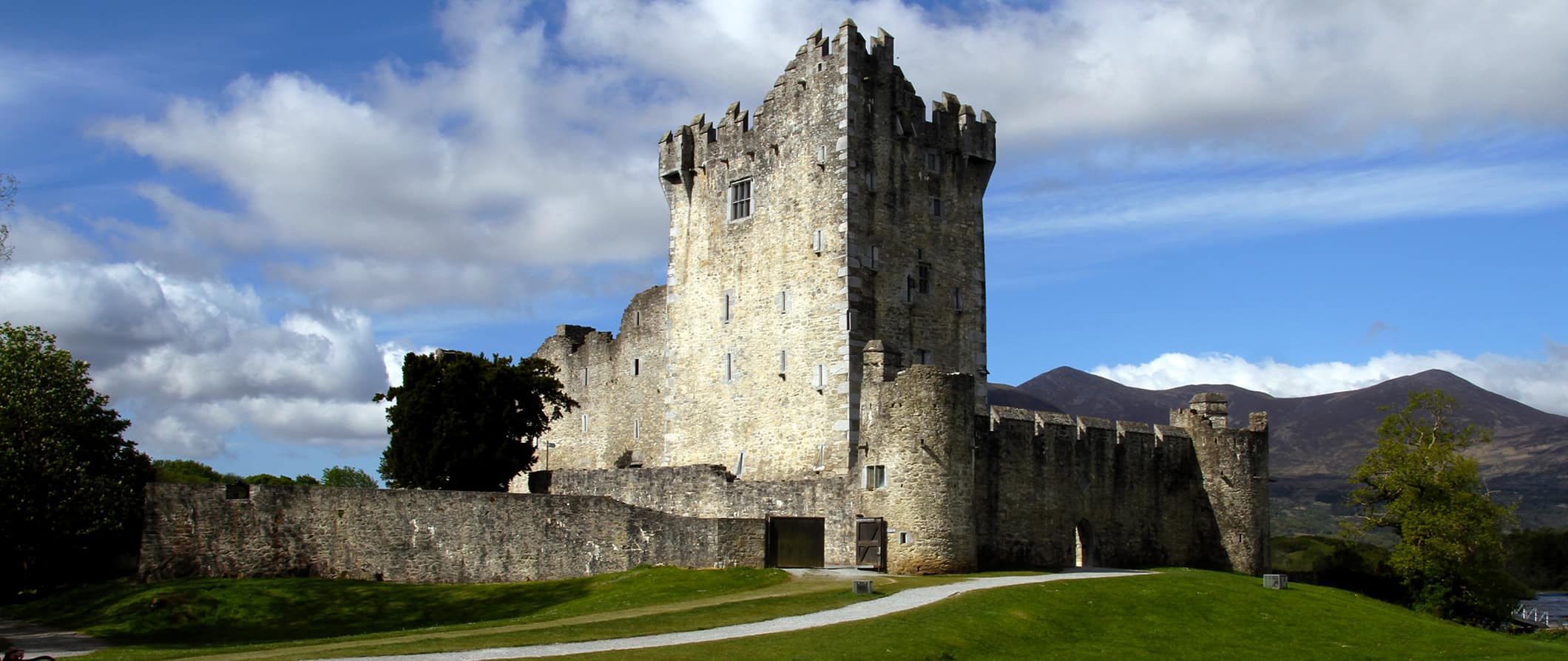
I love backpacking around Ireland for the rolling green hills, historic castles, beautiful seaside landscapes, and all the Guinness and Jameson you can drink. The Emerald Isle is an enchanting postcard-perfect destination with tons to see and do whether you’re in the Dublin for a long weekend or plan to spend several weeks backpacking across the country.
While millions of people visit Ireland each year, most of them stick to Dublin , see the main sights, drink a few pints, and head on their way.
But there is so much more to traveling here — especially if you have time to rent a car and get off the beaten path. Ireland is the perfect road trip country. Seriously. Drive around! And make plenty of stops along the way. You’ll find cool little towns and tons of ruins and castles, some of which are rumored to be haunted.
Anyone who has spent time in Ireland will agree that it’s a magical land full of wonder, history, nature and plenty of post-travel tales. No one ever leaves Ireland unhappy.
This Ireland travel guide can help you make the most out of your time on the Emerald Isle and ensure you have fun without breaking the bank.
Table of Contents
- Things to See and Do
- How to Stay Safe
- Where to Stay
- Typical Costs
- Suggested Budget
- Money-Saving Tips
- How to Get Around
- Best Places to Book Your Trip
- Related Blogs on Ireland
Click Here for City Guides
Top 5 things to see and do in ireland.

1. Have fun in Dublin
Dublin is synonymous with fun. The capital of the Republic of Ireland and its largest city, Dublin offers so much to explore . The city’s 18th century Georgian architecture is some of the best in Europe. Take a walk through history with a visit to Dublin Castle, be awe-struck by St. Patrick’s Cathedral’s medieval architecture, which was completed in 1260, tour Trinity College for a look inside one of Europe’s oldest and most prestigious educational institutions and while you’re there check out the iconic Book of Kells (an illuminated manuscript) from 800 CE. Literature lovers can stroll around the city on a self-guided literary tour. Fans of Ireland’s most famous export (Guinness) will find no shortage of pubs that claim to pour the city’s best pint but go directly to the source with a tour of the Guinness Storehouse (admission starts at 20 EUR). At night there’s bountiful live music in small pubs or larger clubs, one of the many ways to experience Irish “craic,” the nation’s word for that fun feeling you have with friends.
2. Admire the Cliffs of Moher
The Cliffs of Moher stretch for 8 kilometers (5 miles) along the Atlantic coast in County Clare. They offer some of the most incredible views in all of Ireland. On a clear day you can see as far as Aran Islands in one direction, and Galway Bay in the other. The cliff’s name comes from the Gaelic word Mothar which means “ruins of a fort” and O’Brien’s tower, which now sits atop the cliffs, was constructed using the original fort’s stone in 1835. The cliffs reach a height of 214 meters (702 feet) and are home to a wide variety of birds. If you visit in late spring, you’ll probably see a colony of colorful puffins. Save this activity for a sunny day because there isn’t much to see when the cliffs are shrouded in Ireland’s famous mist. Admission is 12 EUR, but you can save if you book online. If you’re short on time, take a day tour (they usually have a few stops, including Galway). Coming from Galway, it’s about a 90-minute drive. From Dublin, it’s more than three hours by car or bus.
3. See the Giant’s Causeway
Cross the border into Northern Ireland to visit the famous Giant’s Causeway , a natural geological phenomenon composed of over 40,000 basalt pillars that look like a staircase for giants. They formed between 50 and 60 million years ago during the Paleocene Epoch due to intense volcanic activity in the area. The tallest of the columns are around 12 meters (39 feet) high and 28 meters (92 feet) thick. The name is also said to have come from an Irish legend where a giant named Finn McCool created a path across the Irish Sea face down his arch enemy, the Scottish giant Benandonner. The pillars are a UNESCO World Heritage Site and named one of the top four natural wonders in The United Kingdom. It’s a protected nature reserve, however you can walk across the rocks using one of the four marked trails. Maps are available at the visitor center. Admission is free, but if you arrive by car you need to pay for parking, though it includes a guided tour.
4. Drive along the Ring of Kerry
This is one of the most well-trodden tourist trails in Ireland for a reason. Stretching almost 200 kilometers (125 miles), the Ring of Kerry is a scenic route that loops around the Iveragh Peninsula on the west coast of Ireland. It’s the ultimate Irish road trip along winding coastal roads, lush green pastures, and rolling hills. You’ll pass by lakes, small mountains, historical forts, and an ancient druid stone circle. Stop for a few of the highlights along the route. Ross Castle, built in the 15th century is open to guided tours. Lough Leane consists of a series of small lakes surrounded by dense forest and ancient castle ruins scattered in the area. You could spend the whole day in Killarney National Park with its lakes, walking trails and waterfalls. Staigue stone fort is a circular stone ruin likely built in the Iron Age. Driving the entire route takes 3.5 to 4 hours nonstop, but plan for an all-day adventure with stops. If you don’t have a vehicle you can take a day tour from Killarney . And if you want to challenge yourself, trek the 215-kilometer (135-mile) Kerry Way on foot!
5. Wander Galway
Galway is a hub for students and musicians and has a younger vibe to it. There’s a lively nightlife scene here and tons of buskers in the Latin Quarter. It’s one of the best places in Ireland to see live music. During the summer months, this seaside city on the west coast of Ireland is a popular place for swimming. Head to Salthill Beaches on Galway Bay for soft sand. Here you’ll also find a gorgeous waterfront walkway called the Salthill Promenade where you can take in the local pace of life. Further north is Silverstrand Beach that’s famous for rocky cliffs and shallow waters along the pebble beach. Galway Cathedral is the youngest of Europe’s great stone cathedrals and is full of unique religious art. There’s also a mosaic of US President John F. Kennedy. Don’t skip this city!
Other Things to See and Do in Ireland
1. spend time in cork.
Cork is a buzzing city nestled on Ireland’s southern coast. Originally a maritime hub, Cork is now a cosmopolitan university city filled with cheap eats and a lively nightlife. Head to the English Market in the morning for baked goods or fresh produce – it’s one of the oldest covered markets in Europe. Join the hundreds of thousands of people that come here each year to kiss the Blarney Stone for good luck. There’s plenty of opportunity to hike around Gougane Barra, and to enjoy the coastal landscape around Mizen Head where you’ll find a suspension bridge with views of towering cliffs and the Atlantic. Surfing and whale watching are also popular here as minke whales, fin whales, and humpback whales are commonly seen along the coast (expect to pay around 40 EUR for a whale watching tour ).
2. Party on St. Patrick’s Day
St. Patrick is Ireland’s patron saint. As the legend goes, he drove all the snakes out of the country. Whether you believe the legend or not, this is the biggest party of the year in which everyone is Irish. The biggest parade takes place in Dublin. It’s one of the biggest parties in the world so be sure to book your stay in advance as everything sells out quickly!
3. Kiss the Blarney Stone
Blarney Castle sits just outside Cork. Built in the 15th century, visitors flock here to see the Stone of Eloquence, commonly called the Blarney Stone, which is made of Carboniferous limestone and is built into the castle itself. There are a number of legends about the stone and its power. Some tales say it came to Ireland after the Crusades. Others say the stone’s powers began when the stone absorbed the magical tears of a fairy queen who was mourning the loss of her love. Regardless of its origin, the stone has been a destination for more than 200 years for those seeking the stone’s luck. Famous visitors include Mick Jagger, Winston Churchill, Sir Walter Scott, and many more. The stone was set in 1446 and it is said to bestow eloquence on all those who kiss it (“blarney” has come to mean “flattering speech”). Expect a long line during summer months or other peak travel times. Admission is 22.
4. See historic castles
Ireland is steeped in history and the entire country is covered in castles (there are some 30,000 castles and castle ruins here). For fans of ruins, don’t miss the crumbling charm of Dunluce Castle or the majestic half-standing Rock of Cashel with soaring archways. The impeccably preserved Cahir Castle in Tipperary is also one of the largest. If it’s within your budget, attend a medieval banquet at the Bunratty Castle in Clare or book a room at the beautifully restored Ashford Castle in County Mayo. If you’re just on a quick trip to Dublin, take the 30-minute train outside the city to Malahide Castle. If you plan on visiting a lot of castles, get the Heritage Card. It’s 40 EUR and provides free entry into tons of Ireland’s castles and will save you a ton.
5. Hike in Connemara
This national park in County Galway covers more than 30 square kilometers (12 square miles), offering scenic views and excellent hiking. Most people come here for hiking and forest bike riding, though there are a few castles within the park as well as an old mining area and a heritage and history center. There are also tons of wildlife to spot, such as rabbits, foxes, stoats, hawks, falcons, and herds of Connemara ponies. There are several trails that range from short loops on flat land, to more strenuous mixed-terrain paths that offer elevated views. Admission is free and day tours are available . There are no campsites, but wild camping is allowed – just come prepared with all the necessary gear.
6. Wander the John F. Kennedy Arboretum
Located in County Wexford 30 minutes west of Waterford, this garden is home to over 4,500 species of trees and shrubs. You’ll find 200 different forest plots throughout the arboretum, each of them grouped by the continent where the plants originated. There’s even a garden with more than 500 different varieties of rhododendrons. There are several tea rooms, a visitors’ center, and a picnic area here too. The arboretum gets its name from the fact that JFK’s great-grandfather was born nearby, and the President visited in 1963. The arboretum opened five years later in his honor, paid for by donations from Irish Americans. Admission is free.
7. Explore the Aran Islands
Located in Galway Bay, only 1,200 people call these islands home. Here, Irish is the primary language (though many also speak English). You can get around by bus, bike, or carriage as you see the various heritage sights, ruins, castles, and scenic landscapes. Tobar Einne and O’Brien’s Castle are two of the most popular attractions. On Inis More (Inishmore) you can visit Dun Aengus, a Bronze Age and Iron Age fort hugging the coast, and the Seven Churches ruins featuring a large complex of partially-preserved structures and graveyards with traditional Irish Cross stones. Inis Mor is the largest of the islands and the most accessible. You can take a bus from Galway and hop on the ferry from Rossaveal (35 EUR).
8. Go back in time at Ulster Museum
Head into Northern Ireland for a day trip and visit the Ulster Museum. It has a vast and diverse collection of all kinds of artifacts and artwork, ranging from rare paintings, archeology and local history to wildlife and dinosaurs to relics from the Spanish Armada and Egyptian mummies. The art galleries are filled with works from Irish artists of various mediums like glasswork, ceramics, painting, metalwork, and more. Historical artifacts span from the Stone Age to the modern era. In the Natural Science exhibitions, you’ll find educational displays all about the island’s nature. There are various interactive discovery areas in that bring art, history, and nature to life for visitors of all ages. The museum is located within a large botanical garden. It’s the biggest museum in Northern Ireland. Admission is free. You can reach Belfast from Dublin in less than two hours by car.
9. See Newgrange
Located 45 minutes north of Dublin by car, Newgrange is a prehistoric burial mound that dates back over 5,200 years (which makes it older than both Stonehenge and the Great Pyramids). Human remains, as well as other artifacts, were found in the massive tomb, which is composed of a ring of stone topped by earth. Inside are several burial chambers and passageways. Every year on the Winter Solstice, a beam of light streams down the perfectly aligned entrance passage to illuminate the interior chamber. Admission is 18 EUR.
10. Visit Killarney
Killarney is one of Ireland’s most popular tourist destinations thanks to its undeniable medieval charm. Located in the southwest of the country, you can visit Muckross Abbey (a 15th-century Franciscan friary on rolling green hills inside Killarney National Park), Ross Castle (which also dates to the 15th century), or wander around the town itself, which looks like a quaint village with small shops and colorful buildings. Some of the other best things to do in Killarney include renting a bike to cycle around Killarney National Park or relaxing at one of the nearby lakes. This is also the traditional starting point for exploring the Ring of Kerry.
11. Learn about (and sample some) whiskey
If you’re a whiskey fan, take a tour of the Jameson Distillery in Cork and see how Irish whiskey is made. Jameson is one of the oldest whiskey companies in Ireland and is the best-selling Irish whiskey in the world. On a tour, you’ll visit the main buildings and learn how their whiskey is made, what sets Irish whiskey apart from other types, and how the company got started as a small family distillery. There are several different tours, but the Jameson Distillery Experience tour is the best value at 26 EUR. It’s 75-minutes and includes a whiskey sample
For more information on specific cities in Ireland, check out these guides:
- Cork Travel Guide
- Dublin Travel Guide
- Galway Travel Guide
How to Stay Safe in Ireland
Ireland is very safe and the risk of experiencing violent crime here is low. That said, scams and pick-pocketing can occur in high-traffic areas, especially around tourist attractions like Temple Bar in Dublin. Always keep your valuables secure and out of reach just to be safe.
If you rent a car, don’t leave valuables inside the vehicle overnight. Break-ins are rare but it’s always better to be safe than sorry.
Be alert when driving, especially on twisty country roads or roundabouts (traffic circles). Most roads are paved and well-maintained, but if you are used to driving on the other side (they drive on the left in Ireland) a steep curve may surprise you.
Solo female travelers should generally feel safe here, however, the standard precautions apply (never leave your drink unattended at the bar, don’t walk home alone intoxicated, or venture into unknown areas after dark, etc.). For specific tips about a place, use one of the many solo female travel blogs on the web as they’ll be able to provide better advice than I can.
When camping, understand designated sites from wild spots. Wild camping is generally accepted, but keep in mind that much of the remote land you see is probably private property. Camp sites are well kept, but when opting for parks or remote areas, you may not have cell service.
Scams here are rare, but if you’re worried about getting ripped off you can read about common travel scams to avoid here .
If you do experience an emergency, dial 112 or 999 for assistance.
The most important piece of advice I can offer is to purchase quality travel insurance. Travel insurance will protect you against illness, injury, theft, and cancellations. It’s comprehensive protection in case anything goes wrong. I never go on a trip without it as I’ve had to use it many times in the past. You can use the widget below to find the policy right for you:
Where to Stay in Ireland
Ireland has plenty of fun, social hostels as well as good budget hotels. Here are some my suggested places to stay if you’re on a budget (for even longer lists, see the city guides):
- The Hideout Hostel (Dingle)
- Generator Hostel (Dublin)
- Jacobs Inn (Dublin)
- Galway City Hostel (Galway)
- The Nest Boutique Hostel (Galway)
- Sheila’s Cork Hostel (Cork)
- An Oige Youth Hostel (Killarney)
Ireland Travel Costs
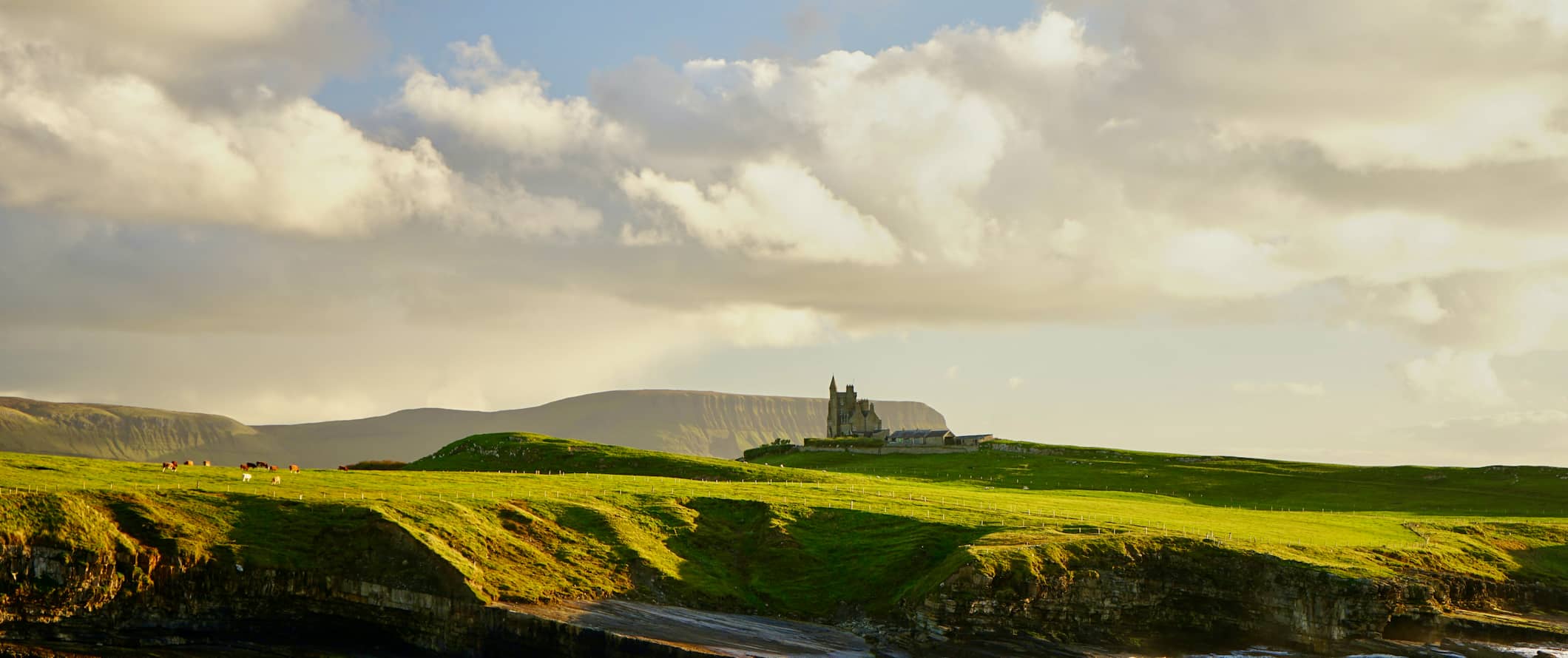
Accommodation
- Hostel dorms – 28-40 EUR per night
- Hostel private rooms – 85-120 EUR per night
- Budget hotels – 95-130 EUR per night
- Airbnb private rooms – 45 EUR per night
- Airbnb apartments – 100 EUR per night
- Campsite – 20-30 EUR per night
- Sit-down restaurants – 15-35 EUR
- Casual take-out places – 10-17 EUR
- Fast food (think McDonald’s) – 10 EUR
- Beer – 5-7 EUR
- Cappuccino/latte – 3.50-4 EUR
- Bottled water – 1.50-2 EUR
- Groceries for a week – 40-60 EUR
Ireland Suggested Budgets
Backpacker – 75 eur per day.
On a backpacking budget, you can stay in a hostel dorm, cook all your meals, limit your drinking, take public transportation, and do free and cheap activities like free walking tours or visiting castles. If you plan on drinking, add 5-15 EUR per day to your budget.
Midrange – 180 EUR Per Day
On a midrange budget, you can stay in a private hostel room or Airbnb room. You’ll be able to eat out for most meals at cheap fast-food places, enjoy a couple of drinks at the pub, take the occasional taxi, and do more paid activities like visiting the Cliffs of Moher.
Upscale – 270 EUR Per Day
On a “luxury” budget, you can stay in a hotel, eat out anywhere you want, drink more, rent a car for day trips, and do as many tours and excursions as you want. This is just the ground floor for luxury, though!
Ireland Travel Guide: Money-Saving Tips
It’s easy to break the bank in Ireland as all those pub visits can add up fast. To help you save without sacrificing your trip, here are some money-saving tips for Ireland:
Bring a water bottle – The tap water here is safe to drink so bring a reusable water bottle to save money and reduce your plastic use. LifeStraw is my go-to brand as their bottles have built-in filters to ensure your water is always clean and safe.
Ask for student discounts – A valid student ID can get you discounts of up to 50% on many attractions, museums, and buses throughout the country. If you have a valid student ID, always ask for discounts. Take note, these discounts most often apply to anyone under 26 with a student ID.
Drink less – Ireland’s strong pub culture can hit your wallet hard. Temper the cost by visiting happy hours, drinking at home, or skipping drinks altogether.
Eat the pub food – Eat at the pubs for hearty local Irish food that won’t destroy your wallet. It’s not healthy, but it’s affordable.
Redeem hotel points – When you sign up for hotel credit cards, you can use those points when you travel. Most of them come with at least 1-2 nights free, which can save you a lot of money. This post will help you understand the basics so you can get started now and have plenty for your trip.
Get an OPW Heritage Card – If you love to tour heritage sites, pick up this card. It provides free access to most of the castles throughout the country. The card is 40 EUR.
Stay with a local – Couchsurfing connects you with locals who can give you a free place and show you around their city. You not only get to save money but you make a new friend in the process!
Get the Leap Card – The Leap Card saves you up to 30% on Bus Éireann travel around the country. You can buy a card online and at shops throughout Ireland.
Eat early – Many restaurants have budget dinner options if you eat early (usually before 6pm). You won’t have as much variety since it’s a set menu, but it will be much cheaper!
Cook your meals – Staying in a hostel will help you make new travel buddies, and they’ll likely have a kitchen. The biggest grocery chain is Tesco, which has large super stores and smaller city shops for basics. Don’t snooze on Aldi or Lidl. These discount grocers carry everything you’d need for a meal, and have aisles with deeply-discounted merch.
Take free walking tour – Some of the bigger cities in Ireland (like Dublin and Galway) have free walking tours available. They’re the best way to see the main highlights on a budget. Just remember to tip your guide at the end!
How to Get Around in Ireland
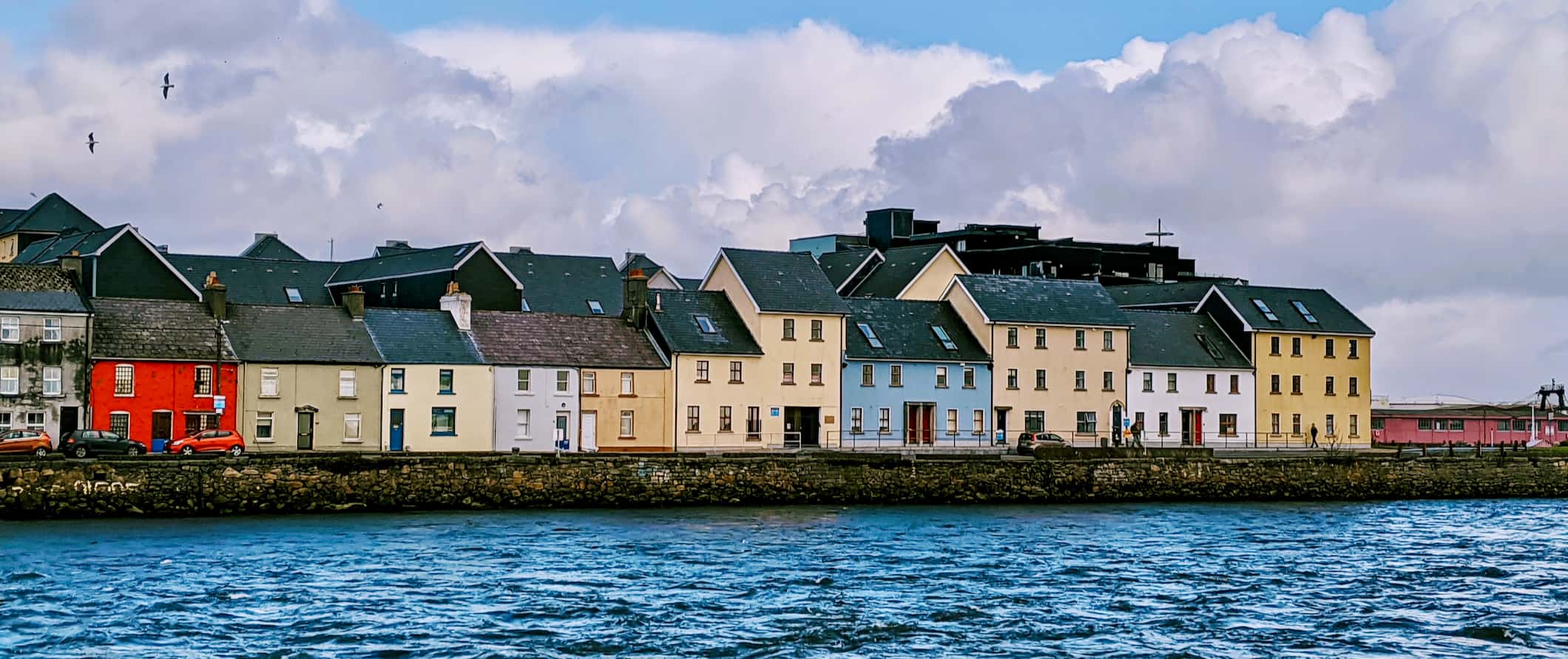
Public transportation – Public transportation in Ireland is clean, safe, and reliable. Bus trips around Dublin cost about 3 EUR while Galway tickets are 2.20 EUR and tickets in Belfast are 2.30 GBP if you head into Northern Ireland.
With a LEAP card (a card you can top up to use on the country’s public transportation), you can use all public transportation options for reduced prices (up to 31% off compared to cash tickets). You can even use it for DublinBikes self-service bicycle rentals.
A day pass on public transportation costs 5-10 EUR.
Bus – Ireland is a small island so you won’t find too many routes that are longer than a few hours. That means that prices are pretty reasonable. The 2.5-hour trip from Dublin to Belfast in Northern Ireland costs around 10 EUR. A bus from Dublin to Galway takes about 2.5 hours and costs between 15-20 EUR.
Bus Éireann is the main coach service, while Translink serves the North (and includes Ulsterbus and Goldline). You can search their website for the best deals and for route schedules. If you book early, you’ll get the lowest ticket prices.
There’s a really handy journey planning website that can help you plan your route (but you can’t buy tickets there).
To find bus routes and prices, use BusBud .
Train – Irish Rail is the main train service provider in Ireland. While the train is more expensive than the bus, it’s still quite affordable. Cork to Dublin takes around 2.5 hours and costs 35-47 EUR while Galway to Dublin costs 30-35 EUR and takes about the same amount of time.
Bus & train passes – Ireland has several rail and bus passes that might make sense for you depending on your itinerary and budget:
- Irish Explorer – Five days of unlimited Irish Rail travel within 15 consecutive days for 128 EUR.
- Sunday Day Tracker – This deal is for one day of unlimited travel (Sundays only) on Translink buses and trains in the North. It costs 3.50 EUR
- Trekker Four Day – Unlimited travel on Irish Rail within a four-day period for 88 EUR.
Car Rental – Renting a car in Ireland is affordable, with prices starting around 25 EUR per day for a multi-day rental. Renting a car is the best way to get around the country too. Renters need to be at least 21 years old. Just keep in mind that most rentals are manuals and that they drive on the left.
For the best rental car deals, use Discover Cars . You can get a free quote using this widget:
Hitchhiking – Hitchhiking in Ireland is very safe, and it’s not uncommon to spot backpackers on the side of the road. It can be difficult in the countryside where there is minimal traffic. It is not often easy to get a ride, but it’s also not impossible. Hitchwiki is the best website for additional hitchhiking info. Always take normal precautions when grabbing a ride.
When to Go to Ireland
Ireland’s temperate climate makes it a pleasant destination to visit year-round, keeping in mind that you’re guaranteed to encounter rain no matter when you visit.
The summer months (June-August) are the warmest and the sunniest so this is when the country is at its liveliest. Keep in mind that this is peak season so you’ll compete for accommodation in the larger cities. And lines will be longer for attractions like museums or castles. Prices are a little inflated too. Average temperatures hover between 13-20°C (56-68°F) but can climb to 25°C (77°F) or more. Be warned, if you go for a swim at one of the beaches, the water will be cold. Ocean temperatures won’t be over 18°C (65°F) on a warm day! They’ll likely be a little cooler. The evenings cool off, so you’ll want to pack warm layers. Though this is the driest time of year, there are still 8-12 days of rain every month so bring your rain gear too.
Winters can be drizzly with short daylight hours, but temperatures rarely fall below freezing. Dress warmly and be prepared for lots of indoor activities if you visit during this time. These are the rainiest months of the year with 11-16 days of rain, so pack accordingly. If you visit around Christmas, the festive lights and Christmas markets make for a warmer atmosphere. The pubs will be more celebratory, too.
Saint Patrick’s Day in March is huge all around the country. During this time, hostels and hotels fill up quickly, and prices spike. Temperatures are still mild and Ireland is just as beautiful as ever but you’ll need to book your accommodation in advance. High temperatures across the island are around 10° C (50°F) in March, and there are nine or more days of rain, so bring layers that will keep you warm and dry.
Overall, the shoulder seasons (March-May and September-October) are my favorite times to visit. Aside from St. Patrick’s Day, you’ll find prices to be a little lower and the country to be less busy. The weather is decent enough for exploring too. Average highs range from 10-17°C (50-63°F) and even cooler at night, so pack for cool temperatures. Make sure you also bring an umbrella since there are 8-14 days of rain every month during these seasons! September is an especially fun time to see Ireland. The weather is still warm-ish but the larger crowds, especially those traveling with children, have cleared out. You might feel like you’re the only tourist at a castle or on a hike.
Ireland Travel Guide: The Best Booking Resources
These are my favorite companies to use when I travel. They consistently have the best deals, offer world-class customer service and great value, and overall, are better than their competitors. They are the companies I use the most and are always the starting point in my search for travel deals.
- Skyscanner – Skyscanner is my favorite flight search engine. They search small websites and budget airlines that larger search sites tend to miss. They are hands down the number one place to start.
- Hostelworld – This is the best hostel accommodation site out there with the largest inventory, best search interface, and widest availability.
- Booking.com – The best all around booking site that constantly provides the cheapest and lowest rates. They have the widest selection of budget accommodation. In all my tests, they’ve always had the cheapest rates out of all the booking websites.
- HostelPass – This new card gives you up to 20% off hostels throughout Europe. It’s a great way to save money. They’re constantly adding new hostels too. I’ve always wanted something like this and glad it finallt exists.
- Get Your Guide – Get Your Guide is a huge online marketplace for tours and excursions. They have tons of tour options available in cities all around the world, including everything from cooking classes, walking tours, street art lessons, and more!
- The Man in Seat 61 – This website is the ultimate guide to train travel anywhere in the world. They have the most comprehensive information on routes, times, prices, and train conditions. If you are planning a long train journey or some epic train trip, consult this site.
- Rome2Rio – This website allows you to see how to get from point A to point B the best and cheapest way possible. It will give you all the bus, train, plane, or boat routes that can get you there as well as how much they cost.
- FlixBus – Flixbus has routes between 20 European countries with prices starting as low 5 EUR! Their buses include WiFi, electrical outlets, a free checked bag.
- SafetyWing – Safety Wing offers convenient and affordable plans tailored to digital nomads and long-term travelers. They have cheap monthly plans, great customer service, and an easy-to-use claims process that makes it perfect for those on the road.
- LifeStraw – My go-to company for reusable water bottles with built-in filters so you can ensure your drinking water is always clean and safe.
- Unbound Merino – They make lightweight, durable, easy-to-clean travel clothing.
- Top Travel Credit Cards – Points are the best way to cut down travel expenses. Here’s my favorite point earning credit cards so you can get free travel!
GO DEEPER: Nomadic Matt’s In-Depth Budget Guide to Europe!

There’s a lot of free information online but do you want to spend days searching for information? Prob not! That’s why guidebooks exist.
While I have a lot of free tips on Europe, I also wrote an entire book that goes into great detail on everything you need to plan a trip here on a budget! You’ll get suggested itineraries, budgets, even more ways to save money, my favorite restaurants, prices, practical information (i.e. phone numbers, websites, prices, safety advice, etc etc), and cultural tips.
I’ll give the insider view of Europe that I got from years of traveling and living here! The downloadable guide can be used on your Kindle, iPad, phone, or computer so you can have it with you when you go. Click here to learn more about my book on Europe!
Ireland Travel Guide: Related Articles
Want more tips for your trip? Check out all the articles I’ve written on Ireland travel and continue planning your trip:
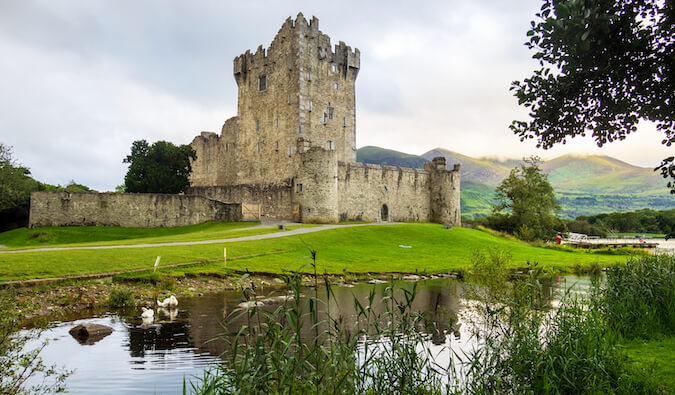
The Best Tour Companies in Ireland
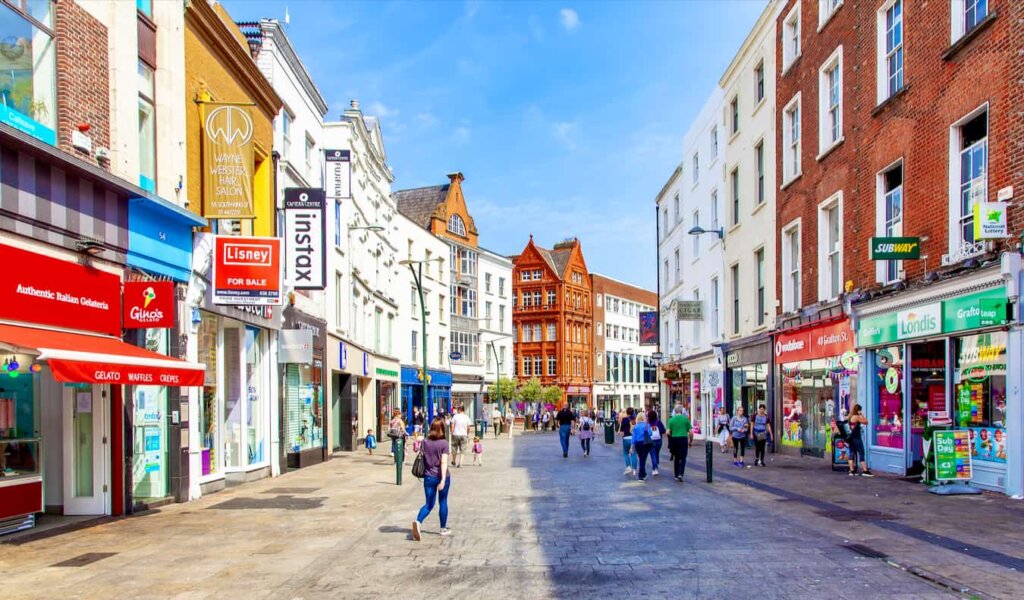
The 5 Best Hostels in Dublin
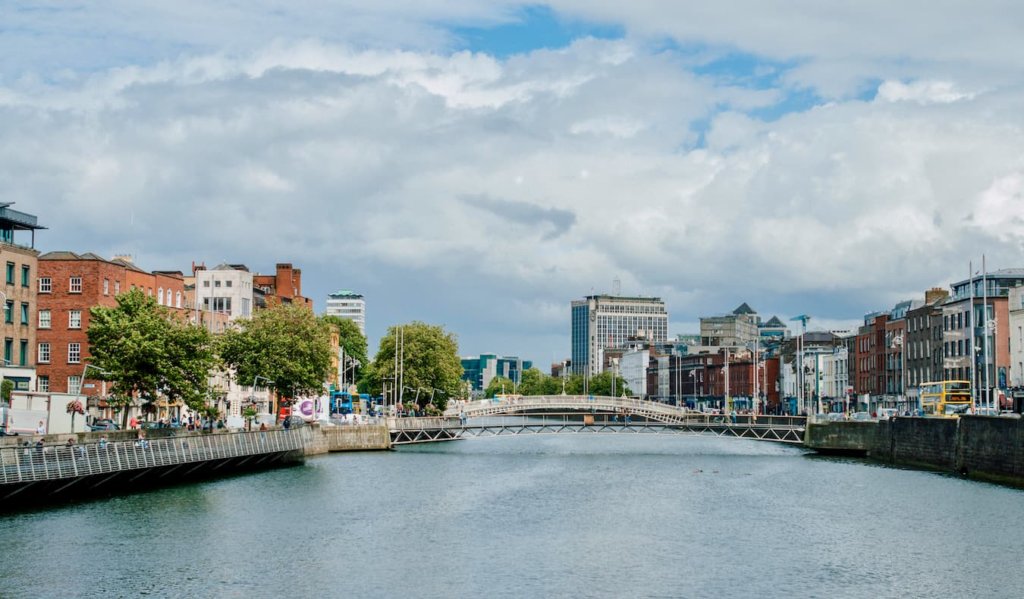
Where to Stay in Dublin: The Best Neighborhoods for Your Visit
Get your free travel starter kit.
Enter your email and get planning cheatsheets including a step by step checklist, packing list, tips cheat sheet, and more so you can plan like a pro!

- Where To Stay
- Transportation
- Booking Resources
- Related Blogs
How to see more of Ireland on a budget
Mar 31, 2024 • 6 min read

Read on for expert tips to make your money go further in Ireland © davidf / Getty Images
By most European standards, Ireland can be quite expensive. Accommodation and food are generally priced at the upper end of the scale, which means a sizeable daily budget is needed.
However, there are plenty of ways to make your money go further during your visit to Ireland, and if you are travelling on a tight-ish budget, I have a host of cost-saving tips that will help you enjoy the best of what the country has to offer without missing out on the very best experiences.
Here’s a few tips that will help stretch your budget while visiting Ireland.
Daily Costs
- Hostel room: €40-€70 (€50-€120 in Dublin)
- Basic room for two: €80-€100 (€100-€150 in Dublin)
- Self-catering apartments (including Airbnb): €150-€250
- Public transport ticket: €3.60
- Coffee: €3-€5
- Sandwich: €4-€8
- Dinner for two: €150
- Beer/pint at the bar: €6-€9
- Average daily cost: €150- € 250

Know the cheapest time to go to Ireland
Peak season – May and August – is the most expensive time to visit, so you can make considerable savings travelling to Ireland outside of those months. Winter (except for Christmas) is when flight costs and accommodation rates are at their lowest, but you’ll likely encounter the worst weather and a lot of seasonal closures, especially along the west coast.
The ideal time to visit is during the shoulder season, especially in autumn (spring has St Patrick’s Day and Easter, which are typically busy and popular), when the crowds have dwindled, prices drop (especially for accommodation) and the weather can be surprisingly good.
Check the cheapest way to get there
Ireland is an island, so the vast majority of arrivals come by air. Dublin is the most popular arrival point, but if you’re coming from North America, flights into Shannon Airport are usually cheaper. For arrivals from Europe, Irish-based Ryanair is Europe’s largest airline, with dozens of cheap flights into Dublin and Cork from most major European cities. Cheaper still is the ferry. There are ferry ports in Dublin, Rosslare and Belfast , serving arrivals from the UK , France and Spain . A typical Sail & Rail ticket between London and Dublin can cost as little as €20.

Public transport is a good option to get around
Ireland has a pretty extensive network of public and private buses that are the most affordable way to travel. Transport for Ireland is a handy route planner for all public transport services across the country, including buses; in rural areas, Local Link services are a convenient way of exploring the local surroundings.
How to save money on attractions
Many attractions offer discounted rates if you buy tickets online in advance. You can also buy visitor passes that include entry to a number of attractions, such as the Dublin Pass. The Heritage Card includes free entry to all Office of Public Works–managed sites; it can be a good deal depending on how many spots you plan to visit.
There’s free entry to the four museums that make up the National Museum of Ireland (three branches in Dublin and one, the Museum of Country Life , in County Mayo), the National Gallery in Dublin, the Crawford Art Gallery in Cork and the Ulster Museum in Belfast.
Where to find good, cheap eats
In bigger towns and cities with a large working population, many restaurants offer lunch deals that usually include a starter and a main course; a lot of Asian restaurants serve bento boxes as part of their lunch deals. Many restaurants also provide early bird menus that usually run between 5pm and 7pm; the menu is more limited but can offer considerable savings compared to the standard evening a la carte menu.
Early Table is an excellent online service that allows you to book an early sitting in restaurants across the country. You need to buy credit with them but the savings are considerable, usually up to 50% of the regular price of the meal.

How to get good value accommodation in Ireland
Accommodation will likely be the heftiest part of your travel budget. However, as many hotels use booking engines that operate dynamic pricing (which means rates go up and down depending on demand), early booking can often result in some very good deals. Calling a hotel directly – especially at the last minute – can also result in getting a better price than the one quoted on a website.
The traditional B&B was long the backbone of the Irish accommodation industry, and while many have been superseded by a glut of midrange hotels, they still offer surprisingly good value for money – with a home-cooked breakfast thrown in for good measure. Another option for savings on accommodation is to travel in the off-season, when rates are typically lower.
Find out where to join a free walking tour in Ireland
There are a handful of free walking tours that only expect a tip. Yellow Umbrella Tours operates free, thematic tours in Belfast, Cork, Dublin and Galway. Sandemans offers free tours across many European cities including Dublin, where it has a standard walking tour as well as an evening haunted tour, which explores the darker stories of the capital.

The best entertainment in Ireland for the price of a drink is...
Irish traditional music is Western Europe’s most vibrant and dynamic folk music. It is played all over the country, mostly in traditional pub "sessions", where many of the world’s very best players in the genre will showcase their remarkable skills…at no cost to the public. All you need to do is show up, buy a drink and settle in to enjoy.
How to visit heritage sites for free
Unless you invest in a Heritage Card, visiting OPW (Office of Public Works; the government agency that manages Ireland’s heritage sites) attractions can add up. However, try to time your visit for the first Wednesday of the month, when a large number of sites waive their entry charges as part of Free Wednesday .
How to ride the train for cheap in Ireland
In Northern Ireland, the Sunday Fun Day Tracker ticket gives passengers unlimited train travel on a Sunday for £9 (£4.50 for children). Tickets are available from all ticket offices, the mlink ticketing app and from the train conductor.

Take advantage of the transport fare cap
If you’re planning to explore the region surrounding Dublin, you will save money by using public transport, which has instituted a fare cap on travel to some of the region’s commuter towns across counties Kildare, Meath and Louth. Standard single fares to/ from Dublin to a host of towns is fixed at €6.
Invest in a Leap card for public transport in Dublin
If you're going to use public transport in Dublin, be sure to get a Leap card – a tap on, tap off card (similar to London’s Oyster Card) – which reduces fares by around 10% compared to cash and eliminates the hassle of having to provide exact change when buying a ticket. Leap cards can be bought in most convenience stores. Topping up is a cinch: you can do it at train stations, Luas stops and at all convenience stores that sell them. You can also download the Leap top-up app for NFC-enabled iPhone 7 (or above) and Android phones. You then hold the card to the back of the phone and it’ll display your balance and options to add value.
Keep planning the trip of a lifetime in Ireland:
- Start that Ireland bucketlist with our list of the top things to do .
- Have wheels, will travel: here are the best road trips to tackle in Ireland.
- Get outside and into the great outdoors in Ireland with these top walks .
- Read on for when's the best time to go to Ireland.
- Get off the beaten track with this guide to where locals holiday in Ireland.
Explore related stories

Budget Travel
Jul 31, 2024 • 5 min read
Terrified of local tipping customs in Europe? Fear not. Follow our guide for the social norms on gratuity across the continent.
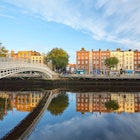
Apr 2, 2024 • 9 min read

Jan 6, 2024 • 7 min read

Jan 1, 2024 • 10 min read

Aug 25, 2023 • 6 min read

Jul 26, 2023 • 6 min read

Jun 26, 2023 • 5 min read

Jun 19, 2023 • 7 min read

May 24, 2023 • 4 min read

Dec 1, 2022 • 7 min read

How to Travel Ireland on a Budget
Ireland can be an expensive destination to visit. After the Euro was introduced, prices for both locals and visitors soared and they have remained high in many aspects for both daily life and tourism. However, it doesn’t mean you have to put off visiting the Emerald Isle. In this post, I’m sharing some tips on how to travel Ireland on a budget .
By Rental Car
Tips for keeping accommodation costs down in ireland.
*This post contains affiliate links, which may include Amazon affiliate links. To read more about affiliate links, please visit my Disclosure Policy page.
Visiting Ireland is something many people would like to do but they can often be put off by comments that it is an expensive country. Yes, it can be but there are ways to make it more affordable.
Whether you want to go to Ireland on a shoestring budget or you just want to be savvy when it comes to your expenses so you can splash out on that Aran jumper souvenir while you are there, this post is packed with lots of hints and tips to help you.
I’m going to show you how to plan a trip to Ireland on a budget, give you tips on where you can save money before you arrive, and also give you ideas on how you can watch the cents and euros while you are there.
From booking flights to car hire, accommodation and then excursions, these tips are aimed at helping you enjoy the Emerald Isle to the full without breaking the bank completely.
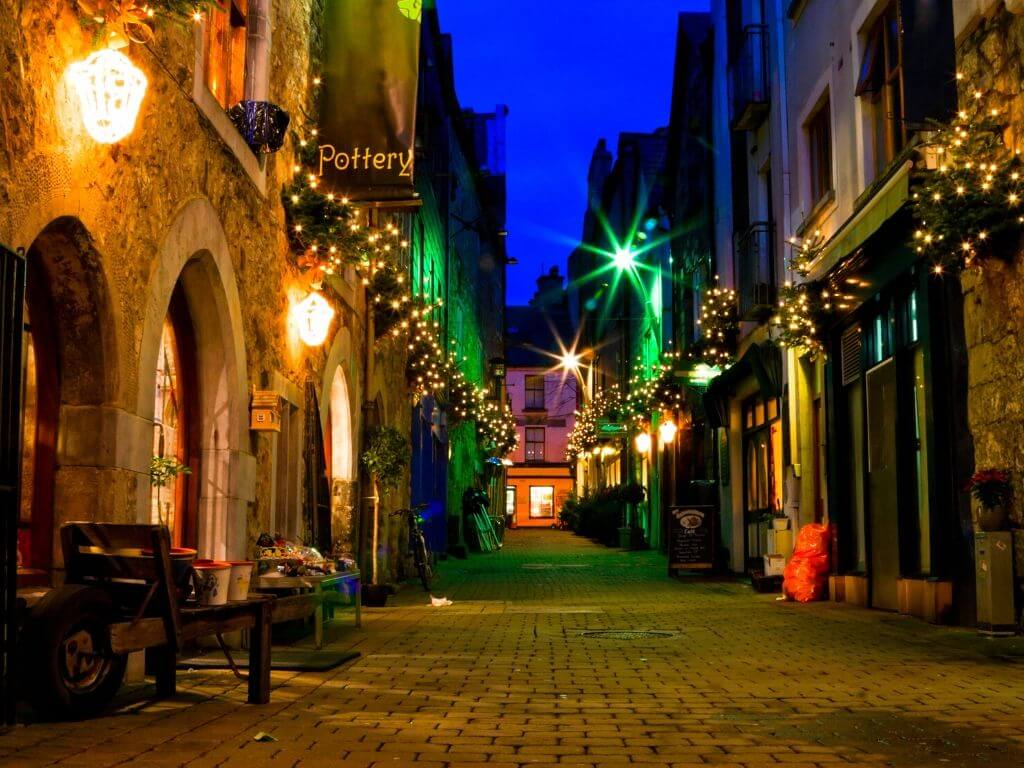
Getting to Ireland
One of the biggest parts of your Ireland travel budget will be getting to Ireland, particularly if you are travelling long haul, for instance from the United States. Unless you are coming from the UK or France, you will be arriving in Ireland by plane. And that means a flight.
However, there are a few ways to try and bag yourself the best possible airfare when it comes to flying to Ireland. The first thing you can do is sign up for airline newsletters. Most major airlines fly to Ireland, landing in Dublin, and you can get advanced warning of price drops and sales if you are on their mailing list.
I am signed up to Aer Lingus and get newsletters announcing forthcoming flight sales. It can be a great way to get ahead of the curve. Aer Lingus is the national airline of Ireland and can often be the most affordable way to reach Ireland, whether from the United States or within Europe.
If you are visiting Ireland from Europe, Ryanair is the budget airline of Ireland and sometimes you can get a great deal with them. Sign up for their newsletter to get advanced notice of their sales. Just be aware that you will pay for all your hold luggage and will need to avail of pre-check-in and will need to print your own boarding passes (or have them on the Ryanair app), or otherwise you will face hefty fees at the airport. If you can travel hand luggage only, then you could get a great deal and this could turn out to be the cheapest way to visit Ireland. They also fly from a wide range of airports within Europe and can be a great way to combine a visit to Ireland with another European destination.
If you are a regular flyer, then you could get a discounted airfare by cashing in some of your air miles. Book your ticket in advance and avail of those air miles and discounted fares to get the best deal.
Some credit cards can offer air miles and if you reach a certain threshold with your air miles, you can qualify for reduced or free companion airline tickets on the airline with which your credit card is associated. Just be aware that these often come with an annual fee and the available tickets may be limited.
You can also use Skyscanner to find the best price. Not only can you compare prices, you can also find the best route to suit your family’s needs, particularly if your nearest airport does not fly directly to Ireland. Should you need to make connections, you can decide how many to make depending on your budget and itinerary. Just be careful booking the cheapest airfares through third-party websites as sometimes you could have a long wait for your connecting flight to Ireland. So, if it seems too good to be true, investigate further.
Another thing you can do is check out both Travelocity and Expedia . These are among the most popular sites for checking out not only flights and accommodation (separately or together) but also car hire, packages and tickets for experiences/things to do. You can search by destination, dates and cost, great if you are trying to keep the cost to travel to Ireland as low as possible.
A great site for trying to bag a real bargain is Priceline . Not only do Priceline offer great deals, you can also become a VIP member which gives you access to even more discounts and deals, with more available as you move up the VIP tier system. They also have an app for both Android and iOS in which there are app-exclusive deals, often time-limited, allowing you to get a great deal on the go.
You used to be able to name-your-price on the website but this has been replaced by “Price Breakers”. With this, you see 3 hotels under one price bracket which has up to 50% off. You choose the set of three and you are guaranteed your booking in one of these hotels, the name of which you find out after you book. You can replace some hotel choices within the set of 3, but you cannot name your hotel.
With all of these third-party websites, it is hugely important that you read the fine print of the terms and conditions before booking. The discounted deals and prices may often be non-refundable, so read them first before making your final booking. The same goes for the cheapest prices direct with airlines. And double-check the connection times if you have a one- or two-stop flight to Ireland as sometimes you could have a long connection wait as mentioned already.

One way of reducing your costs is to make your trip during the cheapest times to visit Ireland . March and the summer months of June to September are the most expensive times to visit Ireland. The number of tourists visiting Ireland during these months increases significantly and with that comes an increase in prices for flights and accommodation. It is all down to supply and demand.
But, if your dates are flexible, you could visit during the shoulder seasons or even off-peak during winter, which is one of the best times to visit Ireland on a budget. Flight prices can be significantly less during the winter months and hotel prices often reduce (except around Christmas and New Year) with a reduction in demand from tourists. The days are shorter and colder but dressed appropriately, you can still have an amazing trip to the Emerald Isle.
Read my post about the best time to visit Ireland to decide when is right for you.
Getting around Ireland
The next thing to consider if travelling Ireland on a budget is transport once you are there. While it is possible to travel around Ireland cheap by using public transport, you will be limited to certain places, with out-of-the-way attractions and sights becoming much more difficult to visit via this method.
By Public Transport
If you are only visiting Dublin or combining it with a visit to another city, then travelling by public transport is certainly doable. Dublin has both rail and bus connections with many of the major cities in both Ireland and Northern Ireland, and within Dublin, there is a very good and far-reaching public transport system. In fact, it is much better to travel around Dublin by public transport by car because of the traffic, particularly during rush hours and on Saturdays.
In Dublin, it is possible to see all the sights via the sightseeing buses. The Dublin Pass gives you 24-hour transport on a sightseeing bus and also gives you free entry into many Dublin tourist attractions. It is available for 1, 2, 3 or 5 consecutive days.
You can also travel around Dublin by using the Visitor Leap Card . Similar to the Oyster card in London, this gives you unlimited travel over a selected period with all modes of public transport across the city including the DART, Luas, all bus routes and even the Airlink from the airport. It comes available for 24, 72 or 168 hours (1, 3 and 7 days). You can order it before your arrival to Dublin and have it posted to your home address so you can start using it as soon as you arrive. You can also buy it at the WHSmith and the bus and travel information desk in T1 arrivals, and Spar in T2 arrivals. The card can be topped up for an additional 1, 3 or 7 days up to a maximum of 5 times at various Leap Card Payzone’s across the city. It is a very budget-friendly way of getting around Dublin.
Outside of Dublin, you can easily get between the main cities via train or bus. Iarnród Éireann (Irish Rail) have two passes which are ideal for visitors . These are the Trekker Four Day Ticket and the Explorer Ticket.
The Trekker Four Day ticket is valid for adult for unlimited travel of Iarnród Éireann services across four consecutive days. The Explorer Ticket is valid for both adults and children and gives 5 days unlimited travel out of 15 consecutive days on all Iarnród Éireann services in the Republic of Ireland. You cannot purchase these tickets online, they can only be bought at ticket offices in train stations. But they offer a budget-friendly way to get around Ireland by train.
Northern Ireland has similar passes available for travel on public transport. The Belfast Visitor Pass gives unlimited bus and rail travel for 1, 2 or 3 consecutive days within Belfast. Click here to find out more. This can be purchased online or at various retailers across the city. This pass, similar to the Dublin Pass, offers you many discounts and special offers at restaurants, attractions, activities and tours around Belfast.
Outside of Belfast, the best way to get around on public transport is to use the iLink smartcard which provides unlimited day, weekly and monthly bus and rail travel within specified zones across Northern Ireland. Find out more about the iLink travel smartcard here .
As mentioned public transport with get you between the main cities and towns but links to the more out-of-the-way tourist destinations will prove more difficult. For example, Galway city centre to Connemara National Park will involve a bus journey of almost 2 hours followed by a walk of 1 hour. To visit destinations such as this you either need to book a tour or hire a car.
Bus Éireann does offer some day tours from Dublin to places including Glendalough and Newgrange, saving you money and the hassle of driving. Learn more through this link . Just be aware that these day trips generally only run throughout the summer and stop in September.
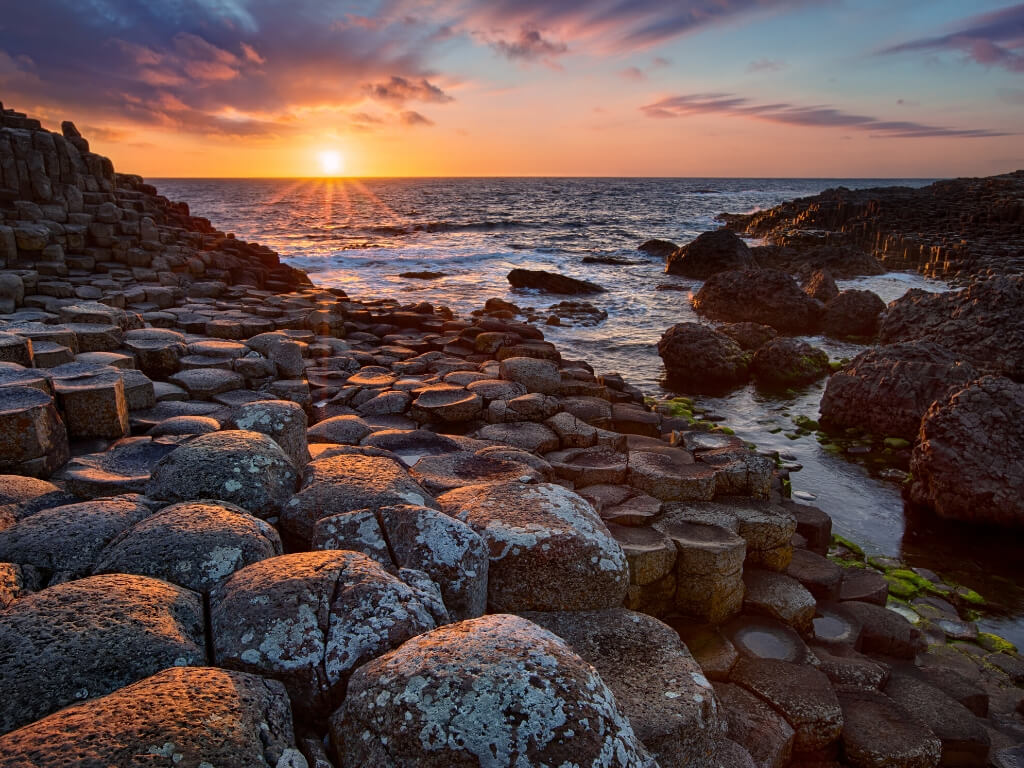
Outside of Dublin, the best way to travel around Ireland once you are there is by renting a car. This will free you up to travel on your own timetable and enable you to reach all the places on your bucket list. Hiring a car also gives you much more choice when it comes to accommodation in Ireland.
You can even enjoy all that the Wild Atlantic Way has to offer, something which is not possible via public transport. Yes, you can visit parts of it, but many public transport routes do not travel the length and breadth of it.
Make sure to book your hire car before you arrive in Ireland to get the best possible price and as far in advance as possible. Rentalcars is one of the best websites for comparing hire car prices from a number of companies. Hiring a car can start from as little as €18/$22 per day for a small car (shoulder season, summer prices generally start from around €22/$26 per day). However, this is for a manual gearbox. Automatic gearbox cars cost significantly more to hire, starting from approximately €26/$32 per day (shoulder season, summer prices start from approximately €36/$44 per day).
The smaller the car, the lower the price but do bear in mind that if you are travelling with a lot of luggage, it won’t fit in a small car such as a Peugeot 108, Fiat 500 or Ford Ka. When the retailers say 1 large bag, they mean only 1 large bag!
Another thing I never do is take the full accident damage waiver out with Rentalcars. The main reason being that many of the hire car companies do not recognise the insurance. So, if you have an accident you will need to pay the excess included in your original booking and claim back the difference from the Rentalcars insurance afterwards.
Instead, I allow extra and take out the full waiver insurance with the car hire company at the desk instead. This means I am covered immediately and do not need to worry about paying anything extra in the event of an accident. Yes, this can cost extra but gives me peace of mind. However, you don’t HAVE to follow my advice here.
Top tip: be extra careful on narrow country roads when driving in Ireland. You may often come across a slow-moving tractor, so bear this in mind when travelling off the main roads and motorways.
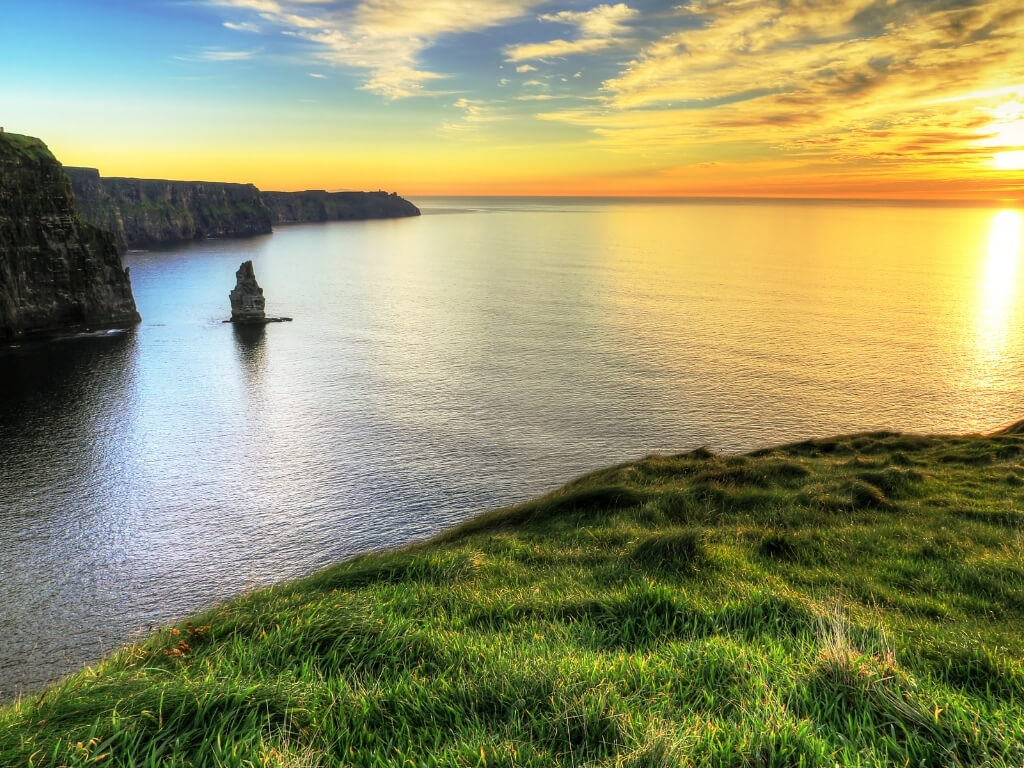
Accommodation in Ireland
Here you will find some handy hints and tips to decide on the best budget-friendly accommodation for your trip to Ireland.
Hostels, Guest-houses, B&B and Hotels
If you are going to travel to Ireland on a budget, the next part of your costs you need to consider are your accommodation costs. You can keep costs to a minimum by really planning and thinking about where you want to stay and for how long.
The best places to stay in Ireland on a budget are hostels. Beds in dorms (mixed or single-sex) can start from as little as €14/$17 per night, and many have private rooms available at a higher cost. Some hostels offer bed and breakfast, have cooking facilities for lunch and dinner, and some in Dublin offer free walking tours to their guests.
Staying in guest houses can also be quite affordable. B&B’s can be quite pricey in the main cities with prices reducing if you are staying in more rural locations. You can find a range of guest-houses, B&B’s and hostels on booking.com .
There are a few hotel chains in Ireland that can offer reasonable rates for hotel rooms if you prefer staying in hotels. The chains which you may find budget accommodation within Ireland include Jury’s Inn, Ibis, Radisson, Maldron, Clayton and Holiday Inn Express, all of which you will find on booking.com. Prices will vary depending on the location and time of year you are visiting but some of these hotels can start at price from as little as €65/$79 per night.
Personally, if we are travelling Ireland and not staying with family, we choose to book accommodation with AirBnB. Given we have our son with us, we like our privacy and the opportunity to keep costs down by cooking for ourselves. Staying in an AirBnB also allows us to bring a packed lunch which can help keep costs down even more where food is concerned.
Most of the places we’ve booked have been two-bedroomed houses or apartments for as little as €70/$85 per night. If there are four people staying in the accommodation that becomes €17.50/$21.50 per night per person, which is on par with hostel prices but with total privacy, cooking facilities and usually a lovely rural location often with beautiful views. However, a caveat. You will need a hire car to bag the best possible accommodation. Prices within cities can rise steeply, so it pays to shop around and consider staying outside of the city to get the best price.
Try not to travel solo in Ireland as single occupancy room rates in B&B’s and hotels can push the price up. If you are travelling Ireland alone, then see if you can get a private room via AirBnB in a house or book into a hostel.
If you are travelling as a group, you could check into hotels such as the budget-friendly ones already mentioned. Some rooms come with two double beds and are sold on a room basis with a maximum occupancy of 2-4 people, so it could be possible to get a hotel room and split the costs.
AirBnB is also ideal for groups as are dorms in hostels so the whole group are sharing one room. This can be a very cost-effective way of visiting Ireland on a budget.
Staying 2-3 nights in one place can also reduce your accommodation bill, particularly if you are staying mid-week. Mid-week rates are often lower than weekend ones and staying more than 2 nights can sometimes come with a small discount. So, do check if there is a difference in cost whether you are staying one, two or three nights and go for the best option.
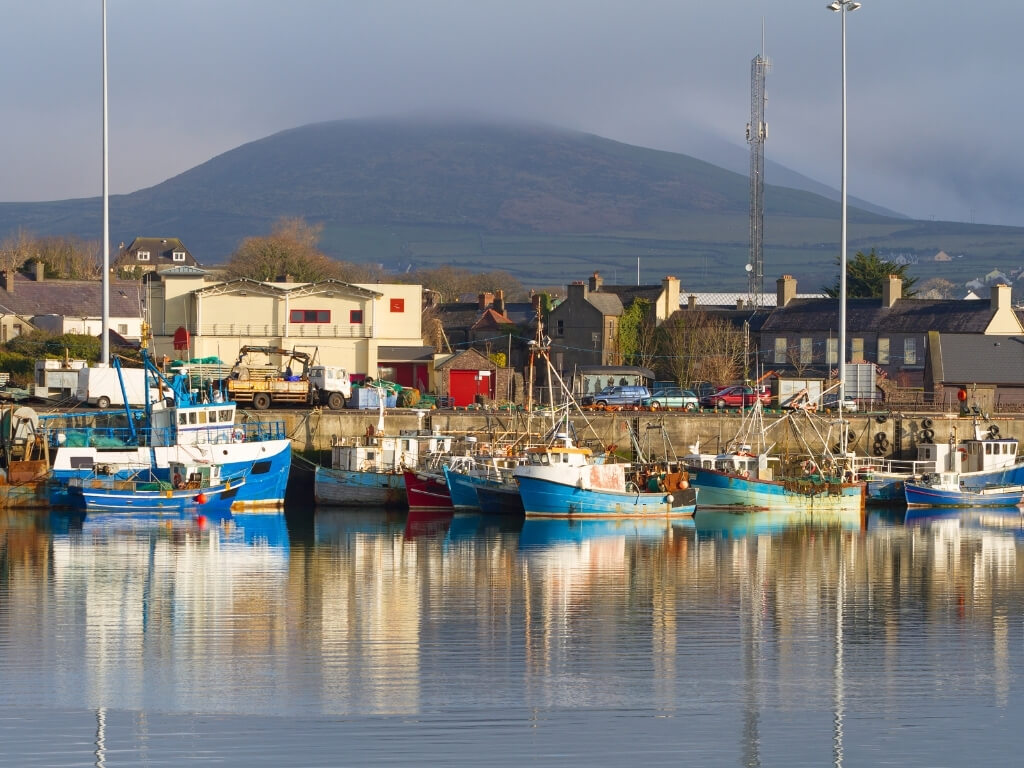
Food and Drink in Ireland
If you are planning a trip to Ireland, on a budget, there ways to keep your costs down where food and drink are concerned.
Firstly, if you are staying in an AirBnB or hostel which has cooking facilities, then you can reduce your food costs by cooking breakfast and dinner at your accommodation, and can even prepare a picnic or packed lunch to bring with you on a day of sightseeing or for your Ireland road trip along the Wild Atlantic Way . This is my preferred way of eating in Ireland on a budget.
Some of the best supermarkets to shop in are Aldi and Lidl. These supermarkets are budget-friendly without compromising on quality. Stock up on juice, cereal, bread, meats, cheese and croissants for continental breakfasts and make sandwiches or filled rolls to enjoy on the go. They also have all the ingredients you need for an easy spaghetti bolognese, steak and chips or even a homemade pizza.
Another tip for keeping your food and drinks cost down while visiting Ireland is to skip the Starbucks or Costa. A coffee in one of these cafes can set you back, on average, €4 depending on the type and size. A jar of coffee costs less than €4, so you can fill everyone’s mug up and still have plenty for the rest of your vacation. Instead, bring your reusable insulated coffee mug and bring a coffee with you in the mornings.
If you are staying in a hostel or hotel and half board is available, then consider booking that alongside your accommodation. If breakfast and dinner are already included, then you just need to worry about lunch.
If you are not self-catering, then eating in Ireland on a budget is still doable, you just need to be a bit savvy. Instead of going out for dinner every night as your main meal, why not have your main meal at lunchtime. The lunch-time menu in restaurants and pubs serves substantial meals including traditional Irish dishes , which are often substantially lower than the price of the same or similar meal on the dinner menu. That’s not to say you cannot eat your main meal at dinner, just be careful. If you have your main meal at lunchtime, grab a baguette and some meat and cheese and have a sandwich later back at your accommodation.
Another way to watch the cents while in Ireland is to be careful with your cash/cards in pubs. A few nights in a pub, enjoying the craic, can quickly eat into your food and drink budget for Ireland. Or blow it altogether.
Pubs can be expensive and even more so in tourist areas such as Temple Bar in Dublin or around Eyre Square in Galway. Even as a local, I haven’t drunk in the Temple Bar pubs for years, simply because come 9pm, the prices go up. This is down to the fact that many are filled with tourists who have had a few already and might not notice the cost of their drink rising by a euro or two.
But it adds up after a few rounds of drinks. And the barmen and owners are banking on this. In a non-Temple Bar pub, a pint of beer can set you back €5.50 while a glass of wine ranges from between €6 and €7.50. Now imagine those prices going up by 1or 2 euros per drink!
You can still allow a budget for one night out on the town to soak up the atmosphere and perhaps limit yourself to one or two drinks for other nights that you plan to frequent a pub.
Things to do and see in Ireland
If you are wondering how to see Ireland on a budget, and still make the most of your trip, here are a few tips and tricks for you.
If you are looking for things to do in Dublin on a budget, there are lots of ways you can enjoy the city without spending a fortune. There are some free tourist attractions in Dublin, Ireland and some great free museums and galleries too. As mentioned previously, some hostels in Dublin off free walking tours of Dublin to their guests, so enquire about this if you are opting for a hostel stay.
Read my post about the best free things to do in Dublin which includes a self-guided walking tour of the city. And if you want to discover the history, culture and art of Ireland, then visit these free museums and galleries in Dublin .
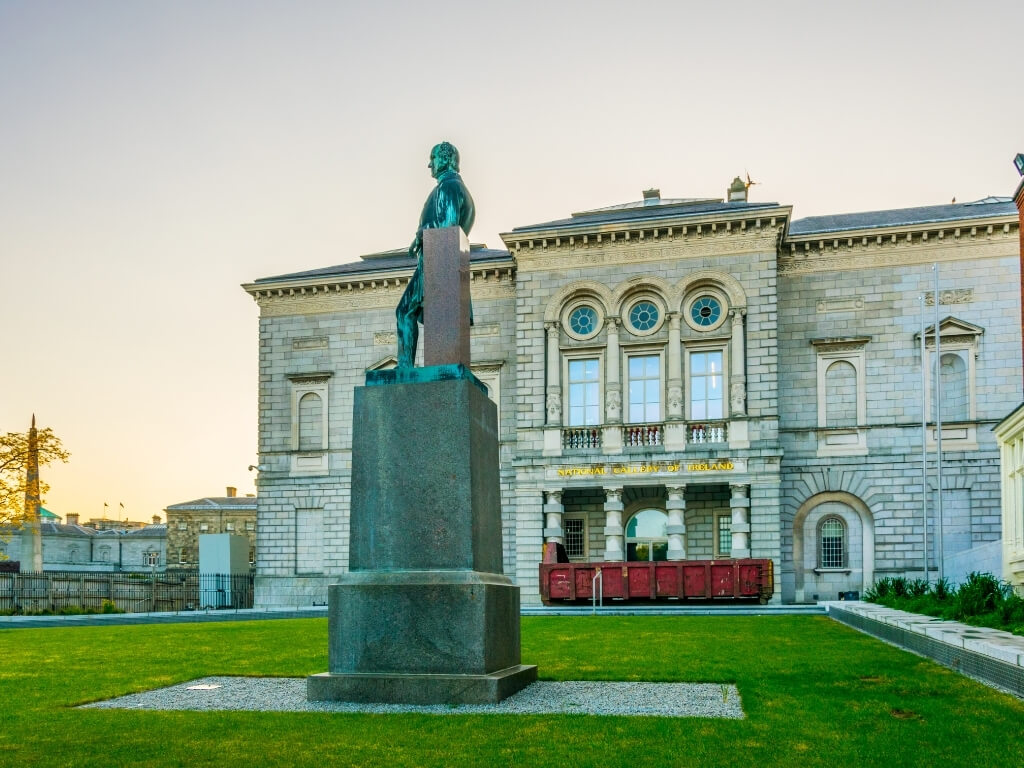
Outside of Dublin, the National Parks of Ireland are free to visit, ideal if you have a car. Discovering beautiful places in the Killarney National Park or Connemara can be enjoyed without having to pay an entry fee.
The cliffs at Slieve League are free to visit and parking is also free. There is a parking charge to visit the Cliffs of Moher which also gives you entry to the Visitor’s Centre. But, this is per person with adults costing €8 during peak season. The Cliffs themselves are free to visit but if you are travelling by car, the best option is to park at either Guerin’s Path where the cost reduces to €5 per person. Or if you travel to Hag’s Head on the most southerly tip of the cliffs, there is a farmer’s house that has a small car park in which you can park for a donation (suggested at €3 for the day). Both this car park and the one at Guerin’s Path will leave you with a short walk to the Cliffs themselves. However, get there very early to avoid disappointment or a dent in your wallet.
Glendalough is free to visit and if you are arriving by car there are two options. Parking at the Upper Lakes and Visitor Centre car parks costs €4 per car. However, 1 mile from the monastic site is a free car parking facility in Laragh Village. There is also a payable parking area in the village for €5 per car.
Wandering the Medieval towns of Trim, Derry and Kilkenny is free and can be very enjoyable. Soak up the atmosphere and architecture.
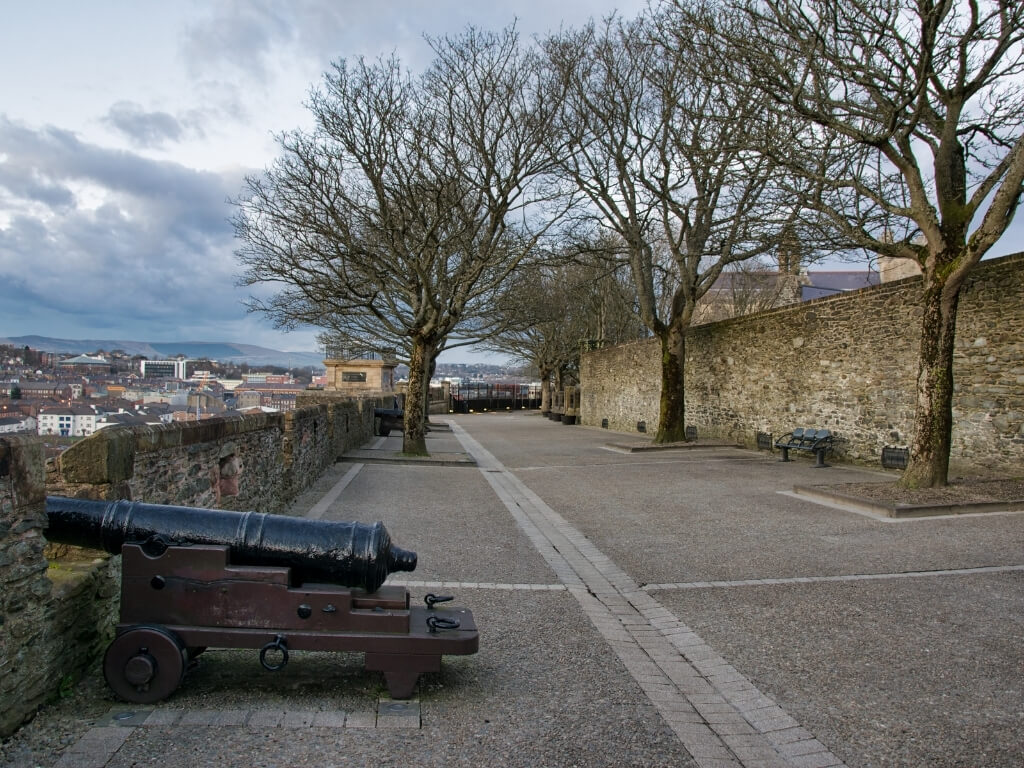
In some towns, there may be free walking tours operated by locals, after which a donation is accepted. You could join one and give what you think is appropriate. Take advantage of these and any other free museums you come across.
If you are travelling to Ireland on a budget but still want to enjoy some of the payable tourist attractions, then check out Get Your Guide for combination tickets. They do a combination ticket for visiting the Book of Kells in Trinity College and Dublin Castle in Dublin. And you can also take day tours from Dublin for great value prices such as a full-day tour from the city to visit Kilkenny, Glendalough and the Wicklow Mountains for as little as €35 per person.
Another great website for finding tour and attraction deals is Viator. Click this link to start your search .
Another money-saving tip for Ireland is for those who love castles and other historical sites. Heritage Ireland has a Heritage Card which is similar to the US National Parks card or the UK’s National Trust membership.
The card is valid for 1 year from the date of first use and gives free admission to all sites operated by the OPW (Office of Public Works). It costs €40 per adult and €10 per child (family of 2 adults and up to 5 children aged 12-18 years costs just €90, under 12’s are free). If you are planning on visiting 6 or 7 sites, it will pay for itself in one trip. You can buy the card at the first site you visit, just remember to bring cash as the sites generally do not accept cards.
Tips for saving money while you are in Ireland
If you are going to Ireland on a budget, here are some extra money-saving tips to help you out.
Check out any tourism magazines you see in the airport or at your accommodation. Many of them will include discounts for attractions when you show the leaflet or brochure when purchasing your tickets. You might even find a buy-one-get-one-free offer for adult tickets. Ones to watch out for include any Tourism Ireland or Discover Ireland holiday Breaks catalogues and magazines.
If you are travelling to Ireland as a student, bring your student ID card and International Student Identity Card. You can avail of up to 50% off train tickets and 15% off buses outside Dublin with reduced weekly passes for Dublin buses available to students. Also, ask retailers and shops whether there is a student discount. You never know!
And students aren’t the only ones who can avail of discounts. Some attractions offer discounts for seniors and families , so if it isn’t obvious, ask at the desk or ticket office. Also, make sure to compare the cost of a family ticket versus individual adult and children tickets combined and choose the most cost-effective combination.
Bring cash from home and your credit card. Never use a Bureau de Change (currency exchange) at the airport, in hotels or at tourism places as their rate of exchange is never the best. There are Bureau de Change desks in most main banks and large Post Offices (called An Post in Ireland), and you will get the best rate of exchanges there.
Carry cash to OPW (Office of Public Works) historical sites as they do not accept payment by card and carry coin cash with you in case you need to pay for parking anywhere.
Something else to help keep costs down when you are in Ireland is to purchase a pre-paid Irish SIM card for short international calls while you are travelling. Pay-as-you-go SIM cards can be topped up at many, many shops throughout the country.
And lastly, if you are a non-EU citizen, remember to claim your VAT back at the airport before your departure. Retain all your receipts for purchases made and get $17 back per $100 spent.
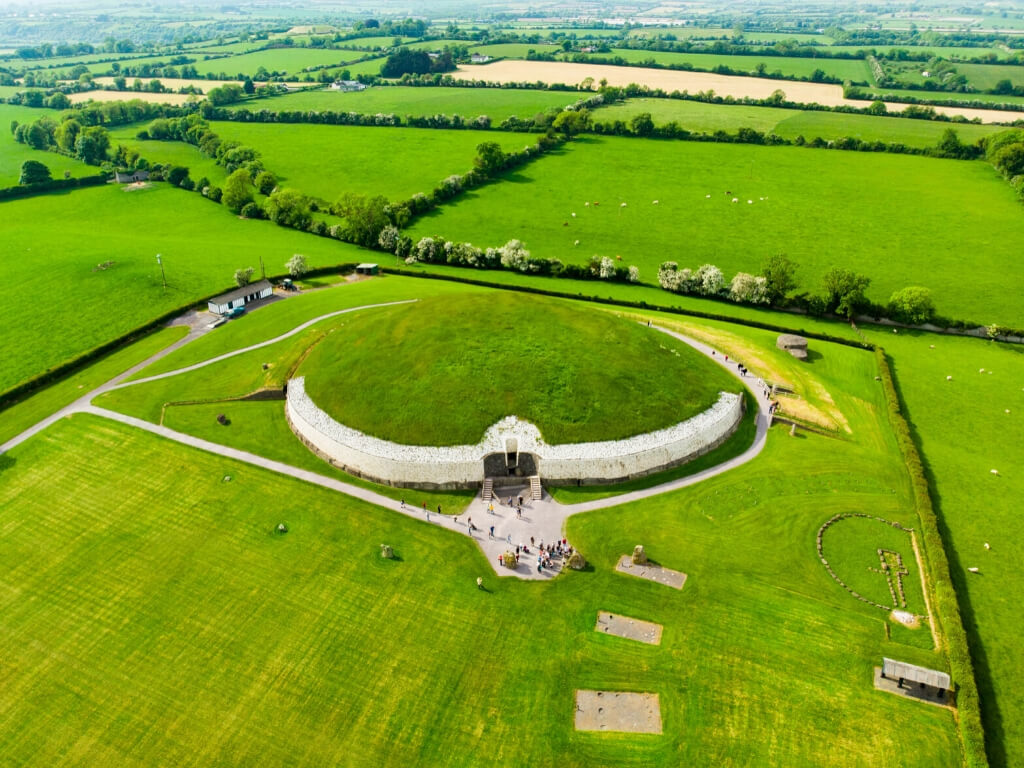
Daily Ireland Budget
When it comes to how to visit Ireland on a budget and your daily budget, it very much depends on what you want to do and whether it includes your flight, transport and accommodation.
Depending on when you book your flight and the route you choose to take, it can cost as little as €410/$500 per person from the US to Dublin. Accommodation could be as little as €14/$17 per person (staying in a hostel) or €70/$85 per night (staying in a hotel or AirBnB). Car hire will start from as little as €18/$22 for a small car, rising with an increase in the size of the car or if you prefer an automatic to a manual car.
Taking those factors out, you could get away with as little as €40-50 per day ($49-62) for food, drink and entry fees to attractions. You could get away with less by seeking out free things to do and eating at your accommodation and you may need more if you want to visit as many payable tourist sites as you can. It is very much up to you.
The best way to see Ireland on a budget is to utilise all the tips I’ve given you and also to take it slow. Don’t try to do it all, especially if you have limited time on the Emerald Isle. Plan your trip well in advance, book your flights, accommodation and transport well ahead of your arrival to avail of the best prices. And once you are there, mix free attractions with payable ones and eat out some days but eat in others.
If you have wondered how to travel to Ireland on a budget but still enjoy it to the full, I hope these tips have shown you that it is possible to visit the Emerald Isle without needing to break the bank. By being savvy and smart, you can have a great vacation while enjoying all the country has to offer.
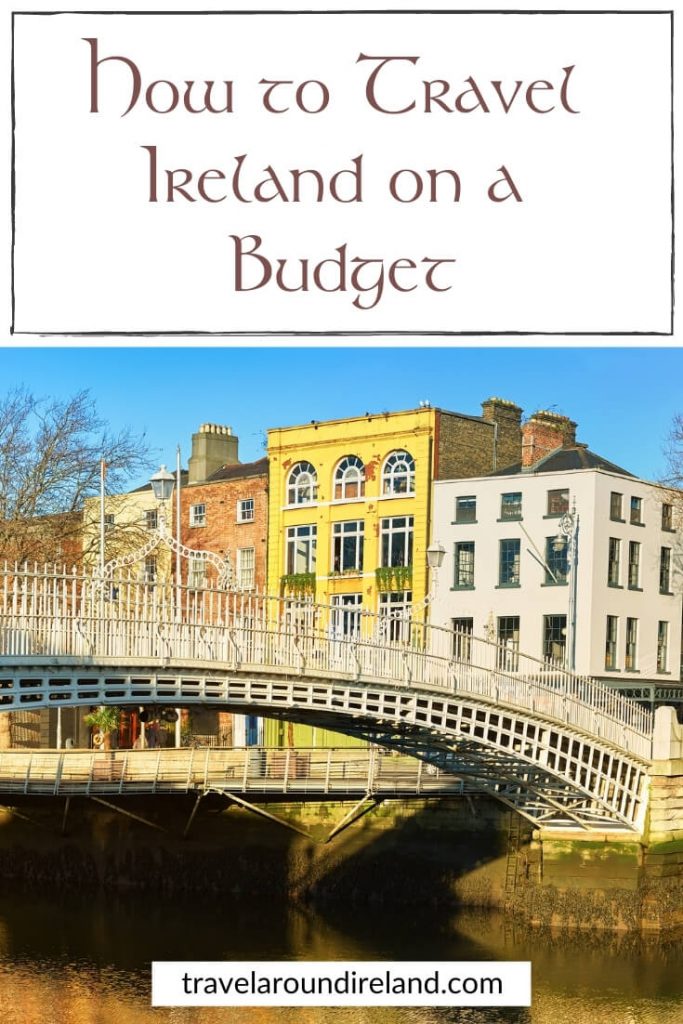
Related Posts

by Cath Jordan
Leave a comment cancel reply.
Save my name, email, and website in this browser for the next time I comment.
Privacy Overview


- Practical and Essential Information About Ireland
- Deciding Whether to Move to Ireland
- Irish Immigration: An Overview
- Short Stay Visas
- Student Visas
- Employment Permits
- Retiring to Ireland
- Planning Your Move to Ireland
- Moving to Ireland Checklist
- Moving to Ireland with Pets
- 10 Essential Websites for Moving to Ireland
- Arriving in Ireland Checklist
- Setting up Utilities in Ireland
- Healthcare in Ireland
- Irish Private Health Insurance
- Banking in Ireland
- Grocery Shopping in Ireland
- Shopping for Household Essentials in Ireland
- Pet Ownership in Ireland
- Finding New Friends in Ireland
- What to Expect from Irish Housing
- Property Checklist
- How to Rent Accommodation in Ireland
- How to Buy a Home in Ireland
- Irish Childcare and Pre-Schooling
- An Overview of Irish Schooling
- Irish Primary Schooling (Bunscoil)
- Irish Secondary Schooling (Meánscoil)
- Irish Higher Education
- Irish School Holidays
- How to Find a Job in Ireland
- Irish Work Permits
- Irish Employment Legislation and Rights
- Irish Public Holidays
- Applying for a Personal Public Service Number (PPSN)
- Pay Related Social Insurance (PRSI)
- Irish Income Taxes
- How to Become an Au Pair in Ireland
- Dublin Public Transport
- Cork Public Transport
- Limerick Public Transport
- Galway Public Transport
- Getting to and from Irelands Airports
- Irelands Taxi Services
- Cycling in Ireland
- Driving Around Ireland
- Driver Licensing in Ireland
- Owning a Vehicle in Ireland
- Irish Language
- Sports in Ireland
- Irish Genealogy
- THE BOOK: Moving to Ireland: A Practical Guide
The Guide to Budget Travel in Ireland
This post may contain affiliate links. If you make a purchase through a link, I may receive a small commission, at no cost to you. These commissions help keep this website up and running, and I thank you for your support. Read my full disclosure here.
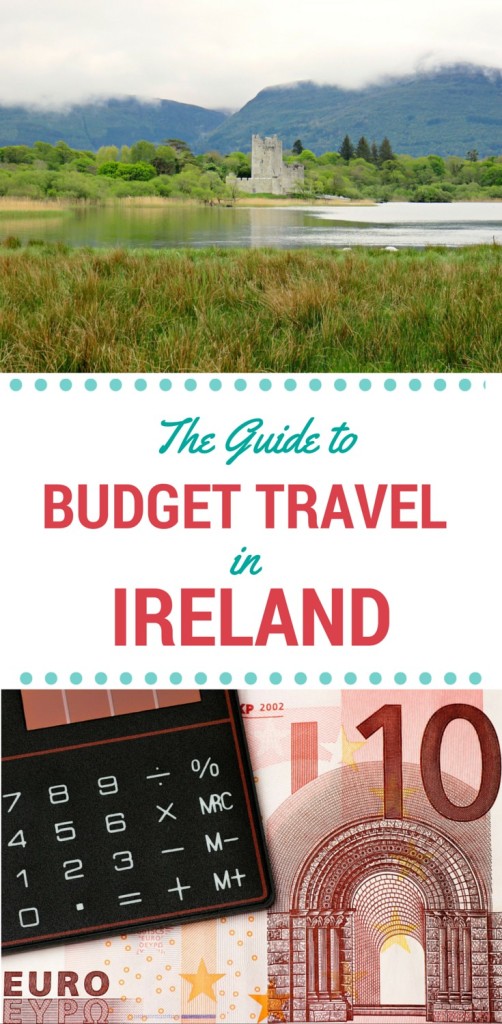
Being on a budget doesn’t mean that you have to miss out on the joys of travelling. It just means that you need to take a little bit more time when it comes to planning your holiday.
Ireland is not the most expensive destination in Europe, but it’s definitely not the cheapest. But don’t give up hope of visiting Ireland just yet. There is a surprising amount of things that you can do to reduce the cost of your visit and make your dream of visiting Ireland a reality. Follow these top tips for travelling around Ireland on a budget.
Getting to Ireland
1. travel off season.
It’s much cheaper to travel in spring, autumn or winter. Try and avoid the Irish school holiday periods and the summer peak season (June to August), as it is so much more expensive. Don’t feel disappointed about having to travel outside of summer as you will enjoy cheaper accommodation, fewer crowds, and smaller lines the at the popular tourist sites.
Spring is an amazing time to visit Ireland. Everywhere you look adorable baby animals including foals, calves and lambs frolic about enjoying the warming sun. In spring you will also see an abundance of colourful wildflowers bursting forth from the road sides and rolling hills.
Travelling around Ireland in autumn provides you with a wonderful backdrop of red and yellow as the leaves change colour. On the other hand, travelling in winter can be a bit grim with cold weather and shorter daylight hours. Some sites may even be closed.
2. Book Your Plane Tickets in Advance and Be Flexible
To save the most money, you will need to be flexible and book in advance. Generally flying on a Friday, Saturday and Sunday are the most expensive days. Mid-week is usually cheapest time to fly. Most flight comparison sites also let you set up a price alert to ensure you get the best deal when it becomes available.
3. Reduce Your Luggage
If you are travelling to Ireland on a budget airline that charges for checked in luggage, then consider taking only carry on, or only paying for the cheapest luggage weight possible. To help you to pack light, follow my post on how to pack an extra light toilet bag and also my guide on what to pack for your Irish vacation .
4. Print Your Own Boarding Pass
These days most budget airlines will also charge you to print your boarding pass. Avoid this fee by checking in online and printing your own boarding pass. Some airlines even let you use your phone to check in.
Accommodation in Ireland
5. don’t stay in hotels.
Hostels and B&B’s are typically cheaper than hotels. Now before you start cringing at the idea of staying in a hostel, think again. Hostels aren’t just for young people, you’ll find people of all ages as well as families staying there and it’s also a great way to meet fellow travellers. Many hostels offer private and family rooms with ensuites, making them very similar to a hotel room anyway.
Keep accommodation costs down by following these tips:
- Some hostels and B&B’s may have the option of a private or shared bathroom. Choosing a shared bathroom will save you money.
- Take advantage of free breakfasts offered by your hostel or B&B.
- Some B&B’s charge extra for breakfast, so consider whether its worth the extra expense or whether you can arrange your own breakfast for cheaper.
- If you plan to stay in locations a bit longer than a few nights and there is a group of you, then it may be cheaper to rent an apartment or cottage.
- I recommend the website Booking.com because not only does it give you the cheapest price, but also provides a range of accommodation options including B&B’s, guest houses, hostels, hotels, apartments, and castles (yes, that’s right, Castles!).
6. Consider Renting a Campervan or Camping
Ok, so this option won’t suit everyone, but camping or campervanning is a fun and cheap way to travel around Ireland. Best done in the warmer months though!
Getting Around Ireland
7. use public transport.
Ireland has a good network of buses and trains making use of them is a great way to save on travel. Find out more about Ireland’s public transport options . If you are planning on using public transport in Dublin, Limerick, Galway and/or Cork, then get a Leap Card , it’s a pay as you go smart card. The fares charged when using the Leap Card are much cheaper than purchasing paper tickets for each trip, and it means that you don’t have to worry about having small change on you. Although the Leap Card costs €5, this money is credited to your card – so this €5 can be used for travel (so basically the Leap Card costs you nothing).
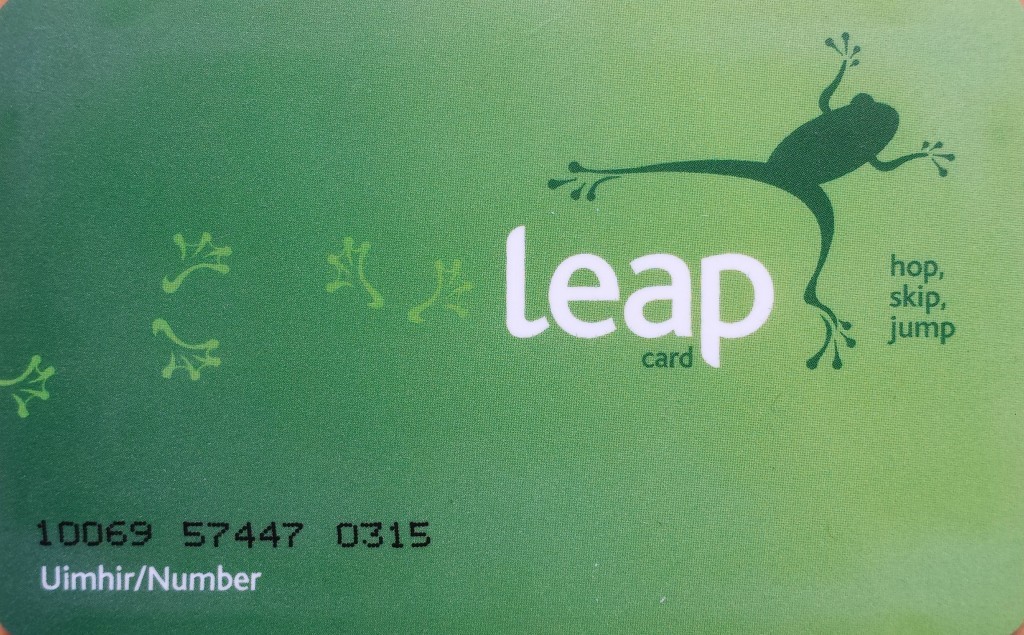
However, if you plan to use a lot of public transport in Dublin , then it may be cheaper for you to purchase and use the Leap Visitor Card . This Leap Visitor Card can be used on Dublin bus, train and tram services and can also be used on the Dublin city to airport 747 Airlink bus.
If you’re flying in and out of Dublin airport and plan to use the 747 Airlink airport bus, it’s cheaper to get a return ticket than purchasing a separate ticket for each way (if you don’t have the Leap Visitor Card ). However, if there is a group of you, it may be cheaper for you to take a taxi . Use the taxi fare estimator tool to estimate your fare before deciding on which transport option is the cheapest for your circumstances. Many taxi companies will also agree on a fixed rate airport transfer.
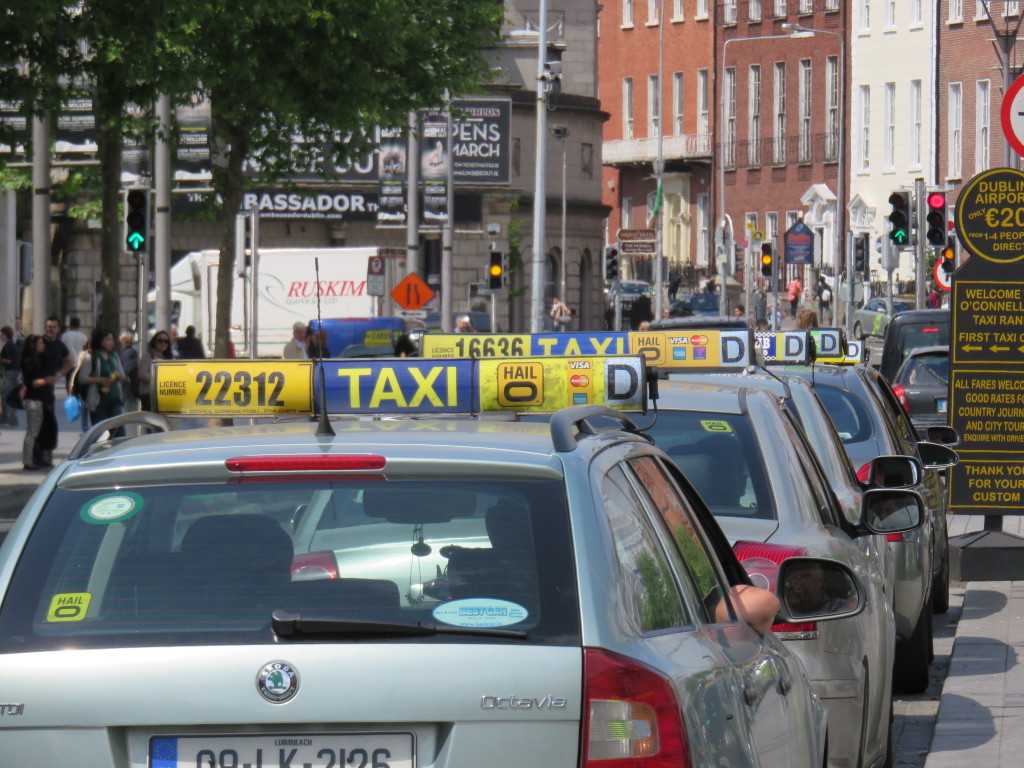
8. Book Your Bus and Train Tickets in Advance and Online
Be aware that travelling around Ireland by rail is generally more expensive than using the bus services . Also, many of the Irish rural areas can only be accessed by bus.
If you are planning to use buses and trains to get around Ireland, then save money by:
- Purchasing your tickets in advance.
- Purchasing your tickets online.
- Purchasing return tickets (as opposed to purchasing two one-way tickets).
- Being flexible with the time of day that you travel. For some trips the time of day that you travel can affect the price. Usually travelling midday is cheaper, but check this out as you book online.
9. Purchase Discount Rail and Bus Passes
If you plan to travel around Ireland using public transport, then consider these two options which may save you money:
The Eurail Ireland Pass
The Eurail Ireland Pass gives you unlimited travel on the national rail network of the Republic of Ireland and Northern Ireland. You can choose from 3, 4, 5 or 8 days of unlimited travel within a 1 month period and travel days may be used consecutively or nonconsecutively. Only non-European residents can travel with a Eurail pass. If you’re a European resident you can travel with an Interrail pass. To learn more and purchase the Eurail Ireland Pass, visit Eurail .
- Before purchasing this pass, just make sure that you are going to get your money’s worth by checking the fares to all of the places that you plan to visit on the Irish Rail website.
- Be aware that in Ireland trains are typically more expensive than buses.
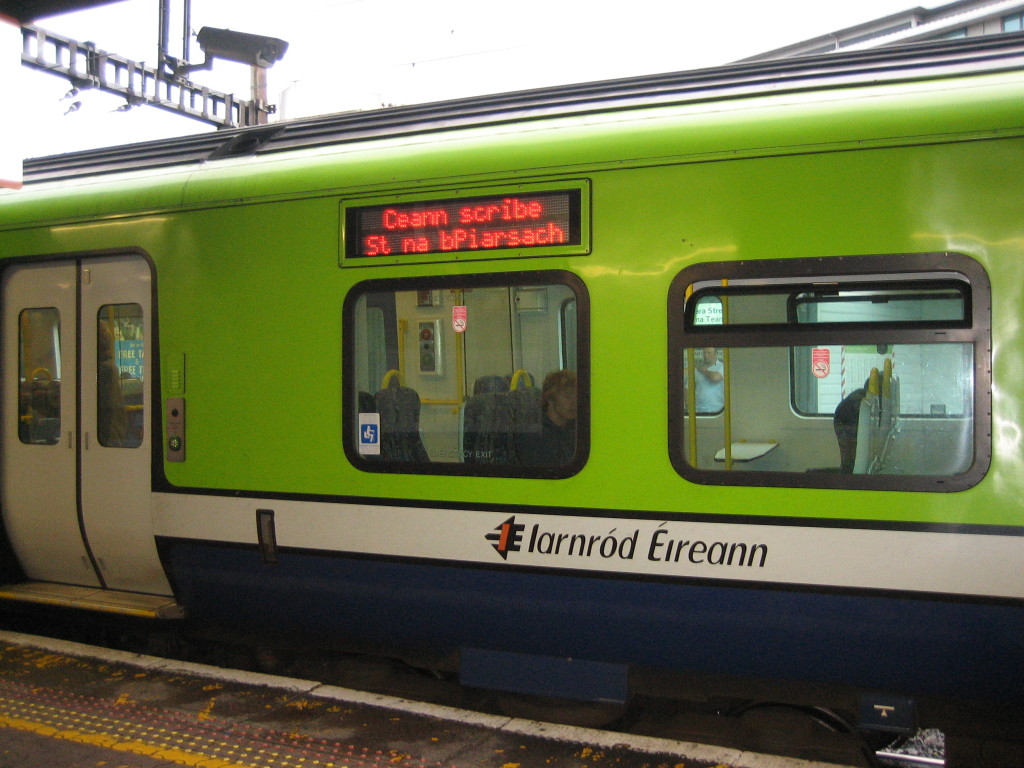
The Open Road Bus Ticket
Bus Éireann offer an “Open-Road” pass which is valid for travel on their scheduled services in the Republic of Ireland including expressway, commuter, local city and town services. For each Open-Road ticket purchased you can avail of 3 days of unlimited travel out of 6 consecutive days. You can extend your trip by purchasing extra “stamps” for your Open-Road ticket. To purchase the ticket and to learn more, visit the Bus Éireann website.
- Before purchasing the ticket, just make sure that you are going to get your money’s worth by checking the fares to all of the places that you plan to visit on the Bus Éireann website.
- Bus Éireann may not be the fastest or cheapest way to travel between cities. There are other licensed private bus services in Ireland that may offer cheaper, faster trips to your destinations.
- Please note that the ‘Emerald Pass’ and the ‘Irish Explorer Pass’ mentioned in many travel guides are no longer available.
10. Use City Bikes to Get Around Dublin, Cork and Galway
Using the City Bike Scheme is a fun and cheap way to get around the Irish cities of Dublin, Cork and Galway. A cheap three-day pass is available, which is perfect for visitors.
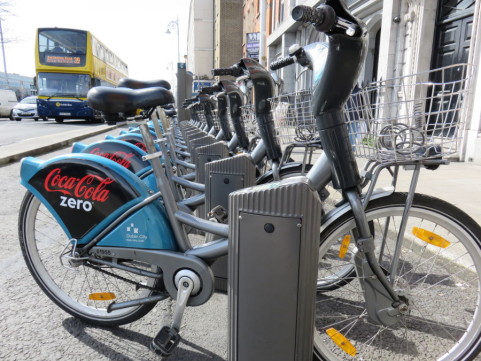
11. Save Money on Car Hire
If you are only planning short excursions, then Irish public transport is a cheap way to get around Ireland. But if you are planning on a trip around Ireland then hiring a car is a great way to get around as it provides you a great deal of flexibility and also allows you to travel on your own schedule.
Follow these tips to reduce your car hire costs:
- If you are arriving in a city and plan to spend some time there before commencing your tour of Ireland, then save money by collecting your hire car on the day that you plan to commence your tour of Ireland. Cities like Dublin are very difficult to drive around and there is only limited and expensive parking.
- Book your car rental in advance to get the best price.
- Be aware that in Ireland, automatic vehicles are more expensive to rent than manuals.
- The mountain ranges are not very steep in Ireland so you can generally get away with hiring a cheaper, smaller car if there are only a few of you travelling together. It can also save you a lot of money on fuel, which is very expensive in Ireland. In fact you’ll be glad that you chose the small car when you get to the narrow Irish country roads and find yourself trying to squeeze past other vehicles and animals.
- If you are planning on driving into Northern Ireland then make sure your rental company allows you to drive the hire car there. Some rental companies may even charge an additional fee to do so. The bigger car hire companies that also provide services in Northern Ireland usually cover you for travel to this area and don’t typically charge an additional fee to do so. Be aware of this when you are shopping around for the best rates.
- Most car hire companies charge a fee for additional drivers, so designate one person to do all of the driving (but be aware of driver fatigue).
- Some car hire companies charge fees for dropping the car off in a different location than where you collected it from. Try and plan your trip so you can pick it up and drop it off at the same location.
- It’s expensive to hire a GPS from the car hire companies. Instead, use an Irish road map or use your phone to navigate by using Google’s free Offline Maps. Google Offline Maps allows you to access free maps for navigating that can be used offline i.e. you don’t need WiFi, data, or roaming to be able to use them. Follow this detailed guide on how to use Googles Offline Maps . Using your phone as a GPS will drain your battery quickly, so use a portable charger which you can use to charge your phone and any other chargeable devices.
- Driving: In Ireland they drive on the left hand side of the road with speed signs in kilometres per hour. Read my post on How to Drive Around Ireland . If you are planning on renting a vehicle, then read What to Expect When Renting a Vehicle in Ireland .
- Using your phone as a GPS will drain your battery quickly, so use a portable charger which you can use to charge your phone and any other chargeable devices.
- Read more about What to Expect When Renting a Vehicle in Ireland and about driving around Ireland .
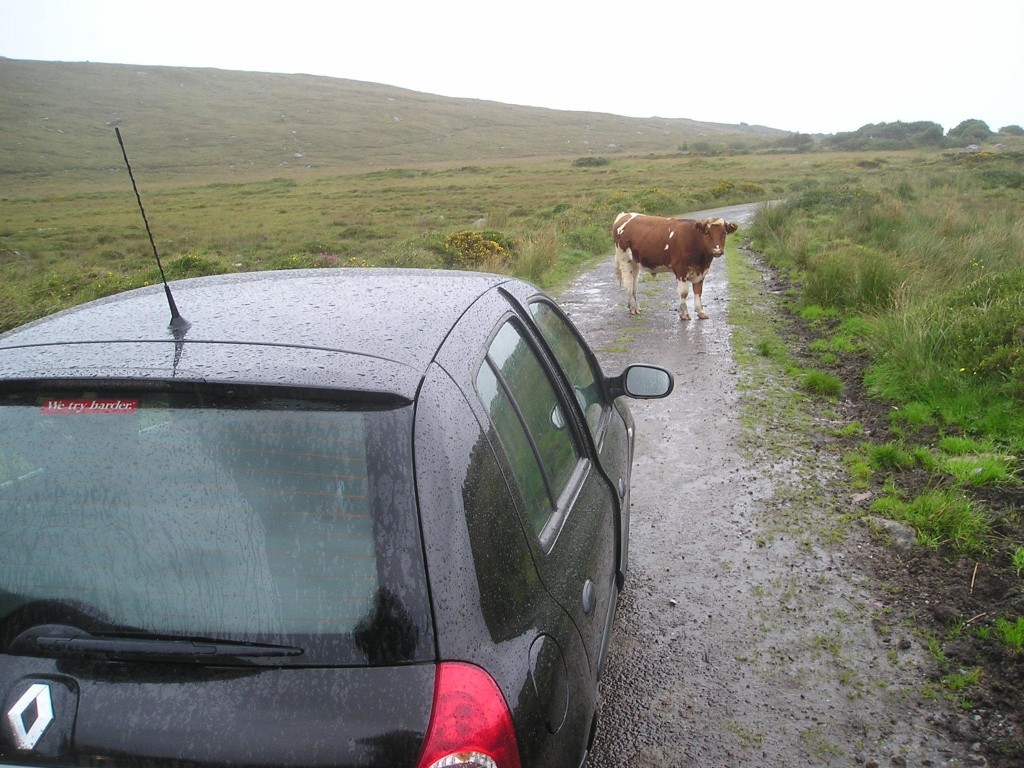
Discounts on Sightseeing in Ireland
12. visit heritage ireland sites for free.
Historic sites owned by the Irish Heritage organisation offer free admission to their properties on the first Wednesday of each month. To plan your visit, check out a list of the free Wednesday sites on the Heritage Ireland website.
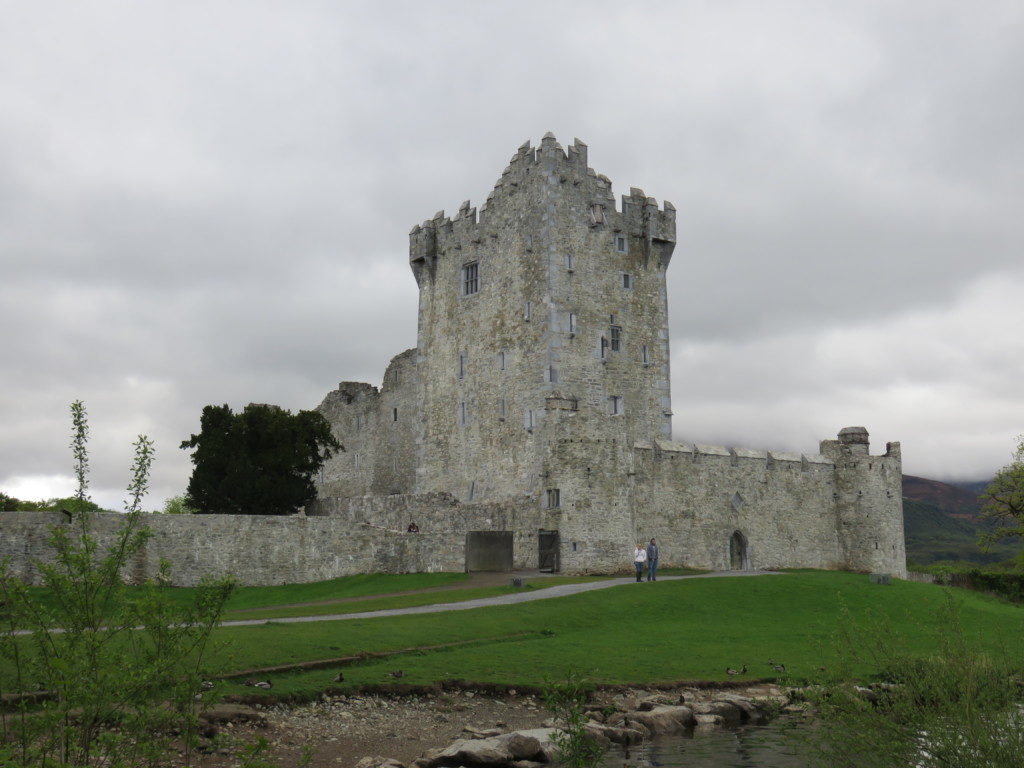
13. Purchase a Heritage Card
If you are planning to visit a number of Irish Heritage sites, it may be cheaper for you to purchase the Heritage Card . Check that you are going to get your money’s worth by adding up the admission fees of the sites that you plan to visit and comparing it with the price of the card.
14. Purchase a Dublin Pass
If you are planning to visit a number of attractions in Dublin, then consider getting the Dublin Pass . Arrange to collect your Dublin Pass from the airport as you can also use it on the Aircoach which takes you from the airport into the city. Just make sure that you are going to get your moneys worth by checking the admission fees to all the sites you plan to visit before purchasing the pass.
15. Purchase Your Attraction and Tour Tickets Online
Many attractions and tours offer a discount if you purchase your admission ticket online. For example, you can purchase discounted tickets online to the Guinness Storehouse (you get an additional discount if you plan to enter the Storehouse between 9.30am and 11.30am), Kylemore Abbey, Blarney Castle and for the Hop-on Hop-off Bus Tour etc… You don’t even need to print your tickets, just show them your electronic ticket.
16. Get Student and Senior Discounts
If you have a valid student ID or you’re 55 years or older, then take advantage of discounted student and senior rates at attractions and on public transport.
17. Visiting Dublin? Enjoy the Many Free Attractions
As well as paid admission attractions, there is also lots to see and do in Dublin for free. Check out FREE things to do in Dublin .
18. Visit during Ireland’s Annual Culture Night
Each year Ireland hosts a Culture Night. There are lots of free events and live performances for all ages and tastes. In Dublin, a vast number of the tourist sites that usually charge an admission fee become free for the evening. If you are flexible with your travel schedule, then this is a great way to have a cheap holiday. To find out more, visit the Culture Night website.
Dining in Ireland
19. cook your own meals.
The cost of eating out quickly adds up and it is much cheaper if you can cook for yourself. There are many hostels in Ireland that provide shared communal kitchens so you can cook your own food.
If you plan to stay in a location a bit longer than a few nights, then it may be more economical for you to rent an apartment or cottage which includes a kitchen.
- Prior to your trip, when visiting food restaurants that have those little sachets of salt, pepper and sugar, grab a handful to take on your holidays.
- Consider taking a small bottle of cooking oil with you. Just make sure that you dispense it into a secure, screw top bottle and seal it in a ziplock bag so that it won’t leak through your luggage.
20. Pack Your Own Lunch
Ireland has so much beautiful countryside to enjoy, why not make the most of it by packing a picnic lunch? The added bonus is how much money you will save.
21. Drink Tap Water
The tap water in Ireland is safe to drink (I actually think it tastes quite nice). If you purchase a drink every time you get thirsty, the cost soon tallies up so try using a reusable drink bottle . When you’re eating out, most places will have free water jugs or will provide you a free glass of tap water if you ask for it. Save that money for the pub!
22. Avoid Eating in the Main Tourist Areas
Although tempting to do so, eating in the tourist areas is generally more expensive. Use websites like TripAdvisor to find out where the locals are eating. This will not only save you money, but generally give you a better food experience as well.
Some restaurants and bars offer ‘early bird’ dining rates between 5.30 and 7pm, so look out for these deals and take advantage of them.
Lunch menus are generally cheaper than dinner menus, so consider eating your main meal at lunch time.
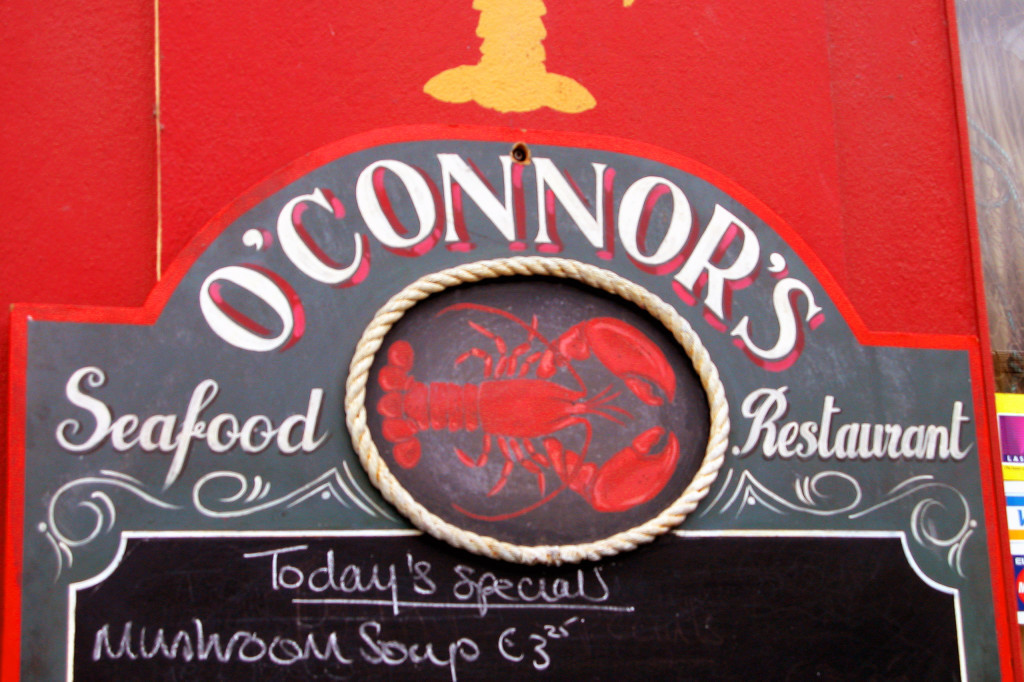
Exchanging Money in Ireland
23. get the best money exchange rates.
If you have a reputable money exchange service that provides you a free service with competitive rates, then exchange your money before you leave on your trip. Otherwise, a cheap way to get euro for your trip is to use your debit card to withdraw cash from an ATM when you get to Ireland. Check that your card has a Maestro, MasterCard, Cirrus or Visa symbol on it. Withdrawing money from an ATM usually gives you a good exchange rate, especially compared with those currency exchange counters. Your Bank will usually charge a small transaction fee (check with your Bank), so try and reduce the number of cash withdrawals that you make.
- Your bank may limit the amount that you can withdraw each day, so check your limit with them before you go.

24. Be Careful When Using Credit Cards
International credit card fees quickly add up. So what are your alternatives to avoid getting a nasty shock when you come home to your credit card statement?
- Use cash. It also allows you to keep a closer eye on how much you are spending and keeps you on budget.
- Get a credit card that offers no exchange rate fees. Be aware that these cards can have high annual fees, so try and find one with no fees. Also, you need to ensure that you can pay the amount owing, otherwise these credit cards typically charge very high interest rates which can quickly put you into debt.
If using your credit card for purchases, try to be billed in Euro instead of your home currency. This will generally get you a better exchange rate. However, do the opposite if you have a credit card that doesn’t charge exchange fees.
Be aware that credit card companies usually charge a fee to withdraw cash from your credit card, even if it’s money that you have lodged on it. Some companies may not even provide the normal interest free period for cash withdrawals or even cover any money that you have lodged onto your credit card if it is lost or stolen. So basically if you need cash, withdraw it from your debit card.
- Make sure that you have a Chip and Pin debit/credit card before travelling otherwise you may not be able to use if for purchases in Ireland.
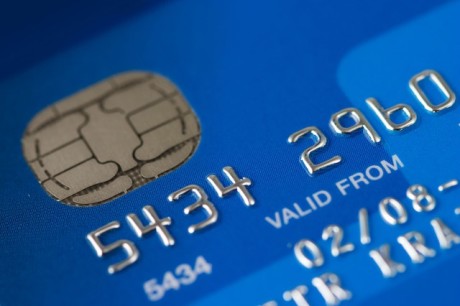
25. Use a Currency Exchange App
It can be difficult to keep track of your spending when using a different currency, so try using a currency exchange app. Taking the time to check the cost of an item in your own currency has the added benefit of making you think twice before splurging on those unnecessary purchases.
Roaming Charges
26. avoid roaming charges.
Purchase a cheap prepaid sim card when you arrive in Ireland. The supermarket chain Tesco offer good prepaid sim card deals that provide cheap international calling rates and can also include data. Alternately, you can purchase a calling card from most newsstands.
27. Buy Irish Food and Drink Souvenirs from the Supermarket
It’s always tempting to splurge when you get to the gift store at the end of your tour, but check the prices in the supermarkets such as Tesco, Dunnes, Supervalu first, as they may be much cheaper e.g. Irish Whiskey, chocolates and treats.
28. Reclaim Your VAT
Shopping in Ireland can be expensive because many goods carry a hefty 23% of Value Added Tax (VAT). However, non-EU visitors may get a refund on goods that they purchase under the ‘Retail Export Scheme’ if they take them out of Ireland within three months of purchasing them. If you want to participate in this scheme, then check if the retailer is participating in the scheme before making your purchase. You should also check whether they are operating directly in the scheme or with a VAT Refund Agent as this will effect who you contact for any inquiries that you may have with your refund application.
- If you are dealing with a VAT Refund Agent, then you will need to follow their process. Some VAT refund agents use a swipe card which is used at the point of sale to record the details of each qualifying purchase. As you exit Ireland you will deposit your documentation for purchases with the agent and the agent will make the necessary refund to you.
- Retailers who participate under the Retail Export Scheme will give you an export voucher for your purchases. Present this voucher to a Customs Officer as you depart or leave it in the ‘drop-box’ at the airport. The certified voucher will be returned to the retailer, who will then issue the refund.
Note that you cannot claim VAT on services (they charge a reduced VAT rate though) and as no VAT is paid on books or children’s wear, you cannot claim for these items either. Find out more on the Irish Revenue website.
- Custom officers may inspect your items as you depart, so have them easily available in your bag.
- If you purchase a good that costs €2,000 or more (including VAT) you must present the item along with the export voucher to Customs for inspection on departure.
Similar Posts
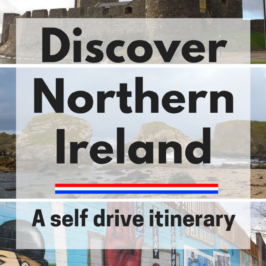
Northern Ireland Self Drive Itinerary
Use this self-drive itinerary and discover the very best that Northern Ireland has to offer....

Guide to Visiting the Cliffs of Moher
The breathtaking Cliffs of Moher are a highlight of the west coast of Ireland. Reaching...
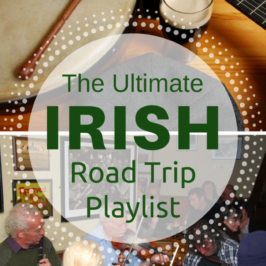
The Ultimate Irish Road Trip Playlist
Whether you're planning an Irish road trip or just wanting to enjoy some seriously awesome...
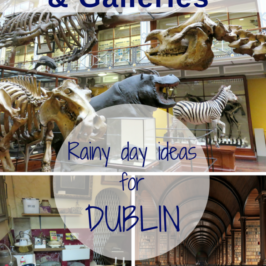
Rainy Day Ideas for Dublin: Museum and Galleries
Dublin is an amazing city to visit, however, the weather can be fickle. But if...

5 Stunning Walks in and Around Dublin
Whether you live in Dublin or your holidaying there, take the time to enjoy these...

How to Pack an EXTRA Small Toiletry Bag
If you're travelling with hand luggage only or backpacking, then every inch of space is...
2 Responses
My credit cards in the U.S. all have a chip but no pin when using, only a signature. Will these work in Ireland? My debit card has both a chip and a pin. I don’t want to get there and not have any access to money.
I believe you may experience issues with some vendors with the chip/signature credit cards. Is your debit card with the chip and pin a visa or mastercard debit card? If so, then this will likely work, however it may not in all circumstances, so you should always have a back up. You should also think about whether your bank is going to charge you a lot of fees for using these cards in Ireland. I would never recommend solely relying on bank cards. I would suggest that you bring some cash in euros with you. Another option for you to consider is using a prepaid money card e.g. Travelex have a mastercard one. Another tip – let your bank know about your travel plans, as some banks for security reasons may not let you use your card in another country unless you have pre-arranged this with them. I ran into this problem once when I travelled to Romania. They may also restrict the limit on your cards (again for security). Have this discussion with your bank before going on holiday.
Leave a Reply Cancel reply
Your email address will not be published. Required fields are marked *
Sign up to our newsletter

Ireland On A Budget – How To Save Money

- By conorphelan
- December 12, 2019
- Category: Travel Guide
Visiting Ireland is a dream for many people, but since it has been listed as one of the most expensive countries in Europe , for many the Emerald Isle is just too expensive. However, there are a few tips and tricks that you can use to make visiting Ireland on a budget a little more tolerable!
We’re going to look at some of the ways that people spend the most cash while on holidays in Ireland and we’ll show you how you can slash your costs! We’ll be tackling things like accommodation, food, and things to do!
Saving money while you’re in Ireland doesn’t mean that you’re going to be missing out on all the Emerald Isle has to offer. As we all know, the best things in life are free and Ireland is no exception. We have an abundance of outdoor activities, public attractions and great pub conversation-ists that will fill your mind rather than empty your wallet!
With all that said, let’s dig in and get saving!
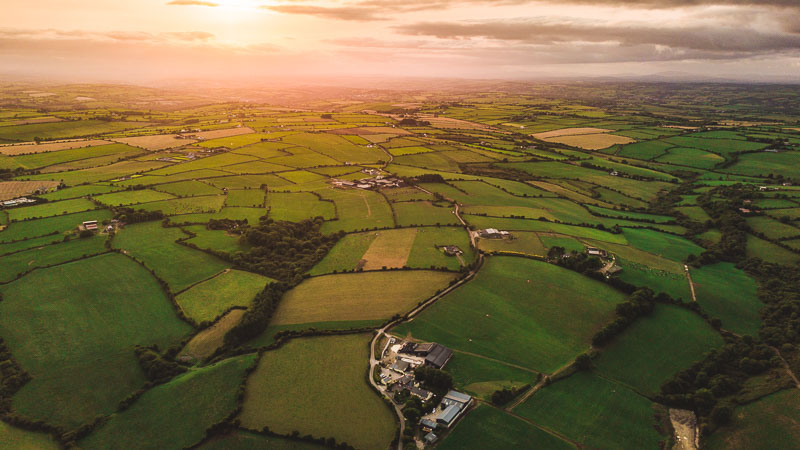
General money-saving tips
Before we dig into the big-ticket items, I have a few things to keep in mind while you’re trying to plan your Irish budget trip. In general, cities are more expensive than the countryside, and the bigger the city, the more expensive it is.
Also if places are built to accommodate tourists, the prices are going to be higher. As a general rule, if there’s an American flag outside a pub, you better believe that the prices inside will be higher! This is something I have noticed over my years of living here in Dublin, and you’ll see American flags all over Templebar in Dublin! We’ll get to Templebar later though, don’t worry!
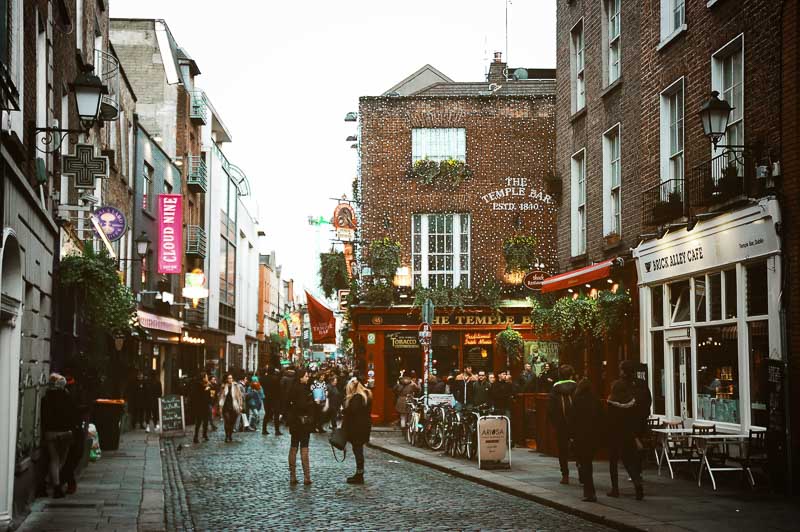
Cooking your own food will be far cheaper than eating out all the time! I’m not saying to never eat out since food is such a big part of visiting a new culture, but remember that you don’t need to eat out three times a day! The other thing to keep in mind is that dinners are a lot more expensive than lunches, so a lot of people will eat lunch out, but cook for dinner!
Finally on general tips, remember to keep transport in mind, especially in cities. Check when public transport finishes! We don’t have the luxury of a 24-hour system, so once it goes after 11, you’re either walking home or getting a taxi. If you’re planning a few late nights as part of your visit, maybe paying a little extra for a more central location will save you in the long run!
Finding Budget accommodation in Ireland
The biggest expense for most people visiting Ireland is accommodation. The average price for a hotel in Dublin is €160 per night, so if you spend a few nights in the capital, they add up!
This price is only based on hotels, so no BnBs or AirBnBs were included. With that in mind, let’s look at my favourite way to save money when travelling; AirBnb!

Using filters to find the best deal on AirBnB
So you can search on AirBnB for Dublin for the dates you want, but how do you know which ones are relevant? Luckily AirBnB has a really great filter feature on their site that allows you to pick what you want.
The first thing I’d do is open Google Maps and familiarise yourself with the place you want to visit. Let’s take Dublin for example. If you want to stay in the city centre, have a look at Google Maps and look for the centre. O’ Connell Street is the main street, with Grafton street being the biggest pedestrianised shopping area, so you’ll want to look around here.
You can use the map search on AirBnB to see where your accommodation is. This means you won’t have any nasty surprises when you arrive!
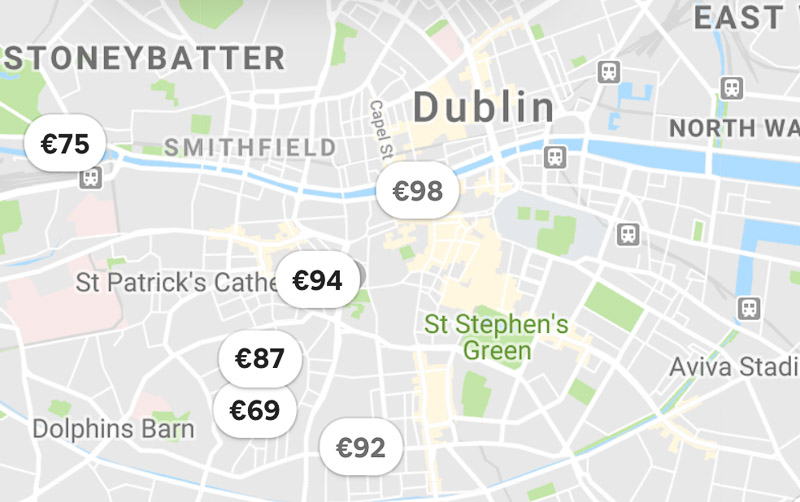
Set your budget
The next thing to use the price filter. Use the slider to set your top budget and the results will come in with a list of properties that fit your price range! If there are no places for that price, you’re going to have to raise your budget, or start to look a little outside the city!
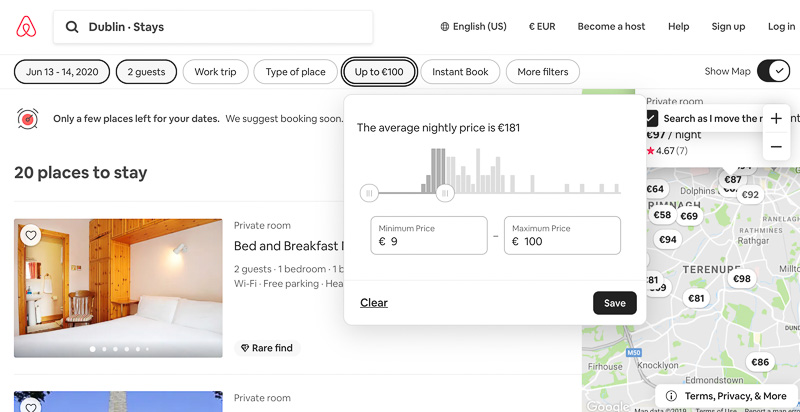
Use all the filters
The second filter you should add is a little hidden. You need to click the button that says “More Filters”. In here look for the Amenities section and click “Kitchen”. This will give you access to the kitchen in the AirBnb that you’ll be calling home in Ireland!
This means that you can cook your own food while in Ireland, saving you a ton of money every day!
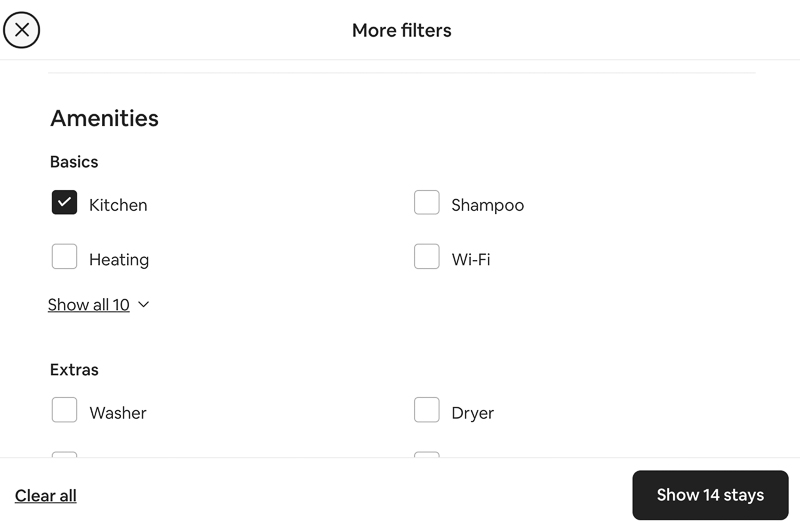
Embrace the experience
These cheaper AirBnBs are often just private rooms in a house. Some people don’t enjoy this, but personally I love it. It gives you the opportunity to meet local people and get tips from them about the local area!
If your host is going to be around in the evening, you could offer to include them in your dinner plans too. You’ll suddenly be in a conversation with a local person in their home! Some things money can’t buy!
I recommend making sure there’s a kitchen. Click here to search for Airbnbs in Ireland.
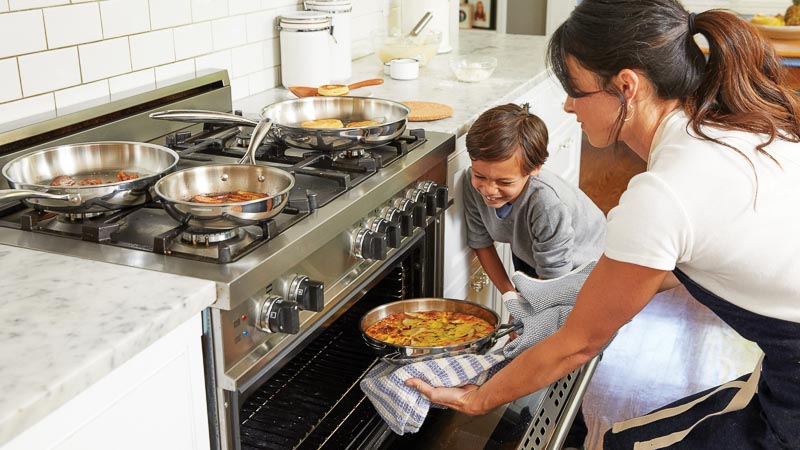
Hostels are a real alternative to hotels
The idea of a hostel might bring up images of a grotty, 12-bed dorm room, but hear me out! Yes, hostels do often have large dorms with 8, 12, or even 16 beds in them, but a bed in these can cost as little as €20 per night!
Hostels in Ireland are very common and really popular with solo travellers and backpackers. I’ve stayed in a few in my time, and there are some great ones all over Ireland, in particular, the hostels run by An Óige are of a high standard. These are primarily youth hostels but are cheap as chips and usually have huge kitchens that everyone uses in the evenings.

Private room in hostels
Hostels also have private rooms, generally a lot cheaper than hotel rooms as well, these can run anywhere from €90 to €200, depending on how many it sleeps and time of year.
For the best deals on Hostels, I recommend checking out HostelWorld where you can see prices, photos and reviews of hostels before booking!
Staying in hostels with kids
Hostels are a great way to meet fellow travellers, but they are generally used by younger people and can be a little bit rowdy, but more often than not, there’s a really nice vibe in hostels in Ireland.
Although they are called Youth Hostels, people of all ages are welcome to stay, and when I was younger, my family stayed in a Youth Hostel in Kerry and I loved it. If you’re bringing the family, double-check that kids are allowed, but a lot of hostels have family rooms that are very reasonable!
If you are planning on visiting Ireland on a budget, hostels might just be the highlight of your trip for kids. So many potential friends!

Camping life
Are hostels still a little too pricey, or do you just love being out in nature? Well, Ireland is an amazing place to go camping! Sure, it rains quite a lot, but with the right gear, you’ll be fine!
Wild Camping in Ireland is tricky, unlike many of our surroundings countries, the “Right to Roam” does not extend to private land in Ireland. Only Ireland’s National Parks have this right of passage, however, camping isn’t permitted in the National Parks. The only sort of exception to this rule is the Wicklow Mountains National Park.
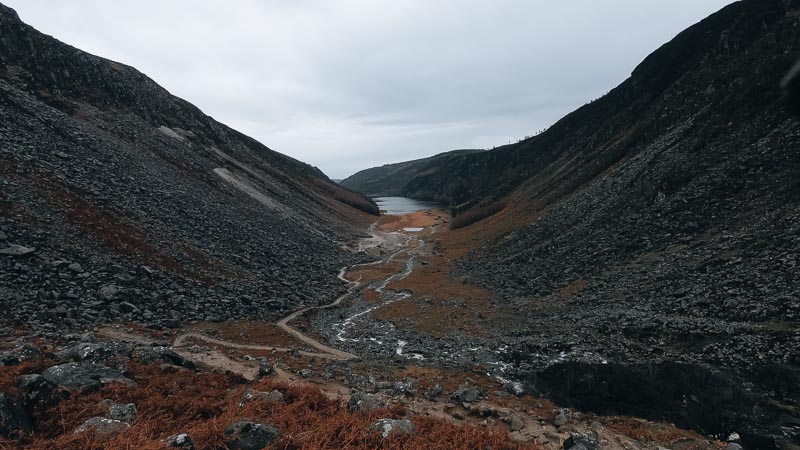
Camping in Glendalough
The only area that camping isn’t permitted here is Glendalough. Its importance historically, religiously and for touristically means that it’s important to preserve it. Wicklow is big enough so you don’t need to go camp here anyway!
Ordnance Survey Ireland has created a lovely list of some great wild camping spots that are approved, so you won’t need to worry about being moved on!
Wild Camping by its very nature is secluded so if you’re discreet, especially up in the mountains, you should be fine. Just remember to leave no trace that you were there. That means no open fires!
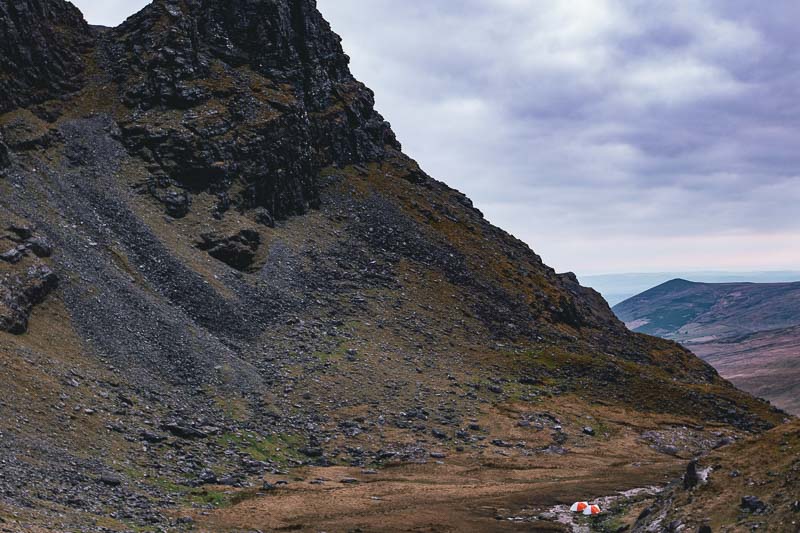
Camping on private land in Ireland
When it comes to private land, you’ll need to seek the permission of the landowner. This can mean knocking on some doors in the countryside to see if a farmer lives there. Don’t be surprised if they say no though! Landowners have complete rights over their land, so in general, to avoid conflict, it’s best to stick to the mountains or ask permission!
If you’re camping in Ireland, chances are that you’re planning on hiking a little while you’re here. We’ve been putting together a list of our favourite hikes in Ireland so make sure you have a look!
Campsites in Ireland
If I go camping in Ireland, I like to mix it up a little, with a night wild camping and a night in a proper campsite. This means you still get the wild camping experience, but also you get to shower.
Rather than go through my favourite campsites in this article, we already have an article on that! So you can have a look at our guide to Ireland’s Best Campsites if that’s something you would be into!
There are also a ton of Glamping (Glamourous Camping) sites popping up all over the country, but these are usually more in line with Airbnb prices, and that’s a great place to find them!

Eating out on a budget in Ireland
The second-largest expense for most of us while travelling is food! As I already mentioned earlier, getting a kitchen with your accommodation will slash your food costs, but you shouldn’t feel restricted by this!
One advantage that hotels and B&Bs have over Airbnbs is that they usually come with a hearty breakfast. If you have a big breakfast, a few snacks during the day, and finish off with dinner, you’ll be good to explore all day!

Shopping options
If you do decide to cook while in Ireland, you’ll get the experience of seeing what it’s like to live in Ireland, and who doesn’t want that? I know a trip to the supermarket probably wasn’t on your itinerary but it really will give you an insight into Irish life.
The best option to really meet local people and get the best produce is to look up online and see if there are any farmers markets on the days you arrive. If you’re in Dublin, go to Moore street where you can get fruit and veg from street traders, if you’re in Cork, go to The English Market and get some fresh-caught fish!
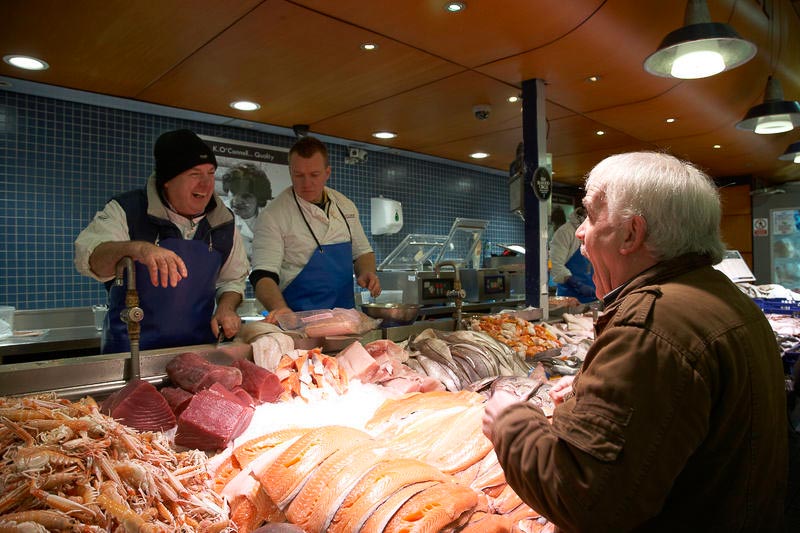
Don’t buy your meat pre-packaged in a supermarket, but go to a local butcher and you’ll usually spend less and get great advice on how best to prepare your food!
Budget Supermarkets
If you want to go even more budget, you can look towards budget supermarkets Lidl and Aldi. They’re both German supermarket chains of but stock a lot of Irish produce as well. They are considerably cheaper than other supermarkets, and even if you’re not planning on cooking, they’re great to pick up snacks for the road!
You won’t find too many brand names that you recognise here, but that’s what keeps them cheap! Irish people will all have their preference of Aldi vs Lidl, it’s a great conversation starter for sure! Whichever one is easier for you, just go for it! They do tend to be a little outside of towns, but in bigger towns and cities, they have at least one central shop. Again, google maps is your friend!

Early bird and pre-theatre meals
If you do find yourself coming to the end of a long day of exploring with no will to cook, fear not! Many restaurants do an early-bird menu. It’s sometimes referred to as a pre-theatre dinner but they mean the same thing!
The Early Bird menu is available until 7 or 7.30 in the evening, and it’s usually a set menu but for that, you get great value. It’s common to be able to get a two, or even three-course meal for €30 or less!

Drinks aren’t included, but make sure to ask for tap water rather than bottled water to avoid paying for water. Water in Ireland is safe and clean (sure doesn’t it fall out of the sky!). Nearly everywhere will bring tap water for no extra charge. I’m yet to be charged for tap water in a restaurant in Ireland at least!
A lot of places will have a board out in front saying that they have an Early Bird menu, and you can usually go in without a booking. If there’s no board, you can ask them directly, or take note of the restaurant and check their website to see the Early Bird menu before deciding!
Deli counter of dreams
The final thing I will say to you about eating on a budget in Ireland is to follow the most frugal of them all; college students! You’ll see them early(ish) in the mornings, and throughout the day coming out of small stores holding paper-wrapped sandwiches and rolls.
What are they eating? Almost exclusively, they’re tucking into a Chicken Fillet roll. These beautiful sandwiches are everything to a young Irish person. They’re comfort food, they’re cheap, and they’re filling.
Almost every small shop like Centra, Londis, Applegreen, Texaco (basically shops similar to a 7/11 in the USA) will have a deli counter. They’ll have a hot section and a cold section and here you can get reasonably priced food to go!
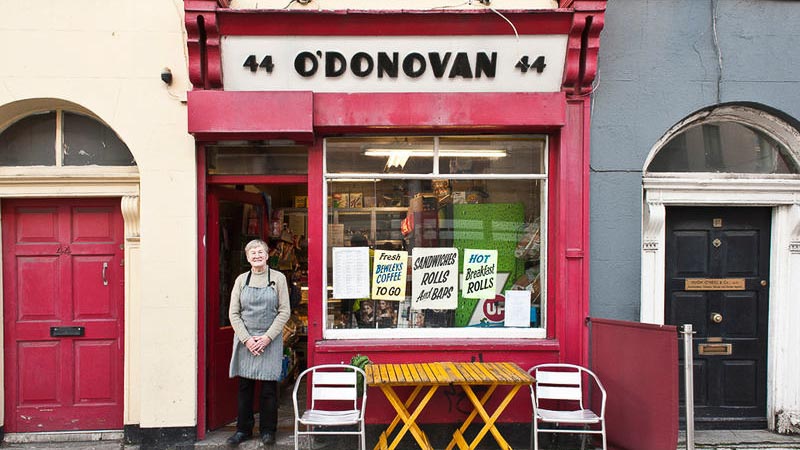
Order a chicken fillet roll like a pro
The chicken fillet roll is your standard go-to for most Irish people, where you’ll get a 12-inch baguette filled with a chicken fillet (pronounced “fill-it” in Ireland) and usually up to three salads. You’ll be asked if you want plain chicken or spicy chicken, but the spice is rarely anything more than black pepper.
I’m partial to a bit of coleslaw and cheese in my Chicken Fillet roll, but there are many that would call me a heathen for doing that, but luckily the men and women of the delis have seen and heard it all before. There’s no judgement from these fine people, so you really can do no wrong!
One of these rolls will cost between 3 and 6 euro, not bad for what you’re getting!
Drinking on the cheap
Let’s get this out of the way now. Drinking in pubs in Ireland isn’t cheap. That said, some places are a lot more reasonable than others.
Let’s start with the Elephant in the room. Templebar. Simply put, if you’re on a budget in Ireland, steer clear of this whole area. As a rule of thumb, in Dublin, if there are cobblestones on the street outside the pub, you’re still in Templebar and the beer will be at least €6, but more likely €7 or €8.
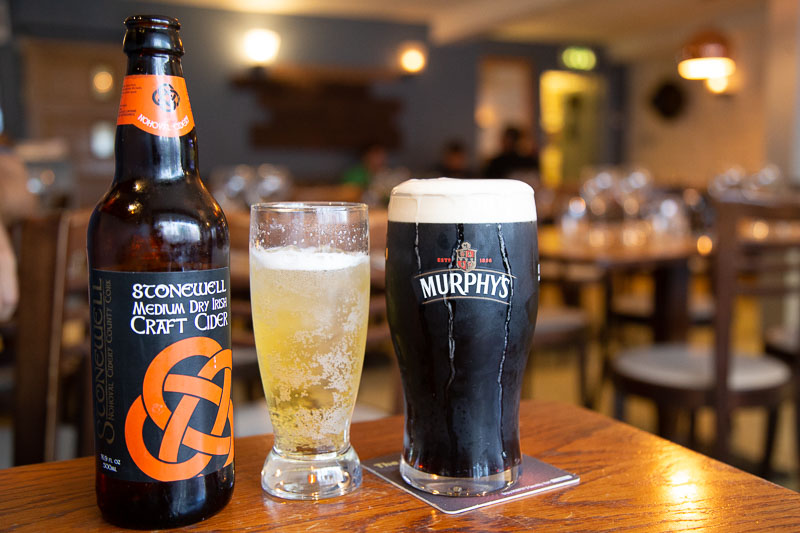
It is a tourist trap, plain and simple. It’s a lot of fun, and it will have a good atmosphere every night of the week, but it’s a tourist trap. The main thing to notice in Templebar is the lack of Irish people there. Sure the musicians and bar staff will be, but none of the customers, so that’s got to be telling you something!
I’ve already said in this article that the bigger the town or city, the more expensive it will be. Dublin is our largest city by a considerable distance, so it makes sense that it’s the most expensive. However, we do have a guide to the cheapest pints in Dublin , you’ll notice that none of them is in Templebar!
Getting around Ireland on a budget
Ireland does have a pretty great public transport system. Trains are fast but quite expensive. Buses are usually a pretty cheap way to get around, but they do have their limitations.
If you are travelling with one or two people, then public transport might just be the answer. If there’s a few of you, then don’t rule out hiring a car, since bus tickets all add up! We’ll get to that later.
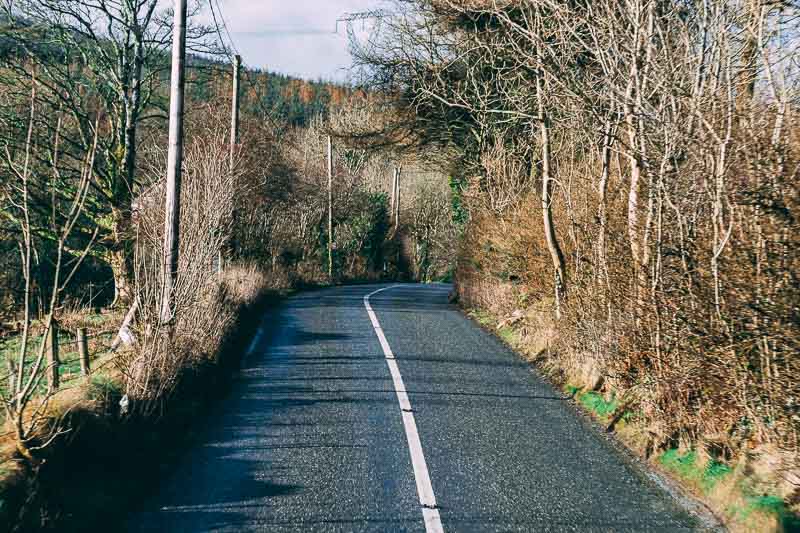
Travelling Ireland by bus
The good news is that getting from city to city is easy. Well, to be more precise, getting from Dublin to any city is easy. Bus Éireann is the national bus company, but that doesn’t always make them the best option.
For Dublin to Belfast or Dublin to Cork, you should use Aircoach. They run several buses a day and you can go from Dublin city, or even Dublin Airport to Cork for €20 (€12 for kids).
If you’re heading out west, you can look towards Citylink. Again, they have buses nearly every hour and it’s only €12 (€9 for kids) from Dublin to Galway.

What about Bus Éireann?
These private companies are great since they run a few times a day and are direct. Bus Éireann’s role in Ireland is to connect everyone to each other, so journeys go on slightly more meandering routes. This has the advantage that you can see the countryside rather than the motorways that the private companies take!
Tickets from Dublin to Cork and Galway are about €15 on Bus Éireann, so the private buses are generally better for city to city.
Travelling between small towns in Ireland by bus
This is where it gets tricky. The small countryside towns and villages are pretty badly served especially the more secluded ones. Bus Éireann do run services in a lot of small places, but it really depends on the area.
The best place to find out if there’s a bus is on the Bus Éireann site where you can see what services they run. They break it down county by county, so you’ll be able to find out your options there.

Cheap car rental in Ireland
Renting a car can seem expensive, but if you think about the fact that if there’s 4 of you going to Cork from Dublin, that’s €80 combined!
The problem is finding cheap car rental used to be difficult, but now you can check all car rental companies at once! I use Kayak.com to compare prices on cars. I did a test search for a car for a week in July and I found cars for as low as €109!
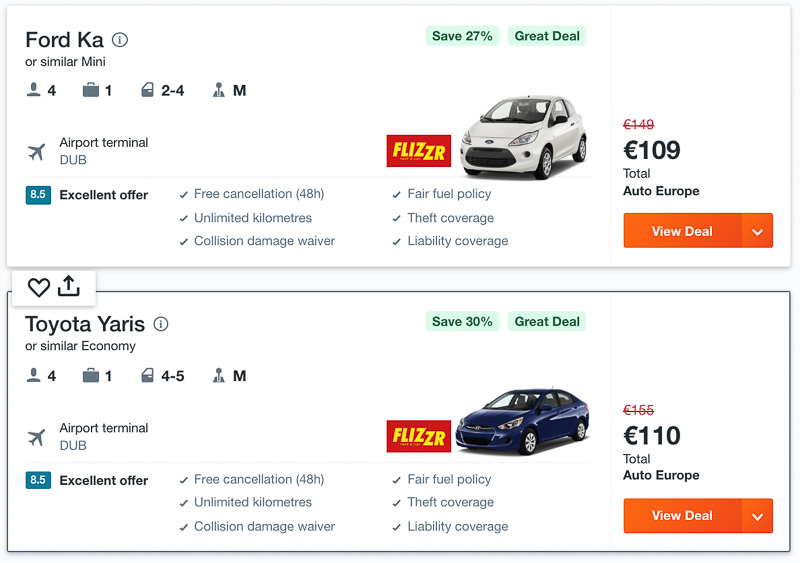
So the thing is these are VERY small cars, and unless you’re a group of travelling contortionists, you’re not going to fit too many in the back seat, never mind luggage. So I looked at the medium-size cars, and they came in at around €200-300. For a week, IN JULY! That’s peak tourist season!
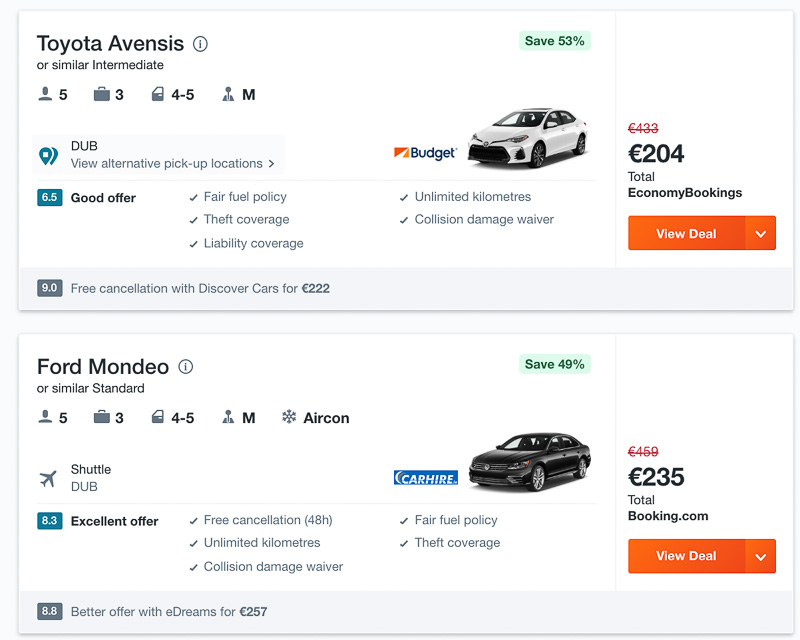
It all adds up
If you think about it, for 4 adults going from Dublin to Cork at €20 each means that’s €80 already! Buses are great for solo travellers, but if there’s 2 or more, then a car rental can be cheaper!
Also, this is based on personal experience, but I always rent with a company called Easirent and they have insanely cheap cars. We’re not getting sponsored, and we don’t get any commission for you using them, but they’re nearly always the cheapest! The cars are great, within a year old too! Sometimes I question how they’re making money! I’ve rented cars from them for as little as €4 per day, and I’ve never had any issues with them.

What about insurance?
I can already hear you shouting at your screen that I’m forgetting that’s the base price and that they cram in so many extras! I’ve thought of this too! They’re going to offer you all the insurance in the world, at crazy expensive rates per day.
I have insurance called “Excess insurance”. This cost me around €80 for the year and basically it covers me if something happens to a rental car while I’m driving it. I’m with AIG, but I can’t attest to how good they are yet since I haven’t had to make a claim.
The downside with this insurance is that you have to pay for repairs out of your pocket, and the insurance company will reimburse you after the fact. That’s some serious savings on the per-day premium that car insurers try to put on you!

Don’t pay for GPS Units in rental cars!
Loads of rental companies will offer to rent you a GPS unit for the car. DON’T fall for this. I live in Ireland and I don’t own a car, so I rent one every few weeks when I need one. Nearly every time there’s a GPS unit built in!
Even if there isn’t one built into the car, did you know that you can download Google Maps to your phone to use offline? Google themselves have a great guide on how to do this that you can see here .
This is extra useful because even if you have a data plan if you’re in some of the more remote places in Ireland, you won’t have signal anyway!
If you’re looking for an itinerary for Ireland, we have a pretty great Wild Atlantic Way Itinerary that you can dig into for inspiration!

Having fun for free
So you’ve figured out where you’re staying, how you’re getting there, and what you’re eating. Next up is what activities you’re going to get up to! Luckily for you, Ireland has some seriously amazing free attractions!
For a start, state-owned museums are free! This means there’s a ton even just in Dublin that are free! If it says “National” anywhere in the title, it’s probably free! The National Museum, the National Museum of Archaeology, the National Art Museum. ALL FREE!
We’re working hard on our free guides for all of Ireland, but for now, check out our Free Dublin guide and our Free Belfast Guide
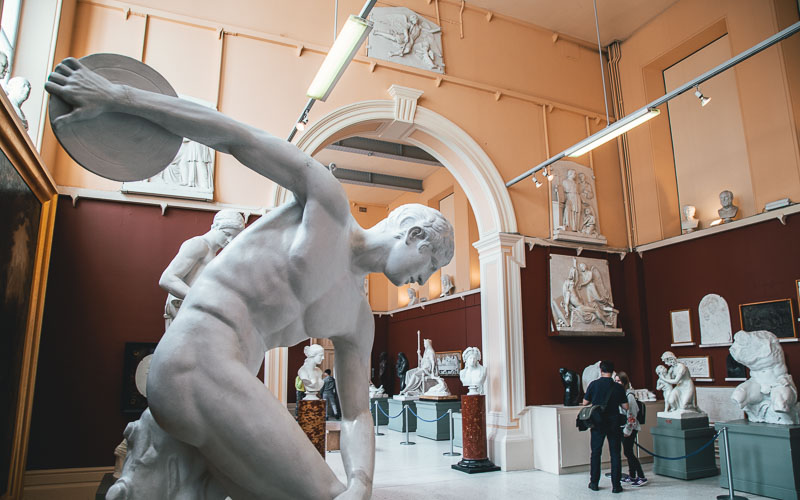
Follow the brown roadsigns
This is a slightly odd one, but a really fun one too! In Ireland, we mark historical sites and sites of interest with brown signs. As you’re driving along the road, especially on the backroads, keep your eyes peeled.
Big attractions also use these brown signs, so if you’re driving to the Cliffs of Moher or the Rock of Cashel, you’ll be following them too! While these big attractions are amazing, you might stumble across some equally stunning locations by accident!
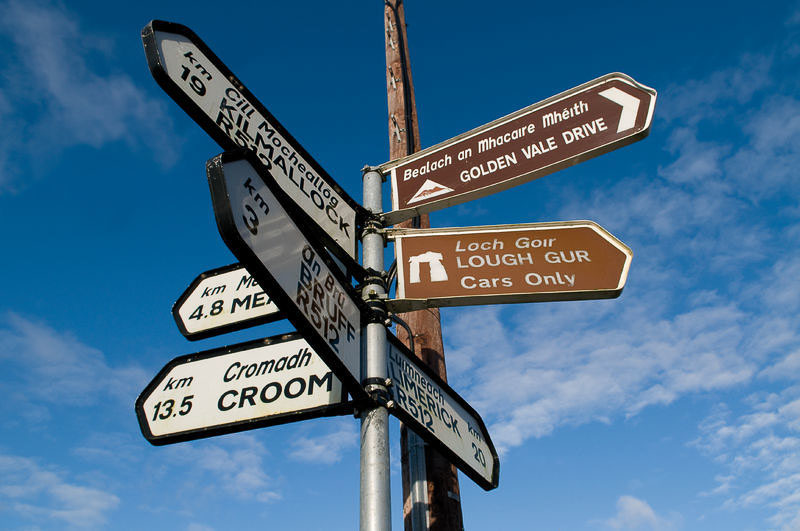
Off the beaten track
One such example of this is Castle Roche in County Louth. I followed the signs for it and ended up completely by myself at a stunning 13th Century castle!
Often these places of heritage are on private land, so if you do have to go into a field, please be respectful of the land, and seek permission if possible!
WARNING: This will significantly increase the duration of your drives! They may be down tiny roads with little or no parking, but that’s all part of the adventure!
Airbnb experiences
While this is starting to seem like an ad for an Airbnb, I promise it’s not! Airbnb experiences are a pretty new feature but it offers not only incredible opportunities but also great value.
You can take part in anything from normal guided tours to farm visits to cooking classes. There really is no standard price, but there’s certainly something to fit every budget!

Your Irish Adventure tours
In fact, Your Irish Adventure’s very own Oisin runs a few tours around Dublin, his most popular is where he will bring you around some of Dublin’s finest pubs and take your photo while you do! You can have a look at his Pubs and Pictures tour here!
Discounted Entry
This one is a bit tricky, but if you do end up going to paid attractions, keep an eye on your ticket. Often there’s a discount for another attraction on the back!
These change from time to time, so if someone tells you that you can get a discount from one place for another, take it with a pinch of salt. It might change by the time you get to it!
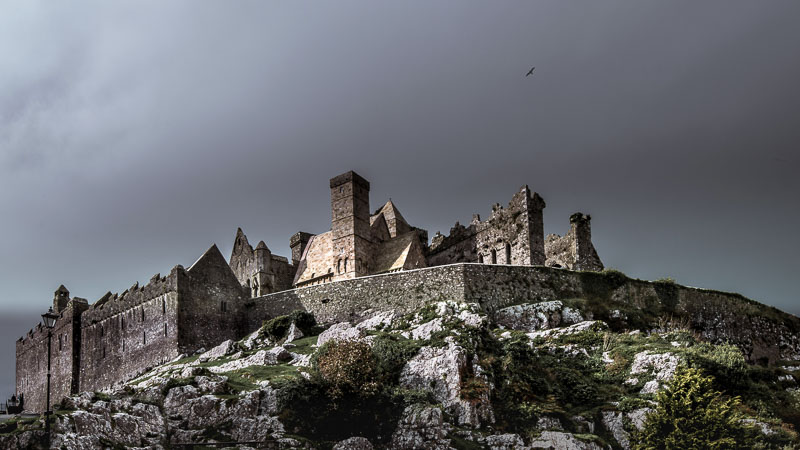
Support local business!
One thing that won’t change and that I think is a great idea is what the town of Cashel do. If you want free entry into the Rock of Cashel, all you have to do is to spend €15 in the town beforehand! The idea is to encourage tourists to go into the lovely town of Cashel and not just the castle!
Tickets to the Rock are €8 for adults and €4 for kids, but if you grab lunch beforehand you can avoid this completely! You can get more information on this on the town’s website.
Adding to our Ireland on a budget guide!
We’re finally at the end of our guide to visiting Ireland on a budget! I hope it was useful to you in some way, but do let me know if you have any other tips for saving!
Like This Article? Pin it!
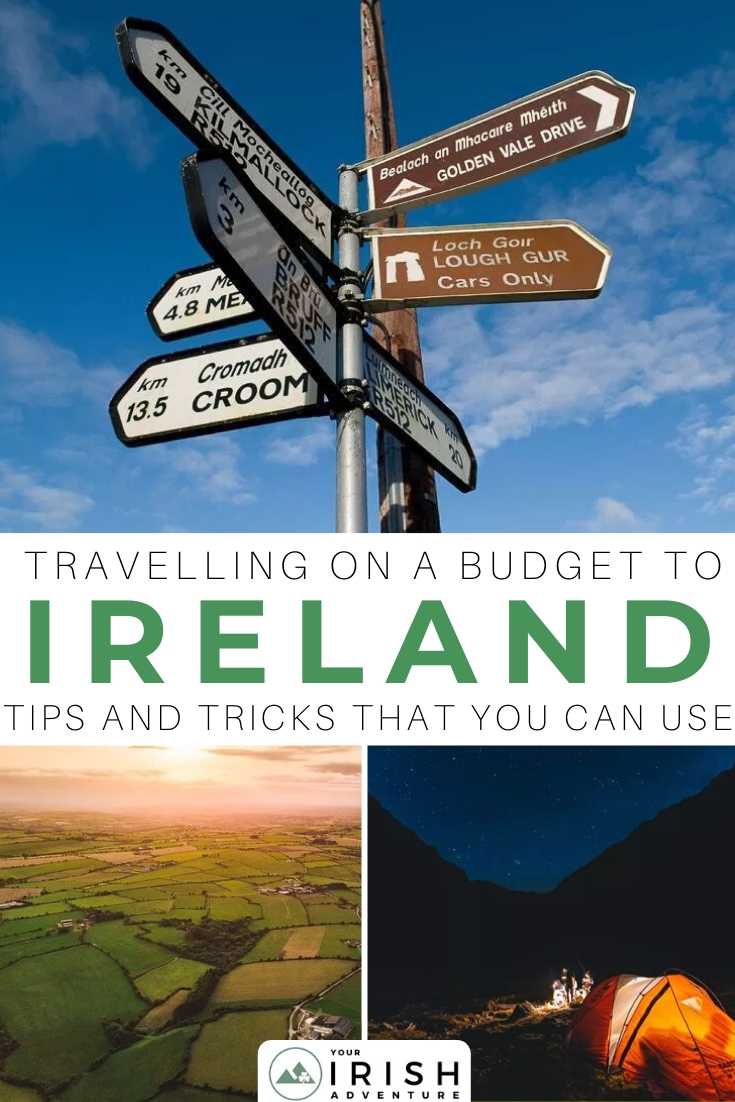
SHARE THIS POST
About The Author
Conorphelan.
Conor is an Irish born creative freelancer with strong experience as a camera operator, photographer, video editor, and writer. He graduated from Maynooth University. His work has taken him all over the world, but Ireland is where he calls home.
YOU MAY ALSO LIKE
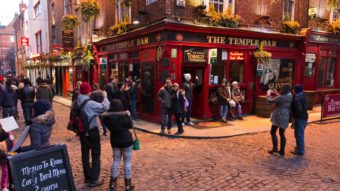
A Weekend in Dublin, Ireland: The Perfect 2 Day Itinerary
With a weekend in Dublin, you’ll be able to listen to trad music, explore historical sites, dine on tasty food, and meet friendly people. Read

Sleeping in Dublin Airport: Showers, Sleep Pods and Opening Times
Be it a dreaded early morning flight or arriving late at night, sleeping in Dublin Airport is often an easy option to save a few

Howth Cliff Walk: Complete Howth Hiking Guide
There’s no better way to explore the picturesque seaside town of Howth than by hiking along one of its many trails. And lucky for you,
Keep In Touch

Traveling Ireland On A Budget (How to Explore More for Less)
Travel author
I love traveling and writing about my exploits as a travel blogger and freelance writer. You’ll find me curled up in my reading corner, enjoying a cup of tea and a romance novel when not busy.
As an Amazon Associate, I earn from qualifying purchases
Ireland is truly not a cheap destination. The rich and lively Irish culture, rolling green scenery, and magnificent castles are worth a visit.
But can you travel to Ireland on a budget? Yes, you can. It all boils down to planning and some important tips from personal experience.
Table of Contents
Tips For Traveling Ireland On A Budget
We love traveling and made an exciting discovery the other day.
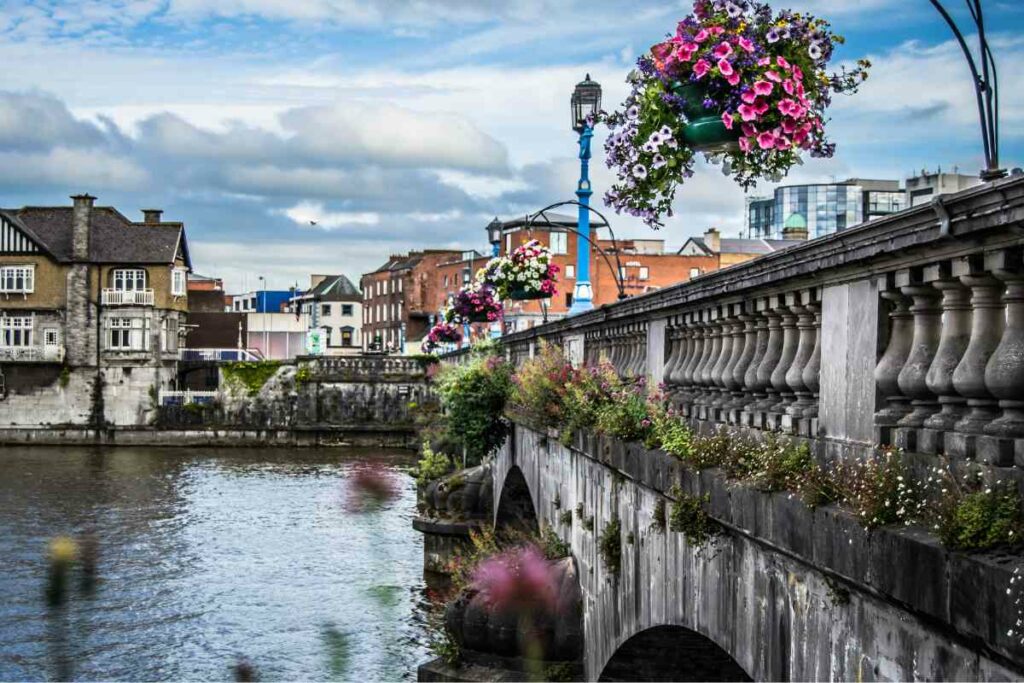
When you go to Ireland, one of the simplest ways to save money is to drive yourself and explore the enchanting landscapes.
An overnight stay in the cities is lovely, but you will get the most out of your trip by finding countryside gems.
There are plenty of historic castles, picture-perfect seaside destinations, and traditional pubs to catch a few pints undisturbed.
While you may not clean up your bank account, spending while on vacation in Ireland can get out of hand. There are ways to have an affordable holiday without going over budget or getting into credit card debt. Find out here Is Ireland expensive to visit?
Below are a few thoughtful tips for a cost-friendly trip to Ireland.
Plan, Plan Some More And Save
Proper preparation before any trip means you source for the best deals. Ideally, your Ireland journey should begin with finding flight deals, where to stay, food, and excursions to take. But first, save as much as you can.
While backpacking through Europe seems fun, you will need more than a few hundred Euros to spend a few days in Dublin.
Spending a little more to have a great time requires discipline, and saving up for travel is the only way to achieve this.
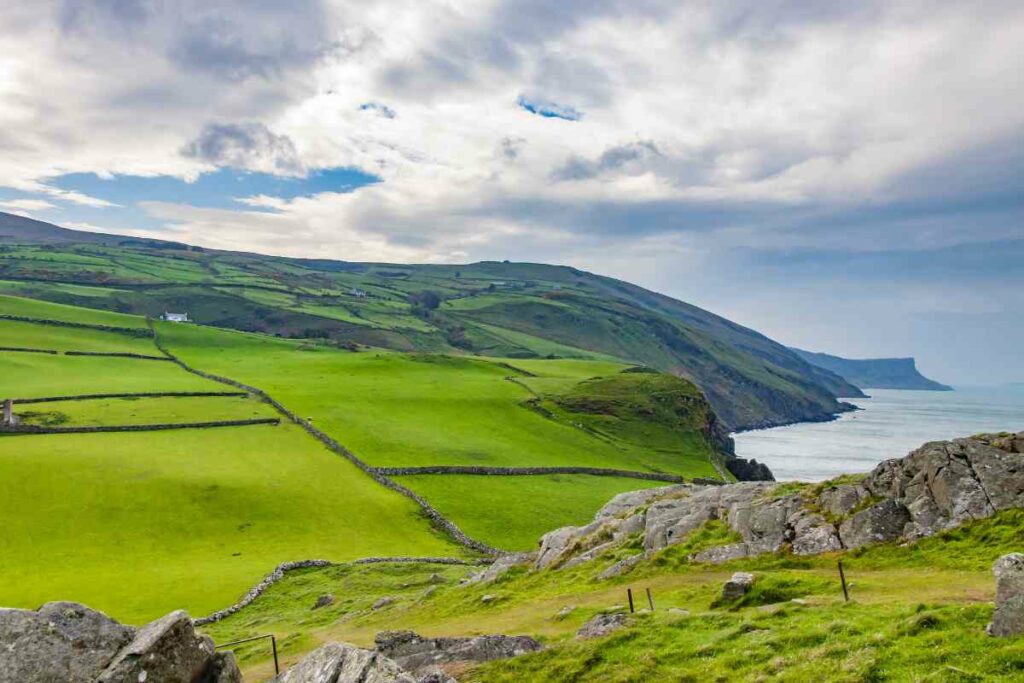
First, understand your budget and the experience you want to strike a good balance. Next, make a travel itinerary to have a better chance of sticking to your budget.
Lastly, scour the internet for bargains in Ireland, such as cheap accommodation options and public transport passes.
Get a Prepaid Debit Card
While cash is necessary, especially for local spots that may not take credit cards, having a prepaid multi-currency debit card is a plus.
It may seem convenient to have cash from home, but mainland Ireland transacts in Euros while the North uses Pounds. Converting your American dollars to the local currency will keep you going for a few days while your debit card provides safe backup money.
Of course, you can use your credit card , but there are higher chances of incurring more costs. If your goal is to travel to Ireland on a budget, the idea is to cut costs as much as possible.
Check out any travel perks your card issuer provides and make the most of them, especially travel insurance.
Read before you go to Ireland ?
- Is American Express Accepted In Ireland?
- Best Credit Card To Use In Ireland
- Can You Use American Dollars In Ireland?
Early Booking Is The Best
It is common knowledge among frequent travelers that early bookings save time and money.
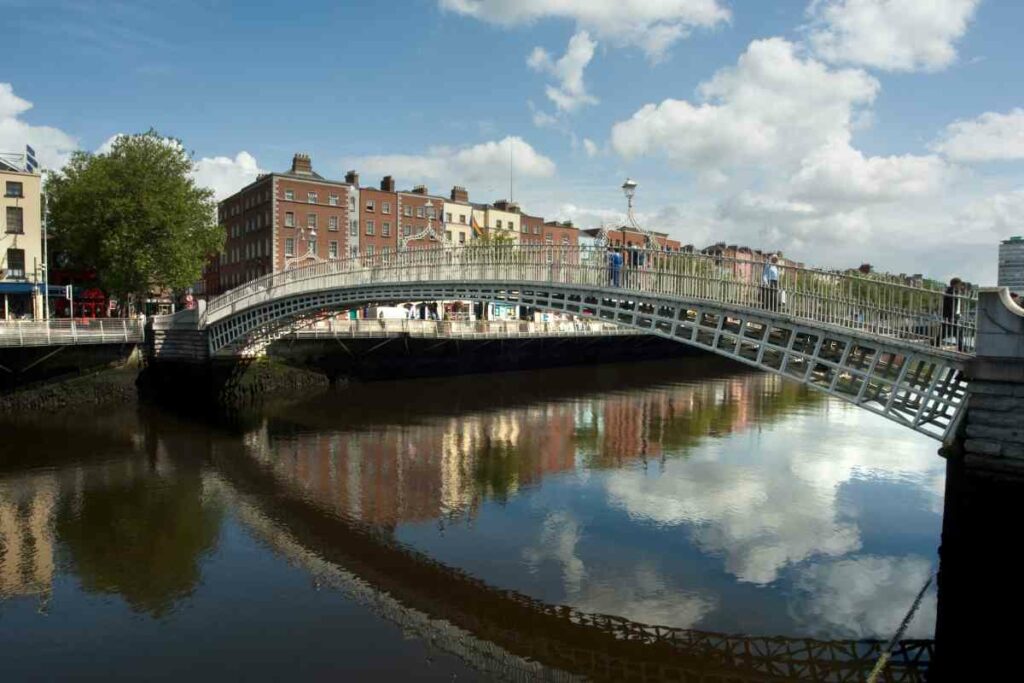
If it is your first time traveling, especially to Ireland, I’ll let you on a few secrets. Well, they aren’t new, but they will be helpful.
You can get cheaper flights and hotel accommodations if you book months before your holiday. Especially during the peak tourist seasons, rent a car in advance, and you will pay way less than on arrival.
However, if your trip to Ireland is unplanned, you will dig deeper into your pockets. For every extra coin you spend on travel expenses alone, save more by finding cheaper solutions once you get to your location.
Bring a Friend or Five
Having travel companions is always cheaper, unlike taking solo trips. Whether it is your spouse, children, parents, or group of friends, the more of you there are, the more money you save.
Group travel also attracts better rates, especially for transport and housing. If you share rooms, you can similarly split bills such as car rental and food costs.
Hire A Car For Moving Around Ireland
While finding public transport, especially in Dublin, is simple, renting a car is cheaper, especially if you are in a group. You will also be able to visit more places which offer a variety of things to do in Ireland.
The winding Irish countryside roads are popular with tourists, and you can travel further, even with a short itinerary.
Make time to visit all the favorite spots on the map, with a few surprisingly unknown ones, and make memories to last a lifetime.
Skip The Hotels
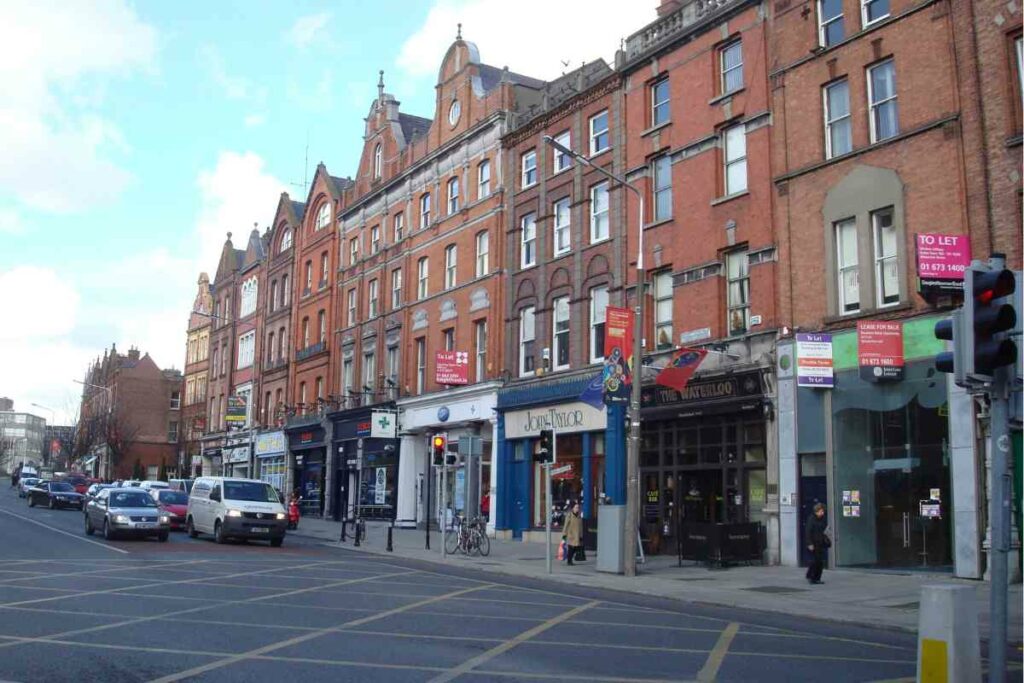
Hotels tend to take a substantial chunk of all holiday expenses, and if you are traveling to Ireland on a budget, consider skipping them. Hostels are perfect alternatives, especially for students and solo travelers.
For those with children, or if you prefer privacy, an Airbnb will offer the comforts of home with a dash of Irish tradition and hospitality.
Book a stay at some of the renowned castles in the countryside that have been converted into intriguing guesthouses.
Try The Great Outdoors
If you are an adventurous traveler, why not hike rural Ireland’s breathtaking, lush rolling hills?
Most parks do not charge entry fees; besides sightseeing, you will put in much-needed physical exercise. The perfect opportunity to burn calories and breathe in the fresh mountain air.
In summer, especially, the cities are packed with tourists and visitors from all over the world. Taking a day or two hiking trip gets you away from the crowds, and you will spend less money discovering new sights.

One Or Two Pub Visits Is Enough
The Irish pub culture is equally exciting as it is pricey.
With a single pint averaging 5 Euros, it is best to save money by spending less time in the pubs. Instead, drive to a local store and buy a case or two to enjoy in your guesthouse.
If your friends insist on a night out, have a strict budget that you will stick to. Alternatively, distract them by visiting the traditional Irish pubs that play catchy folk music to dance along.
Countryside vs. City Stays
The picturesque coastal views of the Irish countryside beat the street-packed cities every time.
A day trip driving along the rural roads is several times cheaper than a Dublin city tour. Take advantage of the panoramic views without spending a dime.
Moreover, accommodation in villages and small Irish towns is fair, and you will get more value for your money.
For instance, if you are a group of friends, a house in the country will cost less than city hotel rooms.
Purchase And Dine Local
You’ll want to try a hearty traditional Irish meal or two during your stay, but buy from small outlets to save on food costs. Eating each meal in a restaurant can be expensive, even on vacation.
Instead, shop at chain stores or supermarkets for groceries and snacks. In addition, ensure you have enough supplies if you visit or stay in the countryside.
The local neighborhood farms also sell fresh produce you can pick up daily, such as milk and eggs.
Travel During Low Season
Visiting Ireland in summer is costly, and the streets are packed with tourists.
With the high demand, prices of basic needs such as accommodation and transport increase. For those working with a budget, it may not be the best time to visit.
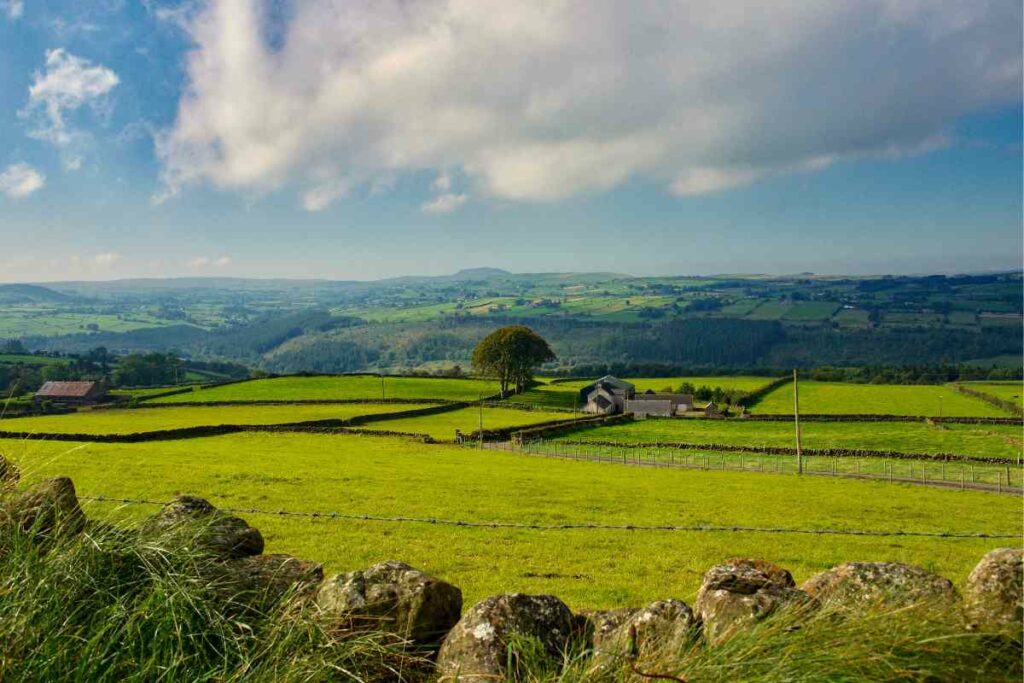
During the rest of the year, it gets less busy, and you can choose which season to go, between spring and fall.
Although the weather may be unpredictable, it is better than winter, and the costs remain unchanged.
Freebies Are Equally Attractive
While most tourist attractions and activities in Ireland charge a fee, a few locations have free access.
Hiking trails in national parks and seaside locations tend to be free for all, especially those away from the city.
Night strolls along the cliffs or historic streets of medieval Irish towns will take you down memory lane.
Their charm lies in the untouched local architecture and the friendly locals that have tales of living there most of their lives.
Save The Rest For Next Time
The beauty of travel is that you can visit the same place ten times and have a different experience with each visit.
Keeping your itinerary short helps you make the most of your travels. Besides, you will also spend less as you do not have to visit everywhere in one go.
- Read next – What is Ireland known for?
With all the above tips for traveling Ireland on a budget, you and your loved ones should have the best time without worrying about money.

Affiliate Disclaimer
As an affiliate, we may earn a commission from qualifying purchases. We get commissions for purchases made through links on this website from Amazon and other third parties.
Latest posts

Essential Driving in France Kit: What Drivers Need to Stay Safe and Legal

How to live on a Cruise Ship Cheaply

Top 10 Motorcycle Trips in Europe
Join the Ireland on a Budget Travel Planning Tips Facebook Group

How to Plan a Vacation to Ireland in 7 Steps
- Post author: colette
- Post published: March 18, 2024
- Post category: Planning / Vacation Tools
- Post comments: 0 Comments
Do you want to know how to plan an Ireland vacation? If so, you’ve come to the right place.
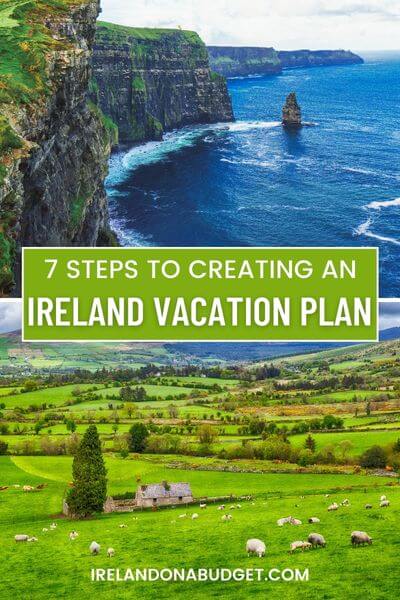
From deciding when to go and how much it will cost to figuring out what to take and how to access Wifi, it’s all here so you won’t be completely overwhelmed, and it will make planning your trip planning easier and more enjoyable.
Simply follow the 7 steps in this guide.
Table of Contents
Step 1: Decide When You Want to Go to Ireland and How Much You Are Prepared to Spend
When to go to ireland.
From a budget perspective, the best time to go to Ireland is during the shoulder season, which is roughly mid-April through May and late September through October.
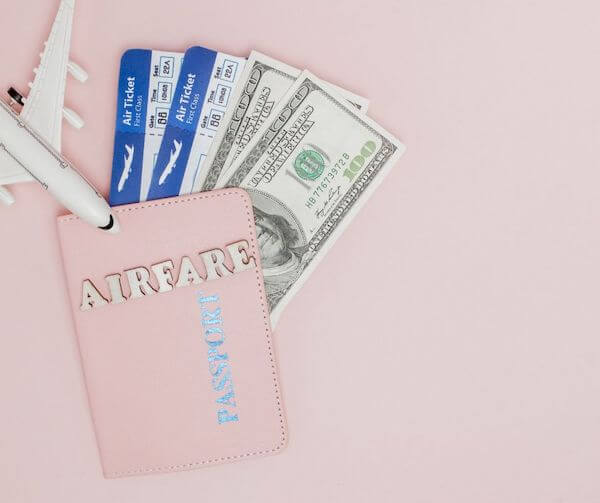
This is when the airfares are lower and when accommodation is more available — and cheaper too.
The weather in Ireland during the winter tends to be cool and damp, making it more difficult for outdoor activities but there may be days when it’s totally fine, so be sure to dress in layers and you’ll be fine.
During the winter months, the days are short so there’s not much sunlight compared to the summer months when it rarely gets dark before 10:30 p.m.
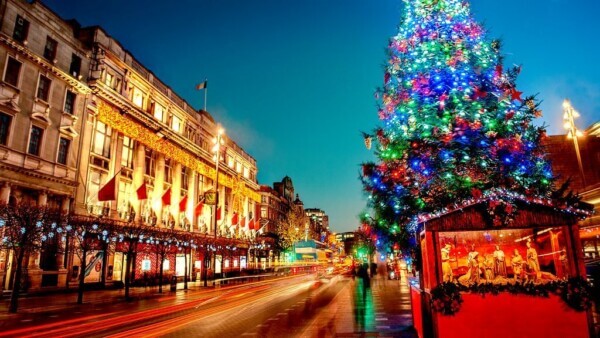
December in Ireland could be an ideal time if you love Christmas markets and cozy evenings by an open turf fire sipping a Guinness or some other cool drink.
Read the full article on the best time to visit Ireland
How Much Will It Cost?
Ireland isn’t exactly the cheapest destination, but that doesn’t mean you can’t visit it on a budget.
Of course, the word budget means something different to everyone and a lot of your spending will depend on your expectations, interests, and travel style.
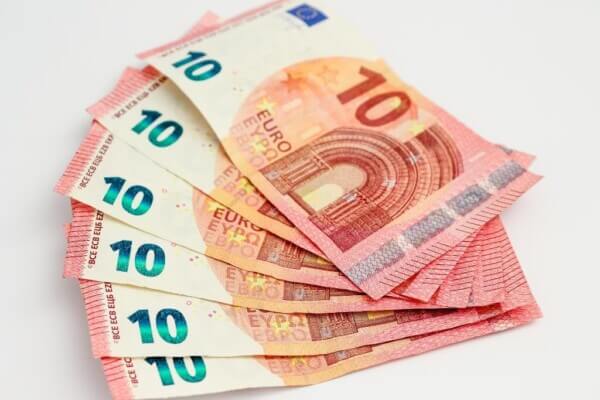
As noted above, if you travel to Ireland during the off-season, you will find that your vacation costs are less.
In general, I suggest that you put aside €150 to €200 for additional spending, which will cover meals and other incidentals in case a vendor does not accept credit cards or if it is needed for a taxi, for example, although most do accept electronic payments.
Since the cost of everything has gone up all over the world in these post-pandemic times, it should come as no surprise that vacationing in Ireland will be more expensive in 2024, as it is throughout Europe in general.
Flights to Ireland are generally cheaper in the fall and winter months.
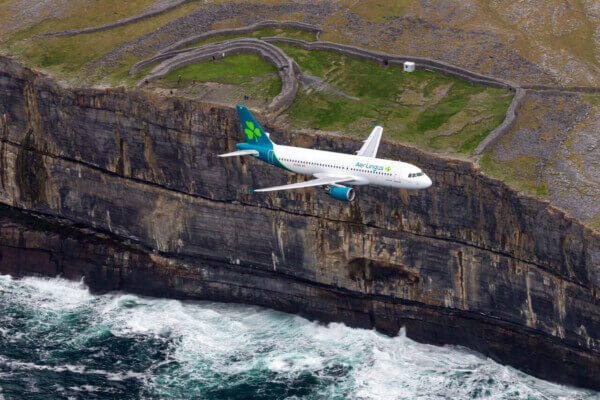
Check out Aer Lingus for their latest offers or simply go to Google Flights, put in your desired travel dates and let the system tell you when the fare goes up or down. I suggest doing this several months out so you can grab the cheapest fares.
Read the full article on budgeting for your trip to Ireland
Step 2: Do Your Own Research
There is undoubtedly a mountain of resources out there about travel to Ireland, including information on news sites, in magazines, blogs like this, Instagram, Facebook groups and so on.

It can get confusing, which is why I recommend you look at one or two resources, then assemble your thoughts in a notebook so that you can decide what parts of Ireland you really want to see and what attractions are in those regions.
Traditional guidebooks are still popular since most of them are well researched and structured and will give you lots of information on destinations in Ireland as well as tips on how to find out-of-the-way places or other practical tips that will help you plan your vacation.
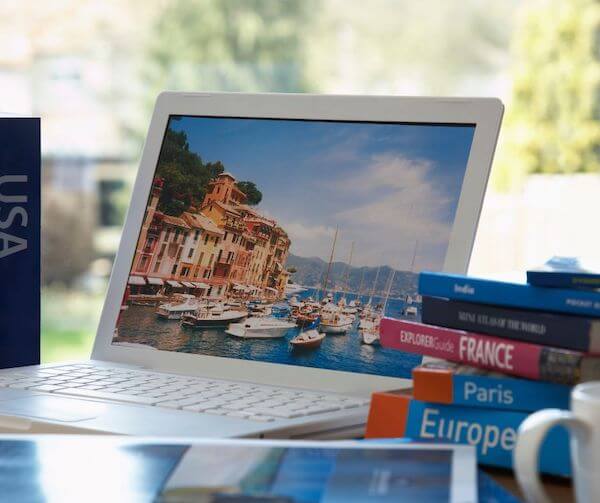
By clicking on the Amazon link below, I may earn a small commission from the Amazon Associates Program. However, you will not incur any additional costs by doing so.
Rick Steves’ guidebooks are always popular as are the guidebooks published by Lonely Planet , but of course, there are others too. So, visit your local library or bookstore and pick one that appeals to you. Do not order Amazon travel books that are being widely promoted by spammers in Facebook groups.
Group Tours vs. Private Tours
There are several types of tour companies in Ireland , some that offer only day tours and others that offer inclusive tours that include accommodation.
Many do not include airfare. Those that do include Aer Lingus and Gate 1 Travel , just to name two.
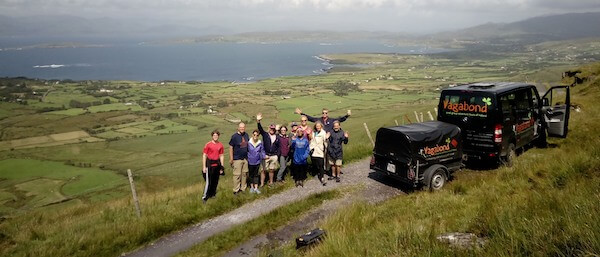
I’ve personally used Gate 1 for travel to other areas of the world and can highly recommend them as a budget-friendly tour agency.
Private tours cater to small groups like families who don’t want to go on a tour bus with 50 or more people. These generally cost more but like group tours, can vary a bit in terms of price and in what they offer.
If you want more flexibility, then a private tour might suit your needs.
Passports and Visas
Before you do anything else right now, check to see if your passport is valid and if you require a visa to enter Ireland.
Most people (those coming from Canada, the United States, the UK, New Zealand, and the European Economic Area ) are allowed to visit Ireland without a visa for a period of up to 90 days.
However, residents of some countries are required to apply for a Short Stay C visa to visit Ireland.
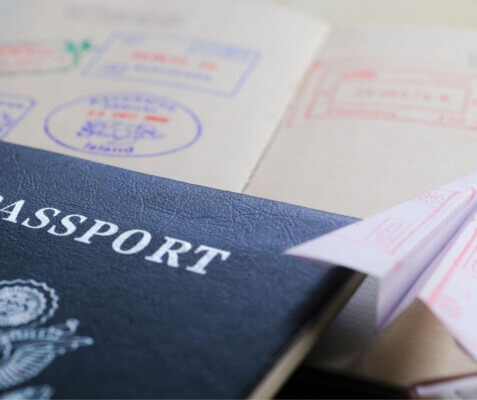
You will find more information on the Irish government’s immigration website .
According to the U.S. State Dept. , there is no minimum passport validity requirement for U.S. citizens entering Ireland.
Contact your country’s passport control office to find out its specific requirements when traveling to Ireland.
Read more about our tips and advice to get you to Ireland safely
Step 3: Planning Your Itinerary
Planning an Ireland vacation itinerary is perhaps the hardest part of getting ready to visit Ireland.
While Ireland is a small country, there’s plenty of ground to cover and attractions to see.
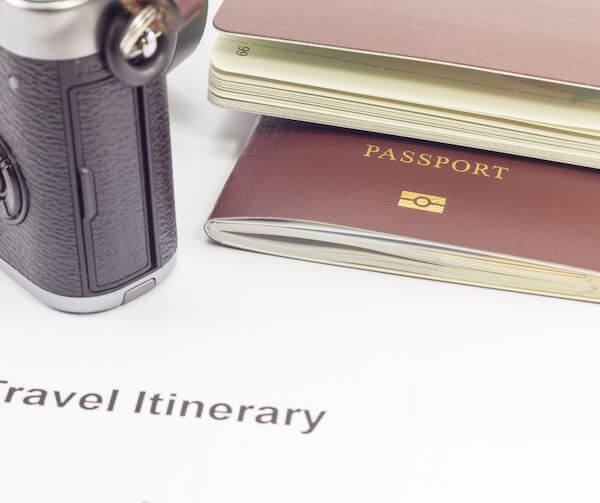
As a general rule, it might be best when you are creating your itinerary to spend at least 2-3 nights in each place so that you can enjoy each region as much as possible.
If you are planning a 10-day itinerary, for example, then 3 main stops would be good idea. Of course, you may want to divert from that, which is perfectly fine too.
But don’t try to do too much as you’ll simply feel exhausted toward the end of your trip, and you may regret not staying in a particular place for longer.

Where Exactly to Go
Provided that you have done some research on this website or another one, or you have purchased a travel book, you’ll more than likely have a fair idea of where you want to go.
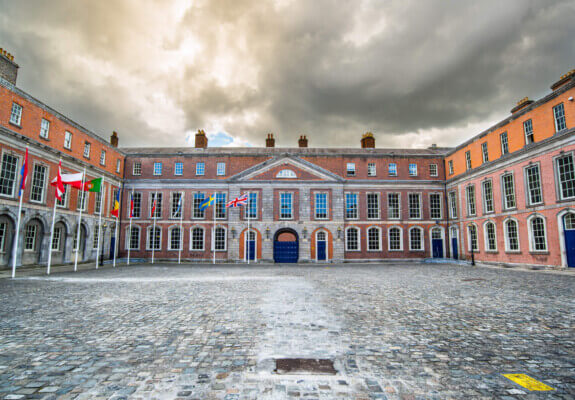
Ireland’s most popular cities/towns include the capital Dublin, Galway, Cork, Belfast (technically in Northern Ireland but on the island of Ireland), Kilkenny and Killarney.
On the Ireland on a Budget website, you’ll find information on other, lesser-known or overlooked destinations as well as information on gem attractions that you might want to add on to your itinerary.
The destinations page is currently being updated, so check back for more information on additional locations to see in Ireland.
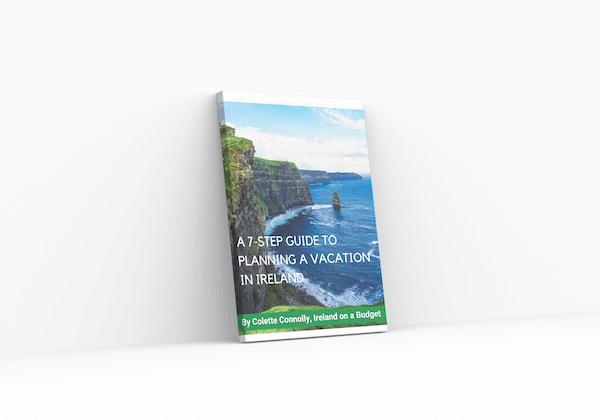
You can purchase an e-book version of this post on the Ireland on a Budget Etsy Store .
Suggested Itineraries
If this is your first trip to Ireland, like other first-time visitors, you will most likely start your journey in Dublin .
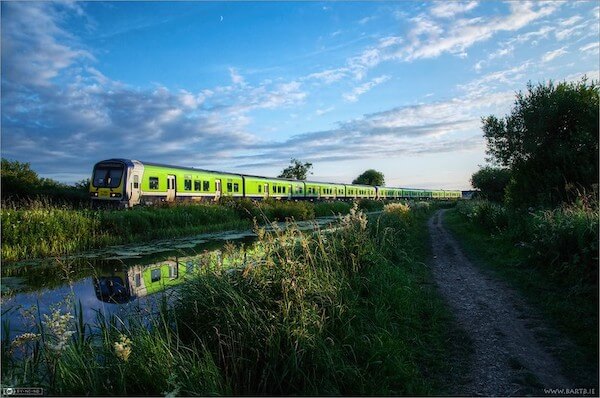
If you’re not planning to rent a car and you’ll be using public transportation instead, this 14-day itinerary will give you some ideas as well as educate you about Ireland’s buses and trains and how to navigate the country using them.
If you do have a rental car, this 10-day itinerary will also be helpful.
Discover Vacation Homes in Ireland
When to Start Booking Your Trip
Now that the pandemic is squarely behind us, travel has resumed to normal levels again and that means that Ireland — and Europe in general — is very popular, especially during the summer months.
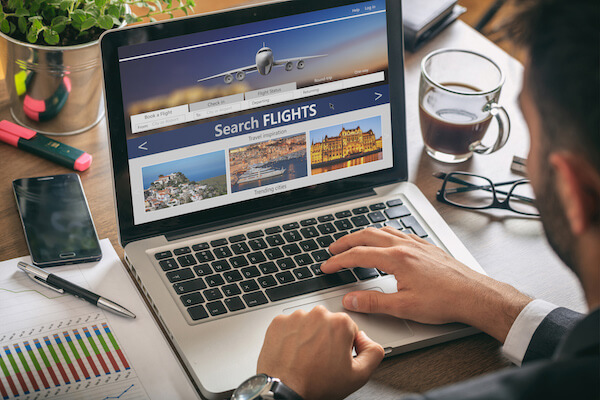
I suggest that you start doing some airfare research by creating a Google Flights alert, which will tell you when the fare goes either up or down for your travel dates.
You should also sign up for emails from Aer Lingus so that you know when their airfare discounts are being released, in addition to knowing what American , United and Delta airlines are offering.
Booking accommodation in advance (6 months at the very least) is crucial as Ireland is suffering from a shortage of accommodation due to the migrant crisis.
Day Tour Bookings
Day tours to popular attractions like Newgrange , the Book of Kells and Kilmainham Gaol sell out very fast so be sure to book those in advance.
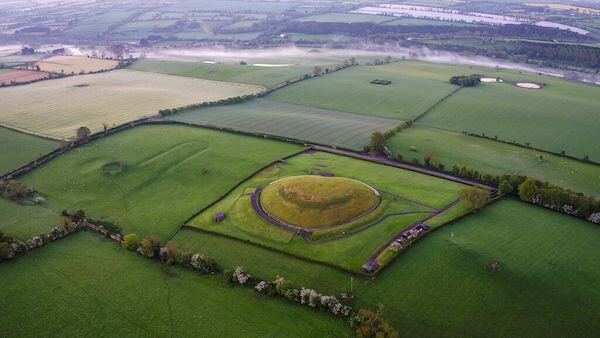
You can use Get Your Guide or Viator to search for day tours in Ireland.
Step 4: Book Your Flights and Travel Insurance
Most flights to Ireland are direct unless you’re in a part of the U.S. or other country where a connection is required.
International flights come into either Dublin or Shannon. You can also fly into Belfast easily from the U.K. or if you want to bring your own car , a ferry would be necessary.
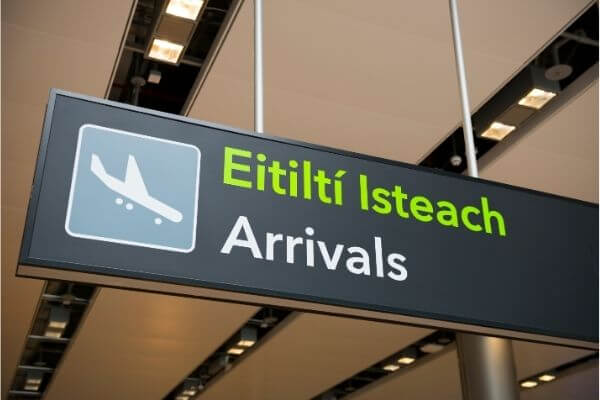
If you’re traveling from the U.K. or mainland Europe, you may be flying into Ireland’s regional airports, including Cork Airport , Ireland West , or Belfast International Airport in Northern Ireland .
To find the best flight deals, you could use a variety of flight aggregators, including Google Flights , Skyscanner , CheapoAir , AirfareWatchdog , Momondo , the Way Way app that gives you cash back on travel purchases, and more.
Travel Insurance
Once your flights are booked, you should consider purchasing travel insurance to cover you if an unforeseen medical emergency happens while you are in Ireland.
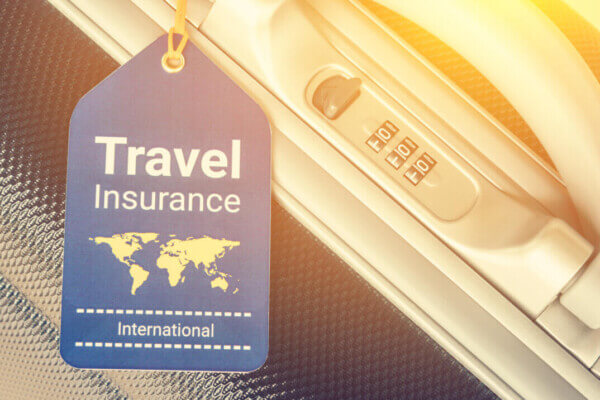
I recommend looking into Travel Master insurance coverage, a service that will allow you to compare quotes and insurance policies from different companies.
Step 5: Book Accommodation and Transportation (Either Public Transport or Car Rental)
Accommodation.
If you’re not purchasing an all-inclusive tour package, you’ll need to book accommodation yourself, and that should definitely be an integral part of your Ireland vacation planning.
Ireland has an assortment of hotels, B&Bs, Airbnb accommodation and additional rentals.
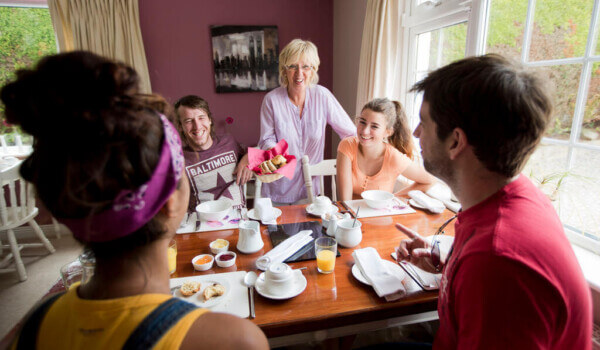
You could use Booking.com to make reservations.
There are many hotel search websites to choose from, including Hotels.com , TripAdvisor , Expedia , Trivago , and others.
Perhaps you are a member of a hotel rewards club like Hilton Honors , IHG , Raddison , Marriott or another hotel chain and you can earn rewards by staying at their properties in Ireland.
Take $25 off your hotel reservation when you sign up with Hopper. Click on the link below to get the special Ireland on a Budget savings code.
Sign up for Hopper
Additional Reading:
- Affordable Hotels and Guesthouses in Dublin: 8 You Should Know About
- Where to Stay in Cork City: 7 Hotels & Guesthouses to Suit Your Budget
- 10 Affordable Hotels in Belfast that are Worth Staying In
- 10 Affordable Hotel Stays in Galway City
Bus and Train Travel in Ireland
During the busy travel season, it’s best to book your bus and train tickets if you are relying on public transportation to get around Ireland .
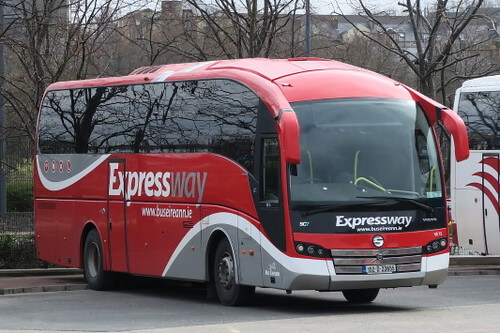
The best way to do that is to log on to the websites directly. Bus Eireann is the primary provider of bus travel in Ireland, although there are several private bus companies in operation too.
They include Aircoach , which provides a service from Dublin Airport to places around Dublin as well as Galway , Derry and Belfast, in addition to Dublin Coach, which has an extensive service to many places around Ireland.
Irishrail.ie is where you can book train tickets. Dublin is the main hub for Ireland’s rail system, and it is where the primary train routes will originate from.
Getting to some destinations by train may require a transfer to another line or to a local bus.
If you want to know the distance between destinations in Ireland, you could use Google Maps or Rome2Rio , a popular app.
Find Your Irish Ancestors with Ancestry.com – try a free trial for 14 days
Car Rental in Ireland
Renting a car to see Ireland is really the best way to explore the country as it will give you more flexibility and you’ll be able to get to places that public transportation won’t get you to.
However, renting a car in Ireland can be expensive, especially during the busy tourist season.
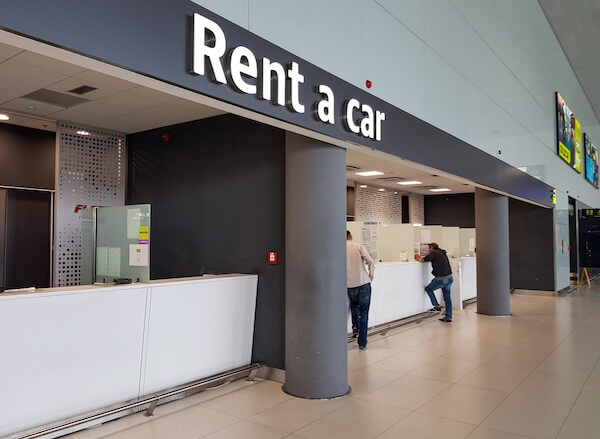
You can drive with your home license when renting a car in Ireland.
Standard transmissions are the norm in Ireland but if you can’t drive one or you’re not comfortable using a stick shift, you can easily rent an automatic. The cost will be higher though.
Rent a smaller car (the smallest that will fit your luggage) to keep the costs down.
I suggest booking with Discover Cars as it will give you a range of choices with many different car rental companies.
Read more about renting a car in Ireland with the right credit card
Step 6: Book Activities and Day Tours
Major attractions to put on your itinerary.
Dublin, Cork, Galway, and Belfast in Northern Ireland are among the top cities for tourists visiting Ireland.
As part of your Ireland vacation planning, you should include at least some of these places on your itinerary.
- Book of Kells – official ticket site or see the Book of Kells exhibition, Dublin Castle and Christ Cathedral all on one tour .
- Guinness Storehous e – buy tickets on Get Your Guide .
- Kilmainham Gaol – official ticket site.
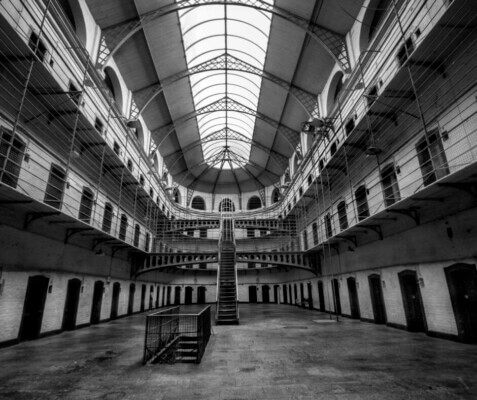
- St. Anne’s Church & The Shandon Bells – official ticket site.
- The English Market – official website or take a Cork Culinary Tour .
- St. Fin Barre’s Cathedral – official ticket site.
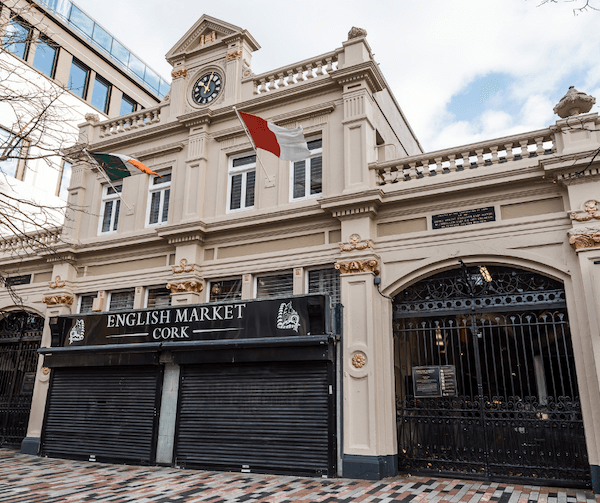
- St. Nicholas’s Collegiate Church – Free admission.
- Hop On Hop Off Bus Tour – buy tickets on Get Your Guide .
- Galway Museum – free admission.
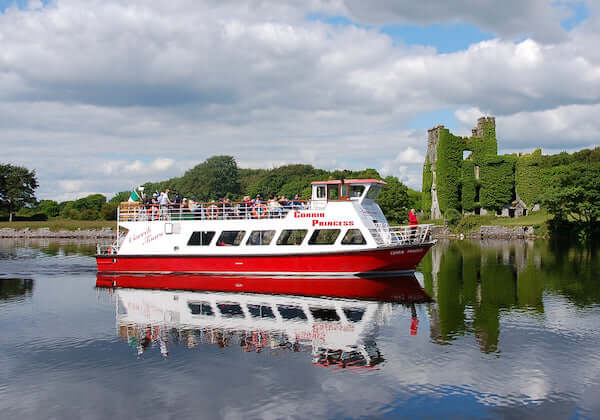
- Titanic Belfast – buy tickets at Get Your Guide .
- Black Taxi Tour (includes Peace Walls) – buy tickets at Get Your Guide .
- Hop On Hop Off Bus Tour – official ticket site or buy tickets at Get Your Guide .
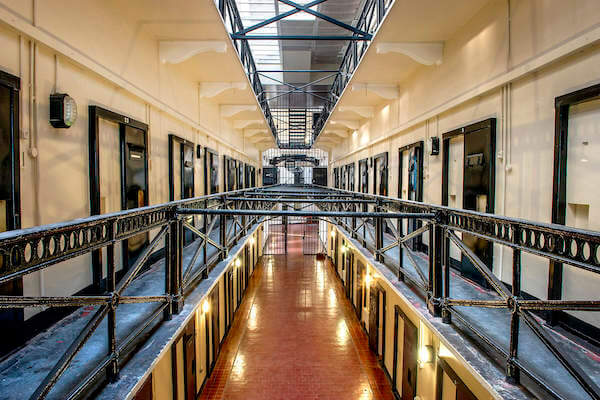
If you want to learn more about attractions in a specific region, a day tour may be the solution for you. If are relying on public transportation, this option is ideal.
You’ll find ideas on day trips from Dublin , Cork and Galway on this website.
Step 7: Get Ready For Your Departure to Ireland
As a longtime member of the European Union, Ireland uses the Euro currency. Northern Ireland uses the British pound Sterling.
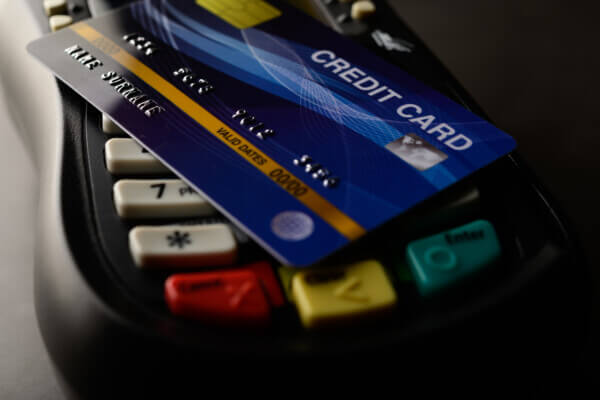
There is no need to carry a lot of cash on you.
Around €150 to €200 should be sufficient for the purchase of incidentals throughout your trip. If you need more, there are ATMs all over Ireland.
Credit and debit cards are used widely. Mastercard, Visa and American Express cards are accepted (although Amex is not accepted by all merchants). Discover cards are unlikely to be accepted in Ireland.
Be selective about the cards that you bring with you. I suggest using a credit card that does not charge a foreign transaction fee since those fees will add up as you use ATMs and charge for meals and other expenses while in Ireland.
If you need to exchange currency in Ireland, the cheapest place to do it is at any local post office in the Republic of Ireland.
Arranging Transport from the Airport
If you are flying into Dublin Airport, you might want to book a taxi beforehand or you can take a bus to the city center, which can also be booked in advance.
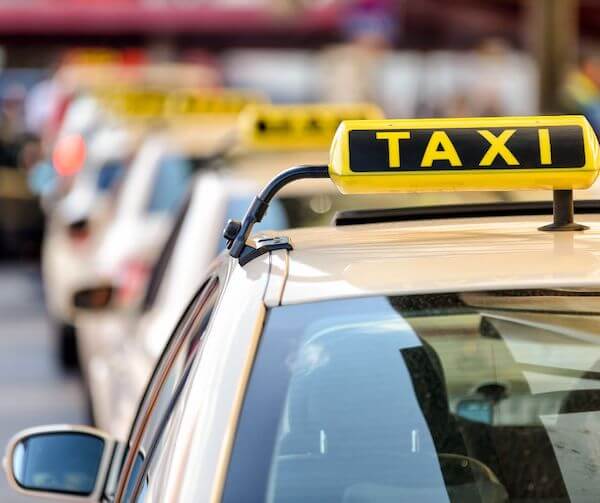
The estimated cost is between €25 and €30, which is payable in cash or by credit card .
If you are arriving in Shannon Airport and you are not renting a car, you’ll have to rely on buses to get you to your destination.
I encourage you to book your travel ahead of time on Bus Eireann. You can find more detailed information on the Shannon Airport website .
Fares are around €20 one-way but it depends on the destination.
Planning Internet Access
Many people want to know how they can access Wifi cheaply in Ireland , and there are several ways to do that.
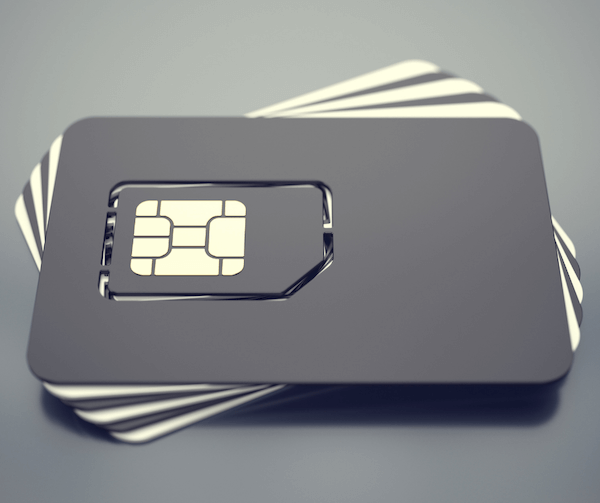
- Use your cell phone provider’s roaming plan – this is probably the most expensive option but it is undoubtedly the easiest as there is nothing for you to do when you get to Ireland. Just continue to use your phone as you would at home, and you will be billed accordingly.
- Local SIM Card – buy a local sim card at Dublin Airport (available at the WH Smith bookstore in Terminal 1 and at the Spar convenience store in Terminal 2). You could also wait until you reach the city center to buy one in any mobile phone store. For €25, you can get 20 gigabytes of data and 100 minutes plus unlimited texting capability within Ireland that is valid for about 30 days. Once you insert the local SIM card, you'll get an Irish mobile phone number.
- Ordering an e-sim from Airalo is another budget-friendly alternative. E-sims work best on newer phones.
- Use a portable Wifi device like Wifi Candy that provides unlimited data throughout Ireland – take 10% off with code IOB2024.
- Or you may just want to turn your data off and use Wifi when you can get it in hotels, restaurants, pubs and such. And that option won’t cost you anything.
Packing for Your Ireland Trip
When packing for your trip to Ireland, it’s best not to bring too much.
If you are planning to see Ireland using public transportation, be sure to bring luggage that can withstand getting in and out of buses and trains.
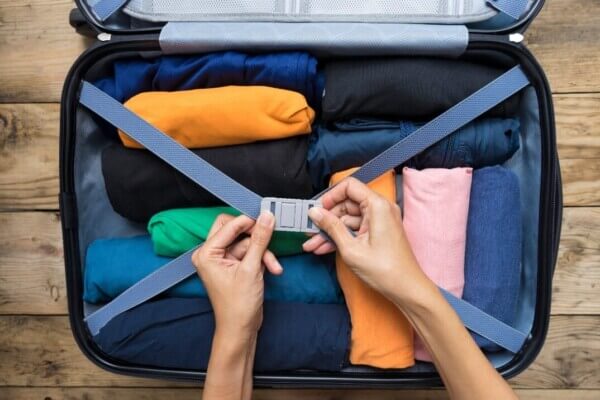
My advice is to bring a medium-sized piece of luggage that can be checked in plus one carry-on item.
If you decide to travel with carry-on luggage only, be sure to read the Ireland on a Budget carry-on luggage guide .
Read more about packing for your trip to Ireland
Must-Have Items for Your Ireland Vacation
By clicking on the Amazon links below, I may earn a small commission from the Amazon Associates Program. However, you will not incur any additional costs by doing so.
Luggage – American Tourister makes a variety of different types of luggage that is affordable, durable and suitable for any type of traveler. The company is owned by Samsonite, a familiar brand.
Travel Notebook – get the Ireland on a Budget notebook where you can record all your vacation plans in one place.
Itinerary Guides – get the Ireland on a Budget itinerary guides on Etsy .
Backpack – a sturdy backpack is handy when you’re on the go and especially handy if you intend to hike or take long walks in Ireland’s beautiful countryside.
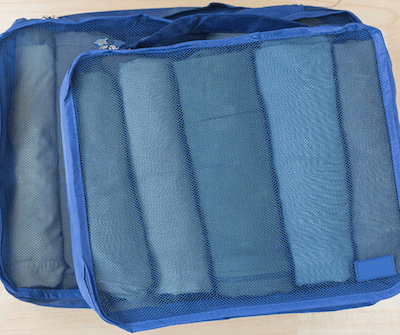
Packing Cubes – these nifty products do a great job of keeping your clothing and other items neatly packed and it’s an economical use of space. Used by me personally on my trips to Ireland and elsewhere.

Plug Adapter – you will need an adapter to charge your phone and other electronic devices in Ireland. Converters are rarely needed unless you have something that is not dual voltage, and most new products are capable of this.
Mobile Phone Battery Charger – a must-have if you’re on the go a lot.
Are you struggling with how to plan a vacation to Ireland? If so, you might want to also join our growing Facebook community .
You Might Also Like

Top Ireland Travel Questions Answered

Traveling to Ireland in 2024: 4 Things to Keep in Mind

Getting to Ireland the Smart, Affordable Way
Leave a reply cancel reply, about ireland on a budget.
Ireland on a Budget is dedicated to providing you with the most up-to-date information on how you can get to Ireland on a budget and save money once you’re there. In other words, getting you to Ireland the smart way and saving money while you’re there!
Ireland on a Budget is a participant in the Amazon Services LLC Associates Program, an affiliate advertising program designed to provide a means for sites to earn advertising fees by advertising and linking to Amazon.com.
© Connolly Communications, LLC 2024. All Rights Reserved
Privacy Overview
Join our Adventure: Get a FREE E-book for traveling Europe on a budget!
Nova on the Road
Ireland Budget Travel: Essential Tips for Traveling Ireland without Breaking The Bank!

Share this post!
A full breakdown of our trip to Ireland and the best tips for Ireland budget travel.
Ireland, the Emerald Isle, is a land where history, culture, and natural beauty converge to create an enchanting tapestry. And here’s the secret – you don’t need to break the bank to experience its magic. Welcome to our Ireland budget travel guide, where we’ll unravel the mysteries of this captivating country while keeping your wallet happy.
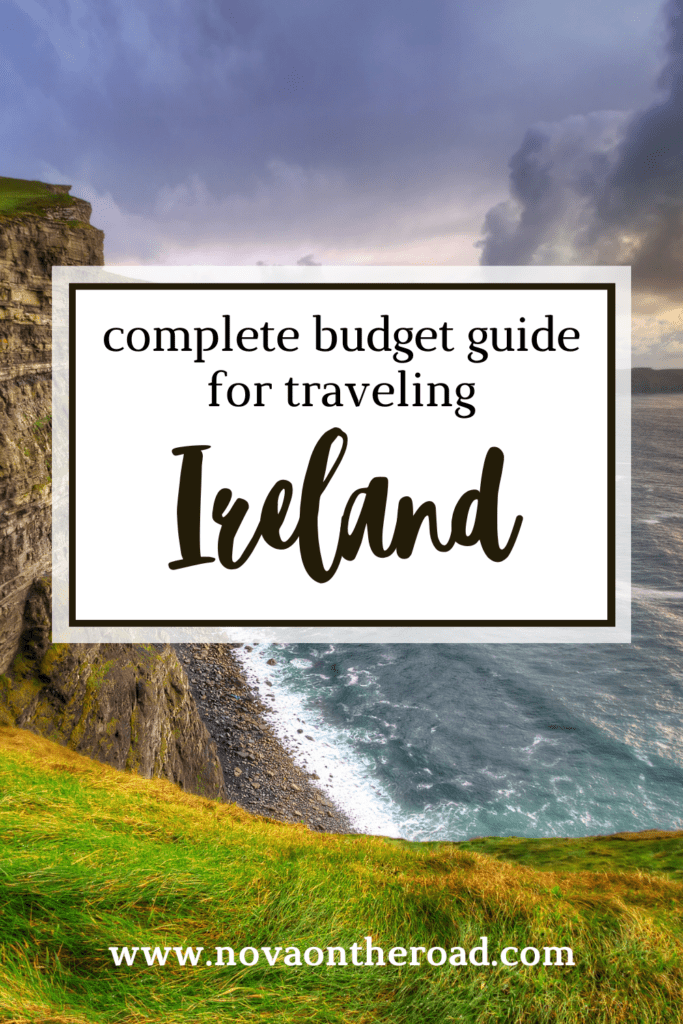
In the infographic below you can find the cost of traveling to Ireland. Besides our budget breakdown, I will give you ”budget options”. With these options, you can stay in Ireland for less money and stretch your budget to the max.
This post was written by Lotte from the travel blog Phenomenal Globe . She’s a lovely person who writes great content. Through a wonderful collaboration, I now edited and published this post. Check out her awesome travel blog.
Disclosure: This post may contain affiliate links, which means that if you purchase through one of the product links, we’ll receive a small commission at no cost to you. We only promote products and services we 100% believe in. Thank you so much for supporting us! Read more about it in our disclosure policy .
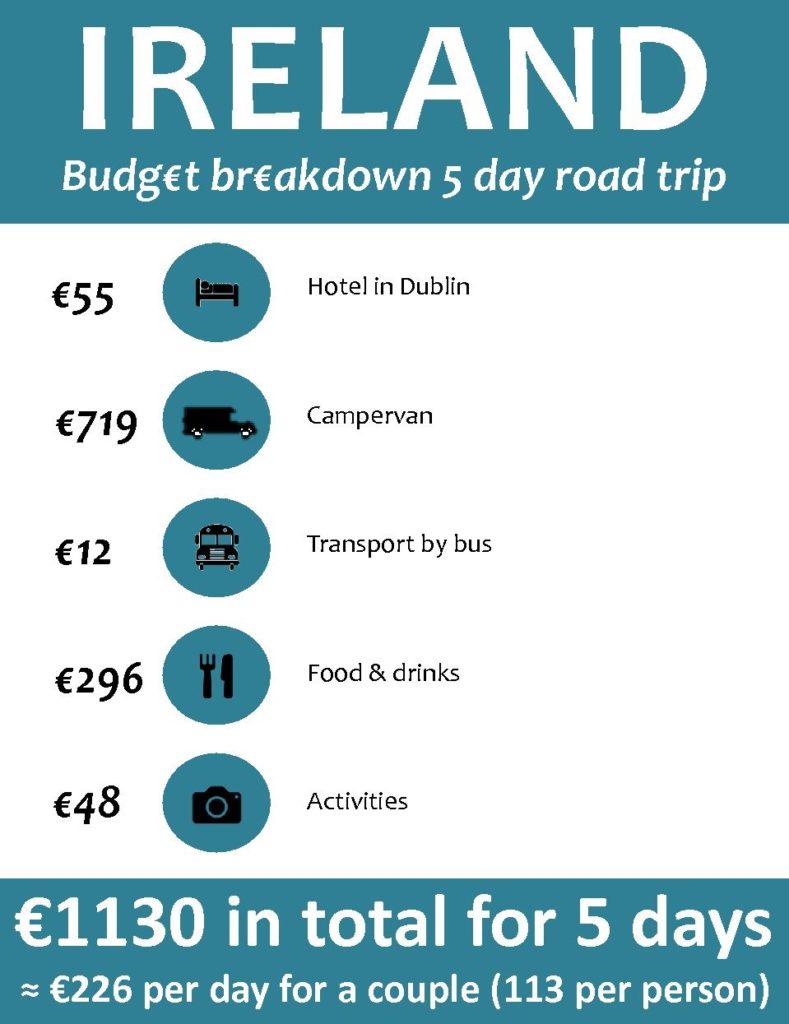
Make sure to read through to the end, to learn about every budget tip!
Table of Contents
Ireland budget travel: essential facts and figures
• I traveled to Ireland with my husband (obviously, it was our wedding anniversary), all expenses are for the two of us together .
• I spent 5 days in Ireland , in total we spent €1130. This comes down to an average of €226 a day for us as a couple and includes all our expenses in Ireland.
• It does not include our airplane tickets from the Netherlands to Ireland and back home.
• My trip started and ended in Dublin , take a look at our Ireland road trip itinerary .
Ireland budget: travel expenses
Our Ireland expenses are divided into 5 categories:
- Hotel in Dublin: 5% of our costs
- Campervan: 64% of our costs
- Transport by bus: 1% of our costs
- Food & drinks: 34% of our costs
- Activities: 4% of our costs
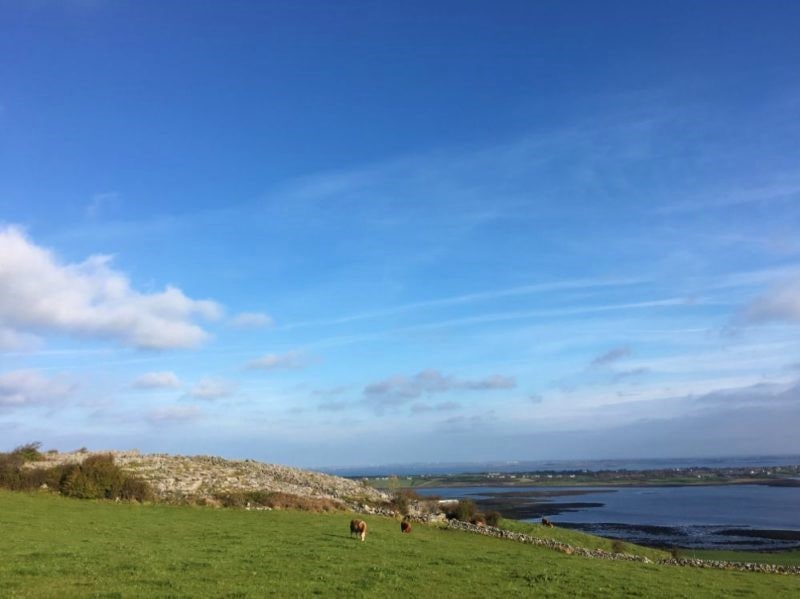
1. Budget hotel in Dublin
We stayed at Hotel St. George and paid €55 for a night, not including breakfast. The room wasn’t big, but it was recently refurbished so everything was clean, tidy, and smelled very fresh.
The hotel is a stone’s throw from the busy Upper O’Connell Street and you can easily walk to the main sites in Dublin. Checkout time was noon which was very convenient!
Budget option : There are some hostels for about $30 a night. Great for traveling alone. However, if you’re traveling as a couple, the hotel above will be your best option. Airbnb‘s are crazy expensive in Dublin, only worth checking out if you’re traveling with a bigger party.
2. Renting a campervan in Ireland
The total cost of renting a Vista campervan from Bunk Campers for 5 days was €719 , which comes down to €144 per day. Considering this is the combined costs for accommodation and transport which I think is very reasonable for a country in West-Europe.
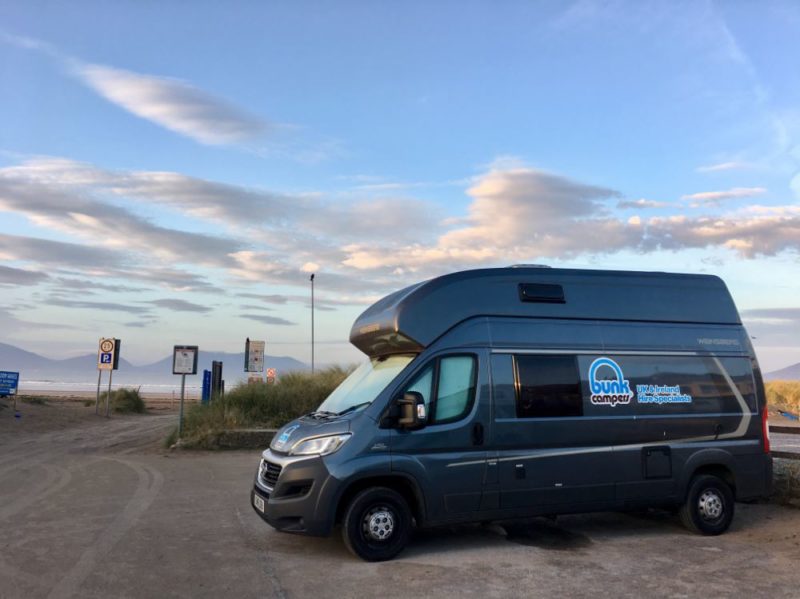
Our campervan expenses include :
- Rental fee ⇒ a Vista campervan costs ~ €73 per day, for 5 days the total amount is €365.
- Additional insurance ⇒ optional, but I had a parking accident in New Zealand and was so happy this was covered by our collision waiver damage. Having extra insurance just gives me peace of mind.
- Petrol ⇒ between €1,17 and €1,22 per liter. We drove 1400 kilometers in total and paid €138 in total for diesel.
- Toll ⇒ on the M roads (highways) of Ireland you have to pay a toll. It costs €1,90 for a car (also for the Vista van) every time you pass a toll booth. For our 5-day road trip around Ireland, the total costs were €15,50.
- Parking ⇒ a minor expense, we paid a couple of euros for parking in Dingle town and at the Rock of Cashel.
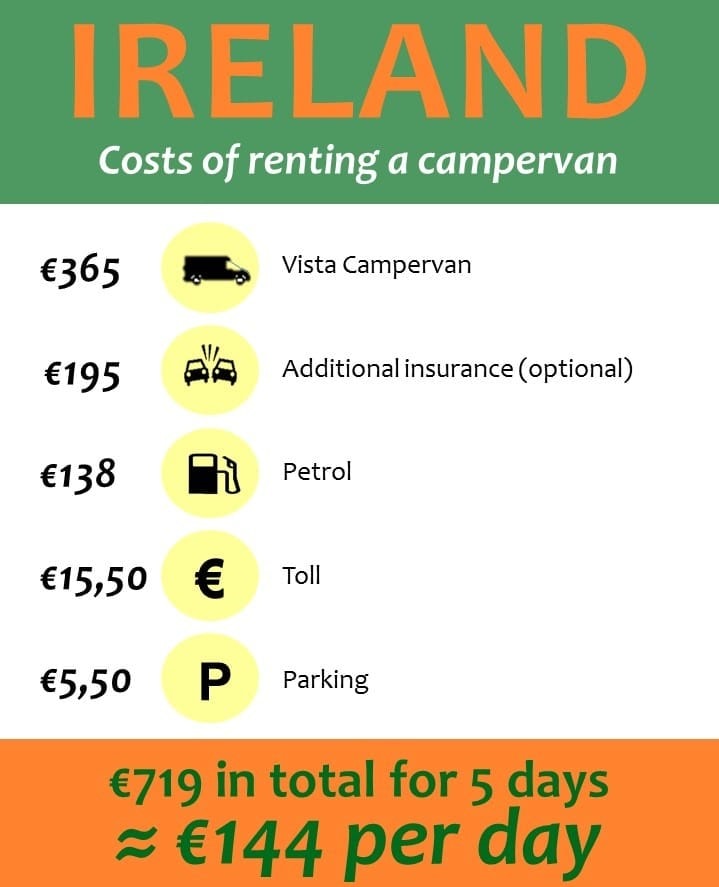
Important : Due to inflation, these costs may be higher than when I was in Ireland .
3. Transport by bus (Dublin airport to the city)
The only public transport we used in Ireland was the bus from Dublin Airport to the city center (more info about the bus is found here). The costs of this bus trip were €3,30 per person.
Our total bus transport costs were €12 (tickets from Dublin to the Bunk depot are €2,70 per person, the office is very near to the airport).
4. Food and drinks
This is where we splurged compared to our usual travel style. We bought a couple of groceries (breakfast and some snacks for hikes) but other than that we ate out every single day, both for lunch and dinner.
Lunch was mostly sandwiches from deli shops (price between €3-€6) and we had dinner in pubs (price between €10-€20). On the day of our anniversary, we had a fancy dinner at a nice restaurant.
Total amount spent on groceries, food, and drinks: €296 (almost €60 a day).
Budget option : To nobody’s surprise, cook yourself! Most campervans have a kitchen inside. If you choose not to travel by campervan, then go for a hostel or Airbnb with a kitchen. This will save you so much money.

5. Activities
We did three paid activities during our trip. The first was a visit to Trinity College and the beautiful Old Library where the Book of Kells is on display. The admission fee was €11 per person .
The second paid activity was the famous Cliffs of Moher. The admission fee was €6 per person (this includes access to the parking area).
Our last paid activity was visiting the Rock of Cashel, admission was €7 per person . The total for paid activities came to €48 for the two of us.
How to save money in Ireland?
As I mentioned at the beginning of this post, you can easily travel around Ireland for less. Here are a couple of ways to save money on your trip.
Rent a cheaper camper van
First of all, you could rent a cheaper camper van, the Roadie costs just €40 a night, instead of €73 per night like the Vista van we had. This reduces your rental fee by 45%.
Skip the additional insurance
If you are confident about your own driving skills you can skip the €195 additional insurance I took out. I always take out additional insurance since I had a little parking incident in New Zealand a little while ago.
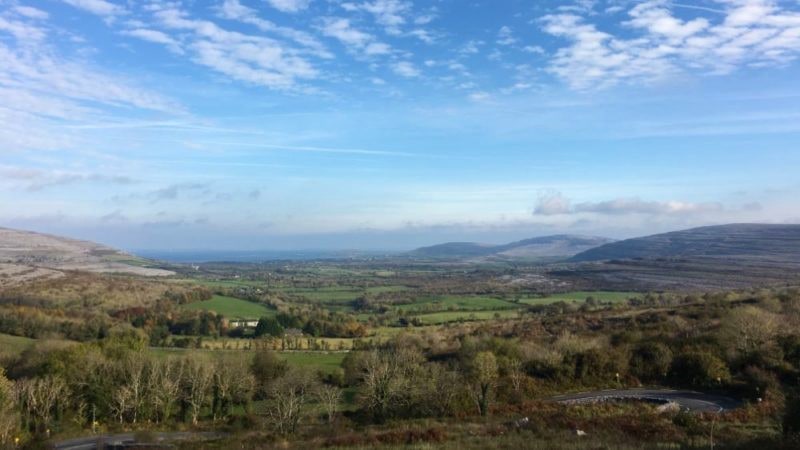
Cook your own meals
We ate out every day and that doesn’t come cheap in Ireland. In Southeast Asia eating out is cheaper than cooking your own food. However, in Ireland, the average pub meal sets you back between €10 and €20.
If you cook your own dinner you can easily stay within a €20 budget a day for 2 people. So instead of spending €296 on food & drinks, you could spend as little as €100… Maybe even less.
Potential savings on your Ireland budget trip
These measures could potentially save you €424, bringing down your total expenses to €706 (€140 per day for a couple = €70 per person).
Of course, everything depends on the choices you make. I chose not to worry about our Ireland vacation cost, because we wanted to celebrate our wedding anniversary and it was only a short trip.
We were a lot more careful with our budget during our yearlong trip around the world because we wanted to travel as long as possible.
Final thoughts on Ireland budget travel
I hope this post has given you an idea about the cost of a trip to Ireland. If you have any questions, leave a comment below.
Happy travels!
Related posts
- A Complete 5-day Ireland itinerary for a Wonderful Road Trip
- The 13 Absolute Best Travel Packing Hacks for You!
10 Common Myths About Traveling Abroad (And Why They’re WRONG)
Ireland budget travel: essential tips for traveling ireland like a pro.

Ireland budget travel
Similar posts.
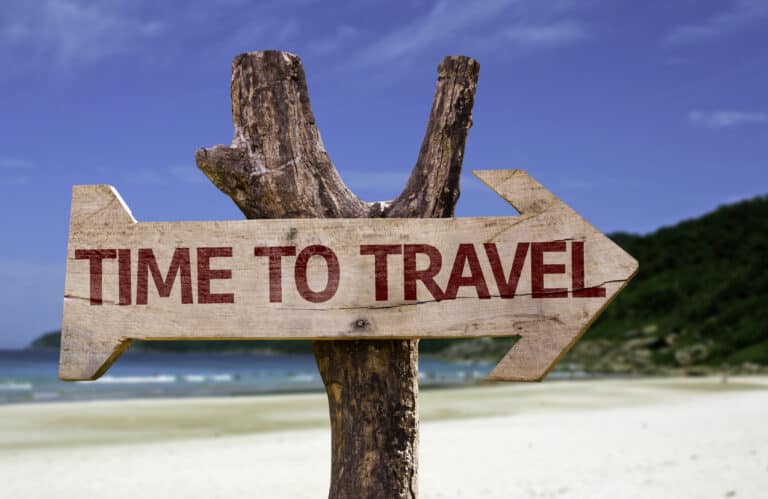
A Full Guide to Wild Camping in Norway + Wild Camping Tips
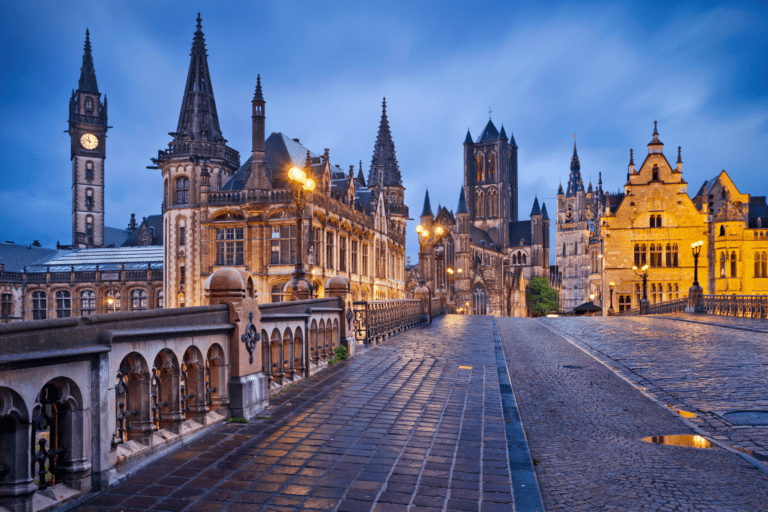
A Thorough Guide for Where to Stay in Ghent in 2024!
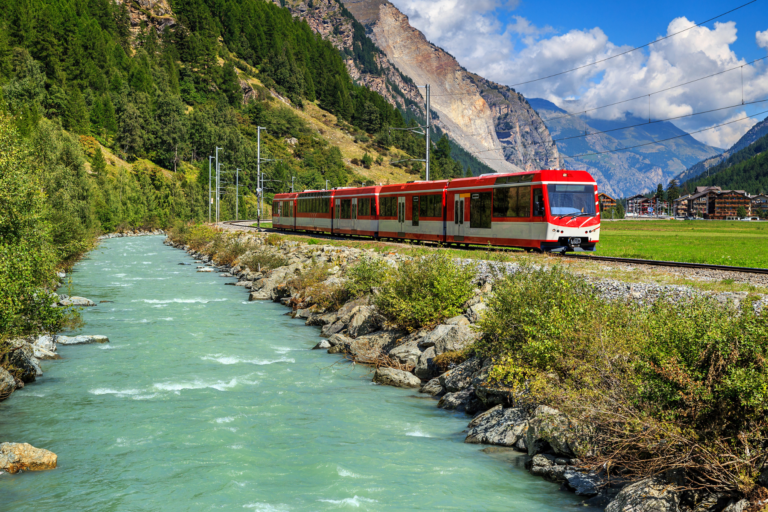
Is Interrail Worth It? A Full Review on Interrail + Helpful Tips For You

Interrailing on a Budget: Everything You Need to Know + 12 Useful Tips
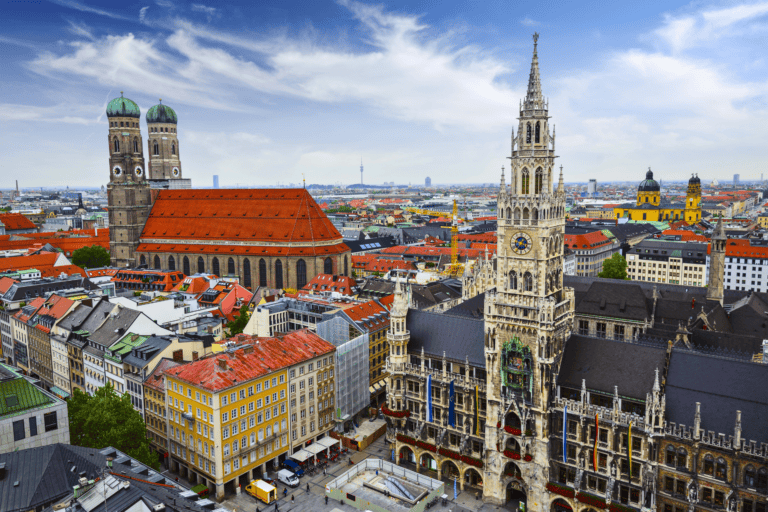
9 Incredible Things To Do in Munich, Germany

Dublin On A Budget: Here’s How To Do It
By: Author Sarah McAlister
Dublin is one of our favourite cities, we bloody love it. It is however also one of the most expensive cities in Europe. So on a recent weekend in Dublin we were determined to do Dublin on a budget.
Dublin On A Budget
So here we’re going to share all our best Dublin travel tips to help you with planning a trip to Ireland on a budget. We’ll include the cheapest way to get to Dublin, the cheapest time to travel to Ireland and cheap places to stay in Dublin.

Plus cheap and free things to do in Dublin, how to get around Dublin on the cheap, Dublin cheap eats and lots more helpful information about visiting Dublin on a shoestring.
How to place cheap Dublin breaks – here we go!
What Does A Trip To Dublin Cost?
For 2 nights and 3 days in Dublin, we managed to keep our trip to Dublin cost down to just £250 GBP / $350 USD. Pretty good right?
And that’s including everything. Flights to Dublin, accommodation in Dublin, eating out in Dublin and all the Dublin activities we did.
We had a cracking time as usual in Dublin, proving that even while on a mission do Dublin on a budget you don’t have to scrimp on the fun.
Cheapest Way To Get To Dublin
Obviously the cheapest way to get to Dublin is very dependent upon where you are travelling from. But we’ll cover all the different ways here and how to find the cheapest tickets.
And whichever method of travel you choose to get to Dublin Ireland, you will always get the most reasonable prices the further in advance you book.
And also by being as flexible as you can with dates and times. Generally speaking it will always be more expensive to take a weekend trip to Dublin rather than go mid-week.

Bus and Train Travel in Ireland
Being a small country, if you’re travelling to Dublin from within the country, you’re best option is to just jump on a bus or a train. We always use Omio.com to find the best prices.
Flights to Dublin
If you’re arriving from Europe, there’s several low cost airlines that fly into Dublin airport from most major cities. Irish owned, Ryanair typically have the most frequent and cheapest flights to Ireland. But Easyjet, Flybe and Aer Lingus also have plenty of flights to Dublin.
If you’re travelling from further afield we recommend comparing the best prices through a flight comparison site. We always use Kiwi.com . Because if you miss a connecting flight they guarantee to put you on the next one.

The cheapest time to fly to Ireland is generally outside of peak times. So midweek on early or late flights. However if you book flights to Dublin far enough in advance you can get some great weekend deals.
For example, we booked our flights around 3 months in advance and found return tickets to England with Ryanair for just £45 GBP ($63USD) each.
Another way to save money on your flights to Dublin is to travel carry on luggage only.
Ferry To Dublin
Your other alternative for cheap travel to Dublin from outside the country is to take a ferry to Ireland. From mainland Britain, there are two ports from which you can take a ferry to Dublin.
Holyhead in Wales and Liverpool in England.
The crossing from Holyhead to Dublin is around 3 hours and services from Holyhead port are operated by Stena Line and Irish Ferries.
The Liverpool to Dublin ferry is operated by P&O ferries and will take around 8 hours.

Depending on how far in advance you book, a return passenger ticket will typically cost around £65 GBP ($91USD). You can compare prices for specific dates here .
Don’t forget that you need to factor in the cost of getting the ferry port. If you’re not nearby, Rail & Sail tickets are good options for Dublin budget travel.
These include train travel to Holyhead port from UK mainline train stations, and the ferry trip over to Dublin Port. Depending on how far in advance you book you can find deals for less that £40 GBP ($52 USD) one way.
Obviously this method of travel Dublin will take longer than flying.
But these are especially good options for if you do want to take pets or more than carry on luggage. Stena Line ferries don’t have any luggage limitations and Irish Ferries allow two 22kg suitcases per person.
You can find out more about Rail & Sail tickets here .

Still trying to choose your backpack? Look no further! The Osprey Farpoint 70 Travel Backpack is perfect for big trips. It’s lightweight but durable, incredibly comfortable, super spacious and even has a detachable daypack.
Cheapest Time To Travel To Ireland
The timing of your visit will play a big part in how much your trip to Dublin costs.

Winter is by far the cheapest time to travel to Ireland. However it is also the coldest time and by cold, we mean crap grey rainy weather. The most popular time to visit is in summer during July and August. This is when prices for everything are at their highest.
We suggest therefore that Spring or Fall are good times to travel to Dublin on a budget.
Dublin has quite a few festivals happening throughout the year so do check ahead for those too, because accommodation especially will shoot up around those times.
And as with flights to Dublin, you will generally find better deals on accommodation by visiting Dublin during the week as opposed to Dublin weekend breaks
Cheap Places To Stay In Dublin
Exactly the same as with transport options for getting to Dublin, you will always be more likely to find cheap Dublin accommodation deals if you book well in advance.
Now when it comes to cheap places to stay in Dublin, hostels are always going to come up trumps. But if that’s not your travelling style, don’t worry because you can nab some great deals on cheap Dublin B&B’s and budget Dublin hotels too.

Here’s our pick of the bunch when it comes to where to stay in Dublin on a budget.
Cheap & Cheerful Dublin Hostels
If you haven’t stayed in a hostel before some people can be put off by this cheap accommodation Dublin thinking it’s just for the young un’s who like to party. But not so, all of these Dublin hostels also have private rooms too.
Generator Dublin
Located next door to the Jameson Distillery, in the trendy neighbourhood of Smithfield with Dublin Castle, the Guinness Storehouse and Temple Bar all less than 15 minutes walk away.
There’s comfortable and spacious dorm rooms, private rooms or family rooms, a delicious traditional breakfast for a small extra cost and a 24 hour reception and lounge with good WiFi.
Abigail’s Hostel
Situated on Aston Quay and overlooking the River Liffey, Temple Bar, Trinity College and Grafton Street are just a few minutes walk away from this Dublin hostel.
There’s private and dorm rooms, each of which have an en-suite shower and toilet. There’s a well equipped self catering kitchen and multiple communal chill out areas with good WiFi.
The Times Hostel
Tucked down a side street next to St Stephen’s Green, this cheap Dublin accommodation is just 10 minutes walk from the centre of the action in Temple Bar and Grafton Street.
There’s dorm and private rooms. good WiFi, 24 hour reception and a communal lounge equipped with a TV and board games. Plus a continental breakfast is included in the price.
Affordable Hotels Dublin
When it comes to budget hotels Dublin, there are a number of good quality. However the ones within walking distance of the city centre get booked up well in advance.
Dergvale Hotel
Conveniently located, this 2-star family-run Dublin budget hotel is a 20 minute walk from Dublin points of interest such as Temple Bar, Dublin Castle and Grafton Street.
There’s single, double, twin and triple rooms, a licenced bar to relax in and for a small additional cost, you can start each day with a traditional Irish breakfast in the dining room.
Jurys Inn Dublin Parnell Street
Just around the corner from O’Connell Street, this comfortable and affordable Dublin hotel is centrally located with a less than 15 minutes walk to the Temple Bar District.
All rooms have en suite bathrooms with complimentary toiletries and tea and coffee making facilities. Plus a full Irish hot and cold breakfast buffet is included in the price.
Portobello Hotel
Overlooking the Grand Canal and located on a direct link bus route, this affordable Dublin hotel is also less than a 25 minute walk to Temple Bar, Grafton Street and Dublin Castle.
Spacious rooms feature TVs, hairdryers, tea/coffee-making facilities, ensuite bathrooms with free toiletries and a good breakfast is included in the price.
Getting Around Dublin On The Cheap
Dublin airlink express.
From the airport into Dublin city centre there’s a really easy and cost effective public bus called Airlink Express, which costs €12 Euro (£11 GBP/$15 USD) for a return ticket.
It runs two routes, the 747 to Heuston Station and the 757 to Camden, both of which go through Temple Bar. You can check the routes, times and buy tickets in advance here.
As Dublin Airport is located just 6 miles from the city centre of Dublin, the journey’s pretty quick and you’ll be there in around half an hour.
Depending on where you are staying in Dublin, the city is quite small so it’s quite manageable to explore most of it on foot. For serious budget travel in Dublin, that’s going to be your best bet.
However there are a few popular Dublin attractions such as Kilmainham Gaol, Phoenix Park, Glasnevin Cemetery and The National Botanic Gardens that are just outside the city centre.

Or may also just prefer to maximise your time by getting around points of interest in Dublin more quickly than you can by walking.
In which cases your best option for saving money in Dublin is to get yourself a DoDublin card.
DoDublin Card
The DoDublin Card basically an all-in-one sightseeing and transport ticket that lasts for 72 hours.
It includes transfers from Dublin Airport on the Airlink Express, access to the DoDublin hop-on hop-off tour bus with guided tours and rides on all Dublin public buses.
You get free entry to the excellent Little Museum of Dublin and a Free Pat Liddy Walking tour of Dublin included. Plus discounted access to the Guinness storehouse, Jameson Distillery, EPIC Irish Emigration Museum and GPO Witness History Visitor Centre.
Obviously the free and discounted access to those Dublin attractions will only save you money if you were planning on visiting them anyway. But if you are it’s such a good deal if you’re after visiting Dublin on a budget.
But it does also include discounts at a few pubs and restaurants. Plus if you fancy getting out of Dublin City Centre you can jump on the bus to the pretty Irish village of Howth.
TFI Leap Card Dublin
Alternatively if you know you’re interested in accessing any of the free or discounted Dublin attractions that comes with the DoDublin Card you can just pick up a regular travel card.
You can pay by exact cash on the Dublin public transport System, however using a Leap Card is upto 31% cheaper than cash single tickets.

You can buy TFI Leap Cards online in advance and have them delivered to your home address. Or there’s authorised vendors at both Terminal 1 and Terminal 2 of Dublin airport and multiple places throughout Dublin City. Just look out for the ‘Leap Card’ logos.
There’s a €5 refundable deposit required for each card and a minimum top up of €5 per card. And you should download the Transport For Ireland Journey Planner App .
Handily if you’re travelling elsewhere in Ireland they can also be used on in Galway, Cork, Limerick and Waterford too.

Dublin Bike Scheme
Another popular way of getting around Dublin other than on foot is to take advantage of the Dublin Bike Scheme. Visitors to Dublin can grab a three day ticket.
Dublin Bike Scheme offers a three-day ticket for visitors for just €5. The first 30 minutes of your rides are free then €0.50 for an hour, €1.50 for 2 hours, €3.50 for 3 hours and €6.50 for 4 hours.
However if you’re canny and going further than a 30 minute ride you can just switch the bike out for another at one of the many bike stations situated around the city.

Here’s the list of bike stations , the ones marked with asterixis are credit card enabled so you’ll need to head to one of those first to buy your card.
Dublin Hop On Hop Off Buses
You can also buy 24/48 hour tickets separately for the Dublin Hop On Hop Buses, if you’d prefer to do that.
You can choose from either a 24 hour (classic), a 48 hour (Premium) or 72 hour (Deluxe) Hop On Hop Off Bus Ticket . The premium option includes a Panoramic Night Tour and the deluxe that plus a half-day coastal tour to scenic Howth Summit and its fishing village.
Dublin Cheap Eats
There’s no doubt that eating out in Dublin can be expensive. However Dublin travel tips at the ready, there are also plenty of Dublin cheap eats to be found in the city.
One of our best tips for doing Dublin on a budget is not to eat out at restaurants 3 times a day.

If the place you’re staying has brekkie included, you’re already quids in. But even if it’s extra it’s often cheaper to add to it on, than eat out elsewhere.
Plus if you have a substantial breakfast you likely won’t want three big meals. In which case you can nip into a supermarket and grab something to take away for a few quid for one meal.
There’s an Aldi on Parnell Street, three Lidl’s and numerous Tesco’s. All of which sell good quality fresh produce at low prices. Lidl and some Tesco’s have great bakery sections too.
Then for another meal treat yourself to one of our fav cheap places to eat in Dublin.
Beanhive Cafe : You definitely won’t be hungry for a good while after breakfast at this busy cafe at the side of St Stephen’s Green.
Gerry’s Cafe : A no frills kinda place, the owner here not only knows how to cook a good fry up but his stews are legendary too. As is the price for such a central Southside location.
White Moose Cafe : This controversial cafe in Phibsborough does some of the best and most reasonably priced brunches in Dublin. You just might want to leave your morals at the door.
Umi Falafel : With a few locations all over Dublin City, this spot for cheap eats in Dublin is great for a filling and healthy lunch.
Eatyard : When Northside of the city from 12pm Thursday to Sunday you’ll want to check out this permanent street food market.

Generator Hostel : If you’re Smithfield way and fancy an award winning yet seriously good priced burger check out the restaurant in this hostel.
777 : Head to this Mexican Cantina & Tequila Cocktail Bar in Temple Bar on Sundays when all the dishes are a bargain price of €7.77.
Madina : Not only does this Northside restaurant boast some of the best curries in Dublin, you can also get one for just over a tenner.
Green 19 : After a reasonably priced Irish Sunday roast? This Southside place near St Stephen’s Green definitely makes the best cheap eats Dublin list.
Beshoff : Another of the best cheap restaurants in Dublin is this Northside fish and chip gaff. Pick up one of their hearty fish burgers for a great lunch.

A travel adaptor that works anywhere in the world? Yes please. It’s one of the most useful things we own & an absolute essential for your trip. This one’s lightweight, durable & also has 1 USB-C port and 2 standard USBs. Get one in your bag.
Free Things To Do In Dublin Ireland
Okay so you’ve got your cheap transport booked, scored a great price on accommodation and scoped out where you fancy eating. Now to plan what to do in Dublin.
So how expensive is Dublin? Well unfortunately, very, if you don’t go with a plan. I ordered a pint of Guinness in one pub and my jaw nearly hit the bar when I was asked for €8 Euro (£7 GBP/$10 USD).

The good news is there are lots of things to do in Dublin for free. Ready for more Dublin travel tips?
Self-Guided Dublin Street Art Tour
Dublinwalls.com has four different Dublin street art routes of varying length to explore including artists such as Banksy, KinMx, Dan Leo, James Earley and Bordalo. It’s one of the best fun free things to do in Dublin.
Dublin’s Talking Statues
Download the map and make your way around 10 of Ireland’s most influential historical figures. Such as Daniel O’Connell, the prominent Catholic rights campaigner and Oscar Wilde, the famous Irish poet and playwright.
At each statue simply scan the QR code and you’ll receive a call from the statue to tell you their role in Ireland’s history. Sightseeing in Dublin for free, tick.
Stroll Around The Parks
If the weather’s nice enough during your budget trip to Ireland, there’s some cracking outdoor space to enjoy. Our favourites are St Stephen’s Green, Merrion Square and The Botanical Gardens and Phoenix Park. All are free to enter.
But The Botanical Gardens has free guided tours on Sundays at 12pm or 2.30pm. The rest of the time they are €5 Euro* (£4.40 GBP/$6.20 USD) per person.
[* = covered by The Dublin Pass – more on that in the next section]
And you can also score a free tour of the President’s residence in Phoenix Park on Saturdays from 10.30am, every hour, until 3.30pm. You can’t book ahead, it’s a first come first served basis and you’ll need ID.
Ashtown Castle in Phoenix Park is free to explore too, making Phoenix Park a double whammy when it comes to what to do in Dublin for free.
Grafton & O’Connell Streets
Grafton Street is Dublin’s main shopping street and is lined with buskers belting out tunes, it has a beautiful energy. Although this is one of the things to do in Dublin for free, if you stick around to listen be sure to chuck the musicians a couple of quid – especially if you film them.

O’Connell Street is the main thoroughfare of Dublin running north from Temple Bar, over the River Liffey and past many of the most popular free attractions in Dublin.
You’ll see the General Post Office, with its bullet holes from Ireland’s fight for independence in 1916, and the Millennium Spire. Also nicknamed locally as the Stiletto in the Ghetto or Stiffey in the Liffey, the 120m high, pin like monument waves around in the wind.

Another pretty of the places to visit in Dublin Ireland for free is nearby Henrietta Street. The houses are simply gorgeous.
River Liffey & Its Bridges
There are a number of bridges that cross the River Liffey which runs through the centre of the city, but the most picturesque has to be the Victorian Ha’penny Bridge.

There’s an ongoing battle between Dublin council and tourists trying to claim it as a love lock bridge. So depending on when you visit you’ll find a varying number of padlocks on it.
Trinity College & The Book of Kells
An elaborate and ornate collection of beautiful buildings. Trinity College is part of a trilogy of prestigious universities that include the University of Cambridge and The University of Oxford in England.

You can just go in and wander around the grounds for free and see the Campanile of Trinity College, one of Ireland’s most famous landmarks. It’s not free to go inside however because the Book of Kells is here, in the gorgeous Trinity College Library.

You can check prices and book tickets online here.
Dublin Castle
It’s free to wander around the outside of the Dublin Castle complex and pretty Dubh Linn Garden. The buildings, all added at different times, range from medieval to Georgian and are a mismatch of natural stonework and brightly coloured render.

Absolutely one of the best free things to do in Dublin.
Dublin Cathedrals
Originally a viking church and more than 1000 years old, the grand medieval Christ Church Cathedral is another of Dublin’s signature must see buildings.

In the crypt there’s a rather peculiar exhibition of a mummified cat and rat, known locally as Tom & Jerry. The story goes that the cat chased the rat up an organ pipe and become stuck.
There are self guided* tours, or alternatively you can go in when there’s a public service for free. But not into the crypt though.
Then there’s St Patrick’s Cathedral , founded in 1191. With it’s 43 metre spire it’s the tallest church in Ireland. Same deal, if you want to add it to free places to visit in Dublin, you’ll need to go during a service. Outside of that admission is €8.
Dublin Markets
Even if you’re budget doesn’t allow for much shopping, Dublin’s market are still great places to have a wander around and take in the culture of the city.
The Temple Bar Book Market that takes place every weekend and is great for bookworms and vinyl music fans. The much larger Dublin Flea Market that takes place on the last Sunday of each month is also worth a look at. It has live music, food stalls and plenty of bargains.
George’s Street Arcade is an enclosed Victorian market with over 50 stalls ranging from tarot reading to freshly cold pressed juices. And then you have the Designer Mart at Cow’s Lane stocked with bespoke pieces from independent Irish and Ireland-based designers.
Sandemans Free Walking Tour
This is kind of falls under the free stuff to do in Dublin, but not really. There’s no fee upfront, but the tour guides work on a tip basis so you pay them for what you think the tours worth.

I’ve been on two now and really enjoyed them because they give you a much deeper insight to the city than you’ll get from just wandering around on your own.
I gave a tip of €10 Euro (£9 GBP/ $12 USD) which I think is more than reasonable for a good quality 3 hour tour. You can reserve your spot here .
Unless you’ve gotten a DoDublin Card that is, then don’t because you already have a walking tour included in that package.
Free Museums in Dublin
When it comes to free stuff Dublin, Museums in the Irish capital have got it going on because most of the popular have no charge. And there’s a huge variety too so you’ll definitely find something to match your interests.
Chester Beatty Library
Just outside Dublin Castle this free Dublin museum is one of the best in the whole of Europe. It houses the beguiling collection of Sir Alfred Chester Beatty, it’s definitely worth stopping by.

Dublin Science Gallery
Part of Trinity College Dublin, this museum always has fascinating and interactive exhibitions.
The Irish Museum of Modern Art (IMMA)
Located inside the stunning 17th-century Royal Hospital Kilmainham, this museum houses over 3,500 international pieces of modern and contemporary art.
Plus every Wednesday at 1.15pm and Saturdays/Sundays at 2.30pm there’s a free 30 minute tour general.
The National Gallery of Ireland
With over 16,000 artworks stretching back to the 14th Century, there’s a lot of history here. And there’s a free audio tour that will walk you through the permanent collections, including influential Irish pieces.
The National History Museum
Also known as the Dead Zoo. From tiny insects to huge whales there are 10,000 displays over 4 floors. Including some of Ireland’s most endangered and extinct species.
The National Archaeology Museum
This museum has a collection dating back to the prehistoric era with the most fascinating being the mummified bodies that were preserved in Ireland’s peat bogs.
Howth Hill Walking
If you have enough time and fancy getting out of Dublin City, a trip onto the Howth Peninsula. Howth is a beautiful village and there’s some cracking views from the hills overlooking the Irish Sea and Dublin Bay.

There’s also a cracking market there open everyday. Plus if you’ve nabbed yourself and DoDublin card your transport there and back is covered.
Cheap Things To Do In Dublin
Before we get into this section here is a good time to mention the Dublin Pass . Valid for 1-5 days it includes skip the queue entry to 33 of Dublin’s top attractions, discounts in some restaurants, a 24-hour ticket for Dublin hop-on hop-off bus tour, a map and guidebook.

If you are planning on visiting many of the Dublin activities on it’s list it will definitely be worth your while. To help you decide if it’s for you, we’ll mark the things to do in Dublin on a budget that we mention below with an asterix if they are included.
From the last section on free attractions in Dublin, it’s worth noting that the Dublin Pass covers the cost of the Christ Church Cathedral and National Botanic Gardens tours.
EPIC The Irish Emigration Museum*
Located in Dublin’s Docklands this new museum provides an interaction connection with Ireland’s history and culture. Covering the emigration of Irish people to other countries, it was voted Europe’s leading tourist attraction in 2019.
Dublin Writers Museum*
Ireland’s literature is renowned the world over and in this magnificent 18th century mansion you’ll find works from all the Irish literary greats spanning 300 years. So if Irish literature interests you this will be a must for your cheap things to do in Dublin itinerary.
Glasnevin Cemetery & Museum*
This historical tour through Dublin’s most prestigious cemetery, will give you a dynamic interpretation of Ireland’s history told through the lives of the high profile people buried here.
You can of course just go on your own for free if your budget prefers, but you’ll miss the dramatic backstories.
Little Museum of Dublin*
The number one museum in Ireland, not just Dublin, this place, located in an 18th-century Georgian town house really does bring the history of Ireland to life.
If you have got a 72 hour DoDublin card remember entry to the Little Museum of Dublin is included in that.
Guinness Storehouse*
Of course you might just be planning a trip to Dublin for the Guinness and who could blame you.

We certainly done that before! And whilst it isn’t the cheapest, the Guinness Storehouse is high up on most Dublin visitors itineraries – but you do get a free pint with a cracking view.
Old Jameson Distillery*
Likewise if you’re a whisky fan it will be hard to pass up stopping by the Jameson Distillery on Bow Street. The original Jameson Distillery, a visit here includes a tour of the premises and a complimentary whiskey or whiskey cocktail.
The Bow Street Distillery was established in 1780. But after nearly 200 years, in 1975, Jameson expanded their operation and moved it to Midleton in County Cork. If you’re down that way you can alternatively visit the Midleton Distillery .

Teeling Whisky Distillery Tour*
Another for the whiskey fans, this Dublin Distillery is relatively new, having only opened in 2015. But they’re not new to the craft, in fact they’ve been making whiskey since 1782. But interestingly this is the first new distillery to have opened in Dublin in 125 years.
If you know that you definitely want to visit a handful of these, especially the Guinness Storehouse or the Whiskey experiences, your best option for doing Dublin on a budget will be to get yourself a Dublin Pass .
Kilmainham Gaol
Many Irish revolutionaries, were imprisoned in this former prison, now a museum. If you want to learn about the intense and turbulent and quite frankly violent history between Ireland and England, this is the place to be, with much of the history written within these walls.

Just make sure you book ahead because it is the number one thing to do in Dublin on Tripadvisor right now and everyone and their dog wants to experience it. You can book your tickets online here.
GPO Witness History Museum
Another good place to learn more about the war for independence is the iconic General Post Office on O’Connell Street. Used as the headquarters for the leaders of the 1916 Easter Rising, it is now a working post office.
So you can go inside for free, but discovering the tumultuous history of the building through the interactive visitor attraction in the basement is one of the best cheap things to do in Dublin.
Powerscourt Centre
Just off Grafton Street, this mansion turned Boutique mall in Dublin’s Creative Quarter with it’s independent shops is one of the best spots for picking up some unique souvenirs.

Dublin Comedy Show
One of the best things to do in Dublin on a budget is go to a comedy show and recommend Chaplins Comedy Club . For €10 Euro (£9 GBP / $12.50 USD) you get a two hour show. It’s an excellent price and the compere is seriously hilarious.
A quick google search will bring up a tonne of alternative comedy clubs though. If there’s one thing that Dublin loves as much as its live music, it’s comedy.
Listen To Live Music
Speaking of live music you’ll be hard pushed to avoid it in Dublin. It. Is. Everywhere. And. It. Is. The. Best. It’s a toss up between the music and the Guinness as to what is my favourite thing about Dublin. It’s probably a combination of both, at the same time to be fair.

Here’s some recommendations to start you off, The Porterhouse on Parliament Street, BadAss and The Old Storehouse on Crown Alley, The Brazen Head on Lower Bridge Street and Whelan’s on Merrion Row. They are all fantastic.
Smock Alley Theatre
Dublin’s oldest theatre, this intimate space in Temple Bar always puts on a good show at reasonable prices. Tickets usually cost €10 Euro (£9 GBP / $12.50 USD) are there’s wide range of shows with some great actors. You can check listings and book tickets here .
Recommended Ireland Guide Books
Travelling elsewhere in ireland.
You might find some of our other Ireland city guides helpful:
- Your Complete Guide To Killarney
- Why Include Sligo On Your Irish Itinerary
- All The Best Things To Do in Derry
- 33 Stellar Things To Do In Galway
Ireland Travel Insurance
Even though Ireland is one of the safest countries in the world, we don’t recommend travelling anywhere without a good quality travel insurance in place.
Our go to travel insurance provider is World Nomads. They have a no bullshit approach to policy wording & you can even buy a policy even if you’ve already set off on your travels.
Get a no obligation quote here:
Pin Me For Later…

Yorkshire born & bred, Sarah is a professional blogger who loves to travel. Pushing her boundaries with new adventures is her jam, so you likely won’t find her in one place for too long. Also a serious Marmite addict.
The Perfect Guide On How To Travel Ireland On A Budget
- Click to share on Pinterest (Opens in new window)
- Click to share on Facebook (Opens in new window)
- Click to share on Twitter (Opens in new window)
Ireland, also known as the Emerald Isle, is an incredibly beautiful country with a fascinating history, friendly local people, and great traditions. For those looking for a budget destination, Ireland is not the first place that comes to mind. However, it is possible to travel Ireland on a budget.
But let’s just be clear, Ireland is an expensive country. Though as I’ve said, it is indeed very possible to enjoy your time in Ireland on a budget. In fact, I think you can even stick to a travel budget of 40 Euros a day .
With a good amount of trip planning and willingness to sacrifice comfort for saving some money, it is possible to make Ireland affordable. Luckily, we’ve gone ahead and done the homework for you. So sit back, relax, and take notes on how to travel Ireland on a budget.
Transportation
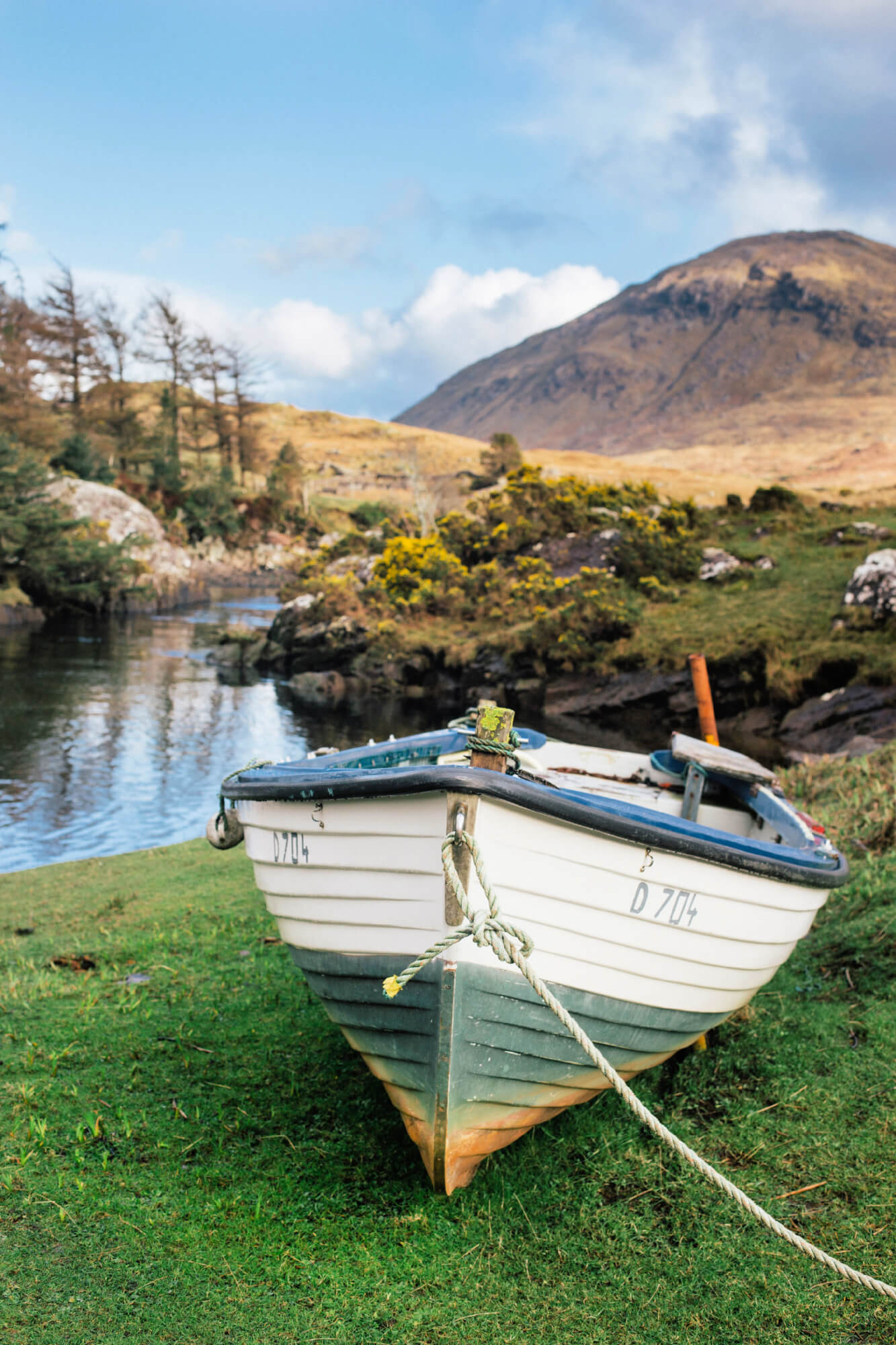
Ireland is not a massive country like the US or Russia so it is possible to drive from one end of the country to the other in one day.
I recommend renting the smallest, most affordable yet dependable car possible. Book well in advance to ensure you get the best pricing for your rental car. This is where traveling with a friend or partner comes in handy because you can split the cost of the car and make it even cheaper.
Like anything else, the longer you have the car, the further the daily rate goes down so if you do choose to rent a car, try to have it for at least 5 days or a week.
The second option I’d recommend for transportation would be to cycle across Ireland. This option is considerably cheaper, but definitely more of an adventure and you must have much more time to travel around Ireland.
The final option which is definitely the cheapest way to travel around Ireland is using your own two feet and walking! I know this sound crazy, but according to Google Maps, if you walk from Dublin to Galway, it would only take you 42 hours. You could realistically walk the country in one week.
Of course, this is assuming that you are doing this walk in summer. Along the way, you can discover the charming Irish countryside and stay in smaller towns.
Accommodations
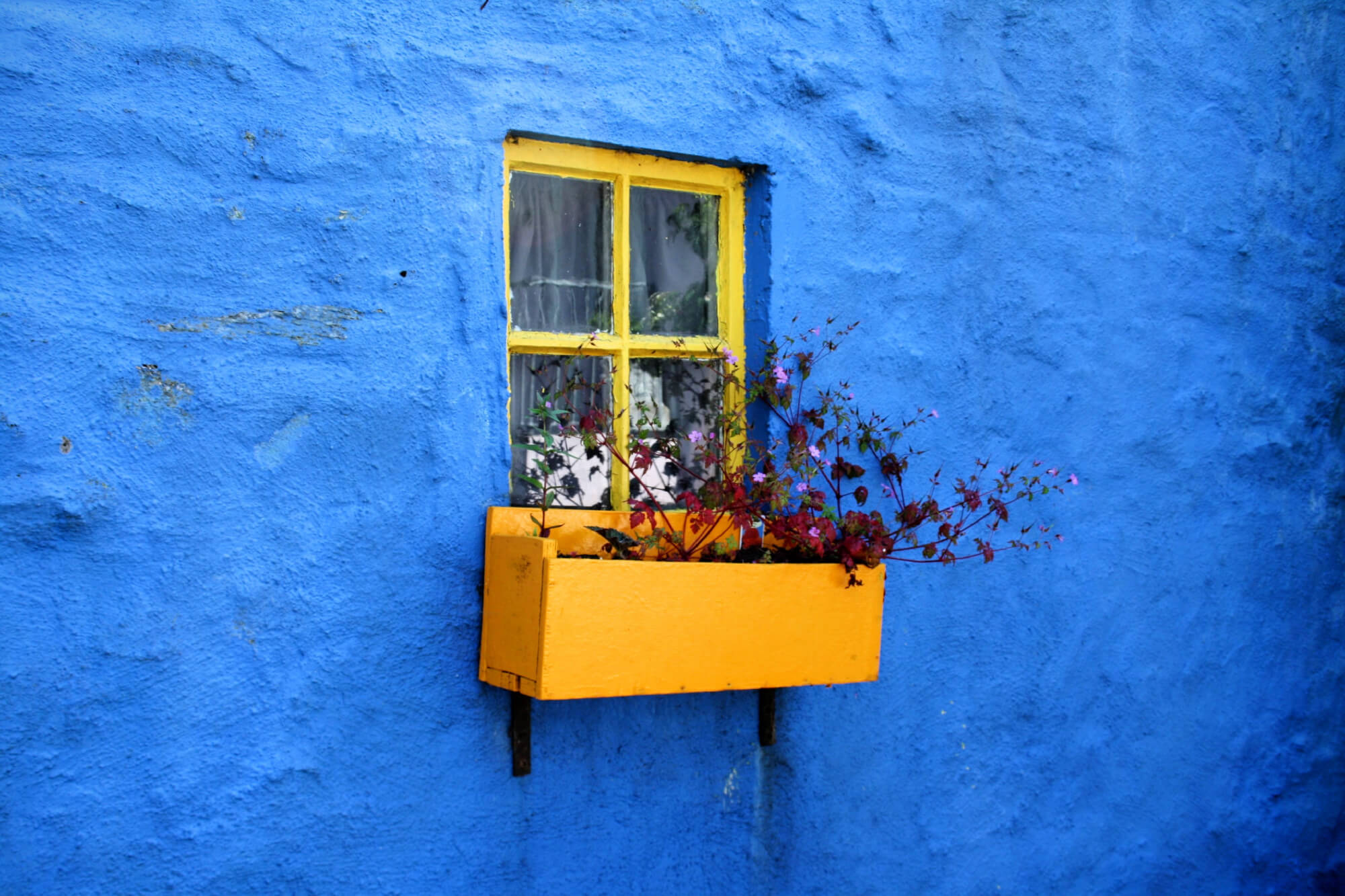
Speaking of where to stay, there are various budget-friendly options you should know about as you’re planning your own trip to Ireland.
The first is to bring your own camping gear and stay in camping sites. This low-cost option involves more planning to make sure you have all of the right equipment but can be extremely rewarding waking up in Ireland’s lush, green hills. There are plenty of camping sites that are specifically designed for travelers with all of the amenities you need including showers.
Be wary of camping outside of these sites, as it is considered illegal. Make sure you get the express consent of landowners before pitching your tent somewhere.
The next option for budget travelers is to stay in hostels. While in major cities such as Dublin, you will pay a premium, outside of these cities, hostels get considerably cheaper. You can expect to pay 15 Euros a night with many including breakfast in the price. A nice bonus part about hostels is that it is easy to meet fellow travelers and maybe you can even hitch a ride to the next town.

10 Best Countries To Visit This Year
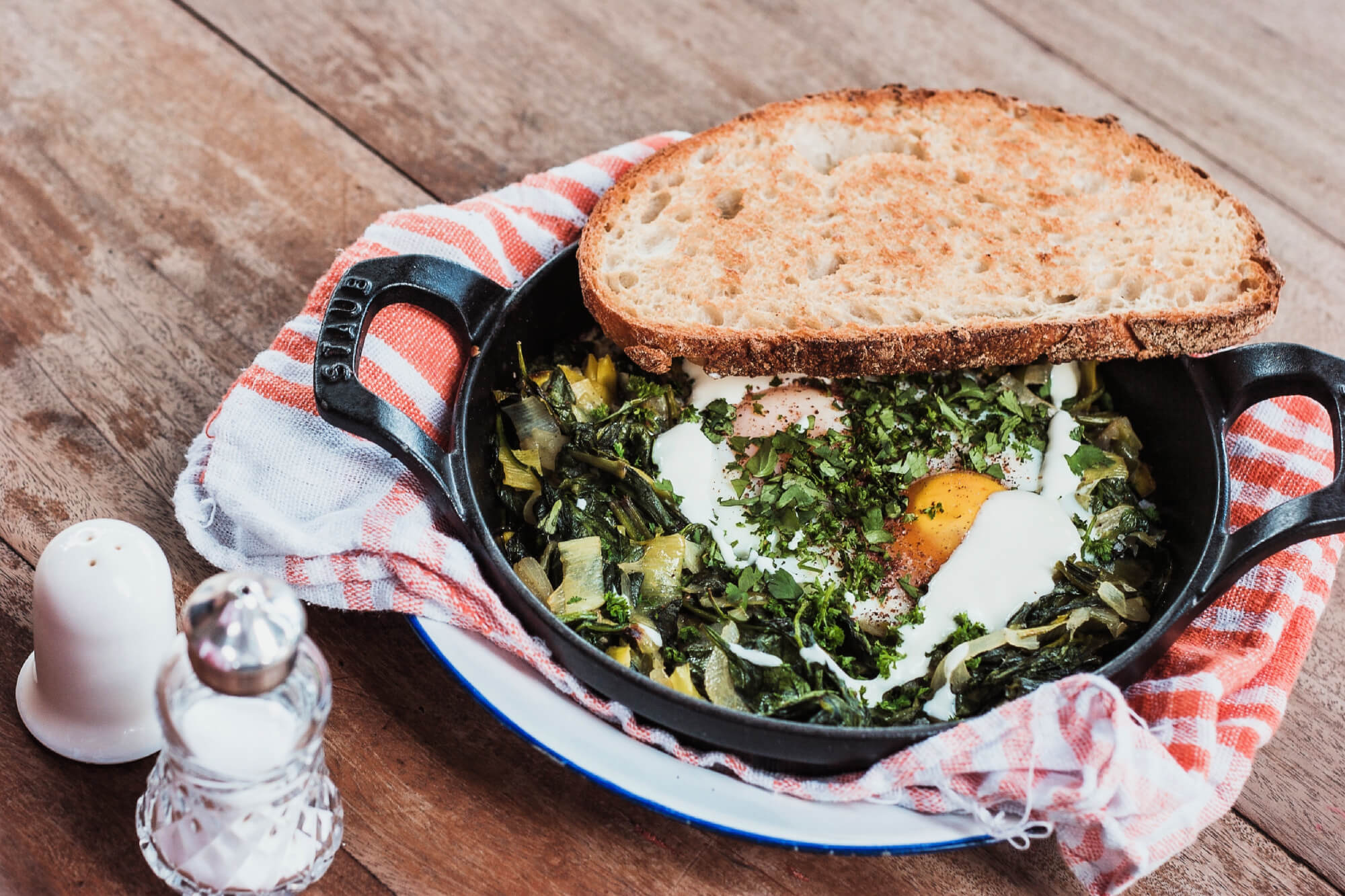
As a traveler that does plenty of sports when I travel, I struggle the most with not spending a fortune on eating out. Luckily, I have found some methods that work anywhere in the world to save some money on food.
The best way for eating in Ireland on a budget is to determine how much you are willing to spend daily on food. For example, maybe you only want to spend 15 Euros a day on food, you have to do your research and look for any restaurant specials you can find.
Something that has helped me tremendously, however, is not eating out at restaurants. I always try to find local markets or grocery stores. In Ireland, large supermarkets such as Tesco, Dunnes, Asda, or Sainsbury’s offer the most affordable food.
I look for any discounts, coupons, or specials that the store currently has. I usually stick to basics such as protein, vegetables, and fruit. I never regularly buy sweets or sodas that don’t add any nutritional value to my meals and just add costs to my budget.
The final piece of advice that I would recommend is to try to cook your own meals whenever possible. Besides being healthier for you, you can save a lot of money by buying the raw ingredients yourself and cooking a nice meal.
If you are traveling with friends or your partner, you can split the costs of the meal to further reduce how much you are spending. If you are staying at a hostel, invite others to have dinner with you and most are more than willing to return the favor the next night.
Sightseeing
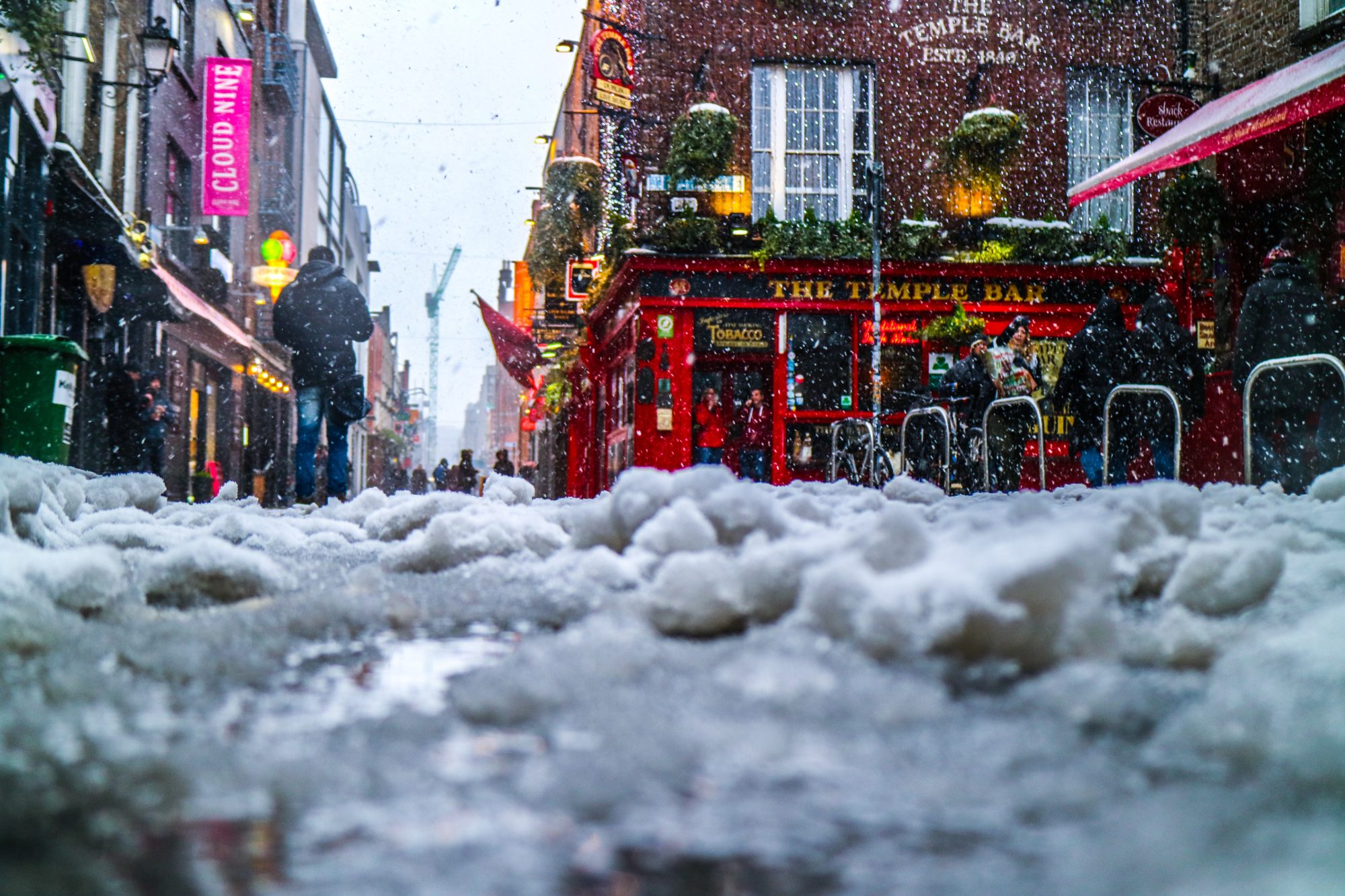
Of course, you traveled to Ireland to see the country and there are a ton of places to see! Like many countries, tourism is a massive industry in Ireland and they charge a premium for this service. Have no fear though, if you come prepared and plan ahead, you’ll be able to see everything you want to see without spending a fortune on admission.
One of the best-kept secrets in Ireland’s tourism industry is called the Heritage Card. It costs 90 Euros for two adults and is well worth the cost if you plan on seeing more than 7 historical sites across Ireland. You can easily stop by 8-10 historical sites in a week and each site costs about 13 Euros so the card starts paying for itself quite quickly.
The card works throughout Ireland and looks like a credit card. With the Heritage Card, you’ll have access to over 97 sites within the country. However, be aware that the Cliffs Of Moher is not included on the card and it charges its own rate.
Another little-known piece of advice to take advantage of is that most sites have Wednesdays when entry is free. On these days, each historical site becomes extremely crowded so if you want to go, I’d recommend that you go at the opening of the site to make sure you get in without any problems.
Know any other tips to travel Ireland on a budget? Please feel free to share them below in the comments section!
Suggested next reading: 15 Gorgeous Towns In Ireland You Need To See

Great to see you sign up! Click on this link to download your free packing checklist printable: https://goo.gl/n5XZrn
Share this article.

Published by Grant Simon
Grant Simon is an entrepreneur, writer, personal trainer, Brazilian Jiu-Jitsu practitioner and an endorphins chaser. He has climbed a volcano in Chile, swam with sharks in the Galapagos Islands, and survived a motorcycle crash in Thailand. Besides raising his heart rate in over 35 countries, the Chicago native enjoys birdwatching, reading the newspaper, and eating too many pancakes in one sitting. He is currently based in Montréal, plotting his next bold move. View all posts by Grant Simon
Stay Connected:
Related posts, 6 must-see places you absolutely have to experience in paris, the ultimate guide to a perfect 3 days in athens, 11 best places to visit in zürich if you have only 2 days, leave a reply cancel reply.
Your email address will not be published. Required fields are marked *
Notify me of follow-up comments by email.
Notify me of new posts by email.
Stay Connected
Sign up for our list.
Receive exclusive travel deals, insider tips, inspiration, and more.
Grab The Free Printable Ultimate Ireland Packing List for the best packing and pre-trip to-do list for Ireland
How to Make a Budget for Ireland

How much should I budget for Ireland? Or is it expensive to travel to Ireland?
They are common questions when you’re first planning a trip.
I always hesitate to answer this.
Expensive is relative. What is expensive to one person may seem like pennies to another.
The reality is that my budget will probably look nothing like your budget .
You may not even have to budget at all.
But I have never met anyone who wants to spend more money than they have to. Even the most affluent of travelers aren’t usually willing to throw money away just because they can.
Whether your a high roller or pinching pennies, I am guessing you’ll want a rough guide of how much a trip to Ireland is going to cost you so you can save or at least know what you’re going to spend.
But a budget can do so much more than tell you how much to save or how much you’re going to spend.
The Surprising Benefit of Creating a Budget for Ireland

Creating a budget for Ireland not only helps you figure out how much your trip might cost but it does worlds in helping you identify your priorities and keeping you organized.
A budget gives you permission to spend money on the things that matter the most to you and save on those that don’t.
Joe and I are very happy to spend our money on having comfortable accommodations, eating great food, and having a few special experiences.
I am going to spend money for spending money’s sake?
Spend on what is important to you. Save on what isn’t.

I spend money on what is important to me.
As I decide what experiences are going to be the most meaningful, I make sure I have enough money for those things. Of course, this helps me save money, but, what’s more is that I can enjoy those experiences without a second thought to the cost.
I want you to be able to do the same, which is why your budget might look vastly different from mine.
If your priority is simply to get to Ireland with as few dollars as possible–you can spend way less than what’s below.
If your priority is castle stays, luxury spa experiences, or golfing the best courses–you’re going to spend more.
Another option could be to simply blind save.
But blind saving isn’t going to help you plan and it might not even give you an accurate estimate of what you might spend.
How do you create a budget that is actually reflective of your priorities and is going to give you an accurate estimate of your trip?
First, create a baseline budget for Ireland.

I tried to make this part easy for you.
Below is a rough guide of average daily expenses for a trip to Ireland. Remember this is average. It may not be your budget and that’s ok. It’s just a starting point.
*Note the exchange rate can greatly affect the final cost of your trip. In the table below I used the average US-Euro exchange rate over the last ten years (.842). To put it simply, historically US citizens have spent roughly $0.20 more for every euro. You can check the current exchange rate on XE.com .
Most often quotes for accommodations, experiences, etc. are in euros. In my budget, I always have a column for euros and a column for US dollars. I convert my euro quote to US dollars using the highest likely exchange rate (again about 20 or so cents more). If the exchange rate is less when I am in Ireland, hurrah!
A Sample Budget for Ireland
1 Airfare: The average flight to Ireland varies significantly depending on where you are flying from. It is not uncommon to find flights from the east coast or hub airports from $450-$600. Smaller airports and those in the mid-west/west may find flights much more expensive.
2 The average cost of a B&B is €45-55 per person per night. If you are traveling solo, you can anticipate a single supplement of about 10 euros per night. Hotel accommodations in Dublin city center will cost €175-200 per room per night.
3 Rental car was calculated based upon renting an automatic, intermediate car with full Super Collision Damage Waiver insurance.
4-5 Total trip cost for a rental car and petrol/tolls/parking includes only eight days, assuming you will spend two days (arrival day, plus one full day) in Dublin.
6 Food and drink can vary widely. If you plan to eat out most days anticipate approximately €15 for lunch, €25 for dinner, €10 for snacks, and €5 per pint. I have not included breakfast as most accommodations/B&Bs will include a very large breakfast.
These numbers aren’t just plucked out of the air. I’ve talked a lot about how much our trips to Ireland cost. You can examine every penny we spent on our trips in 2019 and 2017 .
Decide What Your Priorities Are and Figure Out How Much They Cost

Now that you have a baseline, you have to think about how your trip will be different from the average.
This requires a little research and definitely makes you begin thinking about your travel style and your wants for the trip.
It might be hard to think of your priorities right off the bat, so I put together a budget template for you. Just enter you email in the box below to get access.
It not only provides the starting budget above but also lists examples of additional items to consider and their approximate costs. Curious about how much a pint costs? Or perhaps a round of golf? Maybe a castle stay? Horseback riding on the beach? Or even a private driver? All here in the sample budget, friends.
When you think about your priorities for your trip, go back to what I said in the first post of this series about creating an itinerary for your trip –plan your trip around pillar experiences that are going to be the most meaningful to you. I know deciding what to do in Ireland can feel monumental, but looking at your budget will help you get some clarity. Because when you put a dollar amount on something, you can see in black and white what you are willing to spend your money on.
Perhaps on your first trip, you have a priority to meet with a genealogist. Or maybe your dying for a five-star castle stay. You may just want days of unscripted freedom to seek out the random and the beautiful (highly recommended).
Don’t be afraid to email small businesses, guides, or B&B’s to ask for quotes even a year to two in advance. While you might not be able to officially make a reservation yet, you’ll get a good idea of the cost and may even get great tips and information along the way.
My priorities when budgeting for Ireland

I’ll be honest, Joe and I are not usually big spenders. I usually find the most meaning in the little things– the conversations with neighbors, the wind in my hair, the salt on my lips. The moments where I feel a sense of belonging to Ireland, its people, its landscapes.
You create that kind of trip with the right itinerary planning and white space in your trip, not necessarily by how much money you spend.
For example, I love seeking out hidden beaches for picnics by the sea. Joe always wants to fit in a hill walk or two. I adore lingering among ruins, thinking about the lives of the people that lived in great castles or worshipped in remote monasteries. And sitting next to the musicians in a pub, chatting between songs–I am not sure there is anything better.
These kinds of activities only require a little pre-trip spending on things like travel cutlery (pro tip: pack any serrated knives in your checked bag) or good hiking shoes .
That’s not to say that we don’t splurge on special experiences. Sometimes, we will stay at a gorgeous country estate. More recently we’ve been selecting great family-friendly accommodations.
We have at times set aside money for unique souvenirs like our canvas print from the National Gallery of Ireland or my treasured necklace with my son’s name engraved in Ogham (an early form of Irish writing).

Your priorities may even change as you continue to research (or heck, even as you travel). That’s totally ok. In fact, I hope they do. It means you’re learning and creating the kind of trip that will ultimately be the perfect one for you.
How to put your priorities into a spreadsheet
Now that you’re starting to get an idea of what makes your trip meaningful, you can add new rows to your spreadsheet–much more specific rows that name exactly the things you want or need to spend money on.
If you are using Google Sheets or Excel–just right-click on the number row adjacent to where you want your new row to be and select “Insert 1 above” or “Insert 1 below”.
To keep me organized, I will use additional tabs at the bottom of the spreadsheet to curate possible expense items for different categories (accommodations, transportation, experiences, etc.). I will write down an endless number of possibilities, add, delete and shuffle the rows around to help me prioritize.
For example under the accommodations tab, I like to make a new column for the date and a new line for each night of my stay. Something like: “Accommodation Night 1” and enter an estimate. This way, once I know the location I will be staying, I have a line item that I can rename and enter its final cost. I’ll tally up the total cost on this page and enter that in my master budget tab.

The potential numbers in your budget for Ireland may add up quickly and surprise you. That’s ok.
Again, the budget is here to help you set your priorities and know how much you’ll want to have on hand. Once you have dollar signs staring you in the face, you may you willing to sacrifice one thing for another.
Your budget for Ireland will 100% help you determine how much to save your trip, but it will also help you seek out more meaningful experiences. Start with the average budget for Ireland, and then fill in what you know.
As you firm up your travel plans, your route, your dates, your flights, your accommodations, special experiences, etc., your initial estimations become more concrete, and voila! You’ve got a very accurate budget for your trip to Ireland. Hooray!!
Don’t forget to grab the Budget for Ireland Template below. I have no doubt it will make a huge difference in the way you plan your trip.
So tell me, what meaningful experiences are you looking forward to for your trip to Ireland? I’d love to know!!
Similar Posts

7 Ways to Call the US from Ireland

Ireland Itinerary: Spreading Love for the Sunny South East

The Best Car Rental Company in Ireland

How Much Does It Cost? Part I: Transportation in Ireland

How Much Does It Cost? Part II: Accommodations in Ireland

Common Questions about Money in Ireland
Leave a reply cancel reply.
Your email address will not be published. Required fields are marked *
This site uses Akismet to reduce spam. Learn how your comment data is processed .
Privacy Overview
- Travel Planning Guide
Ireland Travel Budget - Visit Ireland on a Budget or Travel in Style
- Ireland Costs

- Is Ireland Expensive?
- How much does a trip to Ireland cost?
- Ireland On-Your-Own Itineraries
- County Donegal
- Ireland Hotel Prices
- Ireland Cities: Hotel Prices by City
- Best Business Hotels in Ireland
- Best Pet-Friendly Hotels in Ireland
- Best Hotels for a Weekend Getaway in Ireland
- Best Adults Only Hotels in Ireland
- Best Romantic Hotels for Couples in Ireland
- Best Cheap Hotels in Ireland
- Best Party Hotels in Ireland
- Best Hotels for First Time Visitors in Ireland
- Best Luxury Hotels in Ireland
- Best Hotels for Scuba Diving in Ireland
- Best Hotels for One Week in Ireland
- Best Hotels for One Night in Ireland
- Best Family-Friendly Hotels in Ireland
- Hostel Prices & Reviews
- Ireland Tour Prices
- The Best Family-Friendly Tours to Ireland
- The Best Historical Tours in Ireland
- The Best 10-Day Tours in Ireland
- The Best One Week (7-Day) Tours in Ireland
- The Best 3-Day Tours in Ireland
- The Best 2-Week Tours in Ireland
- The Best Christmas & New Years Tours in Ireland
- The Best Coach Bus Tours in Ireland
- The Best Adventure Tours to Ireland
- The Best Art History, Museums, and Cultural Tours Tours in Ireland
- The Best Sightseeing Tours in Ireland
- The Best Cultural Tours in Ireland
- The Best Romantic Tours for Couples in Ireland
- The Best Self Drive Tours in Ireland
- The Best Religious Tours in Ireland
- The Best Luxury Tours to Ireland
- The Best Budget Tours to Ireland
- The Best Tours for Seniors to Ireland
- How much does it cost to travel to Ireland? (Average Daily Cost)
- Ireland trip costs: one week, two weeks, one month
How much do package tours cost in Ireland?
Is ireland expensive to visit.
- How much do I need for a trip to Ireland?
- Accommodation, Food, Entertainment, and Transportation Costs
- Travel Guide
How much does it cost to travel to Ireland?
You should plan to spend around $158 (€143) per day on your vacation in Ireland. This is the average daily price based on the expenses of other visitors.
Past travelers have spent, on average for one day:
- $45 (€41) on meals
- $28 (€25) on local transportation
- $148 (€134) on hotels
A one week trip to Ireland for two people costs, on average, $2,211 (€2,001) . This includes accommodation, food, local transportation, and sightseeing.
All of these average travel prices have been collected from other travelers to help you plan your own travel budget.
- Travel Style: All Budget (Cheap) Mid-Range Luxury (High-End)
- Average Daily Cost Per person, per day $ 158 € 143
- One Week Per person $ 1,106 € 1,001
- 2 Weeks Per person $ 2,211 € 2,001
- One Month Per person $ 4,738 € 4,288
- One Week For a couple $ 2,211 € 2,001
- 2 Weeks For a couple $ 4,422 € 4,003
- One Month For a couple $ 9,476 € 8,577
How much does a one week, two week, or one month trip to Ireland cost?
A one week trip to Ireland usually costs around $1,106 (€1,001) for one person and $2,211 (€2,001) for two people. This includes accommodation, food, local transportation, and sightseeing.
A two week trip to Ireland on average costs around $2,211 (€2,001) for one person and $4,422 (€4,003) for two people. This cost includes accommodation, food, local transportation, and sightseeing.
Please note, prices can vary based on your travel style, speed, and other variables. If you're traveling as a family of three or four people, the price per person often goes down because kid's tickets are cheaper and hotel rooms can be shared. If you travel slower over a longer period of time then your daily budget will also go down. Two people traveling together for one month in Ireland will often have a lower daily budget per person than one person traveling alone for one week.
A one month trip to Ireland on average costs around $4,738 (€4,288) for one person and $9,476 (€8,577) for two people. The more places you visit, the higher the daily price will become due to increased transportation costs.
Organized tours are usually more expensive than independent travel, but offer convenience and peace of mind that your trip has been planned by a travel expert.
The average price for an organized tour package in Ireland is $308 per day. While every tour varies by total price, length, number of destinations, and quality, this is the daily average price based on our analysis of available guided tours.
- Ireland in Low Season 7 Days - 12 Destinations $ 995
- Authentic Ireland - Multi-Day - Small Group Tour of Ireland 10 Days - 19 Destinations $ 3,203
Independent Travel
Traveling Independently has many benefits including affordabilty, freedom, flexibility, and the opportunity to control your own experiences.
All of the travel costs below are based on the experiences of other independent travelers.
Ireland is a moderately priced destination to visit. It's about average with most other countries for travel costs. The prices for food, accommodation, and transportation are all fairly reasonable.
Within Europe, which is known to be an expensive region, Ireland is moderately priced compared to the other countries. The overall cost of travel here is comparable to Belgium or Spain.
For more details, see Is Ireland Expensive?
How much money do I need for a trip to Ireland?
The average Ireland trip cost is broken down by category here for independent travelers. All of these Ireland travel prices are calculated from the budgets of real travelers.
Accommodation Budget in Ireland
Average daily costs.
Calculated from travelers like you
The average price paid for one person for accommodation in Ireland is $74 (€67). For two people sharing a typical double-occupancy hotel room, the average price paid for a hotel room in Ireland is $148 (€134). This cost is from the reported spending of actual travelers.
- Accommodation 1 Hotel or hostel for one person $ 74 € 67
- Accommodation 1 Typical double-occupancy room $ 148 € 134
Hotel Prices in Ireland
Looking for a hotel in Ireland? Prices vary by location, date, season, and the level of luxury. See below for options.
Find the best hotel for your travel style.
Actual Hotel Prices The average hotel room price in Ireland based on data provided by Kayak for actual hotel rooms is $129. (Prices in U.S. Dollars, before taxes & fees.)
Kayak helps you find the best prices for hotels, flights, and rental cars for destinations around the world.
Recommended Properties
- The Cliff House Hotel Budget Hotel - Kayak $ 166
- St Columbs House Luxury Hotel - Kayak $ 141
Local Transportation Budget in Ireland
The cost of a taxi ride in Ireland is significantly more than public transportation. On average, past travelers have spent $28 (€25) per person, per day, on local transportation in Ireland.
- Local Transportation 1 Taxis, local buses, subway, etc. $ 28 € 25
Recommended Services
- Dublin Airport transfers: Luxury transfer To/From DUB per vehicle Viator $ 169
- Shannon Airport to Galway City, Private Chauffeur Transfer . Premium Sedan Viator $ 227
What did other people spend on Local Transportation?
Typical prices for Local Transportation in Ireland are listed below. These actual costs are from real travelers and can give you an idea of the Local Transportation prices in Ireland, but your costs will vary based on your travel style and the place where the purchase was made.
- Rental Car for a Day € 15
Food Budget in Ireland
While meal prices in Ireland can vary, the average cost of food in Ireland is $45 (€41) per day. Based on the spending habits of previous travelers, when dining out an average meal in Ireland should cost around $18 (€16) per person. Breakfast prices are usually a little cheaper than lunch or dinner. The price of food in sit-down restaurants in Ireland is often higher than fast food prices or street food prices.
- Food 2 Meals for one day $ 45 € 41
Recommended
- Private Cooking Class in a Modern Home with Sea Views in Skerries,… Viator $ 84
- Killarney Food Tour Viator $ 113
What did other people spend on Food?
Typical prices for Food in Ireland are listed below. These actual costs are from real travelers and can give you an idea of the Food prices in Ireland, but your costs will vary based on your travel style and the place where the purchase was made.
- Lunch Lynam's Pub € 3.95
- Fish & Chips Dinner € 8.12
- Lunch for Two € 32
Entertainment Budget in Ireland
Entertainment and activities in Ireland typically cost an average of $21 (€19) per person, per day based on the spending of previous travelers. This includes fees paid for admission tickets to museums and attractions, day tours, and other sightseeing expenses.
- Entertainment 1 Entrance tickets, shows, etc. $ 21 € 19
Recommended Activities
- Dublin Panoramic e-Bike Tour with Howth Adventures Viator $ 67
- Cliffs Of Moher Hiking Tour from Doolin - Small Group Viator $ 38
What did other people spend on Entertainment?
Typical prices for Entertainment in Ireland are listed below. These actual costs are from real travelers and can give you an idea of the Entertainment prices in Ireland, but your costs will vary based on your travel style and the place where the purchase was made.
- St Pauls Cathedral € 4.50
- Dublin Writer's Museum € 6.30
- Guinness Brewery for Two € 27
- Wild Wicklow Tour € 26
Tips and Handouts Budget in Ireland
The average cost for Tips and Handouts in Ireland is $7.20 (€6.52) per day. The usual amount for a tip in Ireland is 5% - 15% .
- Tips and Handouts 1 For guides or service providers $ 7.20 € 6.52
Alcohol Budget in Ireland
The average person spends about $17 (€15) on alcoholic beverages in Ireland per day. The more you spend on alcohol, the more fun you might be having despite your higher budget.
- Alcohol 2 Drinks for one day $ 17 € 15
- Pub Crawl Walking Tour Through the Heart of Irelands Capital Viator $ 45
- Dublin Pub Tour with Guinness, Whiskey, Irish Coffee and More Viator $ 95
Water Budget in Ireland
On average, people spend $4.59 (€4.15) on bottled water in Ireland per day. The public water in Ireland is considered safe to drink.
- Water 2 Bottled water for one day $ 4.59 € 4.15
Related Articles
Ireland on a budget.
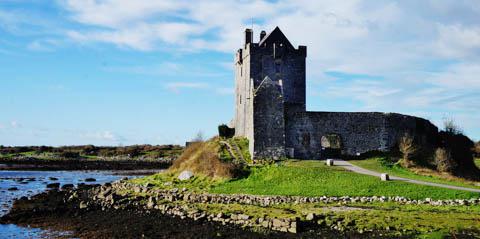
Top Tourist Attractions
Popular foods, more related articles.
We've been gathering travel costs from tens of thousands of actual travelers since 2010, and we use the data to calculate average daily travel costs for destinations around the world. We also systematically analyze the prices of hotels, hostels, and tours from travel providers such as Kayak, HostelWorld, TourRadar, Viator, and others. This combination of expenses from actual travelers, combined with pricing data from major travel companies, gives us a uniqe insight into the overall cost of travel for thousands of cities in countries around the world. You can see more here: How it Works .
Subscribe to our Newsletter
By signing up for our email newsletter, you will receive occasional updates from us with sales and discounts from major travel companies , plus tips and advice from experienced budget travelers!

Search for Travel Costs
Some of the links on this website are sponsored or affiliate links which help to financially support this site. By clicking the link and making a purchase, we may receive a small commission, but this does not affect the price of your purchase.
Travel Cost Data
You are welcome to reference or display our travel costs on your website as long as you provide a link back to this page .
A Simple Link
For a basic link, you can copy and paste the HTML link code or this page's address.
Travel Cost Widget
To display all of the data, copy and paste the code below to display our travel cost widget . Make sure that you keep the link back to our website intact.
- Privacy / Terms of Use
- Activities, Day Trips, Things To Do, and Excursions
TRAVEL GUIDES
Popular cities, explore by region, featured guide.

Japan Travel Guide
Destinations.

A Creative’s Guide to Thailand
Creative resources, photography, videography, art & design.

7 Tips to Spice up Your Photography Using Geometry
GET INVOLVED
EXPERIENCES

#PPImagineAZ Enter to Win a trip to Arizona!
The journal, get inspired, sustainability.

How to Be a More Responsible Traveler in 2021
Budget travel , europe , ireland, how to visit ireland on a budget.

- Published February 11, 2018
Ireland is a dream destination for many — and for good reason. With its rich culture, lush countryside made ever greener by refreshing rainfall, and its friendly and hospitable people who have an unrivaled penchant for storytelling, the Emerald Isle offers one of the most enriching getaways in Europe. But unfortunately, that experience comes at a cost — often a fairly steep one.
Though getting there won’t break the bank, once on the island, many tourists find themselves constantly over budget. If you’re planning a trip to Ireland and don’t want to stretch your wallet, here are some tips on keeping your daily expenditures to a minimum.

Ireland does offer some public transportation options, but if you really want to get around and see the sights, it’s basically a no-brainer to rent (or hire) a car. In the long run this will be your cheapest option, especially if you have multiple passengers — many rental services offer compact cars starting at 10 to 20 euro per day. This might still end up being one of the biggest drains on your daily budget, but the benefits here definitely outweigh the cost. By having your own car, you completely free up your itinerary, allowing yourself the luxury of traversing the country in search of the best sights. Plus, Ireland’s roads criss-cross its beautiful countryside, so even when you’re on the move, you’ll be getting the most out of your time.
Don’t try to do it all
At 32,595 square miles (84,421 square kilometers), Ireland isn’t much bigger than the U.S. state of South Carolina. But there’s certainly no shortage of sights and activities around the island. Whether you’re trekking through the country’s undulating hills, exploring its ancient castles, or stopping in for a pint at one of its lively pubs, you’ll never be at a loss for a way to fill your time.
So when planning your itinerary, you might feel compelled to start filling each day with 10 or more stops — but try to keep it light instead. For one thing, Ireland’s narrow country roads often mosey along at their own pace, so traveling to certain destinations might take longer than you (or Google Maps) would expect. Plus, part of what makes the country so great is its people, so take your time and get to know the locals. Enjoy the atmosphere of wherever you find yourself and soak it all in. Not only will this make for a better experience overall, but with a lighter itinerary, you won’t have to dip into your wallet quite as much.

Stay in guesthouses or Airbnbs
If you’re looking to cut down on accommodation costs, a hostel is probably your cheapest option. However, though slightly more expensive, Airbnbs offer a happy medium, ringing in at much cheaper than a traditional hotel while still offering the traditional hospitality Ireland is famous for. From real Irish castles to old-fashioned guesthouses, Airbnb in Ireland provides a wonderful selection of lodgings operated by locals who will be eager to make you feel right at home. You can also check out other commercial sites such as BandBIreland to search for the perfect housing for you and your travel companions.

Buy a Heritage Card
Similar to a National Parks pass in the U.S., an Ireland Heritage Card is valid for an entire year and provides free admission to any site operated by the Office of Public Works (OPW). This includes major tourist attractions including Killarney National Park, Ross Castle, Dublin Castle, Glenveagh National Park, Ennis Friary, the Iveagh Gardens, and many more. At 40 euro for an adult pass (or 90 euro for a family pass), it’s well worth the purchase if you plan on visiting more than six or seven OPW sites during your trip through Ireland on a budget.
Heritage Cards can be ordered online and shipped right to your house, but it is much simpler to buy them in person at the first site you visit — just make sure to bring cash since most sites won’t accept credit cards. If you’re only planning to stay in the Dublin area throughout your trip, consider a Dublin Pass instead.

Be careful in the pubs
More so than probably any other country in the world, it’s easy to make a case for a big booze budget when visiting Ireland. After all, is it really a trip to the Emerald Isle without a few rowdy nights at the pubs? Keep in mind, though, that pub culture is expensive. A single pint will cost you 4.50 to 5 euro, so after two or three drinks, you’ll be looking at a fairly steep bar tab. Therefore, with the exception of maybe one crazy night on the town, try to keep the drinking to a minimum. One way to do this is to seek out a pub with a great atmosphere, perhaps one with a band playing traditional Irish folk music. Then, limit yourself to a pint or two and simply enjoy the evening.

Utilize grocery stores
You’ll want to sit down at a nice café for a traditional Irish breakfast (and maybe an Irish coffee as well) at least once or twice. But, for the most part, you should be able to stick to a five-euro daily breakfast budget by stopping in at a low-cost supermarket such as ALDI or LIDL. There, you should be able to grab some basic pick-me-ups like juice, cereal, or eggs for the same price as a cup of coffee at a pricey franchise like Starbucks. You can also use the opportunity to stock up on essentials for those long drives through the countryside.

Take advantage of free attractions
Finding activities that are free of cost is not an easy task in Ireland — even the Cliffs of Moher are going to hit you with a small parking fee. But it’s not impossible. If you’d like to explore historical or archaeological areas, you can walk the abandoned halls of many Irish castles for free, or you could check out popular sites such as the Hill of Tara or Glendalough. But, if it’s the spectacularly green countryside that brought you to the Emerald Isle, general admission to the country’s national parks — such as Killarney or Connemara — is free, or you can hike the Slieve League of cliffs in County Donegal. If none of that interests you, just soak up the charm of Ireland’s many quaint and historic cities. Take a moonlight stroll through a medieval town such as Trim or Kilkenny and get lost in the magic as a bell tower chimes the top of the hour.
Interested in traveling to other places on the cheap? Check out our various budget travel guides .
Cover Photo by Abraham Lendinez
Trending Stories
The pursuit of self on south africa’s spectacular otter trail, two hours from: reykjavic, from the arabian sea to your plate: seafood in varkala , explore by region, explore by map.

SIGN UP TO OUR NEWSLETTER
Get your weekly dose of armchair travelling, straight to your inbox.
© Passion Passport 2024
- Search Please fill out this field.
- Newsletters
- Things To Do
How to Visit Dublin on a Budget
An opportunity to visit Dublin should not be missed. Many factors go into building an itinerary , such as the timing of a visit , available accommodations, quality of attractions and climate. Dublin serves as the entry point for many of Ireland's visitors. It offers a major airport and the best selection of accommodations in the country. But a Dublin visit can be expensive. Learn some strategies for budget travel in this capital city and throughout Ireland.
Ireland is largely a rural nation, made up of smaller cities and villages that entice visitors with old-world charm. Dublin rules as the dominant city of the nation, both in terms of population, amenities, and transportation options.
But this Irish metropolis is not without its own charms, and it's easy to spend days exploring its museums, castles, and churches. Budget travelers will want to make careful plans, as hotel stays and meals here can become more costly than expected.
When to Visit
Summers tend to be mild in Ireland, but the trade-off is that crowds peak with the temperatures. So if you'll be visiting June-August, it makes sense to think about reservations for tours and accommodations.
Spring and fall are usually comfortable periods, with cool nights and pleasant daytime temperatures. Winter is the lowest point in the tourism season, but prices for some services will fall with the demand, making a wintertime visit worth considering for travelers on tight budgets. If you opt for a winter visit, be certain the attractions you most wish to visit are open. Some will close down for refurbishing during the slow times.
Where to Stay
Dublin offers an excellent selection of homes to rent for a short stay, as well as hotel and bed and breakfast options, but be certain the location fits with your sightseeing plans. Sometimes, a low-priced B&B is just too far from the best attractions to be practical. Searches of chain hotel options in Dublin will turn up quite a few choices, but prices can be steep. Dublin hostels provide some excellent alternatives, but find out the primary focus of a hostel operation before committing to a stay.
How to Get Around
Without a doubt, Dublin is the transportation hub of Ireland. It is connected by air to other major European cities and those in North America. Ferries transport travelers to the United Kingdom and other parts of Ireland. Dublin also is the hub for the national rail service, known as Irish Rail or Iarnród Éireann .
Bus travel in Dublin is economical but requires some patience and lots of pocket change. LUAS is a tram system operating on two lines (red and green). One-way fares start at about €2, with off-peak fares even lower. There is no rail service to the airport, but Dublin Bus provides cheap (and slow) service between the airport and central city for €7 ($7.85 USD) and €12 for a round-trip ticket ($13.45 USD).
If your time is limited in Dublin, consider the cost savings of taking the bus against the amount of precious time you'll spend staring at the seat in front of you. There are situations where a cab or ride-share service such as Uber could make better budget sense.
See The Book of Kells for Less
TripSavvy / Jamie Ditaranto
At Trinity College , itself a major tourist draw, you'll find the Book of Kells displayed. This is a masterfully illustrated version of the Gospels in the New Testament, but because it's under glass, you'll only see two pages of it. Still, people line up to see what is legitimately a work of art.
Instead of paying just to see the Book of Kells alone, book a larger tour that includes the site. A Trinity College Tour, as part of a larger introductory walking tour of Dublin, will provide a view of the Book of Kells and the impressive college library. Be aware that these tours fill up quickly during the summer months.
The National Gallery Is Free
TripSavvy / Jamie Ditaranto
Heading the list of free attractions in Dublin is the National Gallery , which houses a wide array of art objects and some priceless works from the likes of Rembrandt, Monet, and Goya. There are also free lectures and tours, so check the museum schedule for what's available during your visit. The museum is located on Kildare Street near Merrion Square.
Take Advantage of a Free Walking Tour
Quality guided walking tours can be quite expensive. Many would argue that the investment is justified, even on a budget. After all, you've already put down a tidy sum of money just to get to your destination.
Budget travelers take great interest in tours that offer quality and no fee.
Dublin Free Walking Tour is a company offering five such tours. Groups form at 11 a.m. and 3 p.m. daily at the Spire on O'Connell St. Although there is no charge for the tour itself, the guides work on tips. So, as your budget allows, provide them with a reward if they deliver a good tour.
Consider a Dublin Pass
A Dublin Pass for one-day starts at about $55 USD for adults. A two-day pass is about $78, with three- and five-day passes also available. It offers free admission to more than 30 of the city's top destinations, and free transportation in the form of a hop-on, hop-off bus that also makes runs to the Dublin Airport. The pass qualifies holders for discounts in area stores. You must determine if the shop discounts represent true bargains, and also check the list of covered attractions. If many of the offerings don't appear on your independently constructed itinerary, the pass might not be of much value.
Avoid Temple Bar
You'll see many guidebooks recommend Temple Bar as a "must have" experience while in Dublin. The area was once run-down but has since revived, catering to small bars and restaurants, hostels, art galleries, and entertainment venues. During the day, it is plain and no more boisterous than other parts of the city. Nightlife transforms the place. Watch out for pickpockets in the busy times, because they have this area staked out.
Related Articles
More related articles.

- Northern Ireland
- Hurling & Camogie
- GAA Fixtures & Results
- Personal Finance
- Holidays & Travel
- Food & Drink
- Irish Language
- Entertainment
Charities urge Government to stop aid budget falling to 17-year low
Aid organisations called for development spending to be kept at its current level..

Overseas aid spending could fall to its lowest level since 2007 unless the Government takes action at the Budget in October, a coalition of charities has warned.
Leaders of 122 UK charities including ActionAid, Oxfam and Save the Children have called on the Government to maintain aid spending at its current level and prevent more of the aid budget being diverted to support refugees and asylum seekers in the UK.
The group also called for ministers to set out “fair and transparent fiscal tests” for restoring the aid budget to 0.7% of GDP after it was cut to 0.5% in 2021.
In a statement published on Wednesday, they said: “As leaders of the UK’s development, humanitarian and peacebuilding sector, we are deeply concerned that the spending plans the new Government has inherited from the previous government will slash UK aid programmes to levels not seen since 2007 including under recent Conservative governments.

Bank of England poised to hold interest rates at 5%, economists say

Welsh National Opera strike plans paused after ‘productive discussions’
“If these plans are not urgently revised, the Prime Minister and his Government will be withdrawing vital services and humanitarian support from millions of marginalised people globally and turning up empty-handed to global forums over the coming months.”
Halima Begum, chief executive of Oxfam GB, warned of “devastating and far-reaching” consequences if the Government did not protect the aid budget.
She added: “Failure to do so would undeniably put the UK at risk of further diminished credibility as a dependable agent in addressing urgent global crises.”
Although the aid budget was cut in 2021, the previous government provided £2.5 billion of “top up” funding over the last two financial years to help fund increased spending on refugees in the UK.
But that money ran out in March, which the UK international development group Bond said would mean a £1.8 billion cut to the aid budget this year.
Bond also pointed to a recent trend that has seen more of the aid budget spent within the UK to support refugees and asylum seekers in the first 12 months of their arrival.
International aid rules allow countries to include these costs, but require a “conservative approach” to avoid too much money being diverted from overseas aid.
The UK has previously been criticised for including some costs, such as child benefit or administrative costs, that other countries do not count towards aid spending.
Labour MP Sarah Champion, who chairs the Commons International Development Committee, criticised “reckless spending” on “extortionate hotel bills”, saying it “deprives millions of marginalised people around the world of the vital humanitarian support they need to stay safe in their own countries”.
She added: “In the short term, we need the UK Government to top up the UK aid budget to cover these additional costs, so we don’t see further cuts to programmes.
“The UK aid budget is meant to tackle global poverty and instability, not to cover the costs of a broken asylum system at home.”
Housing asylum seekers and refugees in the UK in 2023 amounted to more than a quarter of the UK’s total aid budget for the second year running, according to figures published in April.
During the election campaign, Sir Keir Starmer expressed opposition to the use of the aid budget to cover asylum costs, but said any change to the system would not be immediate.
Other Labour figures including Foreign Secretary David Lammy and Culture Secretary Lisa Nandy, who was previously shadow development minister, have also criticised the practice.
But departments are already face straitened circumstances as the Chancellor prepares her first Budget, due on October 30, after claiming the previous government had left a significant gap in the public finances.
The Foreign, Commonwealth and Development Office has been contacted for comment.

Suits and watches owned by James Bond actor Sir Roger Moore to go under hammer

Ministers urged not to ‘abandon’ Afghans on anniversary of Taliban takeover
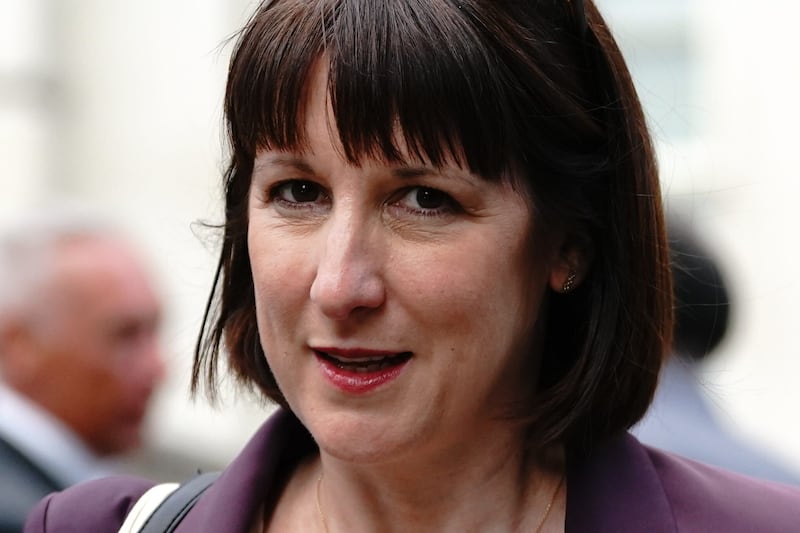
Labour says losses to Treasury bond fund costing £8,900 for every UK household

Britt Ekland says Bond girls have better time on set following #MeToo movement

If someone is tipped to be next James Bond, ‘you know they’ve been rejected’
Money blog: New easyJet route launching; US interest rate cut 'could influence Bank of England decision'
The latest inflation figures have been released - and further dampened hopes of an interest rate cut by the Bank of England. Read this and the rest of today's personal finance and consumer news in the Money blog - and leave a comment in the box below.
Thursday 19 September 2024 06:45, UK
- Bumper interest rate cut in US - and how it could influence Bank of England decision today
- Inflation remains above target at 2.2%
Essential reads
- The UK region where women earn 60p for every £1 a man earns
- Cheap Eats: Top chef picks eats in Scotland - and shares cheap pizza recipe
Tips and advice
- How you could minimise impact of budget tax rises
- What temperature should I set my thermostat?
- Money Problem: 'My holiday cottage was cancelled with one day's notice'
Ask a question or make a comment
For this week's Savings Guide, Savings Champion co-founder Anna Bowes has a round-up of the best LISA accounts to save your money into.
The latest official figures released yesterday morning showed that inflation remained unchanged in August at 2.2% - although this is slightly above the government target of 2%, it was in line with what economists and the markets were expecting.
Core inflation, however, has increased - and this looks specifically at the underlying rate of inflation, so excludes items that are subject to erratic and seasonal price movements or temporary supply shocks and gives a clearer picture of the overall health of the economy.
This means the Bank of England's Monetary Policy Committee is likely to leave the base interest rate at 5% at today's meeting - the decision will be announced at midday. But let's not forget that the trajectory is still downwards.
While bad news for savers, this is good news for those with or looking for a mortgage.
So if you are saving for a deposit on your first home, this makes the LISA an even more important savings account to consider - it's tax-free, offers interest and you can benefit from a 25% government bonus on each deposit.
The LISA is the obvious choice for anyone aged between 18 and 39.
You can deposit up to £4,000 a year and you'll keep your 25% bonus as long as you use the proceeds to buy your first house or as a retirement pot.
There are plenty of rules to watch out for with a LISA, so it's important to know the restrictions as well as the benefits before committing the money.
For example, there is a penalty for withdrawing the cash before the age of 60 for anything other than a first home purchase and the LISA must be held for a minimum of 12 months to avoid the charge.
US interest rates have been slashed for the first time in more than four years - and by more than many expected - amid fears the world's largest economy is flagging, writes our business reporter Sarah Taaffe-Maguire .
Not since the early days of the COVID-19 pandemic has there been a drop in the cost of US borrowing as its central bank, the Federal Reserve, brought interest rates down by 0.5 percentage points on Wednesday evening.
The monetary regulator, known as the Fed, brought the interest rates down to 4.75% to 5%.
Unlike the UK, the US interest rate is a range to guide lenders rather than a single percentage.
Bringing down inflation to 2% is a primary goal of the Fed and it has used interest rates to draw money out of the economy by making borrowing more costly.
Latest figures show the Fed is not far from its target - inflation fell to 2.5% in August, the lowest rate in three years.
But signs of a weakening economy emerged last month as data on job creation led to recession fears.
While stock market reaction is not within the Fed's remit, there were jitters among investors which led to a global stock market sell-off early in August.
Those fears did ease, however, after a stronger performance for job creation eased financial market fears this month.
What about the UK?
It comes as the Bank of England meets on Thursday to make its own interest rate decision.
While the Bank will focus on UK economic data - and this afternoon was expected by markets to hold rates - it could be influenced by US decision-making.
Lower interest rates tend to weaken currencies, so a big cut from the Fed could be good news for the pound.
While being able to buy more dollars is good news for people holidaying in the US and paying for imports like oil, it's bad news for exporters who get less for their goods as a result and have a less competitive product.
Lower exports can slow inflation, meaning the Bank could be more likely to cut.
Last week we reported that 300 John Lewis and Waitrose stores will be closed on Boxing Day, as a way of rewarding hard-working staff (you can read more about that here ) - and now another supermarket giant is following suit.
Aldi will now also be closed on 25 and 26 December to "thank colleagues once again for all their hard work".
Opening hours will vary in the build-up to Christmas, with Aldi operating extended hours.
Spokesman Richard Thornton said: "Customers will have plenty to look forward to in the run-up to Christmas, with exciting Christmas ranges hitting shelves in time for the festive season."
The supermarket also recently announced it plans to open 23 new locations before the end of the year - including in Muswell Hill, London and Mere Green, Birmingham.
Private rents in the UK increased by 8.4% in the past year, according to official figures.
Meanwhile, house prices rose 2.2% on average, the Office for National Statistics figures showed, reaching an average of £290,000, a slowing on previous months. The only area to buck this trend was London.
Aimee North, ONS head of housing market indices, said: "Annual house price growth slowed this month. The North East saw the highest annual growth while London was the only region to show annual price falls.
"Rental prices continue to climb at a near-record rate, although the pace of the increase has slowed slightly. London again saw the fastest growth in rents, with the slowest rise in the South West of England."
By Megan Harwood-Baynes , cost of living specialist
Today is the UN-declared Equal Pay Day, the day in the year when women's earnings internationally pause compared to their male counterparts.
In the UK, because our gender pay gap is below the worldwide average, Equal Pay Day usually falls later in the year - last year it was 22 November.
In the past year, however, the UK appears to have made almost no progress when it comes to closing the gender pay gap, with women earning just 74p for every pound earned by a man, new data has found.
It also reveals the "most financially sexist" region of the UK, using AI to analyse more than a million CVs with known salary information.
North East falls short
The North East was top of the chart for the biggest gender pay gap, using this method of analysis. With a gap of 40%, it means on average a woman earns 60p for every pound a man earns.
Meanwhile, Northern Ireland had the narrowest gender pay gap, at 15.6%.
Hover below to see how your region compares to the rest of the UK...
Andrew Hunter, co-founder of job search engine Adzuna, said: "It is deeply concerning that regions such as the North East, South West and South East England continue to report a gender pay gap exceeding 30%."
What does this mean in the UK?
On last year's UK Equal Pay Day, the Fawcett Society, which campaigns for women's rights, revealed working women take home £574 less each month than men - equating to £6,888 a year.
At the rate the UK is going, the gender pay gap in the country won't close until 2051, it said.
Women aged 40 and older (those born before 1983) also won't see the gender pay gap close before they reach state pension age.
The reason for this pay disparity in the UK is complex but often comes down to the fact that women feel they have no choice but to accept lower-paid, lower-quality work in exchange for flexible working as they deal with household and childcare responsibilities.
Every Wednesday we ask top chefs to pick their favourite Cheap Eats where they live and when they cook at home. This week we speak to David Smith, head chef of Michelin-recommended The Dipping Lugger , in Ullapool, Ross-shire.
Hi David, can you tell us your favourite places around the Highlands where you can get a meal for two for less than £40?
One of the best value food options locally would have to include The Seafood Shack on Argyle Street in Ullapool. They serve fantastic local shellfish, and they do a fantastic haddock wrap.
Xoko Bake House and Coffee Bar in Inverness is another fabulous place to grab something from, including a delicious-filled croissant or a tasty sweet treat.
What is your go-to cheap eat to cook at home when you have a night in?
We love to make pizzas at home. Making them from scratch is definitely worth the effort. Spending a little bit of time and doing things properly delivers something that tastes so much better than if you didn't make the effort.
A little cheat for making pizza at home is to cook the base on the stovetop in a frying pan, then simply cover it with your chosen toppings and place it under the grill to finish it off.
Here's a recipe for tomato sauce to get you started:
- 1 tin chopped tomatos (400g)
- 1 tbsp neutral oil
- 2 garlic cloves (chopped fine)
- 1 tsp sugar
- Pinch of ground black pepper
- Several freshly torn basil leaves
1. Place the oil in a pan over medium heat. When warm, add the garlic and cook until softened (not more than a minute).
2. Pour the tomatoes into the pan.
3. Add all the remaining ingredients, then simmer on low heat for 20 minutes until the sauce has thickened slightly.
4. The sauce can be used straight away or placed in an airtight container and stored in the fridge for up to a week.
How did you get into cheffing?
I got into cooking when I was aged 14 or 15 and I was washing the dishes at a local hotel kitchen.
I saw the chefs working and loved the camaraderie of the whole team. I spent all of my free time watching the chefs, asking questions and finding out as much as I could.
My persistence paid off and within a year the head chef took me on as an apprentice commis chef on the condition I agreed to supplement my learning by studying at Inverness College. From that point on I knew being a chef was what I wanted to do, and I've loved every minute ever since.
We've spoken to lots of top chefs - check out their cheap eats from around the country here...
Train drivers have voted overwhelmingly to accept a multiyear pay deal, ending a two-year dispute at 16 rail companies, their union ASLEF has announced.
More than 96% of members voted in favour of the deal, which is worth 15% over three years.
The ballot result ends what Aslef called the longest train drivers' strike in recent history, during which drivers took 18 days of strike action.
The offer was made by the new Labour government within weeks of the party winning the general election.
Aslef had accused the previous Conservative administration of "sitting on its hands" and refusing to negotiate.
For more on this breaking news story, click here:
By Sarah Taaffe-Maguire , business reporter
It's a busy morning for announcements from companies that play a role in the lives of most Britons.
We've found out the billionaire co-owner of Asda, Mohsin Issa, will step down from his role - this is not long after his brother, Zuber Mohsin, stepped down as co-chief executive having sold his stake in the business to private equity company TDR Capital in June.
Lord Stuart Rose and Rob Hattrell, an executive at TDR, who own a majority share in Asda, will lead the supermarket.
Elsewhere British Steel, which runs steelworks in Scunthorpe, announced losses of £408m for the year ending December 2022, up from a £49.5m loss a year earlier.
On the markets, the benchmark UK index was down 0.57%, while the larger and more UK-focused FTSE 250 index fell 0.35%.
The price of oil ticked up to $72.48, the highest in a week but still lower than the vast majority of nearly the past three years.
The pound has risen again against the dollar and is now above $1.32 as the US central bank known as the Fed plots a chunky interest rate cut tonight. Against the euro, one pound buys €1.1874.
Britain's biggest budget airline is launching a new link to the former capital of the Soviet Republic - the first low-cost carrier to do so.
EasyJet will fly from Luton airport to Tbilisi in Georgia from next April, travel expert Simon Calder has revealed.
The flight is timed at six hours outbound and six hours 40 minutes return. It is estimated to take longer because it needs to take a route that avoids Russian and Ukrainian airspace.
According to airline analyst Sean Moulton, Luton-based easyJet will link its home airport with Tbilisi on Tuesdays and Saturdays.
"It's been a relatively difficult place to get to since it's been four years since the last scheduled flights from the UK to Georgia, this new twice-weekly connection will help to regrow tourism to the region and boost trade links between the UK and Caucasus," he told Mr Calder.
Wizz Air surprised the aviation industry last week by announcing the longest low-cost route from the UK.
From next year, it will connect Gatwick Airport with Jeddah on Saudi Arabia's Red Sea. The distance of almost 3,000 miles will take nearly seven hours.
It appears to be bad news for Halloween lovers, with new data showing chocolate prices have soared by 11%.
This is far above the 1.3% average food inflation, revealed this morning by the Office for National Statistics.
Cocoa prices have repeatedly hit new records over the past year after poor harvests caused by unusual weather in West Africa.
The biggest risers
The cost of Sainsbury's No Added Sugar Milk Chocolate (100g) has almost doubled, rising to an average of £1.84 in the three months to August from 95p in the same period last year, Which? found.
Among branded versions, Prestat Chocolates & Truffles Assortment (210g) increased by 88% at Ocado, from £17 last August to £32 a year later.
Asda's Moo Free Dairy Free & Vegan Original Chocolate Bar (80g) rose from £1.50 to £2.40 - an increase of 60%.
The Cadbury Family Treatsize Multipack (216g) increased from £2.50 to £3.72 at Sainsbury's, while the Cadbury Milk Tray Chocolate Box (360g) rose from £4.01 to £5.74 at Morrisons.
Overall, Which? found food and drink prices were 16.6% higher in the three months to the end of August than the same period two years earlier, showing the challenge many shoppers still face to afford everyday essentials.
Which? Retail editor Ele Clark said: "To ensure you get the best value for money on your Halloween chocolate, shop around and compare the price per gram across different pack sizes, retailers and brands."
Be the first to get Breaking News
Install the Sky News app for free


COMMENTS
Tip 3: Weigh up the different ways of getting around Ireland. Click to enlarge. The cheapest way of getting around Ireland on a budget is to use public transport. Public transport in Ireland, while far from perfect, will save you cash when you compare it to the cost of renting a car in Ireland.
My name is Colette Connolly and welcome to my blog, Ireland on a Budget, which was created in 2018 to showcase all the great things to see and do in Ireland, on a budget of course! Feel free to take a look around the site and follow Ireland on a Budget on social media for all the latest travel tips.
As always with budget travel, there are some tips and tricks that apply to the specific country to help you save money. Ireland is no different, so here are some helpful tips for visiting Ireland on a budget. 1. You can drink tap water in Ireland. Tap water in Ireland is completely safe to drink, so there's no need to pay for bottled water.
Here's a breakdown of some of the costs you might expect for the top attractions in Ireland: Blarney Castle and Stone: €22/$24 (online discount) Guinness storehouse in Dublin: €20/$22 (online only) Cliffs of Moher: free. The Book of Kells and Trinity College Dublin: €25/$27. Giant's Causeway: free.
Recently voted the most affordable city in Ireland, Waterford is a great destination for anyone visiting Ireland on a budget. For starters, the Comeragh Mountains and the driving route many take around them are a great way to get in touch with nature on the Emerald Isle. With a plethora of beaches, walks, and free attractions, like the ...
Car Rental - Renting a car in Ireland is affordable, with prices starting around 25 EUR per day for a multi-day rental. Renting a car is the best way to get around the country too. Renters need to be at least 21 years old. Just keep in mind that most rentals are manuals and that they drive on the left.
Take advantage of the transport fare cap. If you're planning to explore the region surrounding Dublin, you will save money by using public transport, which has instituted a fare cap on travel to some of the region's commuter towns across counties Kildare, Meath and Louth. Standard single fares to/ from Dublin to a host of towns is fixed at ...
This can be a very cost-effective way of visiting Ireland on a budget. Staying 2-3 nights in one place can also reduce your accommodation bill, particularly if you are staying mid-week. Mid-week rates are often lower than weekend ones and staying more than 2 nights can sometimes come with a small discount.
Let's face it. Visiting Ireland on a budget is not easy. The Emerald Isle is one of the most expensive countries we've ever been to, and finding ways to lower your expenses is essential to keep your budget at bay. And the ever-increasing prices of accommodation, gas, tours, and food are making the planning part harder than ever.
Tip #8: Use a Bus to Get to Dublin City Center from the Airport. If you are staying in Dublin, the most economical way to get from the airport to the city center and your hotel is to take a bus. Choose a bus over a taxi from Dublin Airport, one of the 30 ways to save on travel to Ireland. Photo: Dublin Express Facebook.
Please note that the 'Emerald Pass' and the 'Irish Explorer Pass' mentioned in many travel guides are no longer available. 10. Use City Bikes to Get Around Dublin, Cork and Galway. Using the City Bike Scheme is a fun and cheap way to get around the Irish cities of Dublin, Cork and Galway.
Templebar. Simply put, if you're on a budget in Ireland, steer clear of this whole area. As a rule of thumb, in Dublin, if there are cobblestones on the street outside the pub, you're still in Templebar and the beer will be at least €6, but more likely €7 or €8. It is a tourist trap, plain and simple.
However, if your trip to Ireland is unplanned, you will dig deeper into your pockets. For every extra coin you spend on travel expenses alone, save more by finding cheaper solutions once you get to your location. Bring a Friend or Five. Having travel companions is always cheaper, unlike taking solo trips.
Step 7: Get Ready For Your Departure to Ireland. As a longtime member of the European Union, Ireland uses the Euro currency. Northern Ireland uses the British pound Sterling. Bringing the right credit cards should be included in your Ireland vacation planning.
Our Ireland expenses are divided into 5 categories: Hotel in Dublin: 5% of our costs. Campervan: 64% of our costs. Transport by bus: 1% of our costs. Food & drinks: 34% of our costs. Activities: 4% of our costs. 1. Budget hotel in Dublin. We stayed at Hotel St. George and paid €55 for a night, not including breakfast.
Self-catering and "on the run" is the motto, spiced up with a keen eye for a bargain. Hit the nearest Starbucks for a coffee and a croissant and you are at least € 5 out of pocket. The same money will buy you more than a day's rations at any Aldi, Lidl, or SuperValu (in Northern Ireland add Asda). And a fairly good spread at any deli counter.
One of the best things to do in Dublin on a budget is go to a comedy show and recommend Chaplins Comedy Club. For €10 Euro (£9 GBP / $12.50 USD) you get a two hour show. It's an excellent price and the compere is seriously hilarious. A quick google search will bring up a tonne of alternative comedy clubs though.
Ireland, also known as the Emerald Isle, is an incredibly beautiful country with a fascinating history, friendly local people, and great traditions. For those looking for a budget destination, Ireland is not the first place that comes to mind. However, it is possible to travel Ireland on a budget.
4-5 Total trip cost for a rental car and petrol/tolls/parking includes only eight days, assuming you will spend two days (arrival day, plus one full day) in Dublin. 6 Food and drink can vary widely. If you plan to eat out most days anticipate approximately €15 for lunch, €25 for dinner, €10 for snacks, and €5 per pint.
Accommodation Budget in Ireland Average Daily Costs. Calculated from travelers like you. The average price paid for one person for accommodation in Ireland is $74 (€67). For two people sharing a typical double-occupancy hotel room, the average price paid for a hotel room in Ireland is $148 (€134).
This includes major tourist attractions including Killarney National Park, Ross Castle, Dublin Castle, Glenveagh National Park, Ennis Friary, the Iveagh Gardens, and many more. At 40 euro for an adult pass (or 90 euro for a family pass), it's well worth the purchase if you plan on visiting more than six or seven OPW sites during your trip ...
It is easy to spend € 30 or more for an evening meal in Ireland's restaurants. If you are traveling on a budget, simply avoid evening meals - most restaurants offer cheaper lunchtime menus, some also have an "early bird special" in the late afternoon. Also, consider "carveries" in pubs or "family restaurants" (often glorified takeaways with a ...
LUAS is a tram system operating on two lines (red and green). One-way fares start at about €2, with off-peak fares even lower. There is no rail service to the airport, but Dublin Bus provides cheap (and slow) service between the airport and central city for €7 ($7.85 USD) and €12 for a round-trip ticket ($13.45 USD).
Although the aid budget was cut in 2021, the previous government provided £2.5 billion of "top up" funding over the last two financial years to help fund increased spending on refugees in the UK.
The Government is scrambling for details of how Ireland will look with up to a metre of rising sea levels ... Health Minister in push to make contraceptives free for 16-year-olds as part of Budget ...
Private rents in the UK increased by 8.4% in the past year, according to official figures. Meanwhile, house prices rose 2.2% on average, the Office for National Statistics figures showed, reaching ...